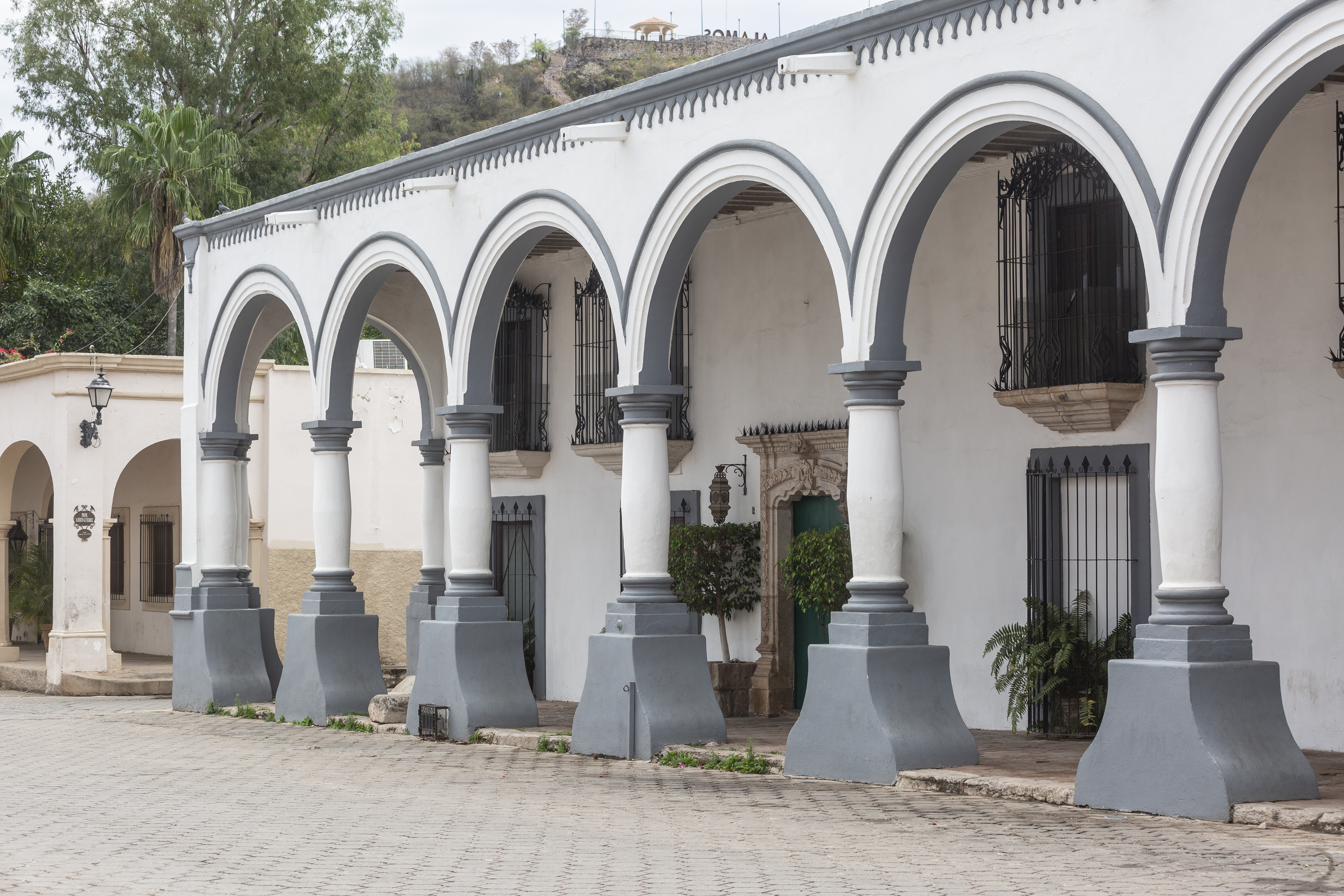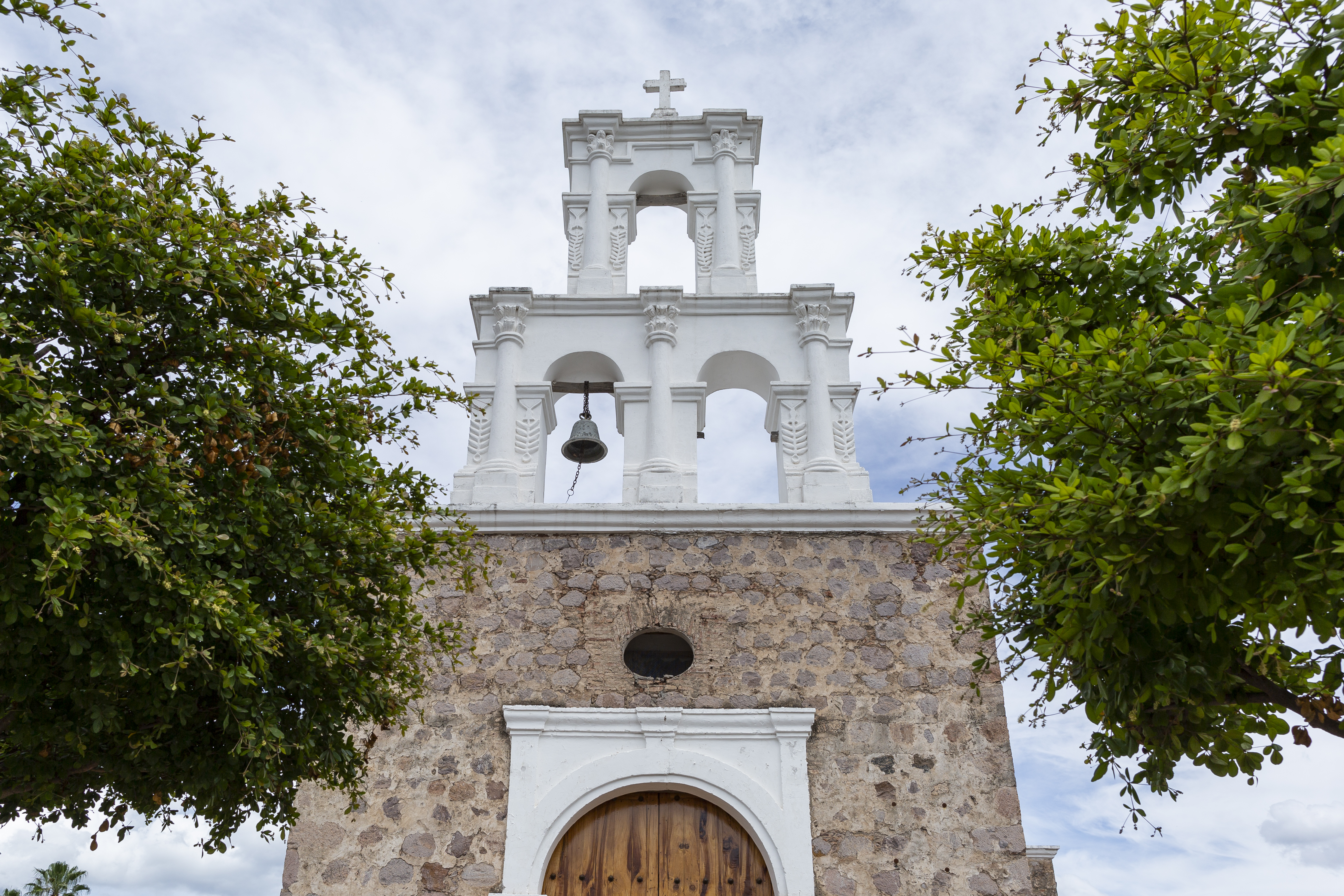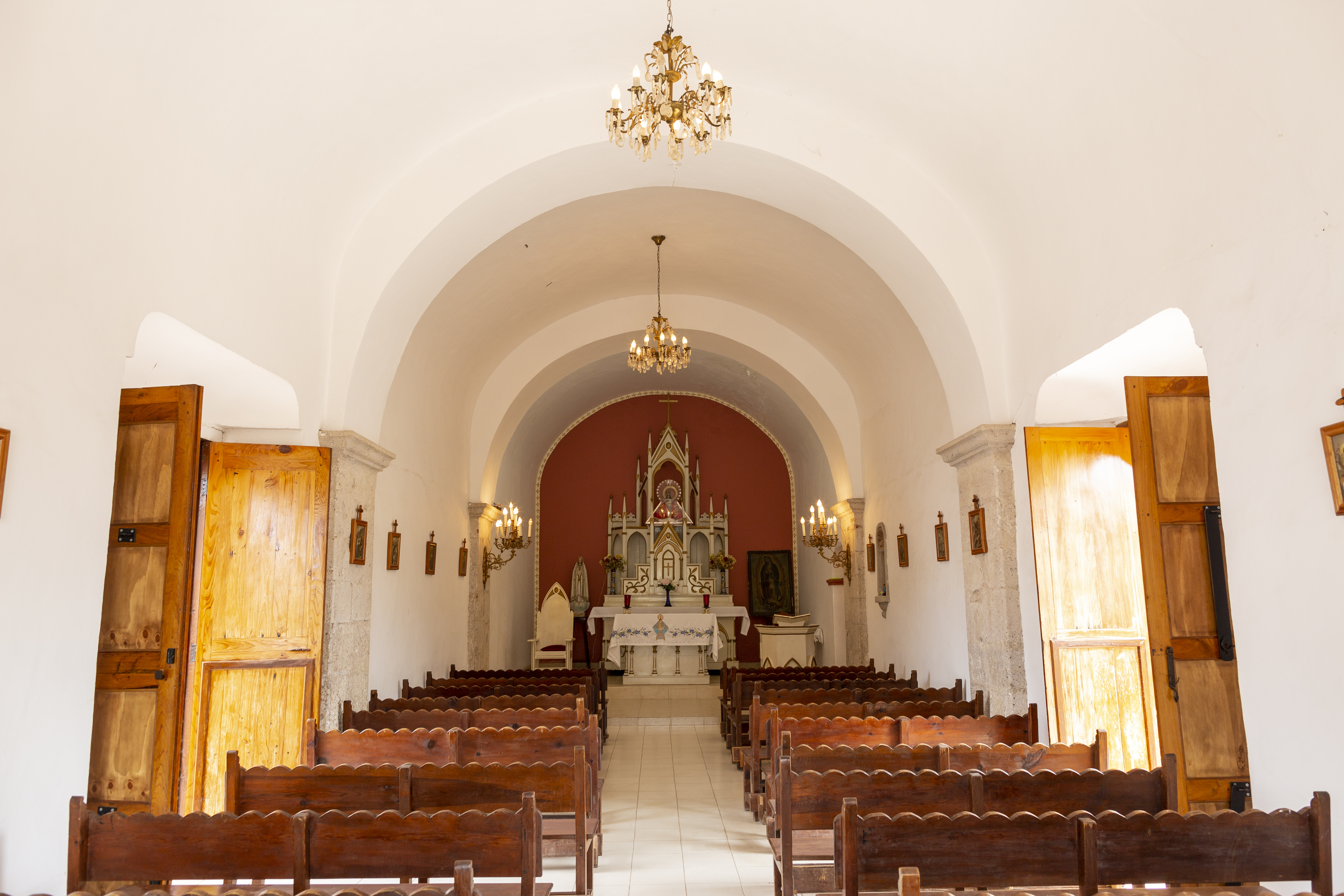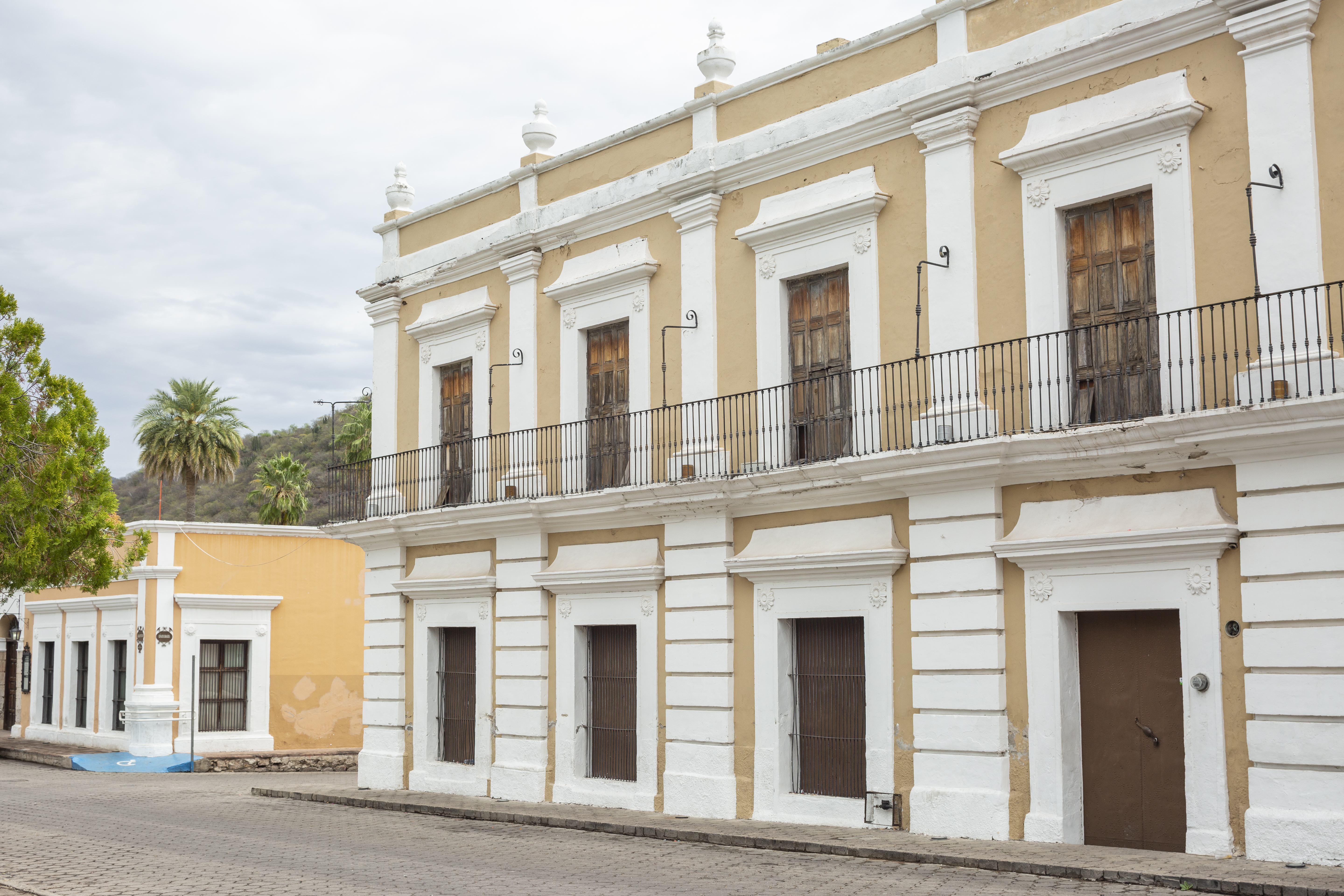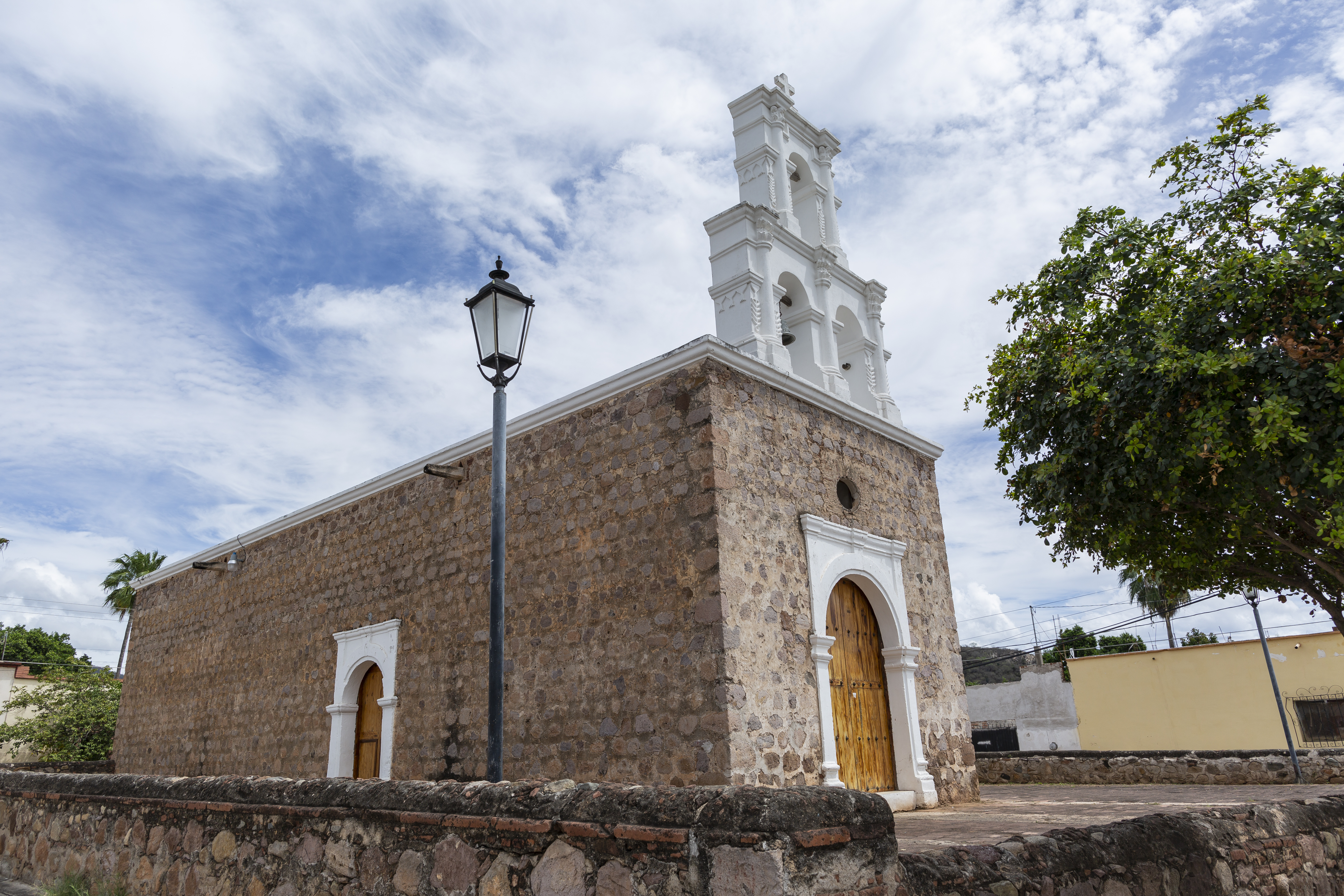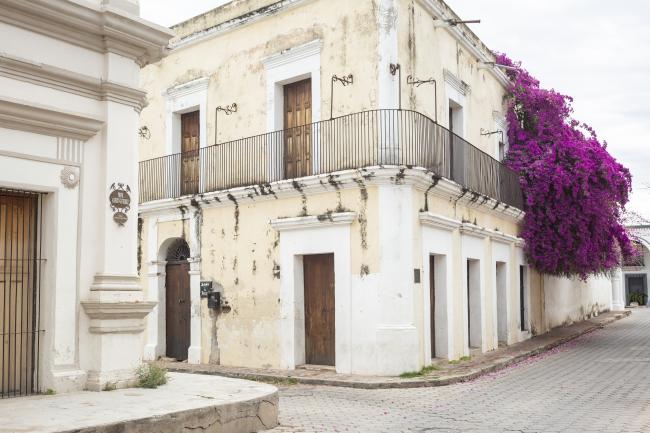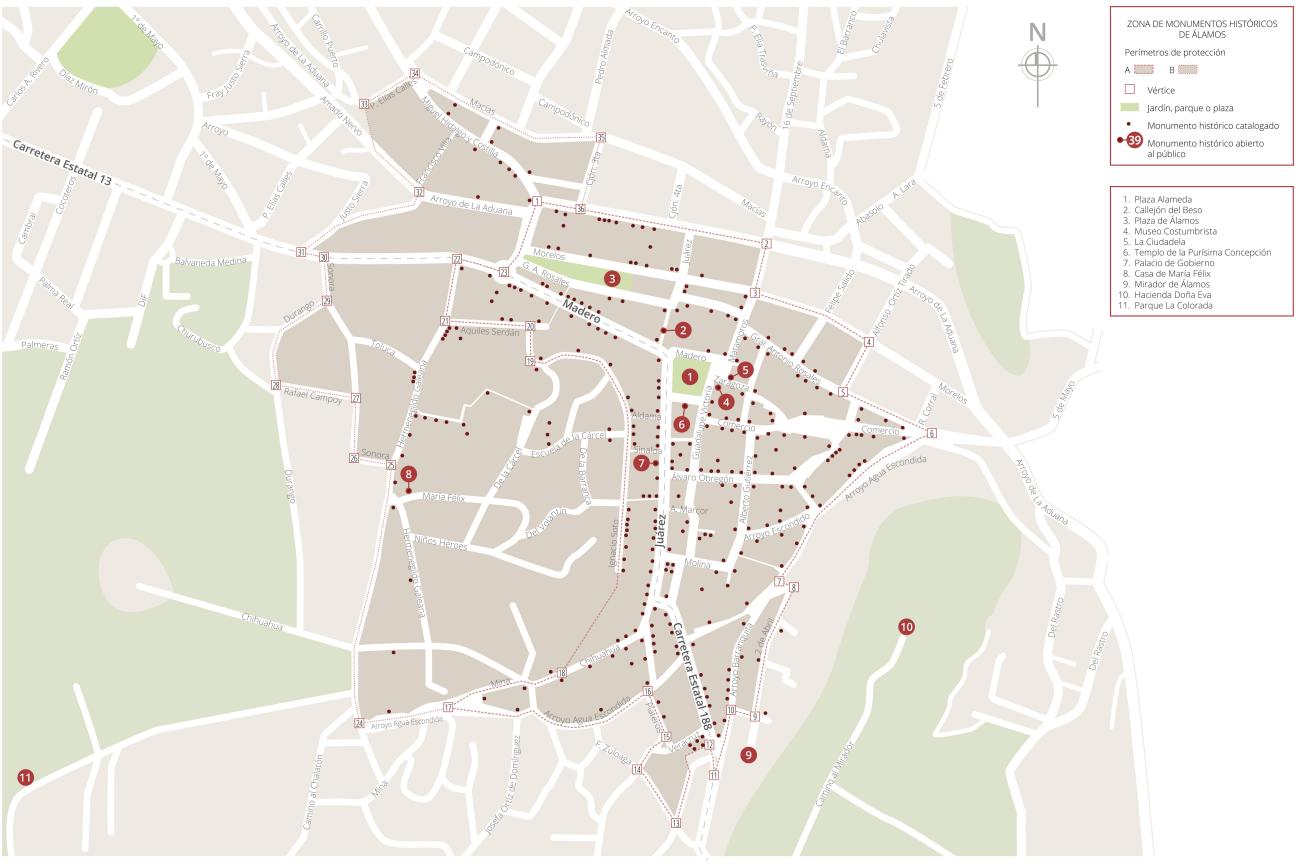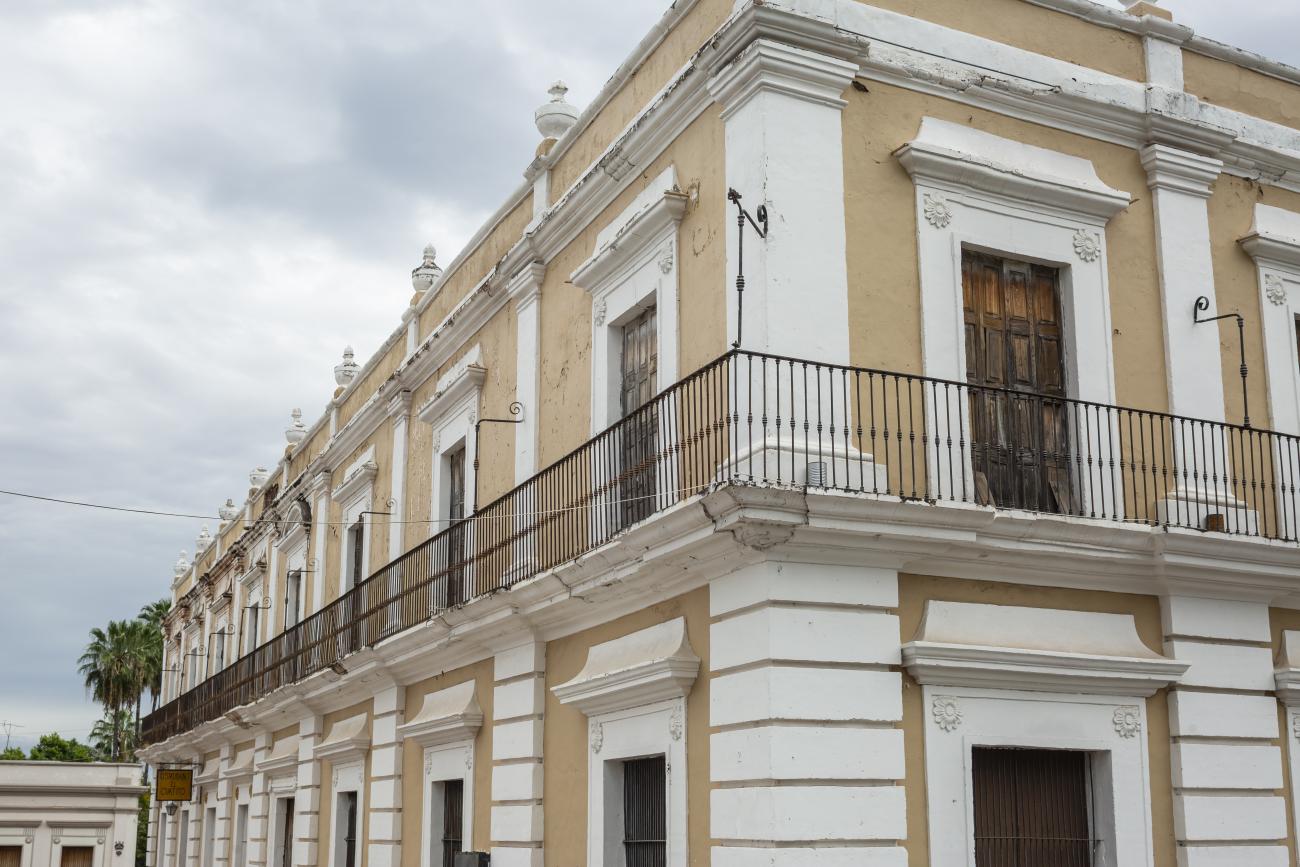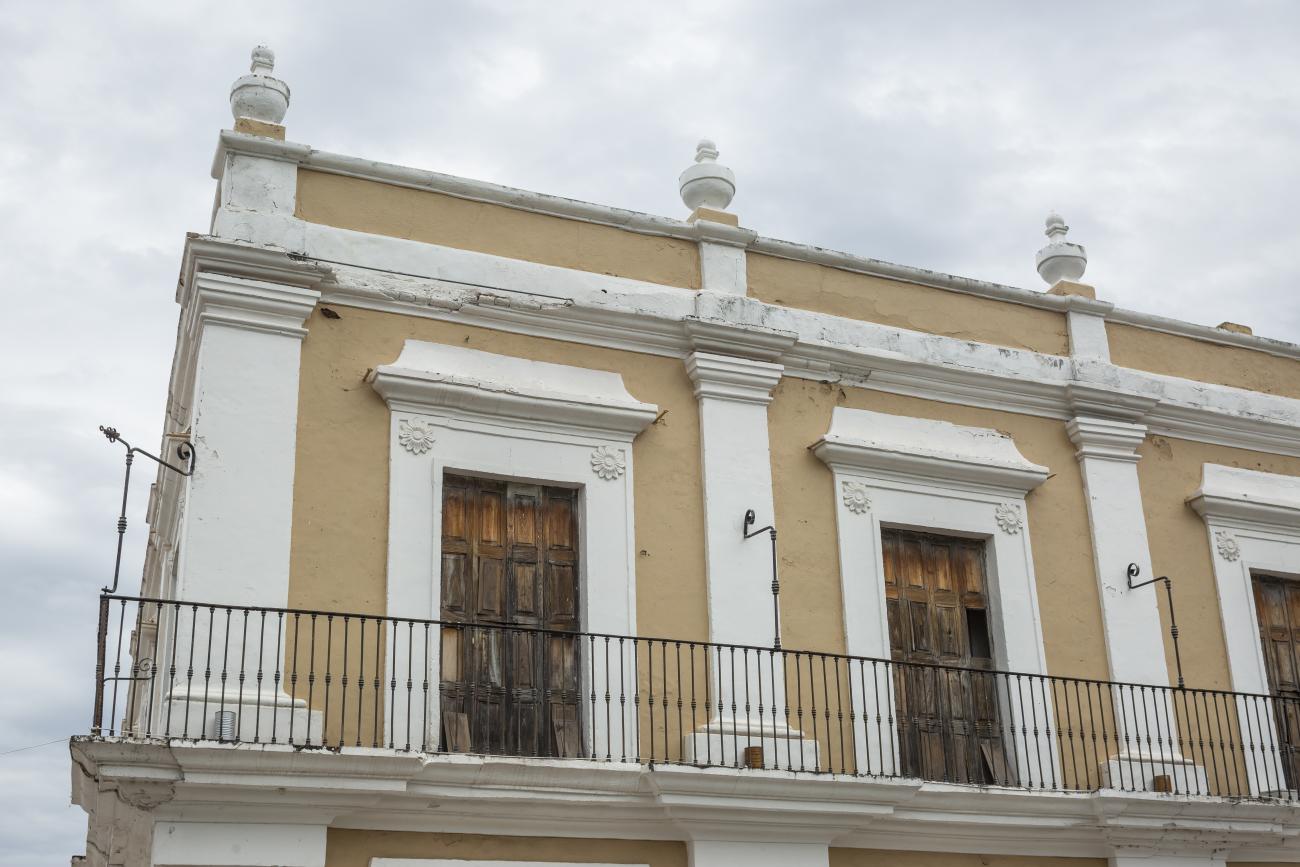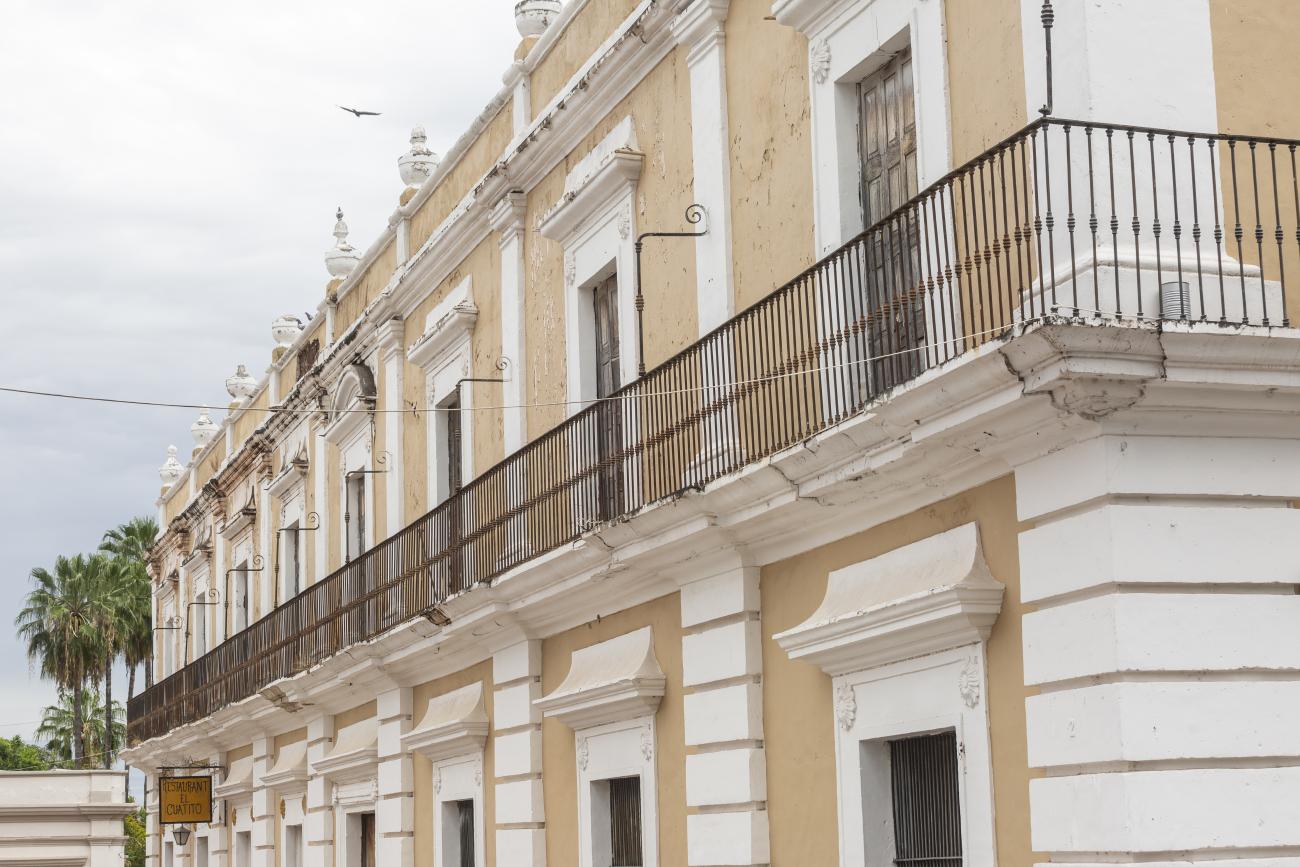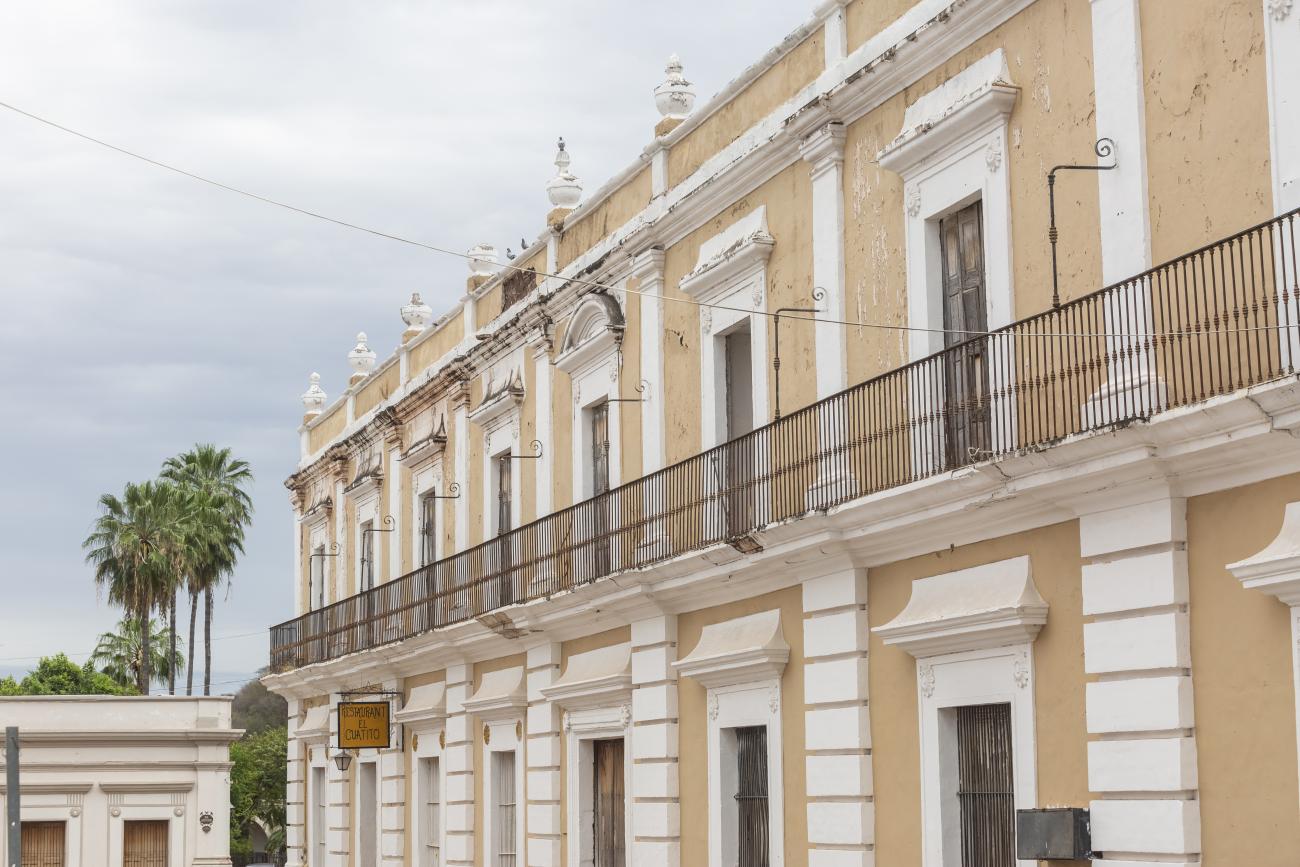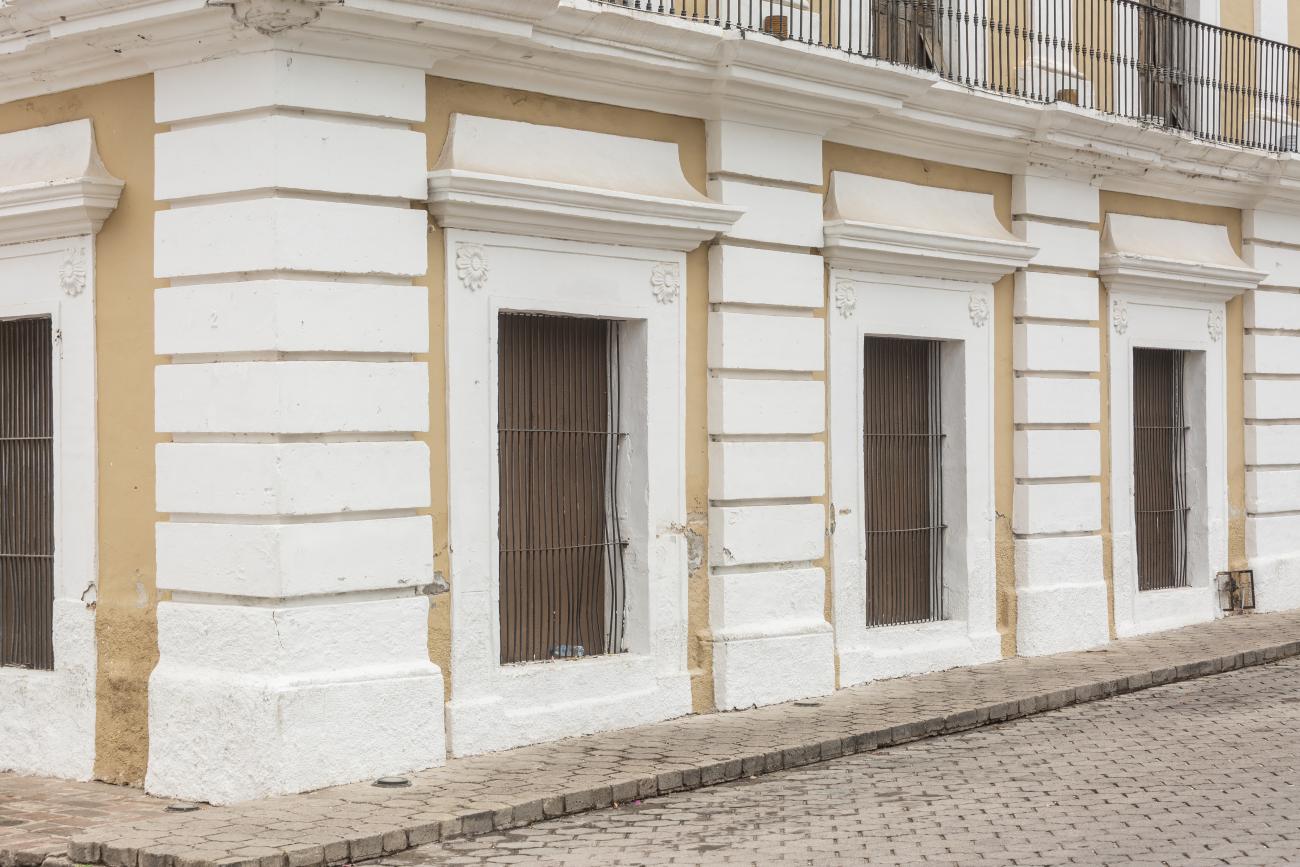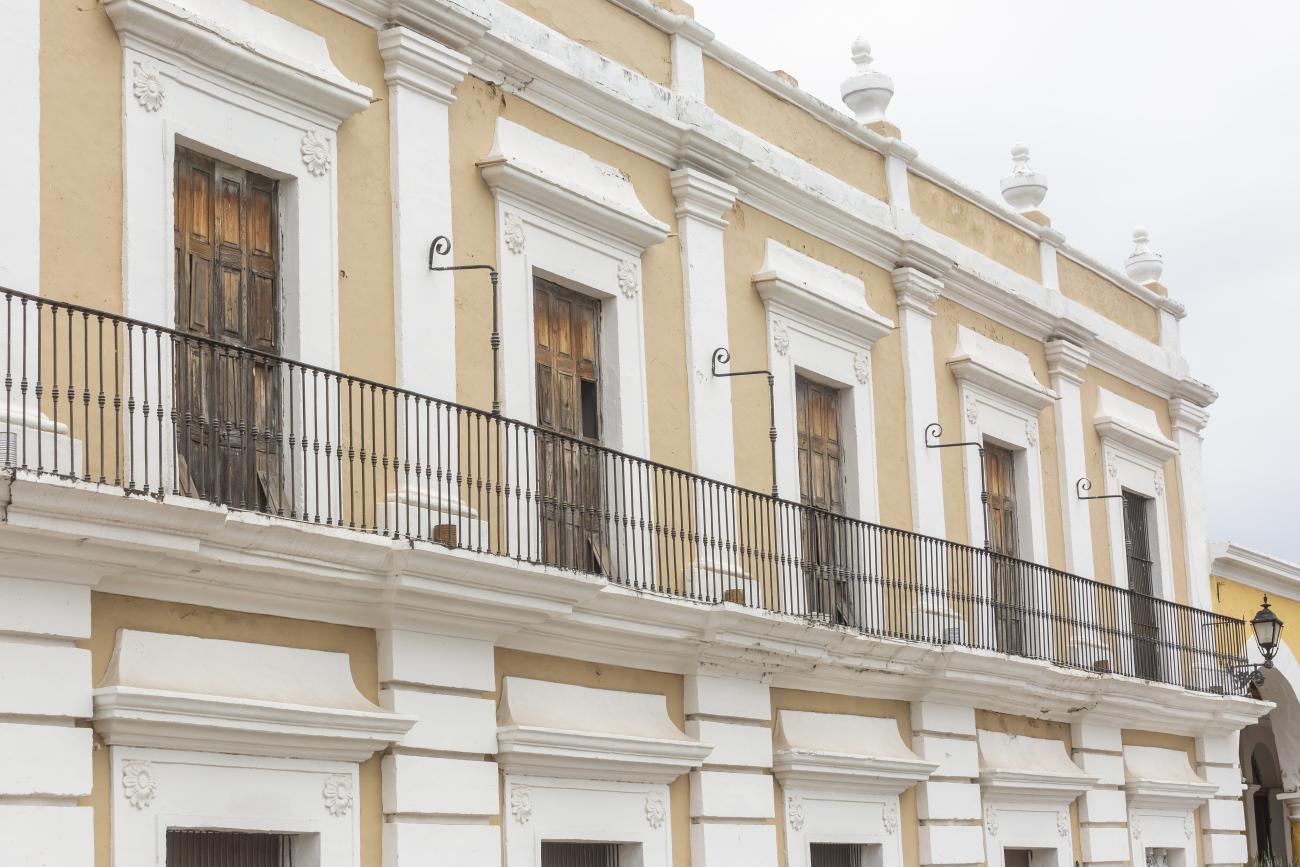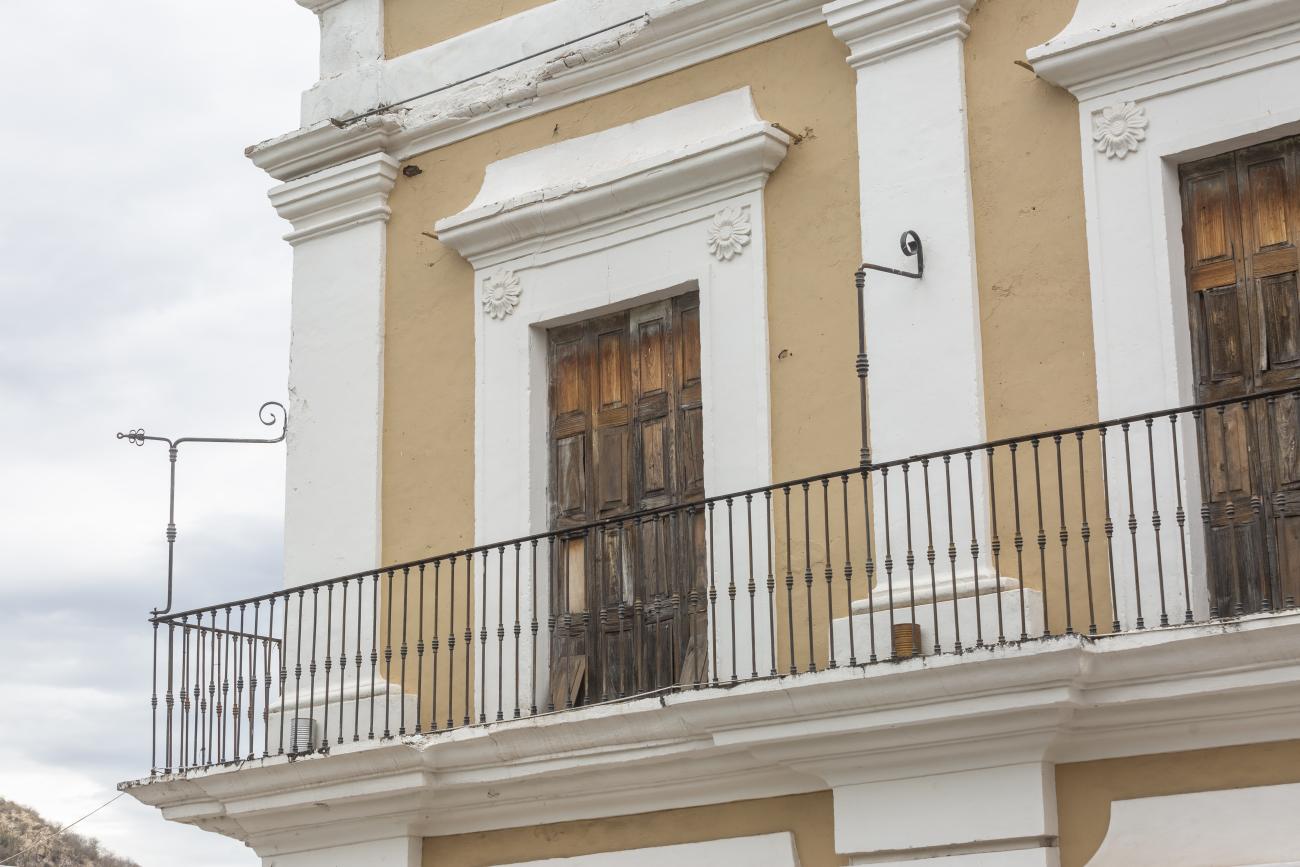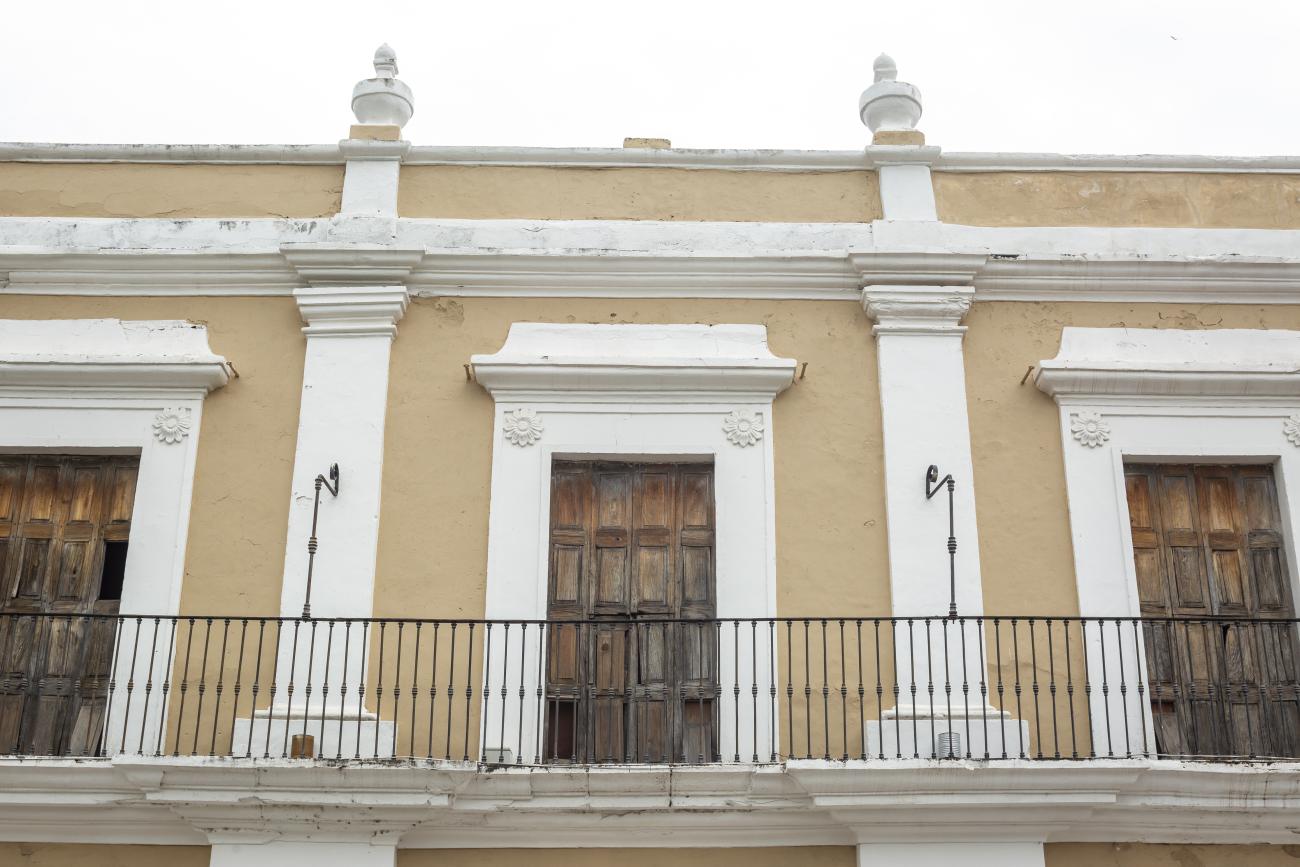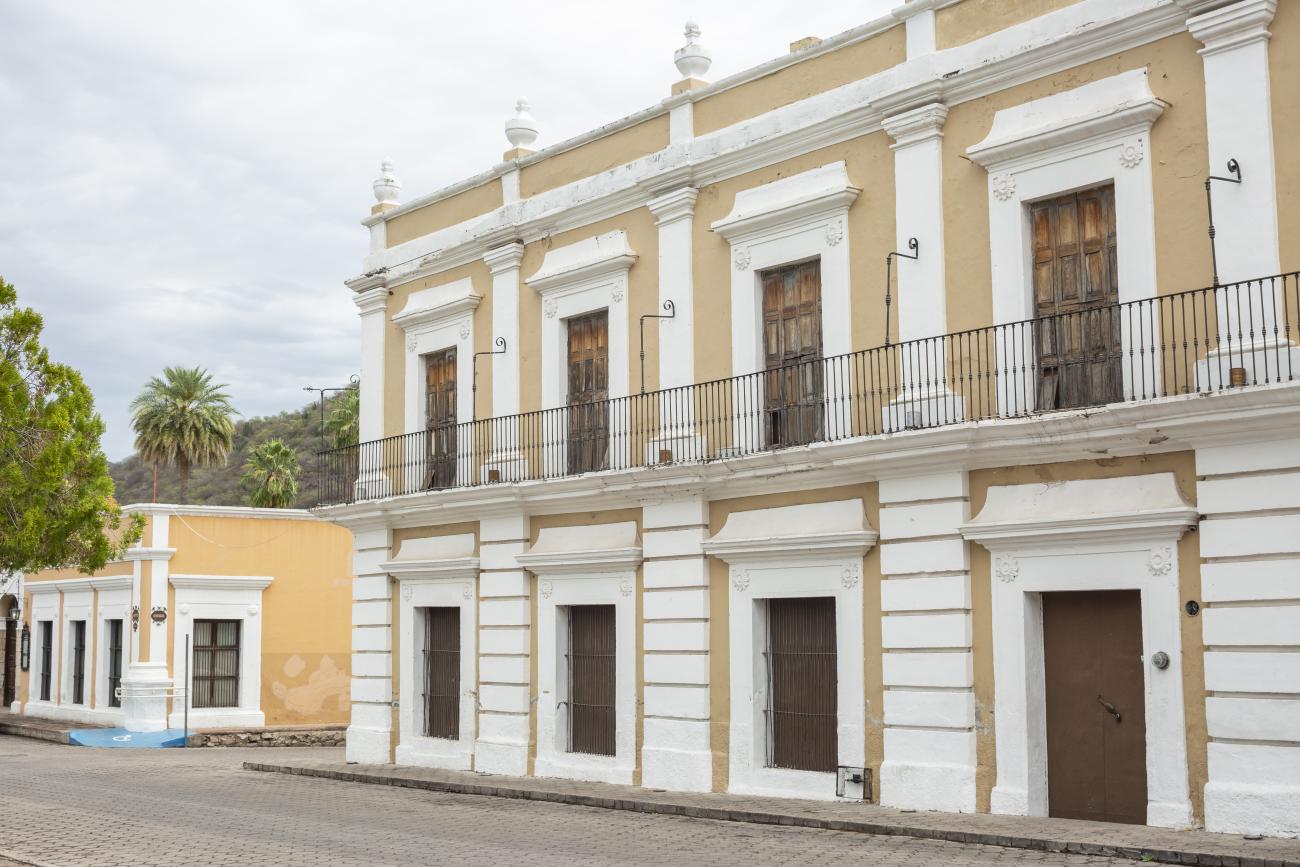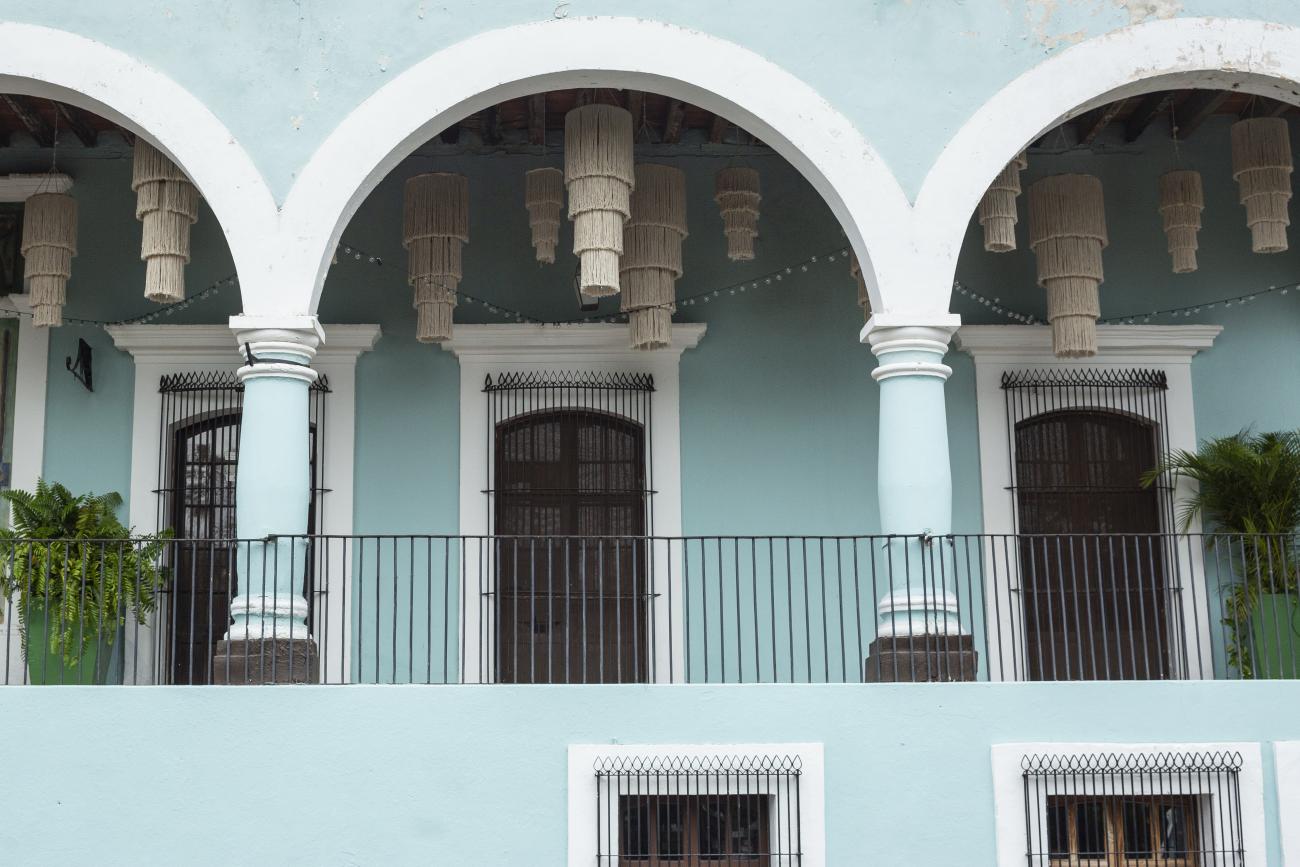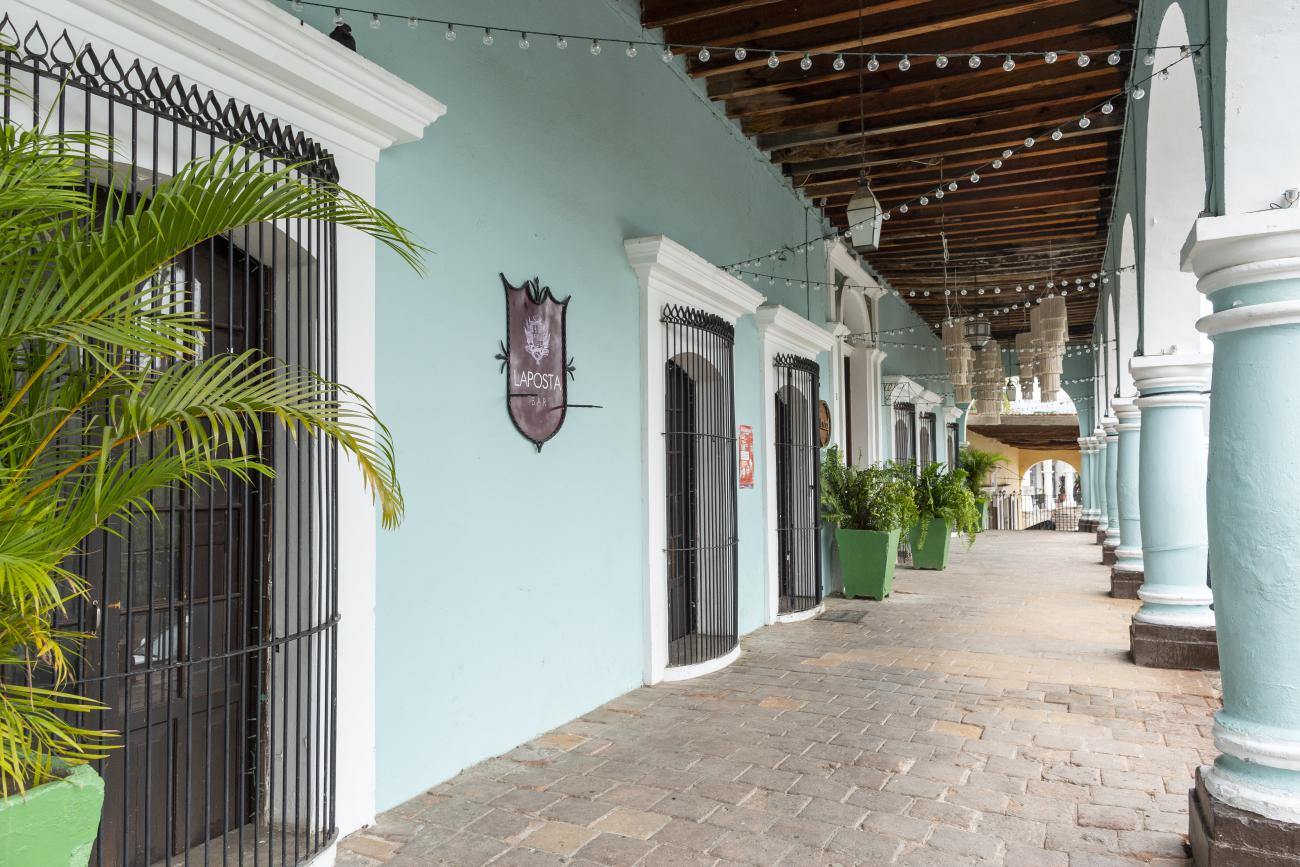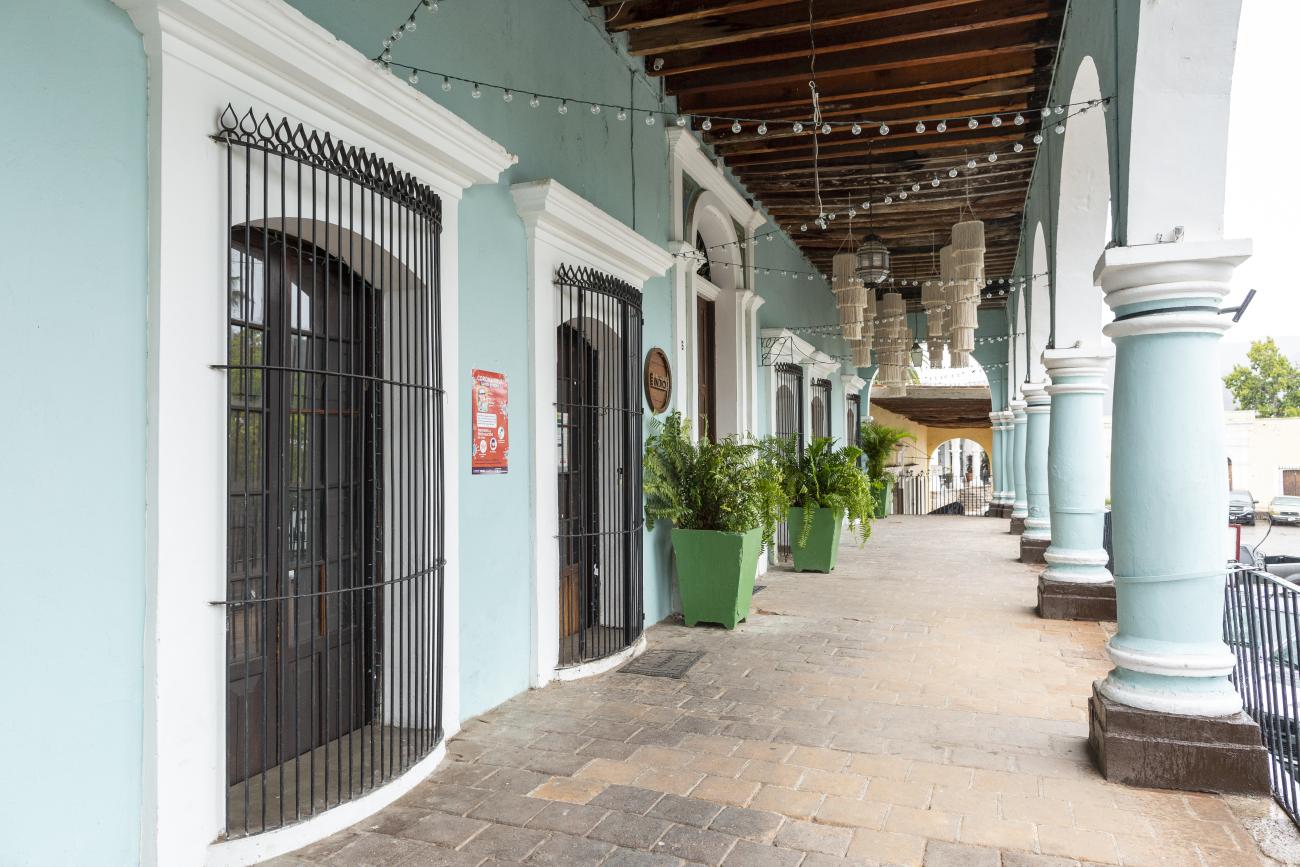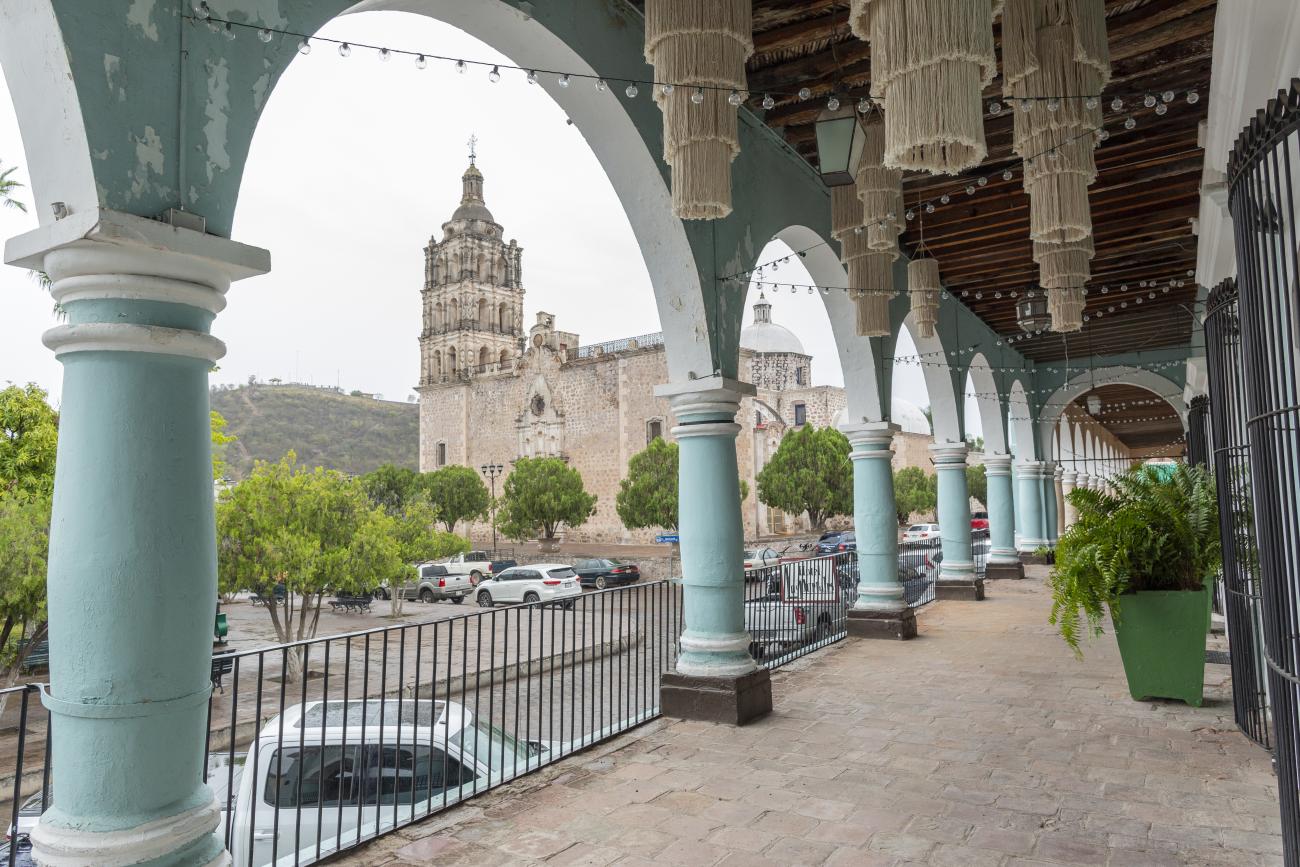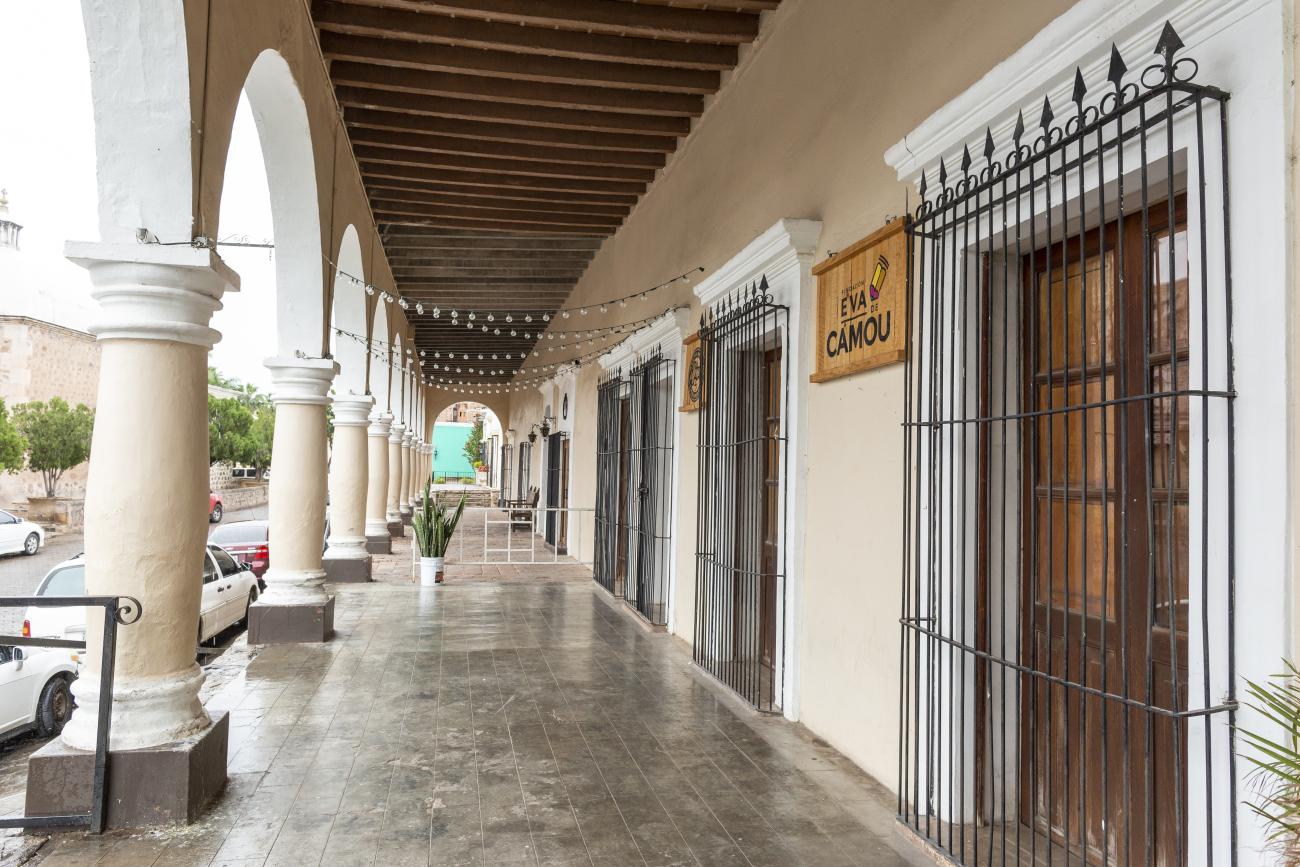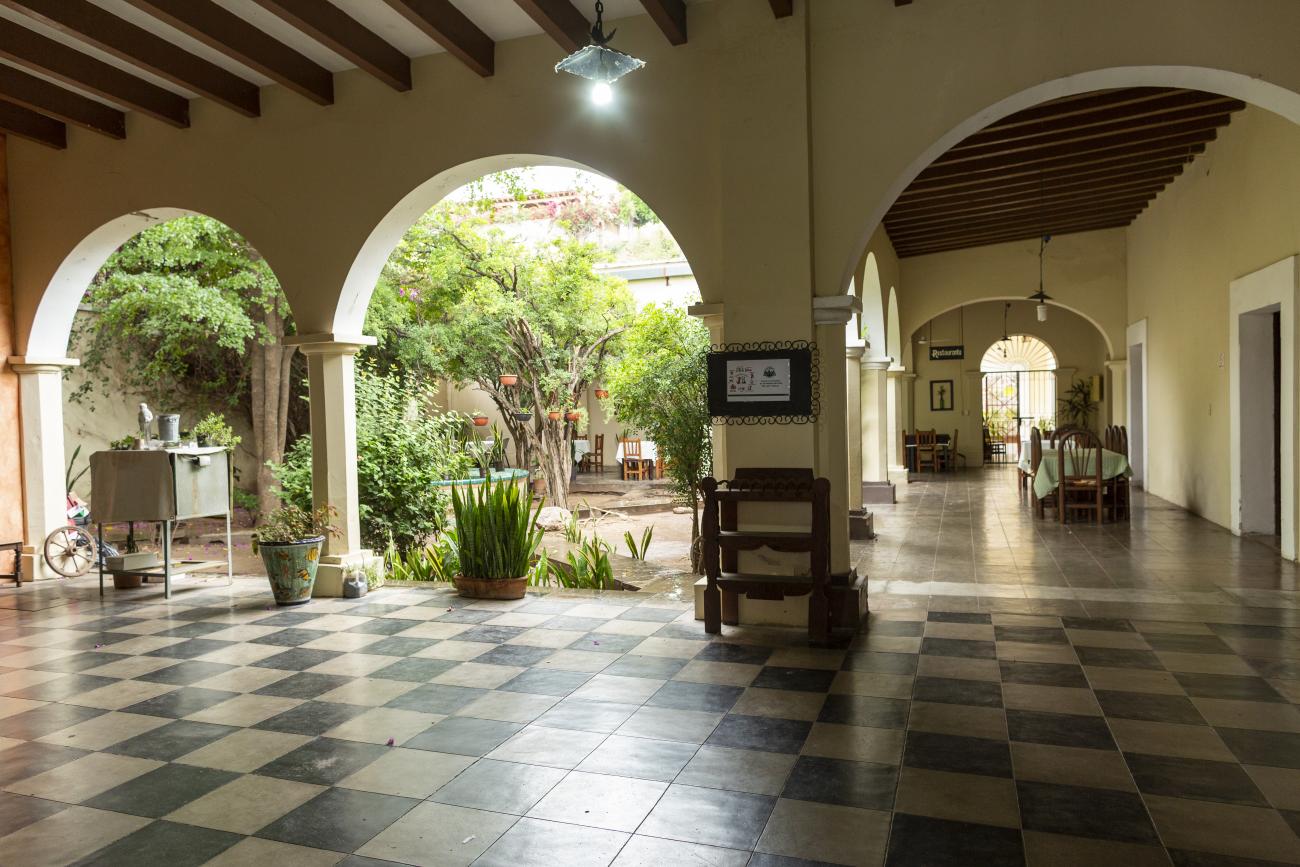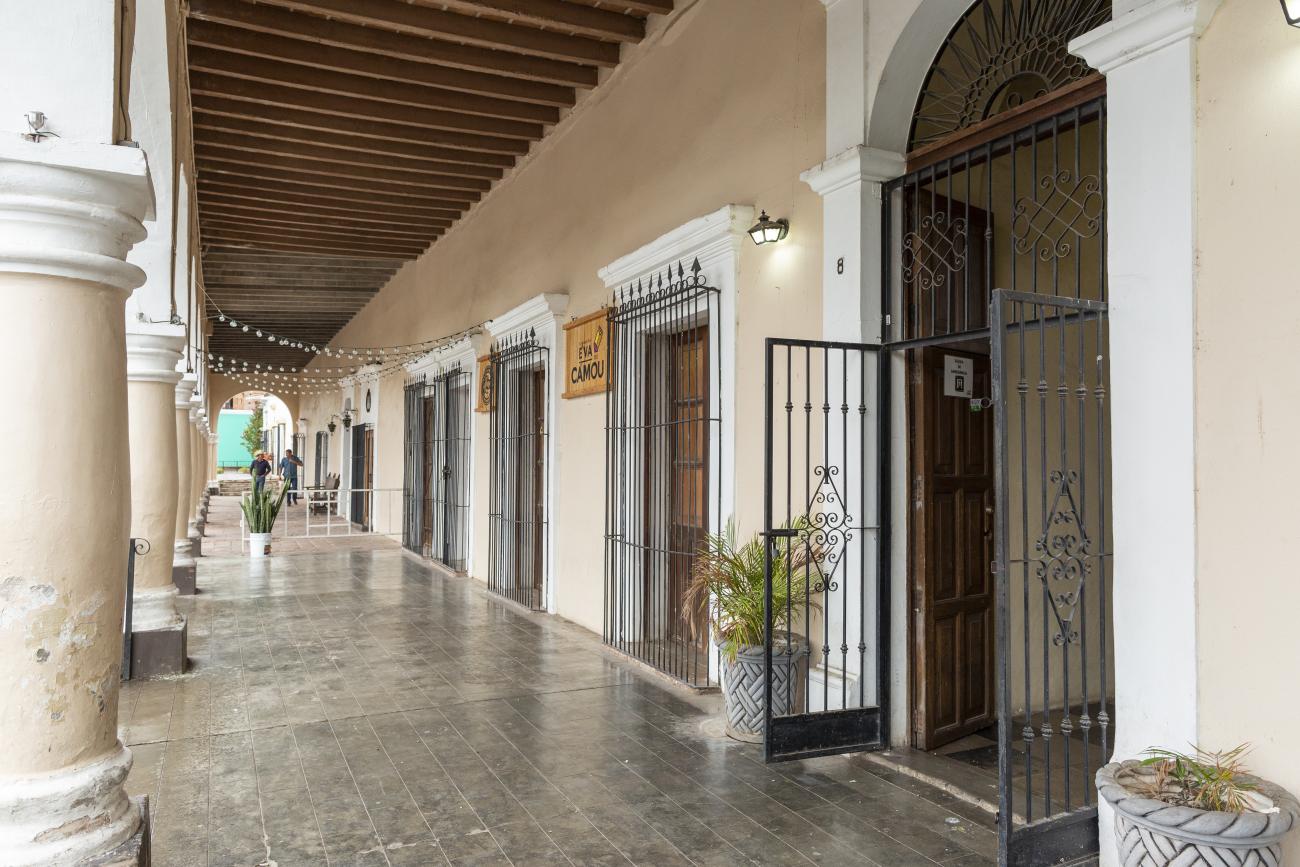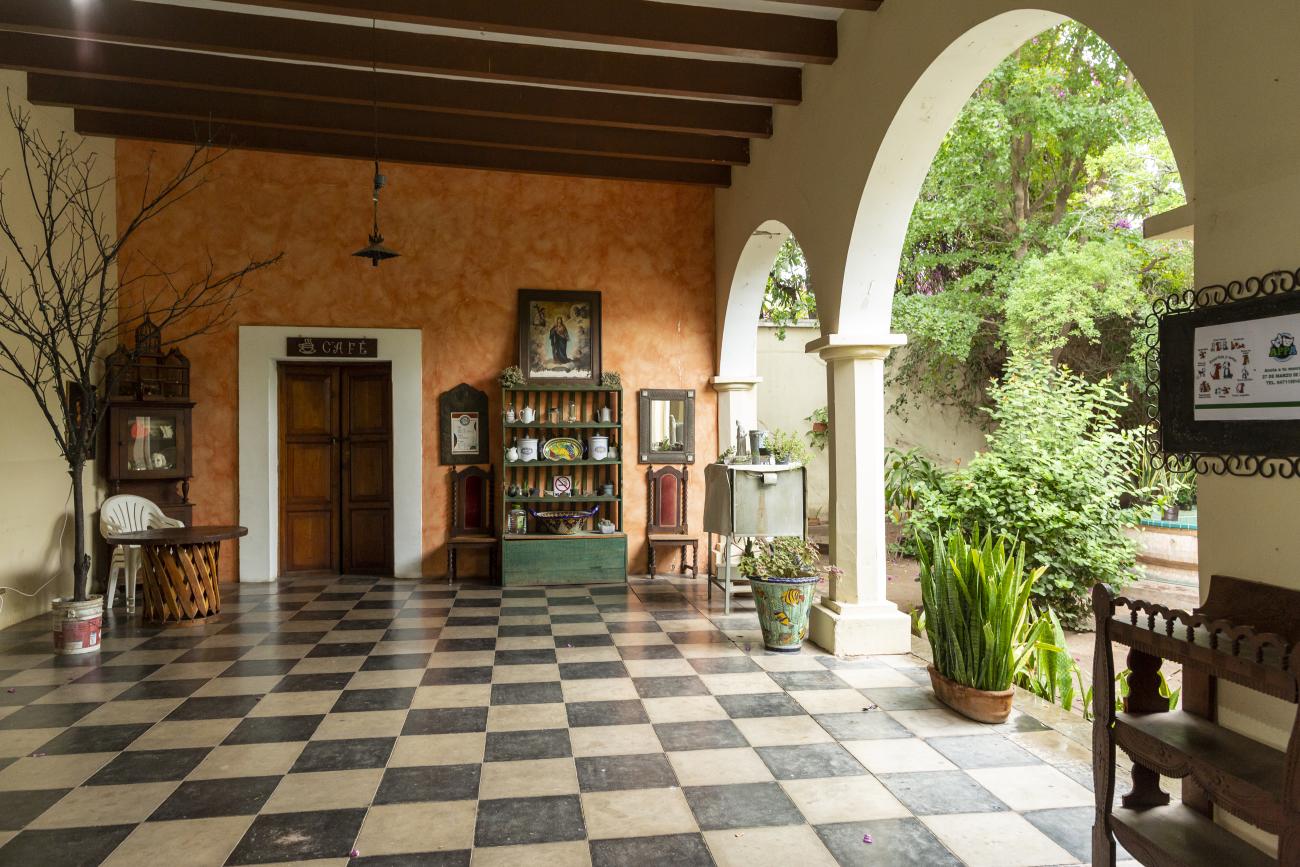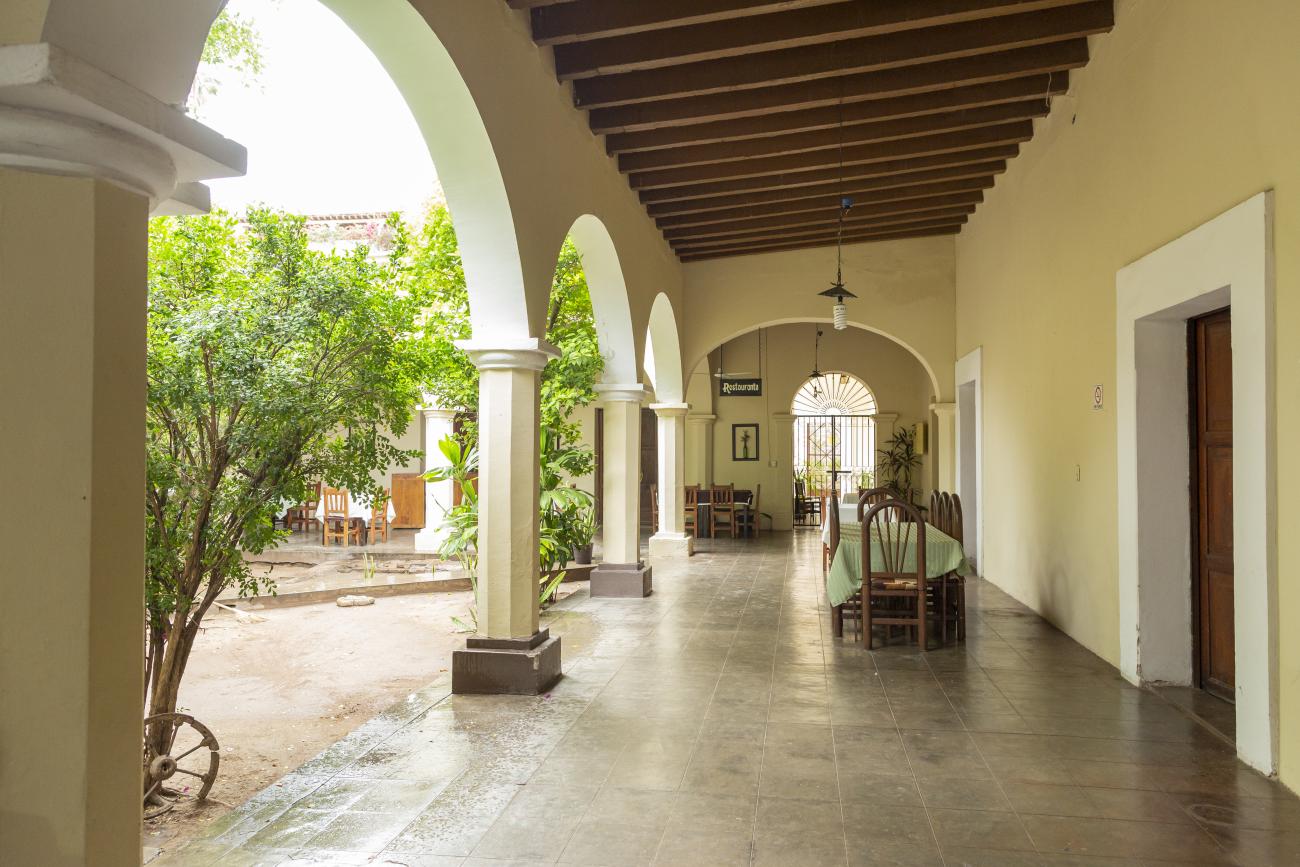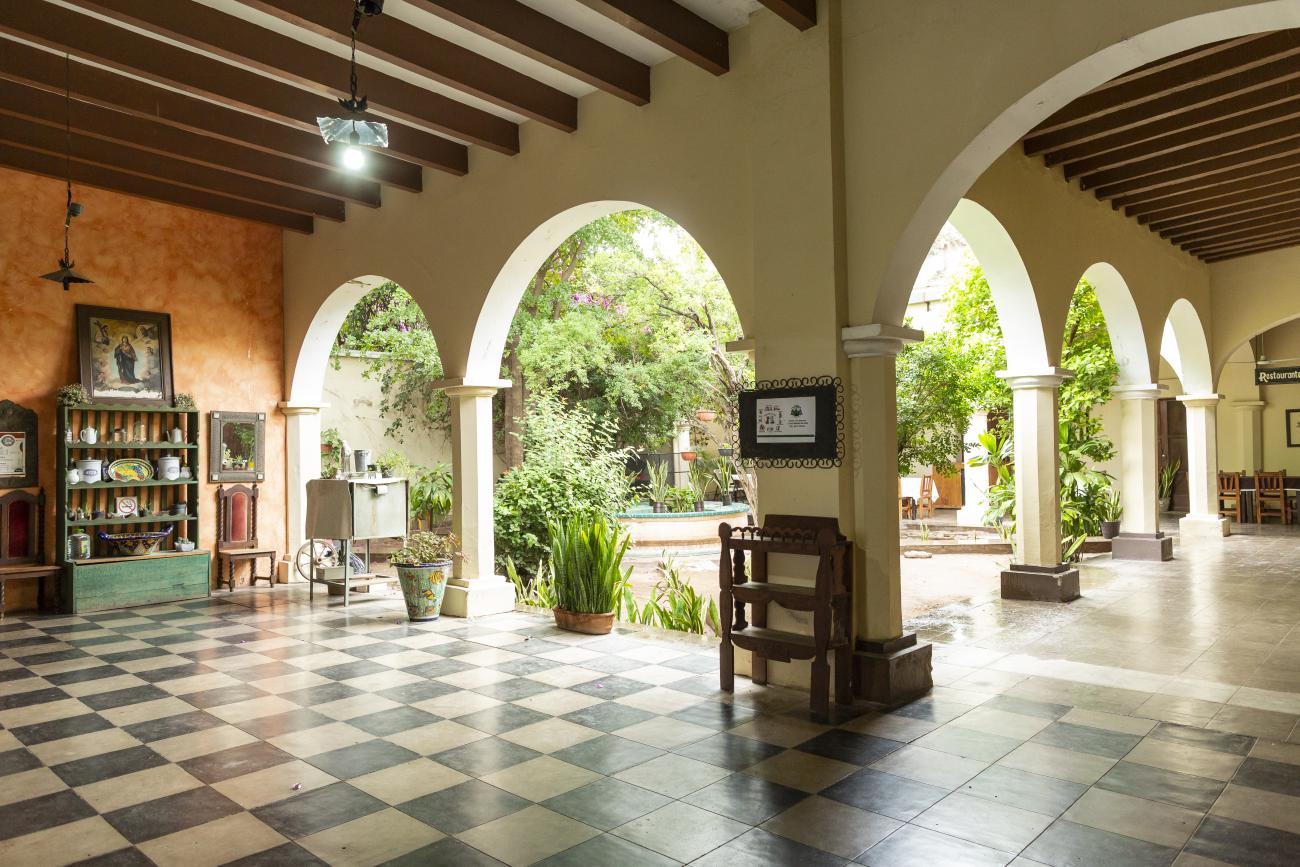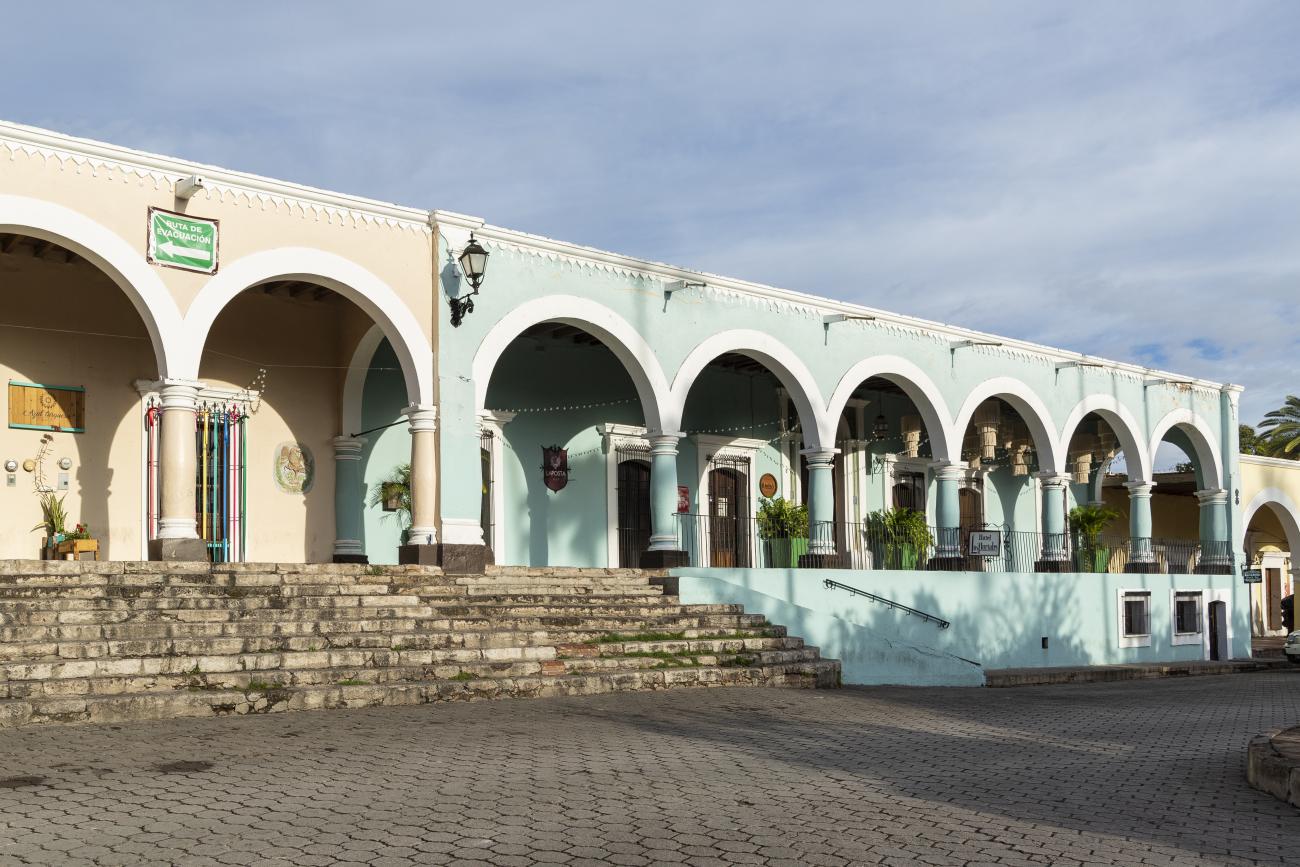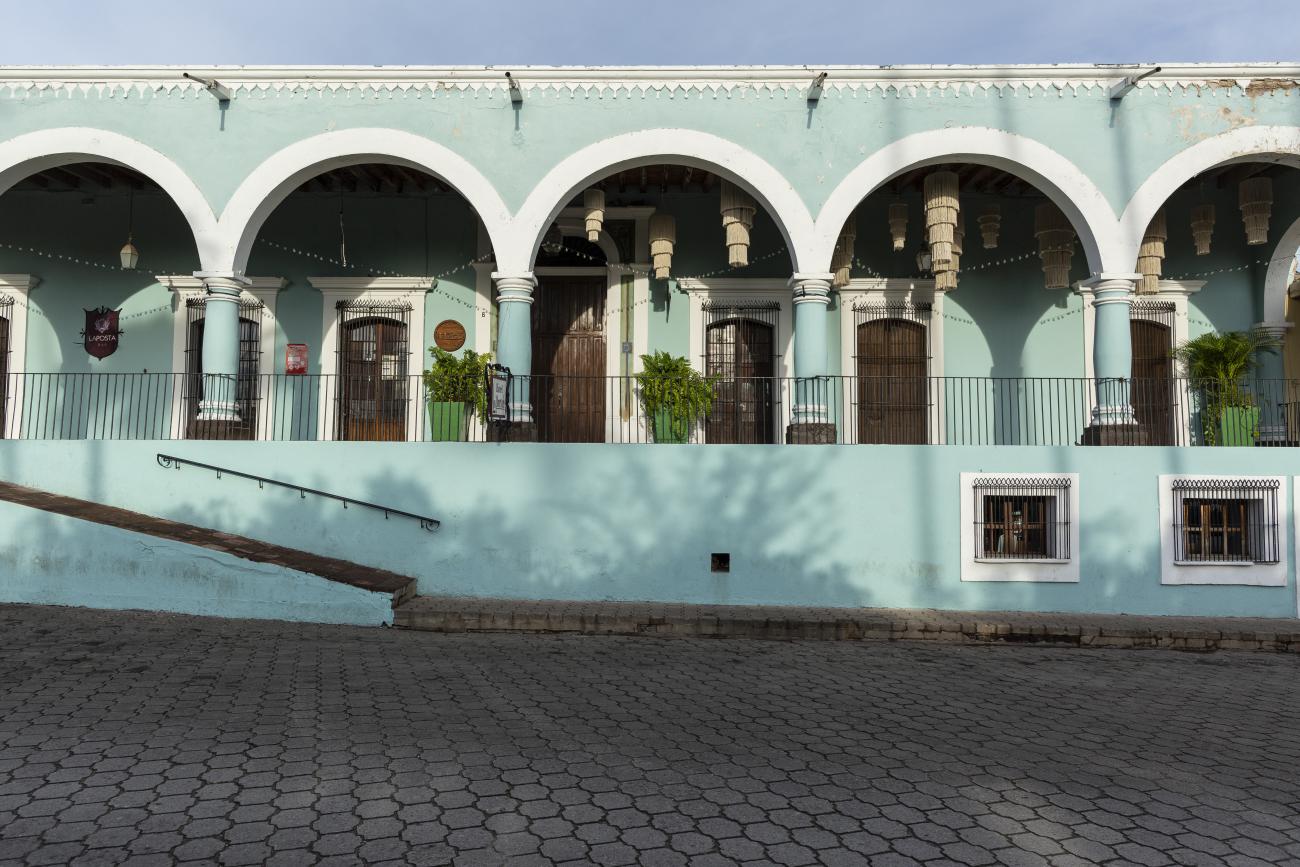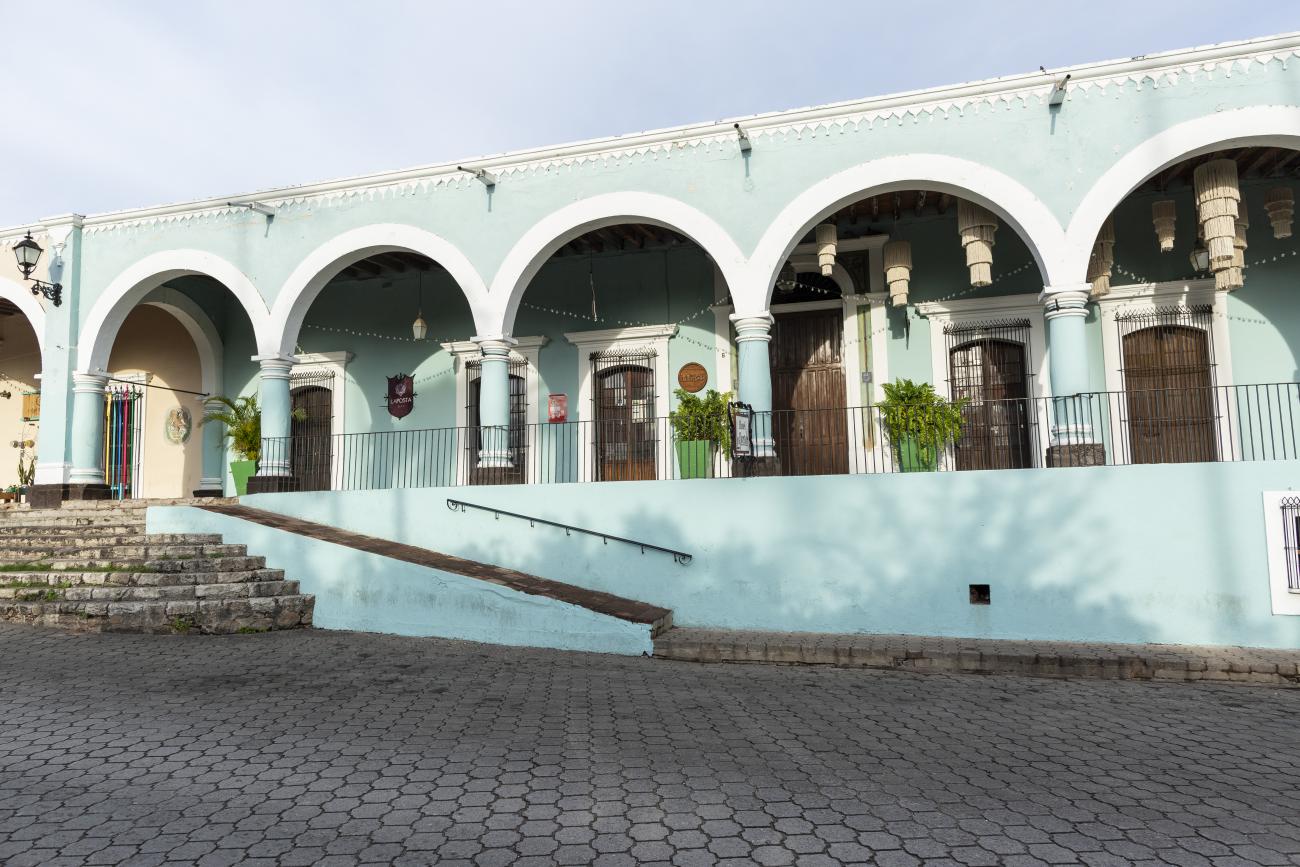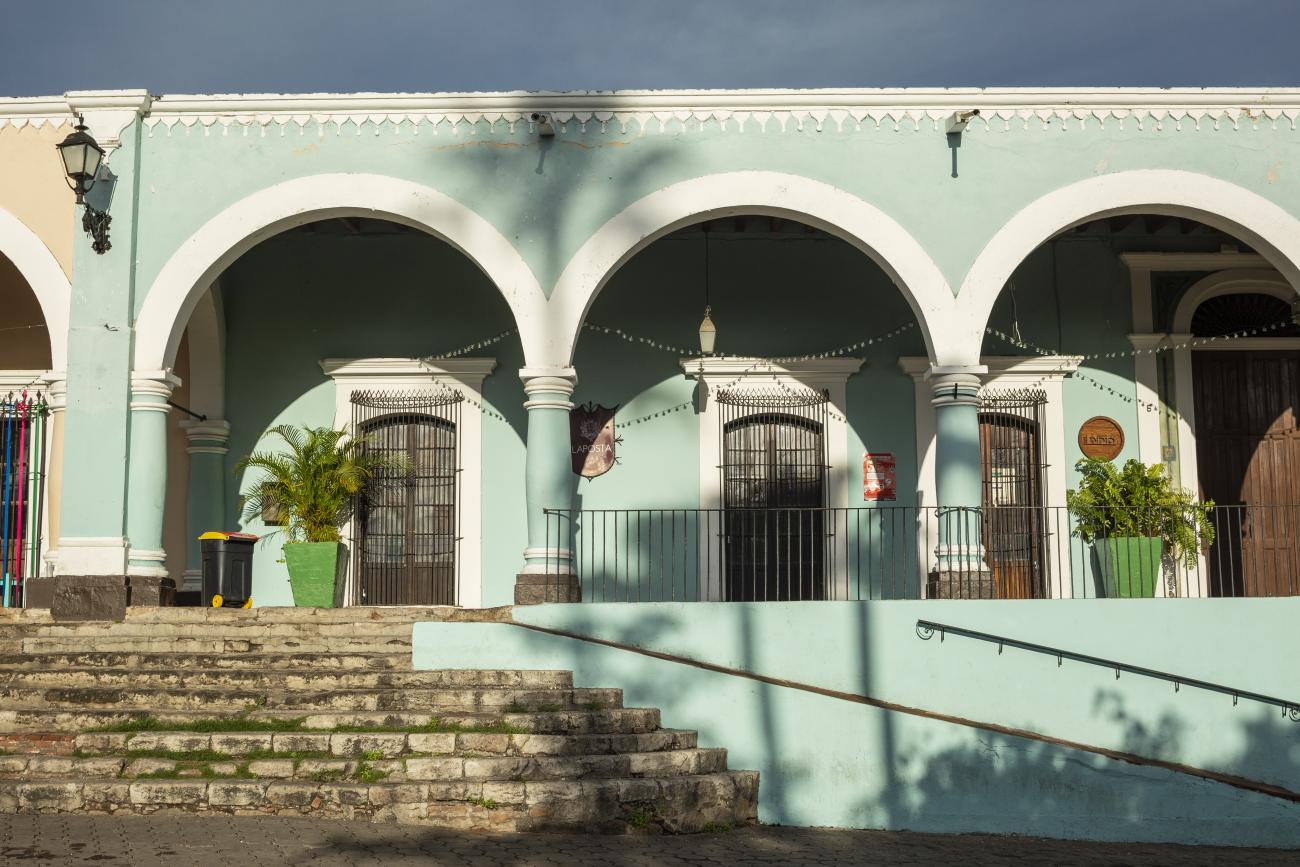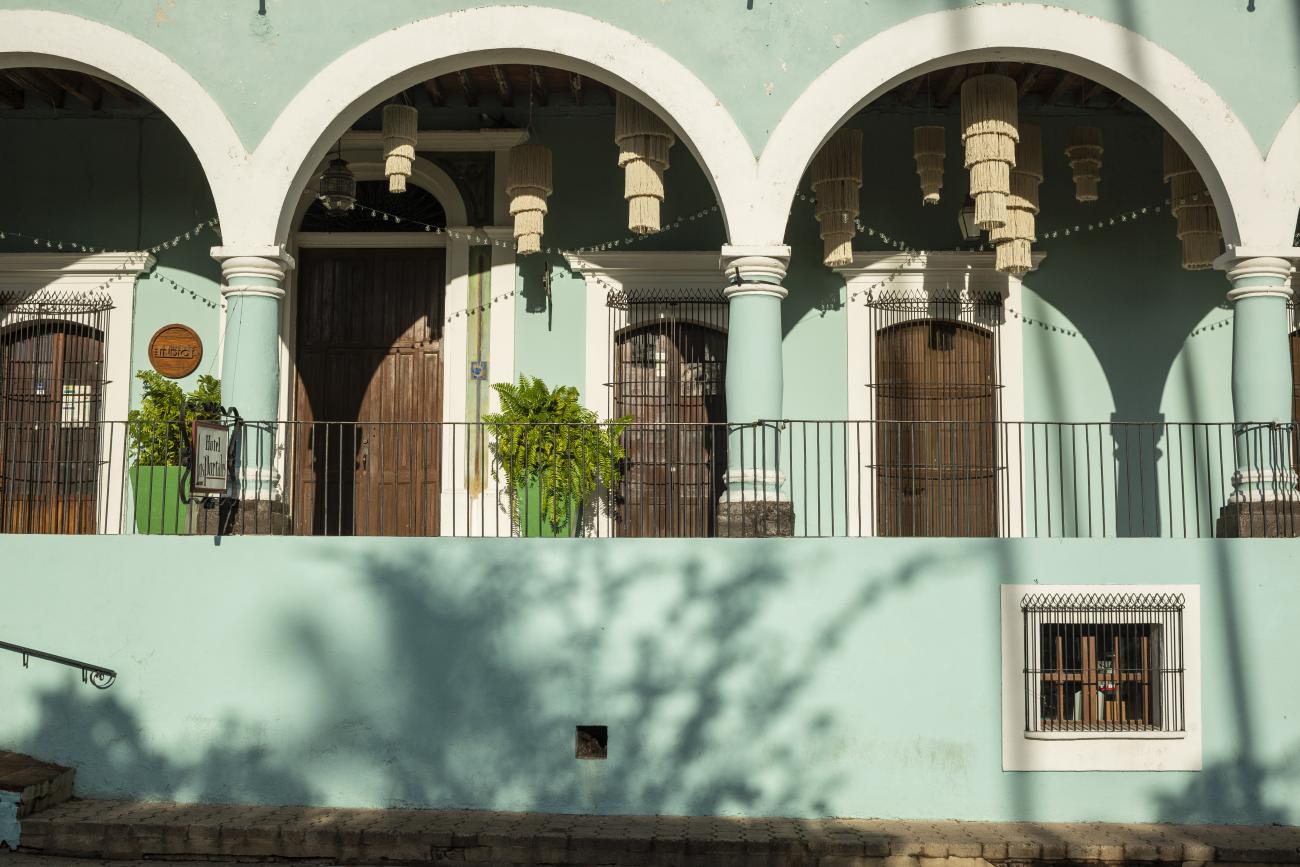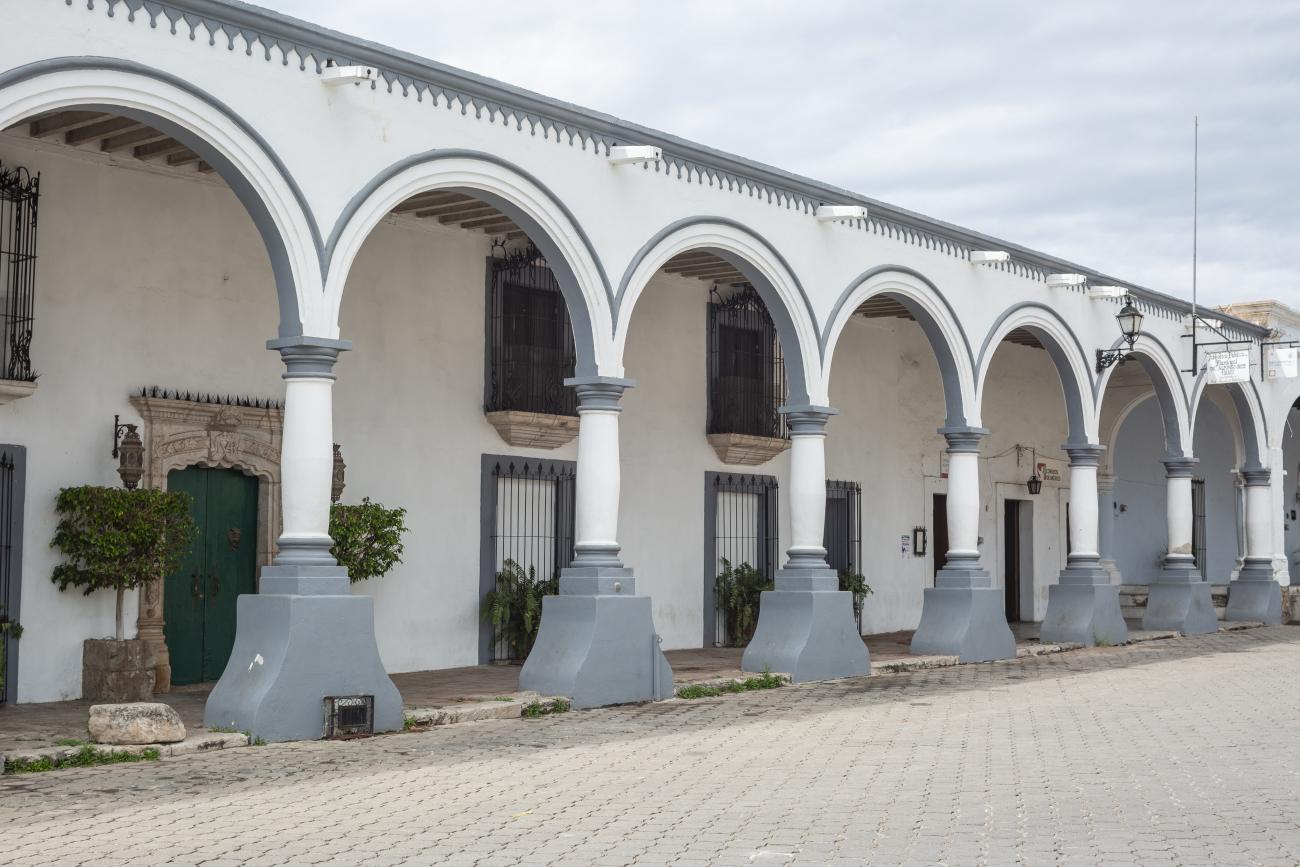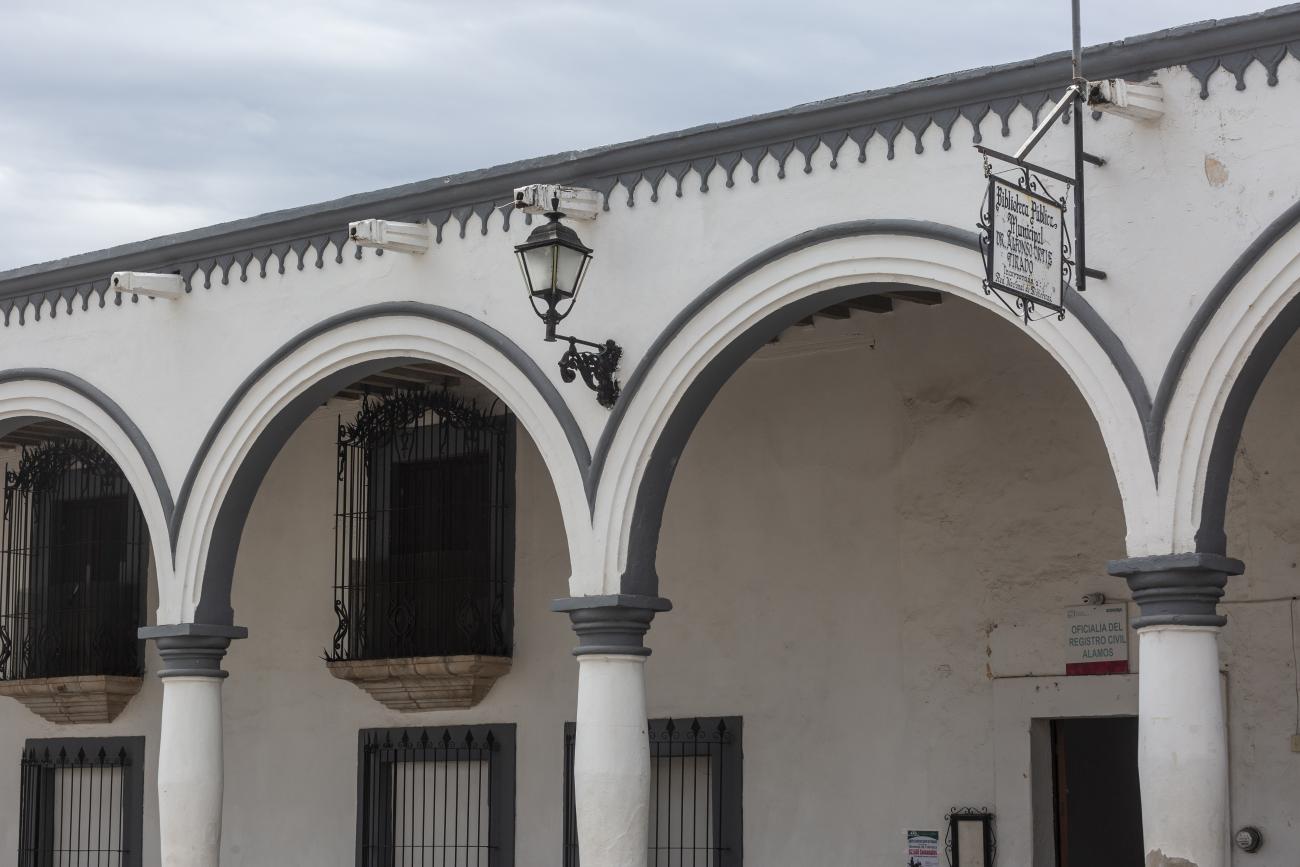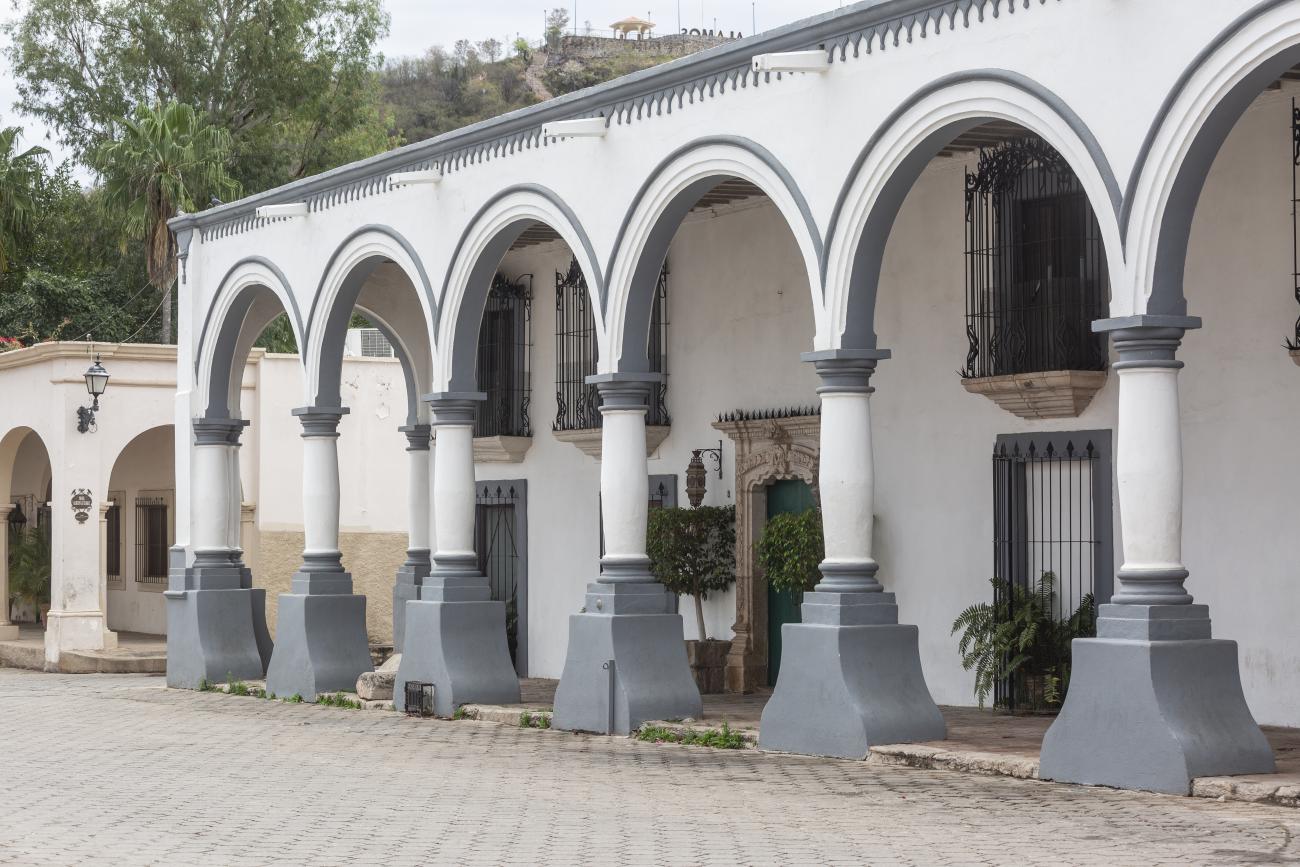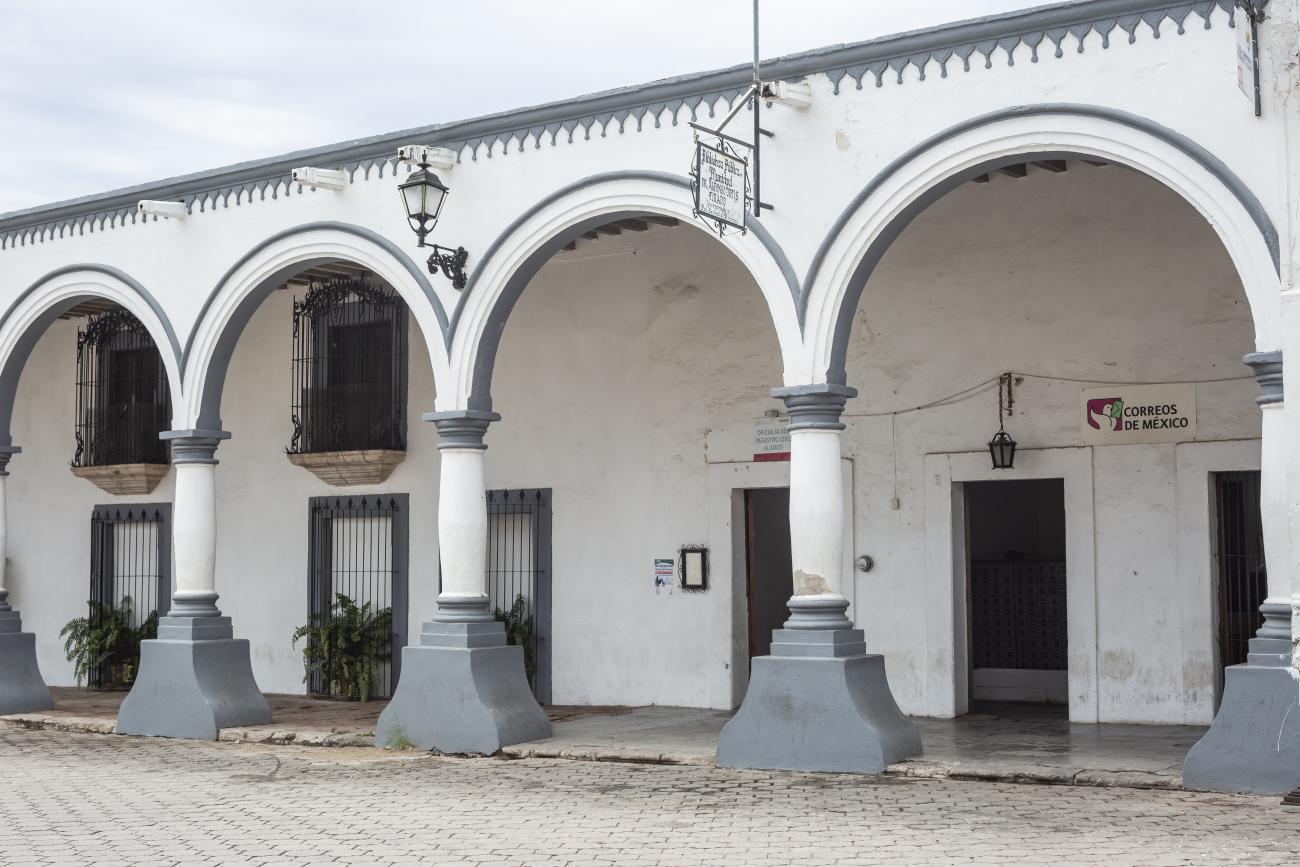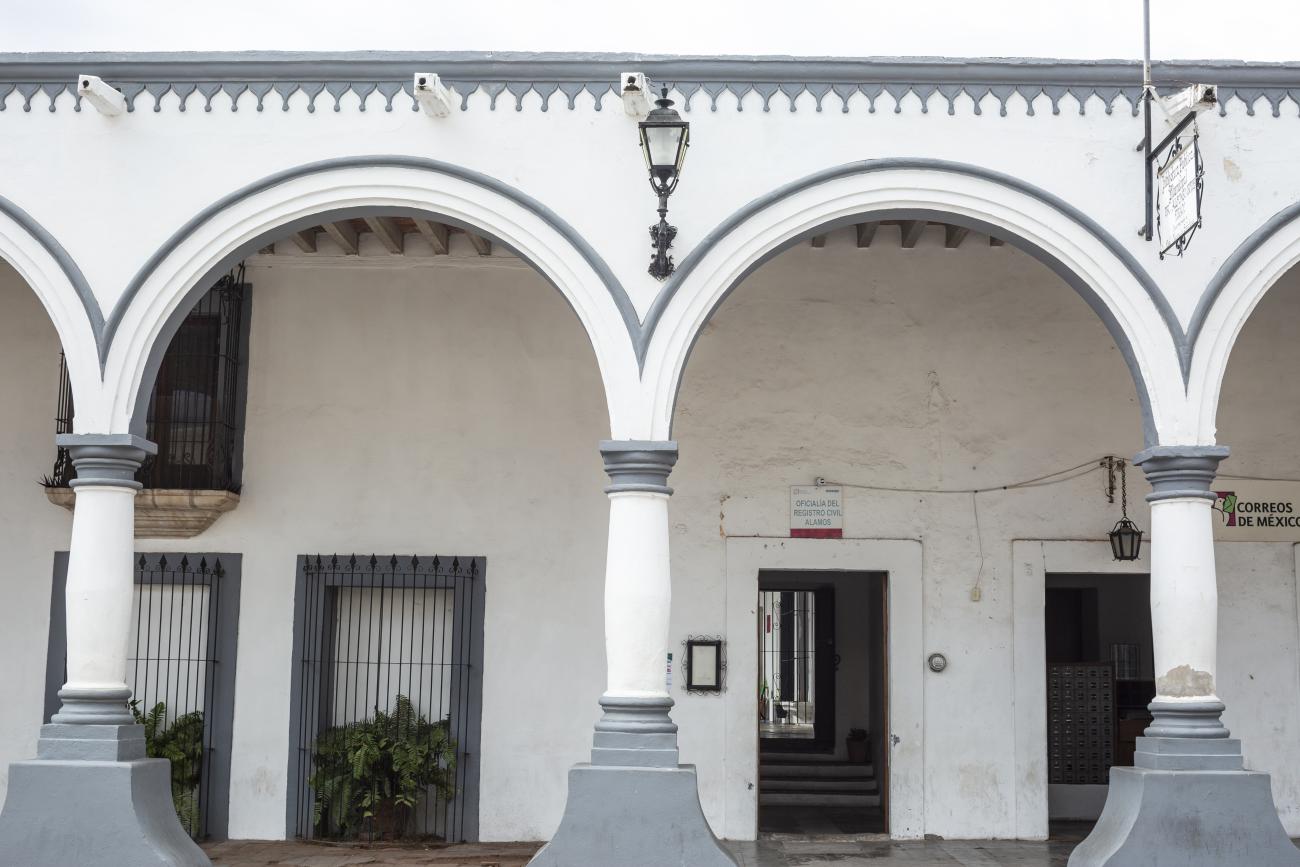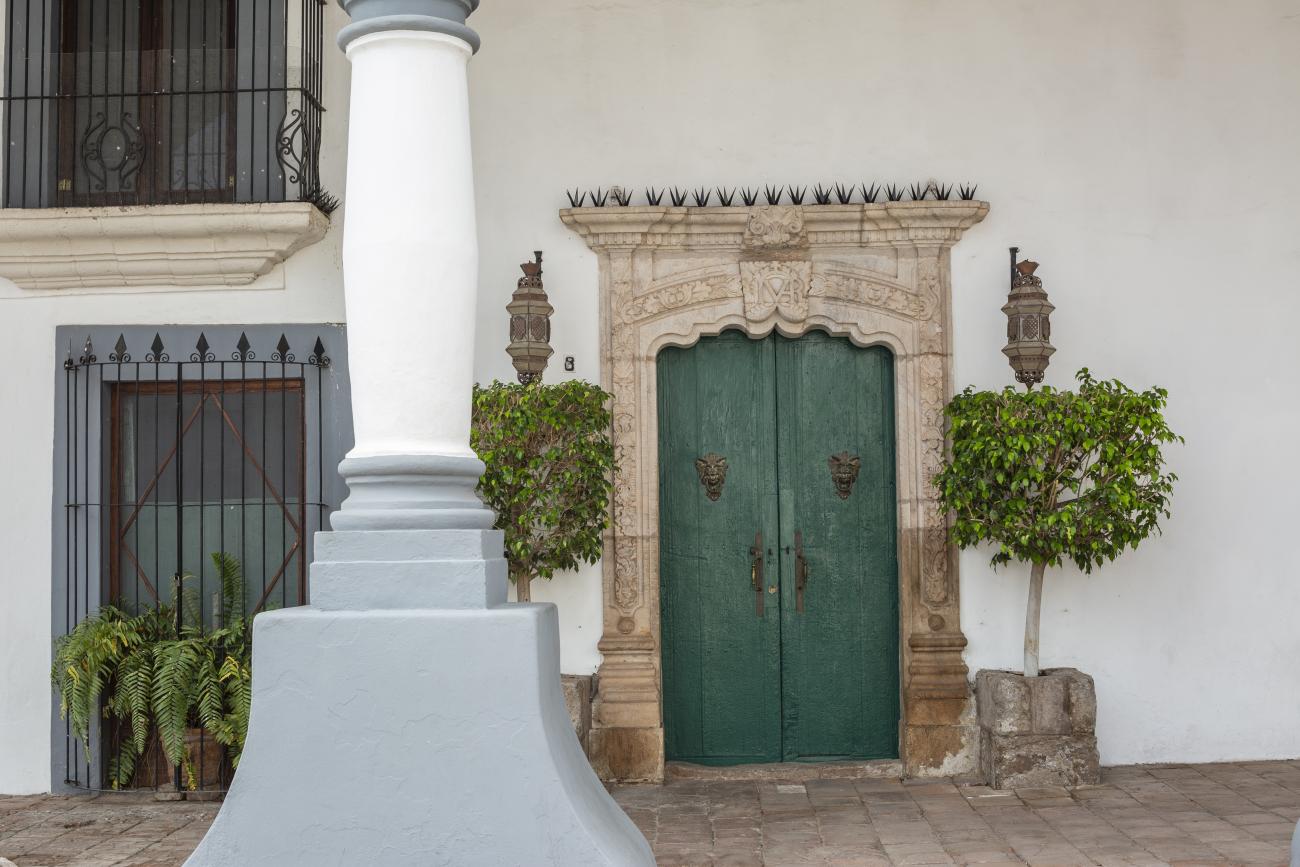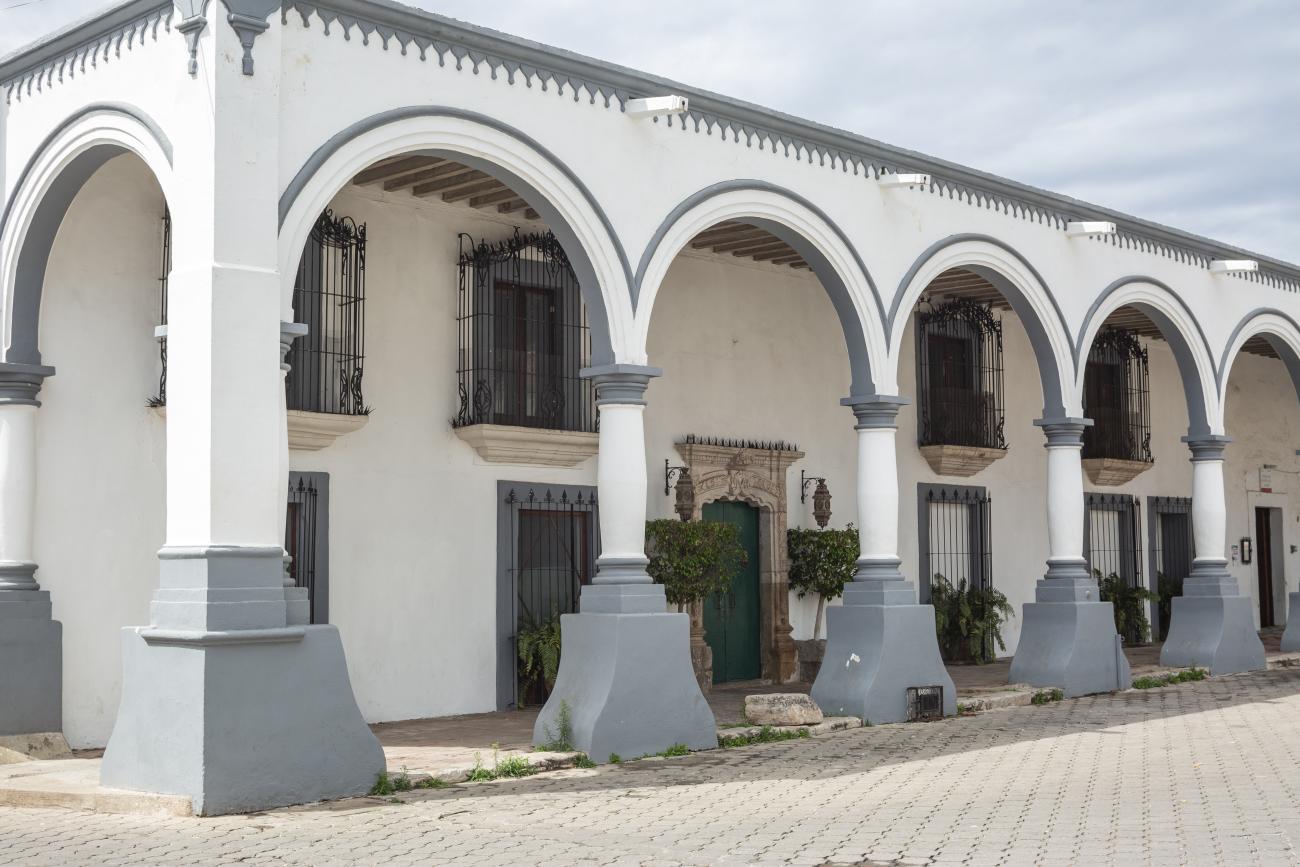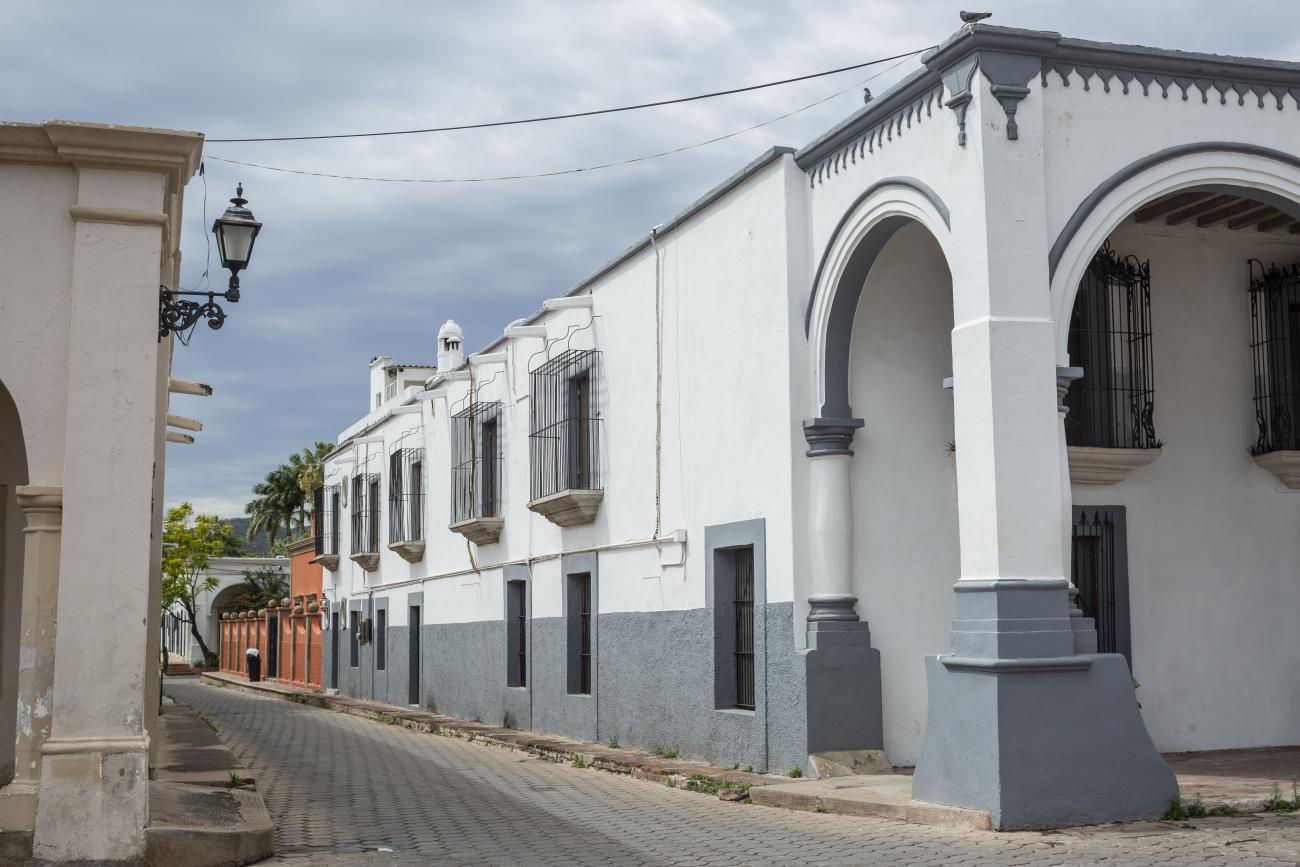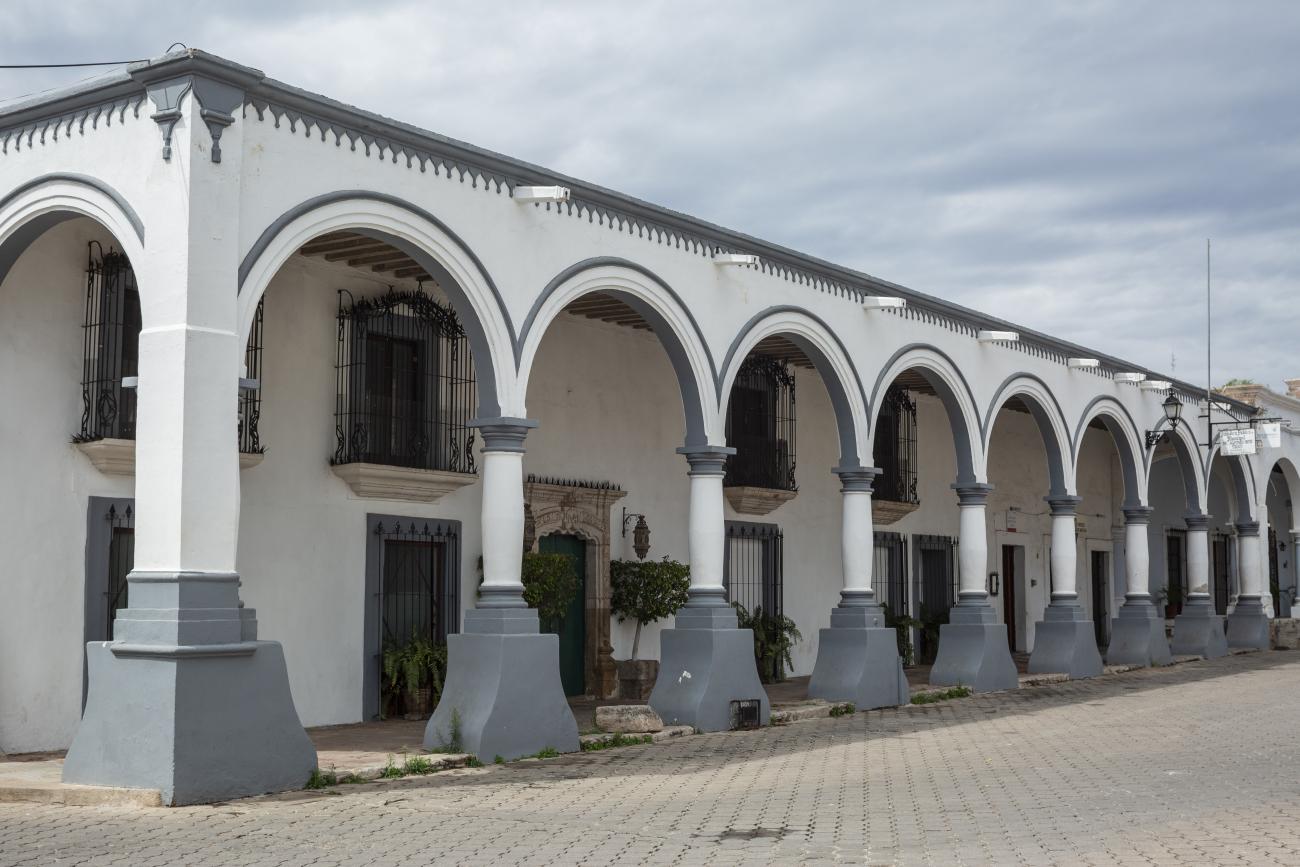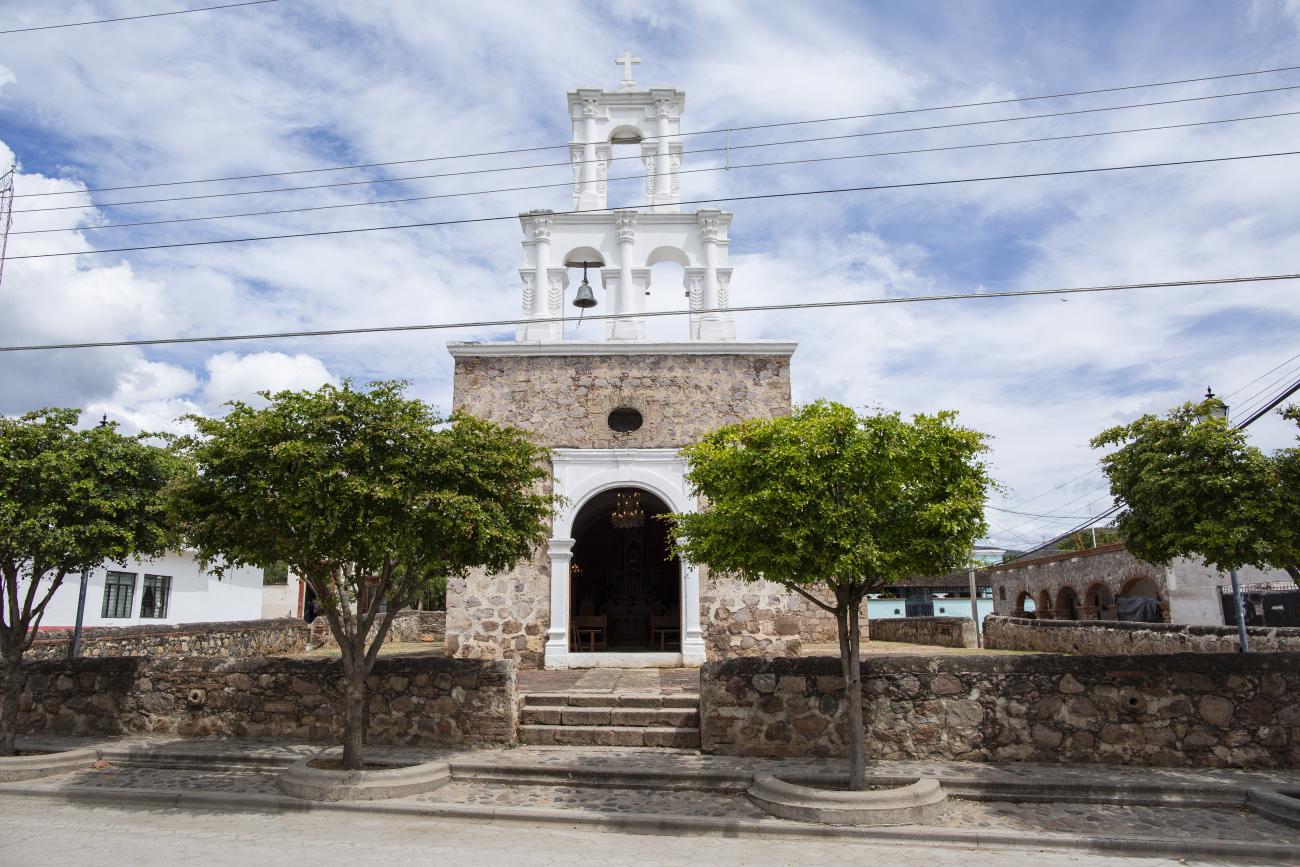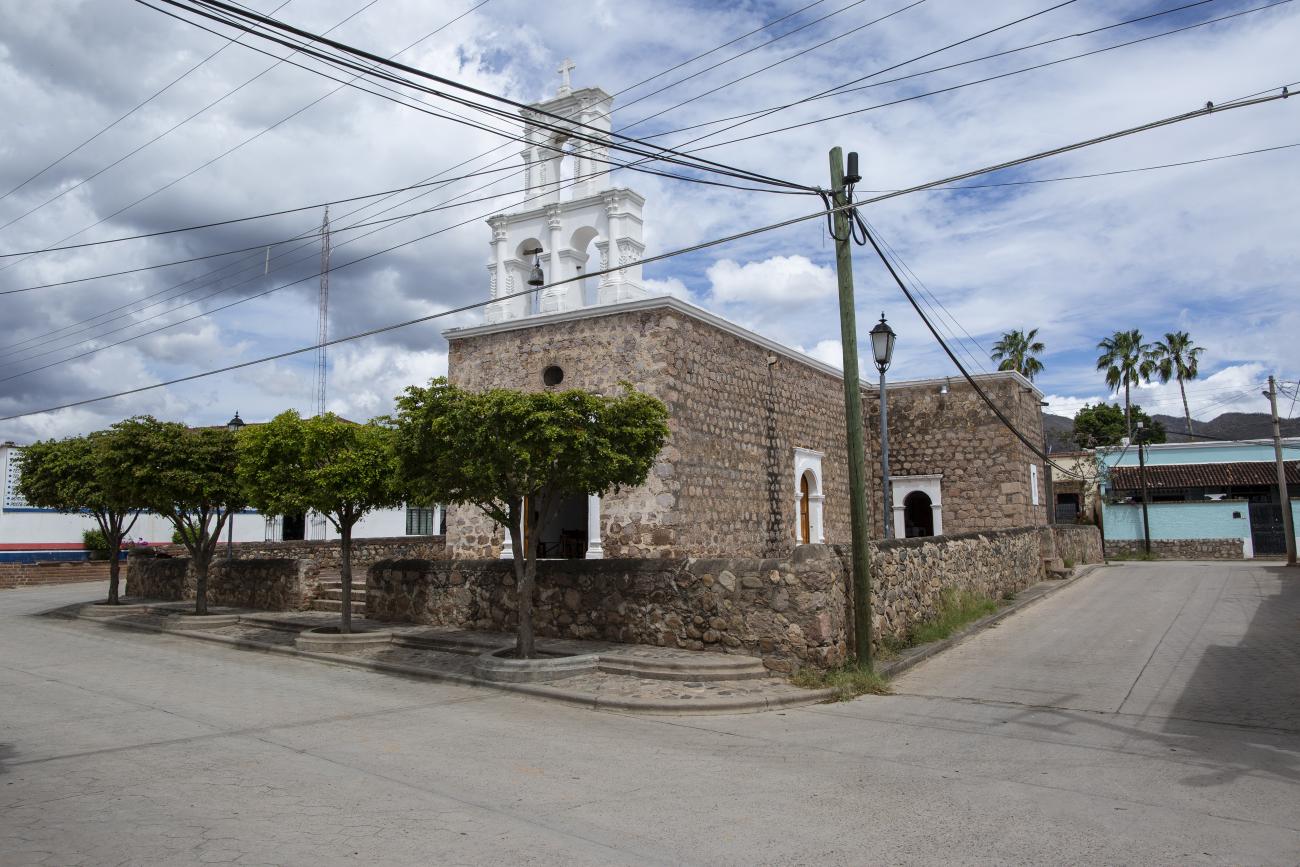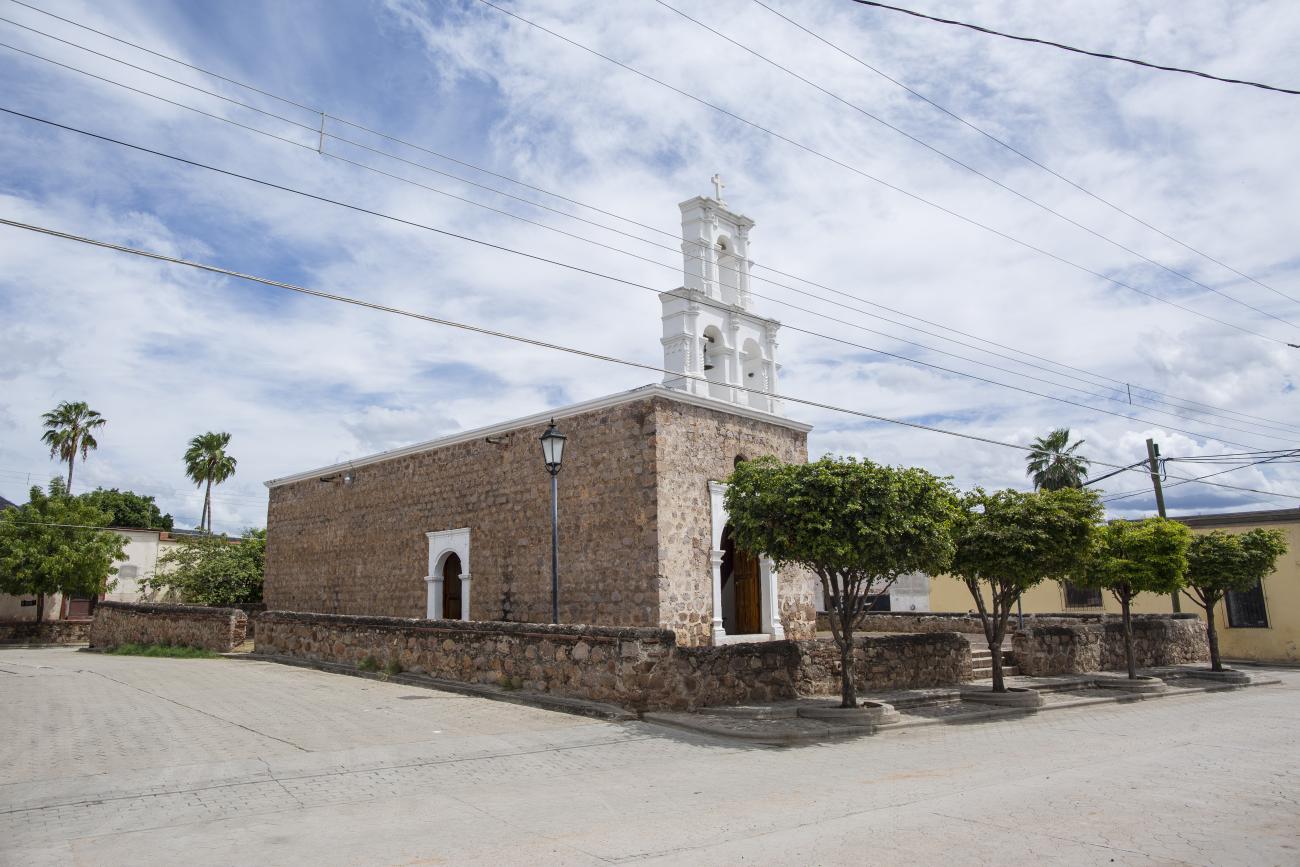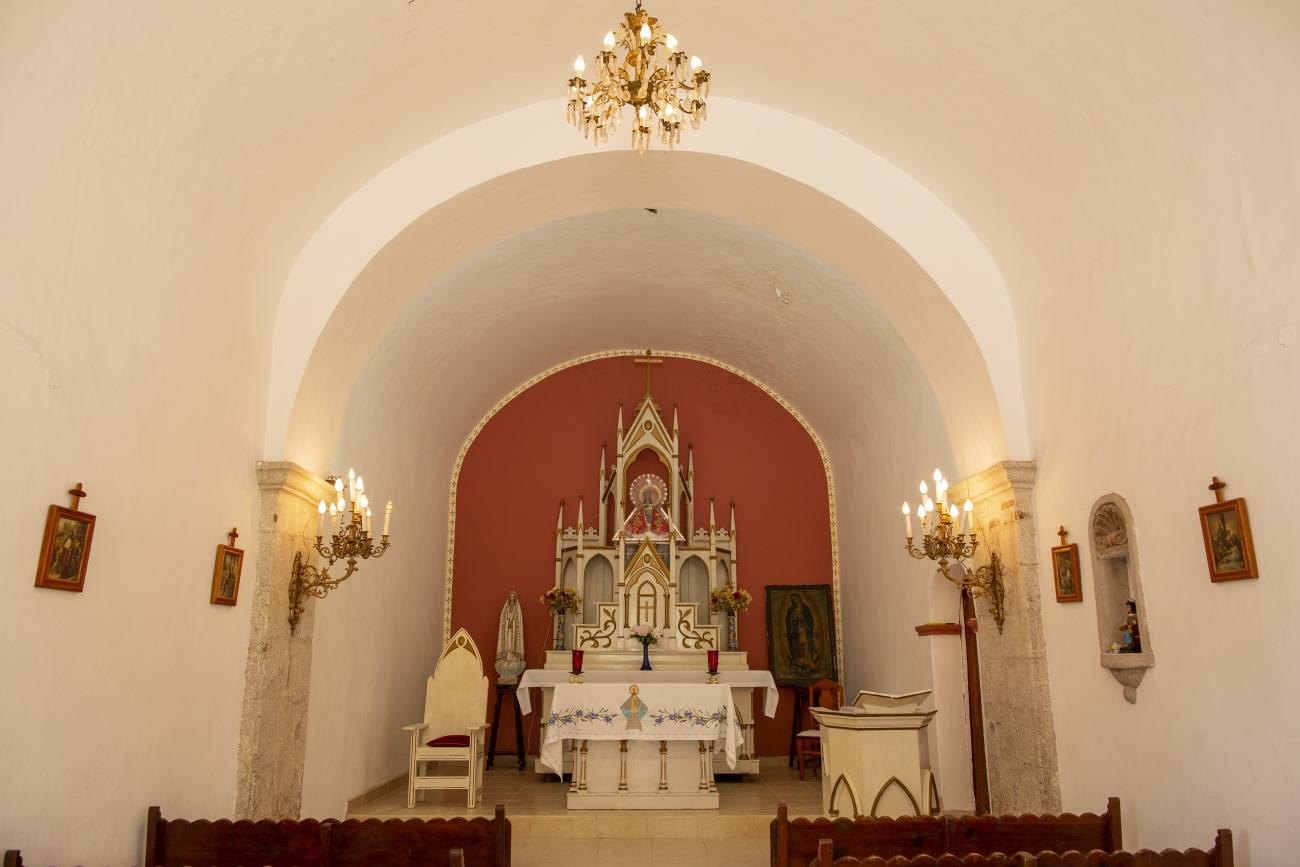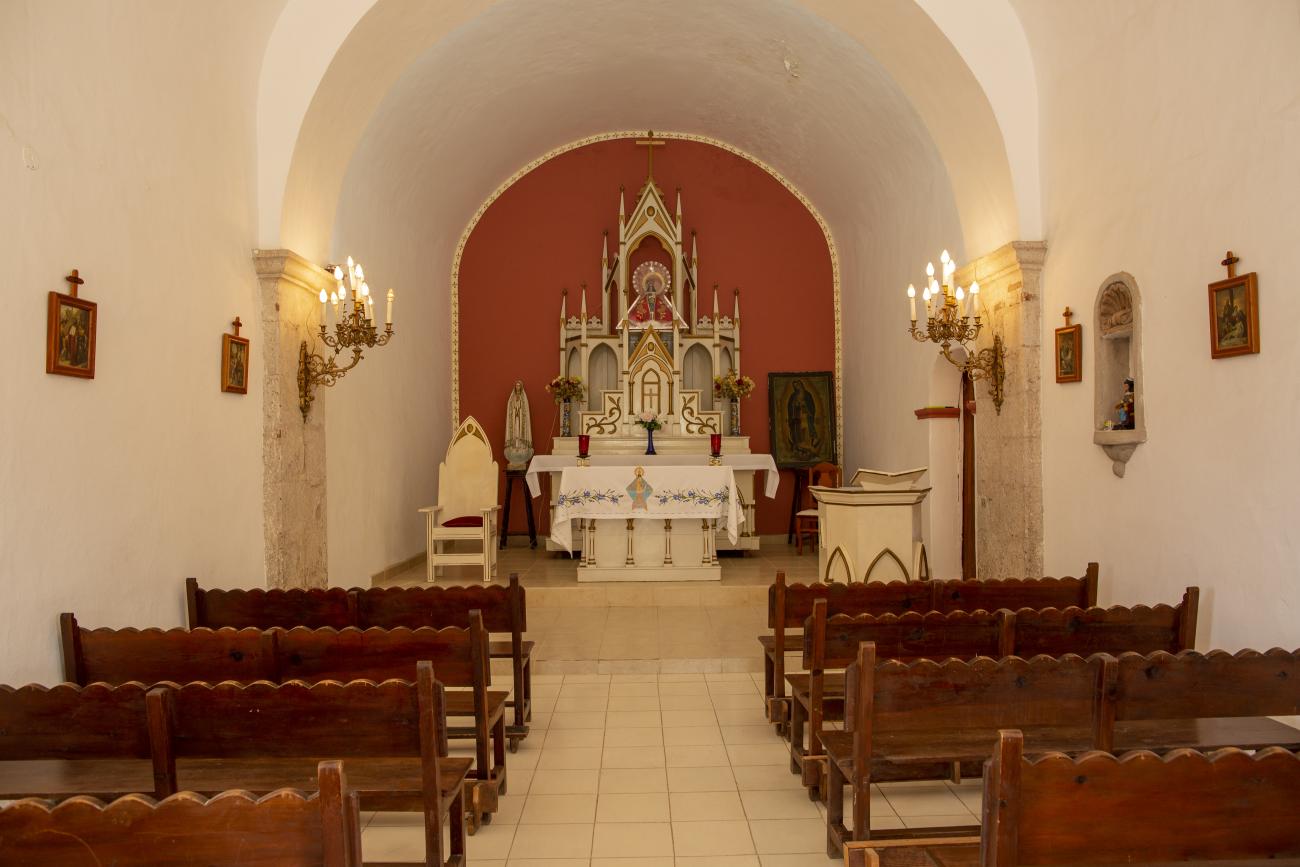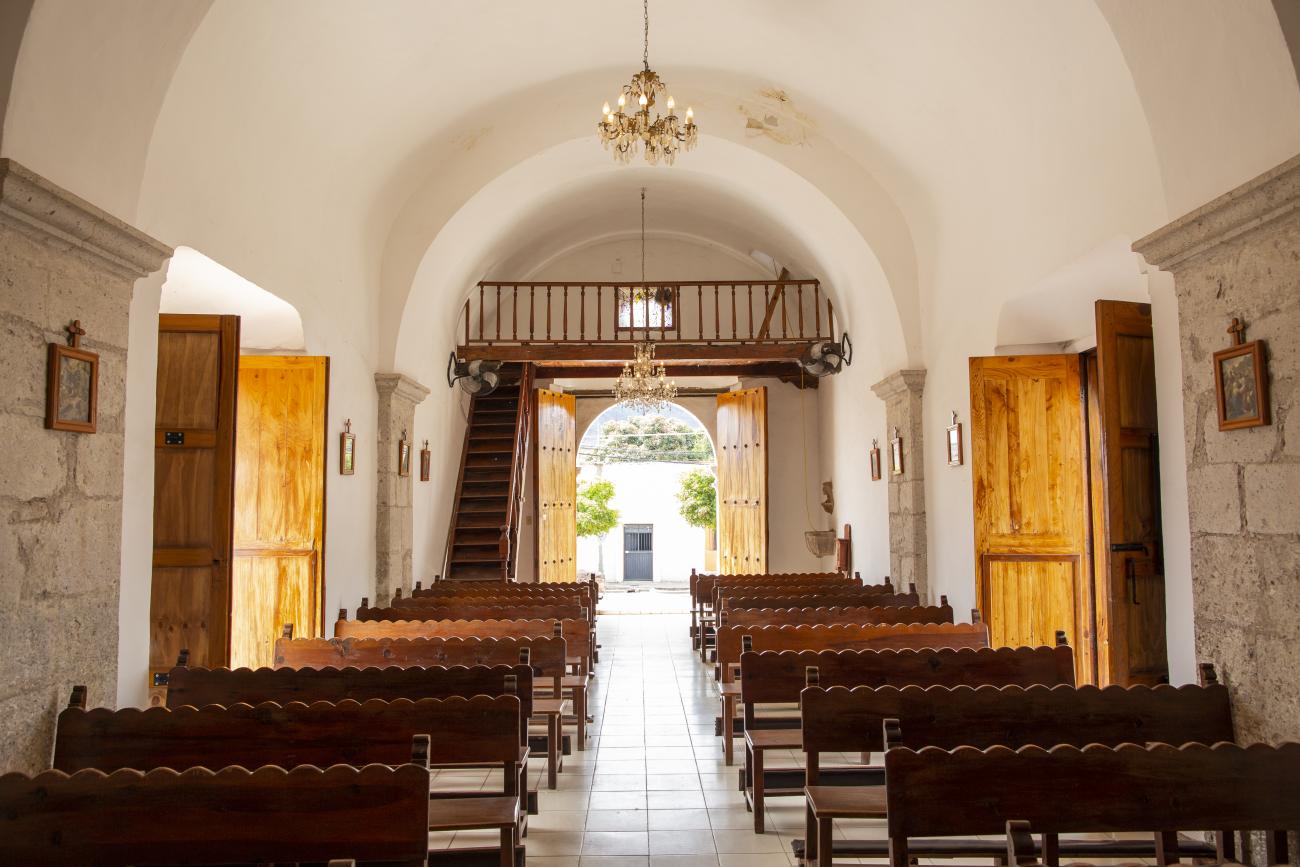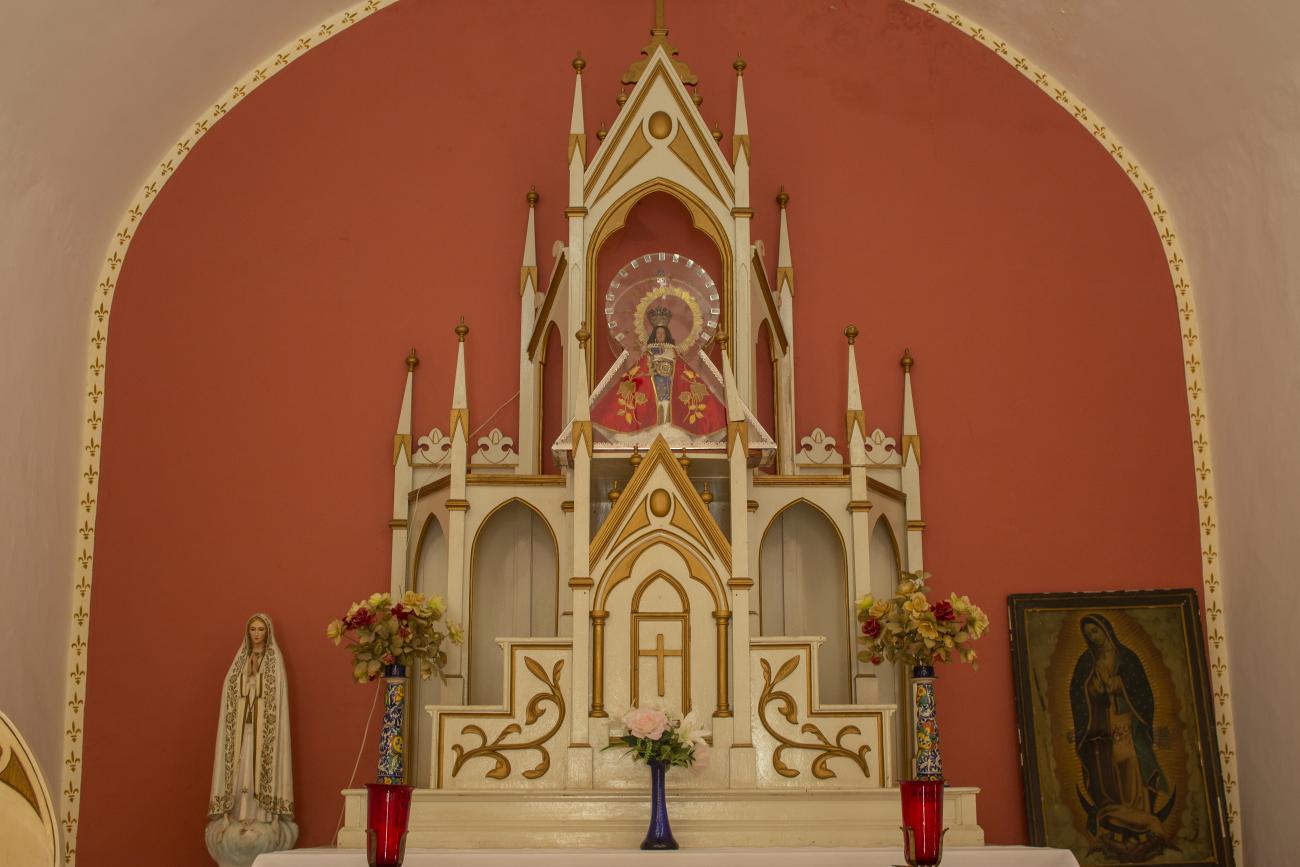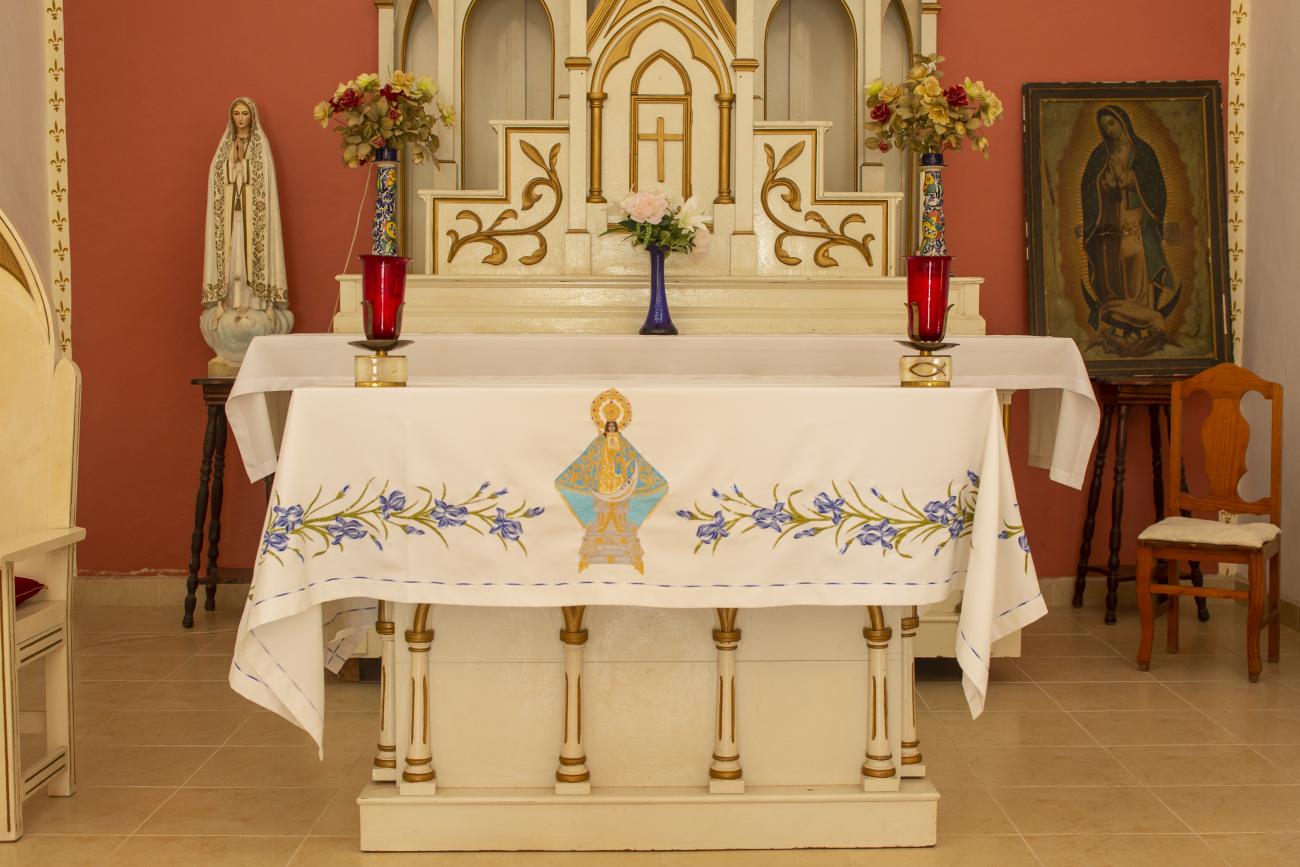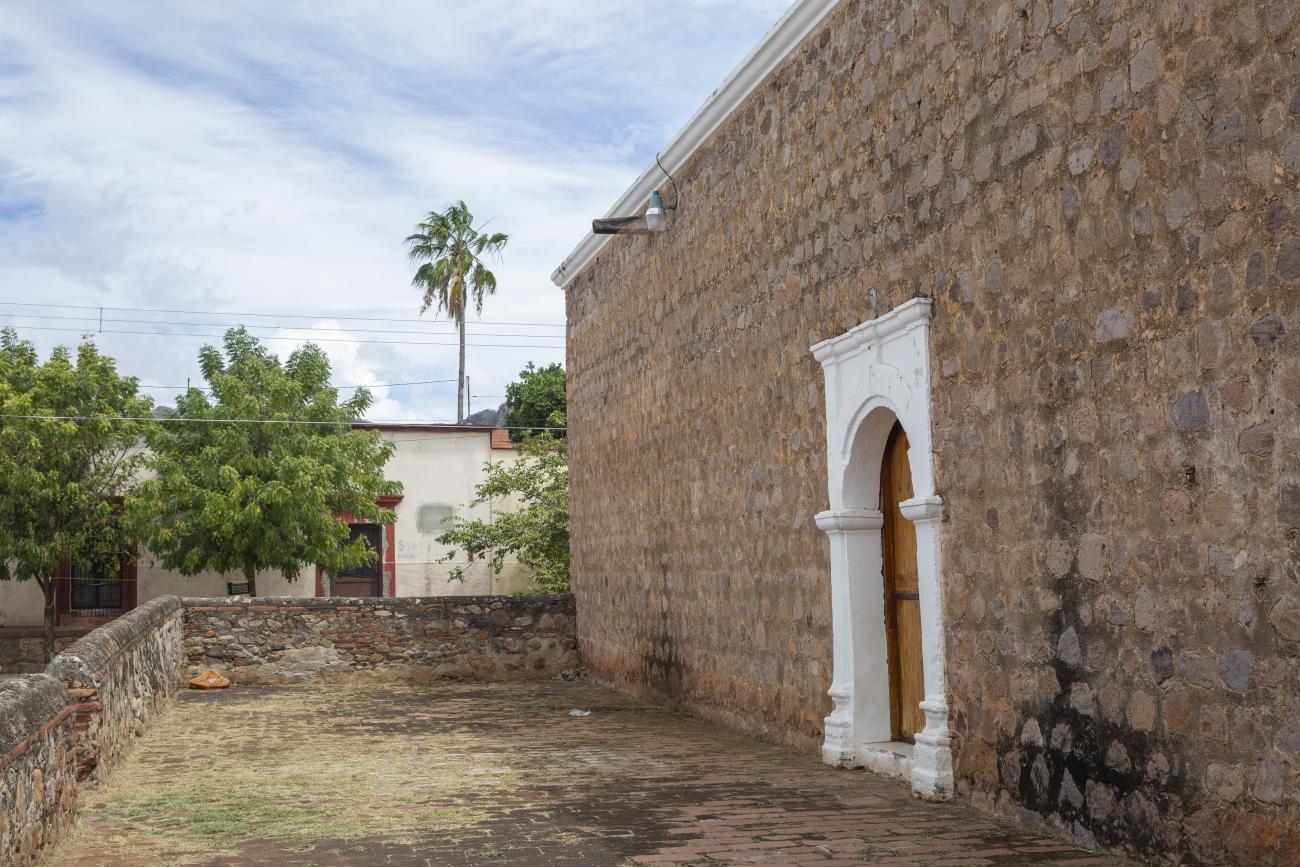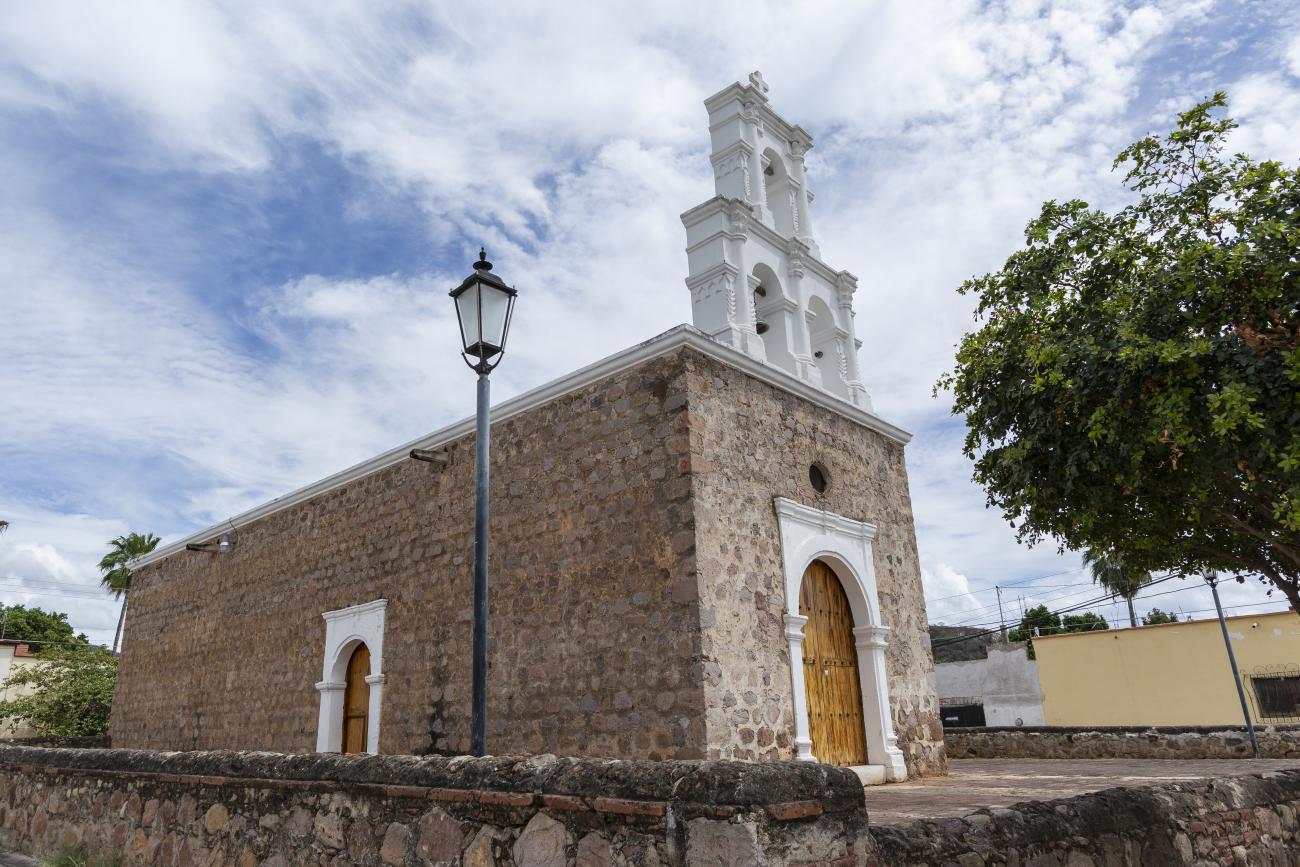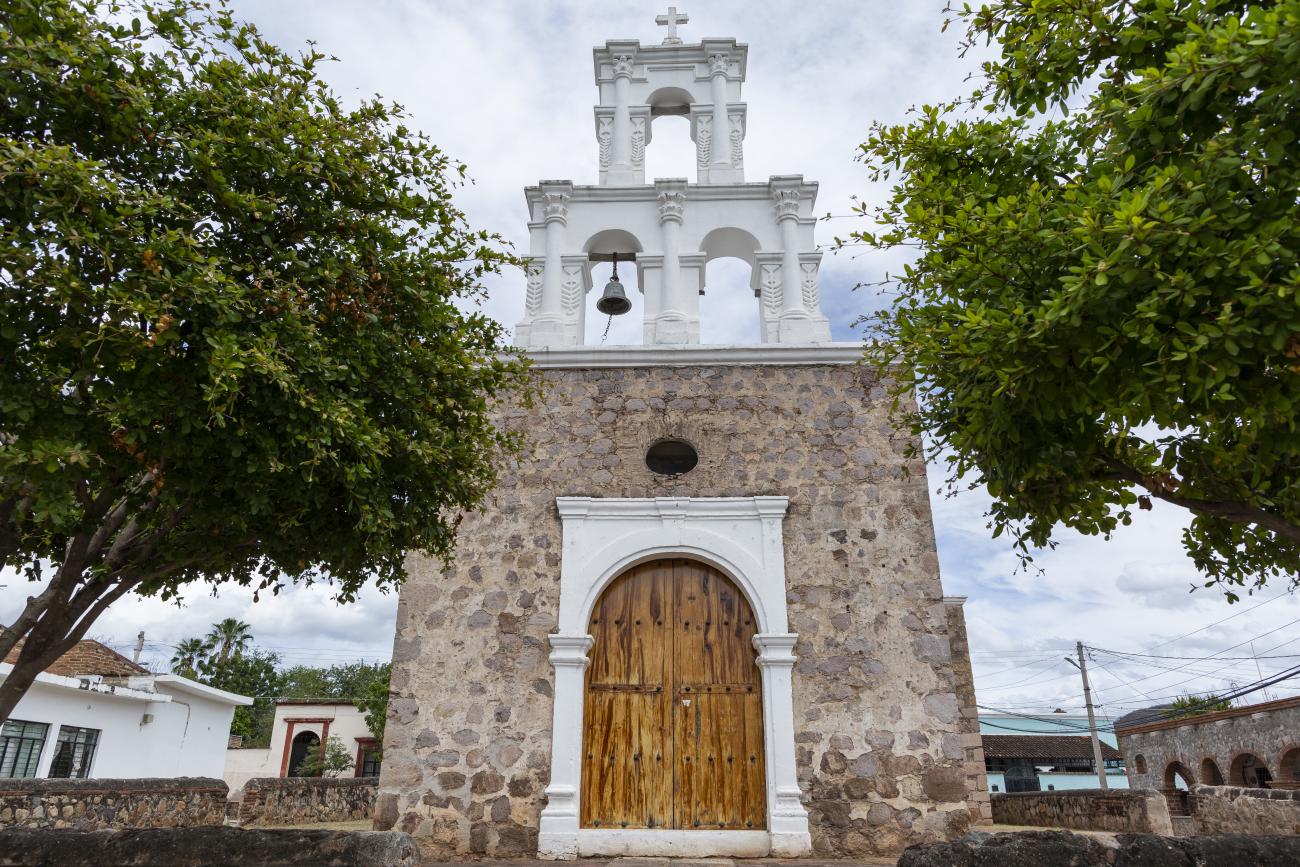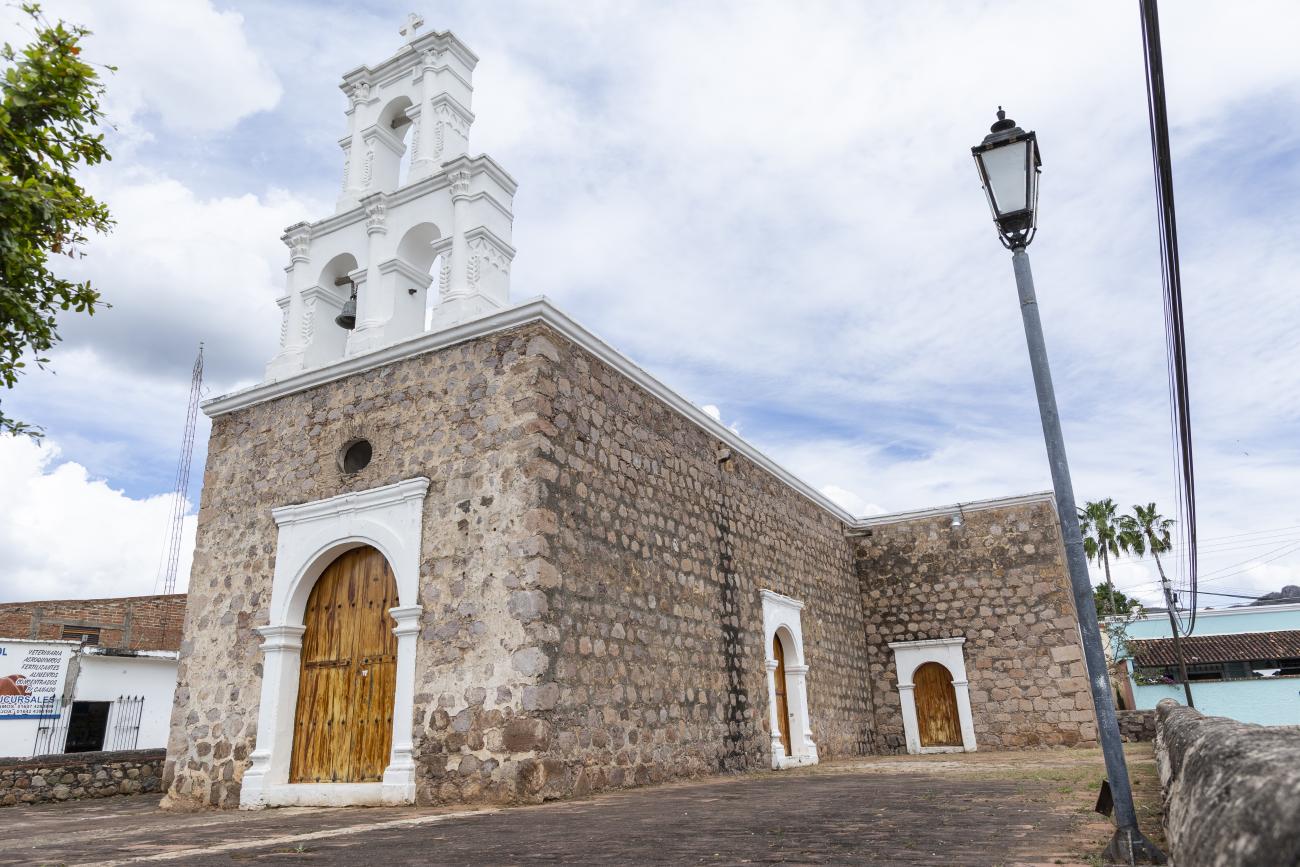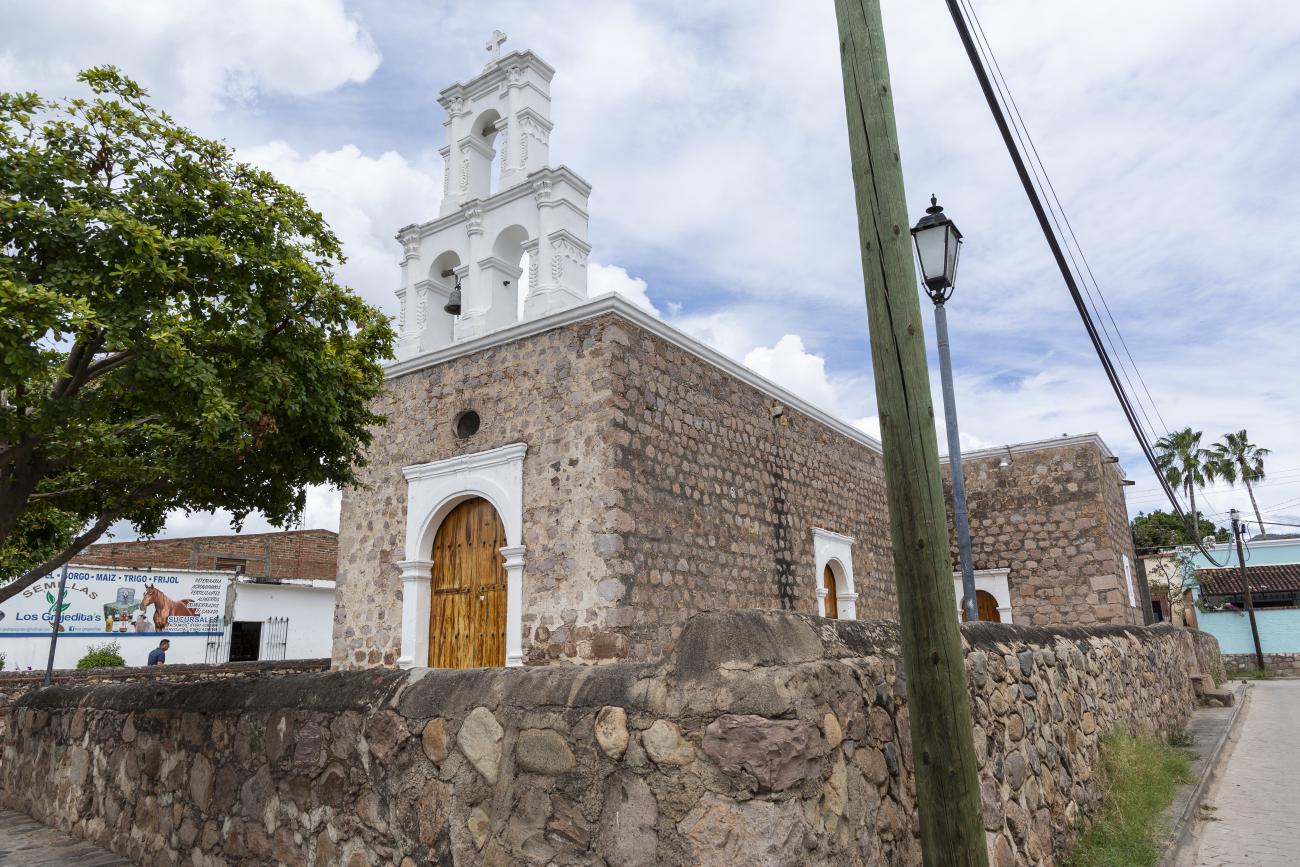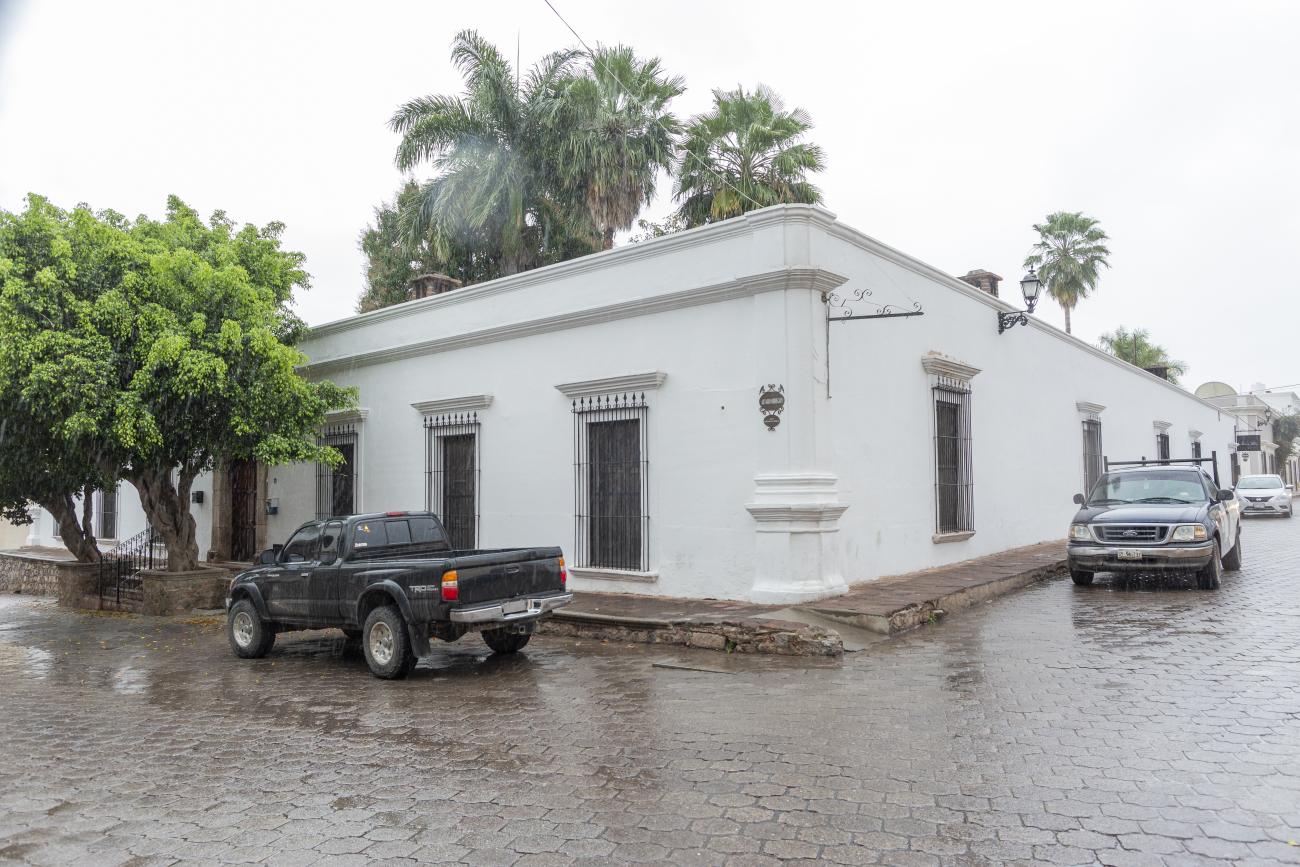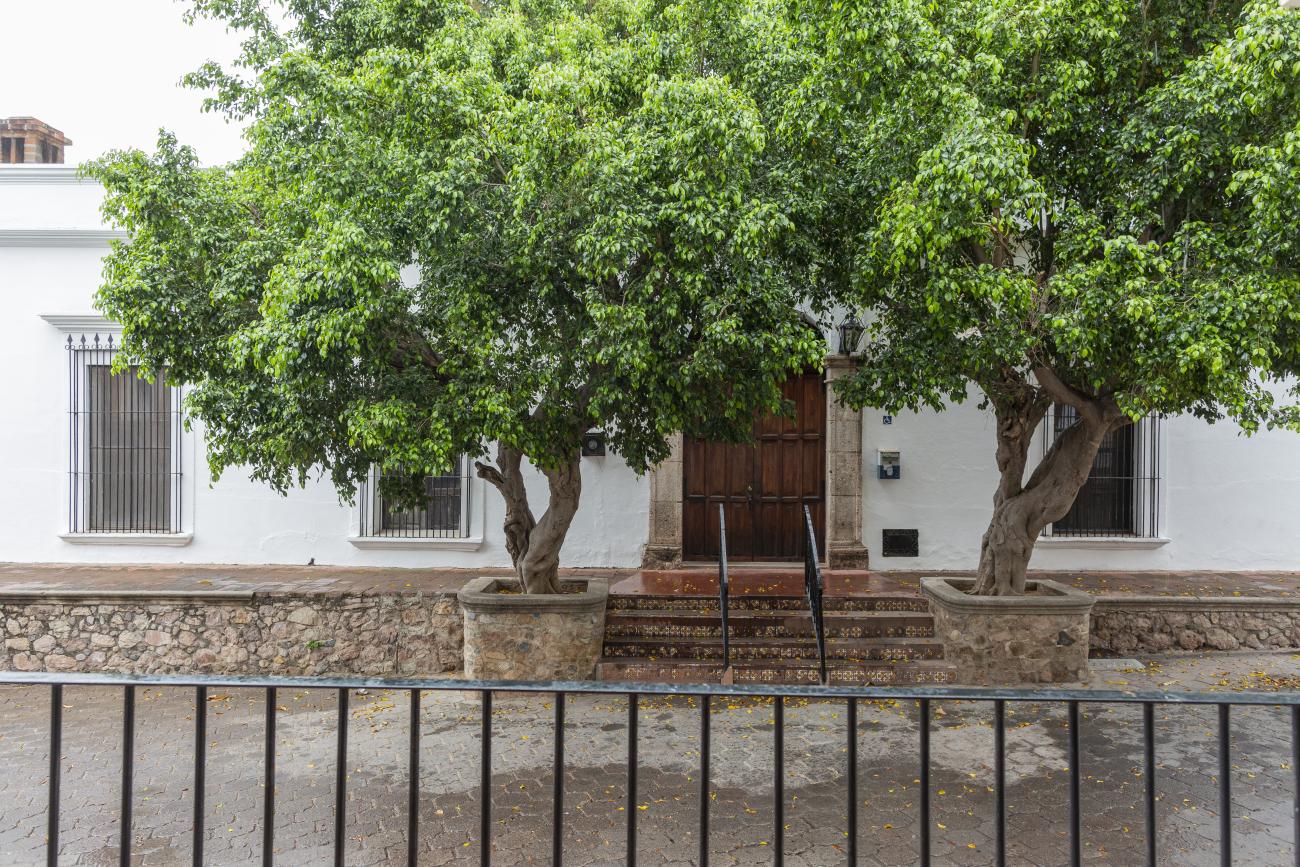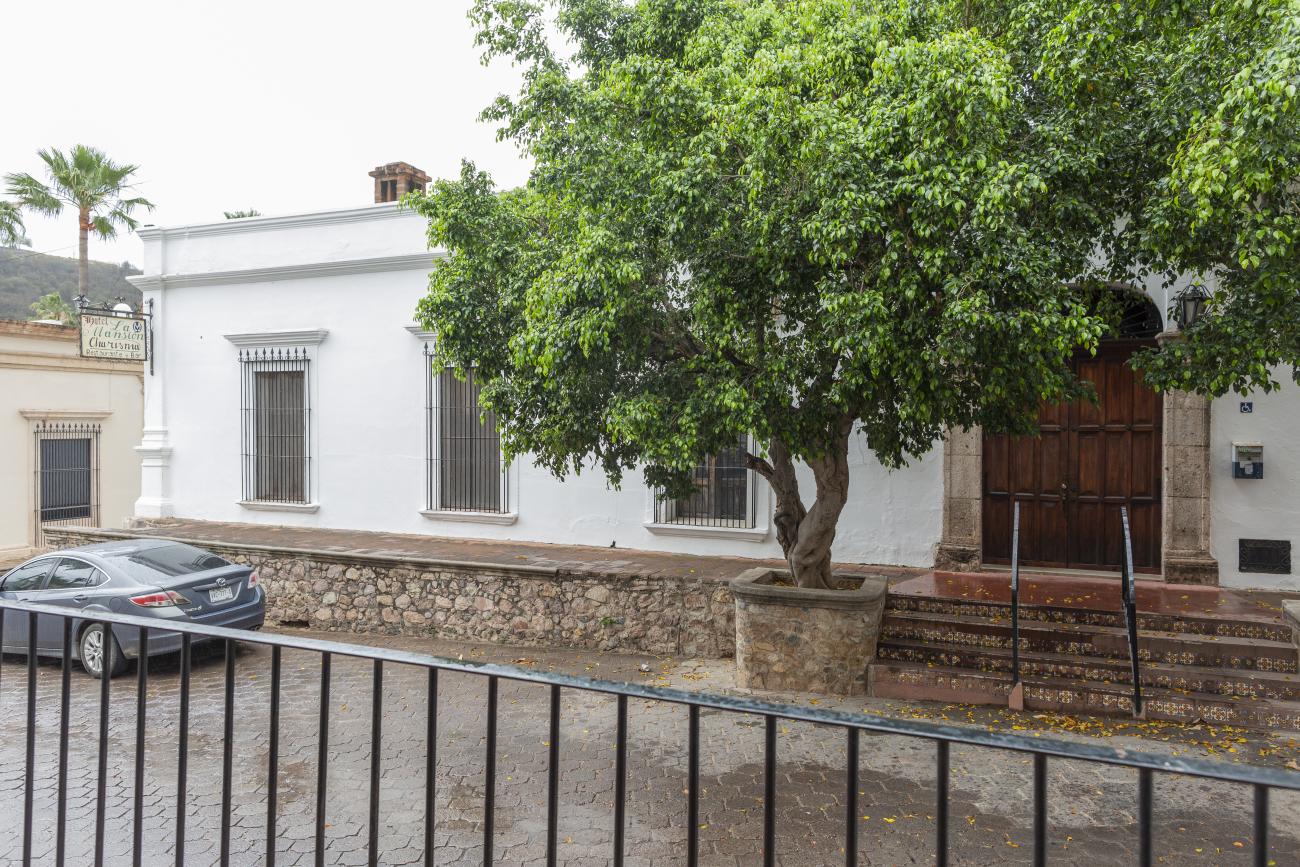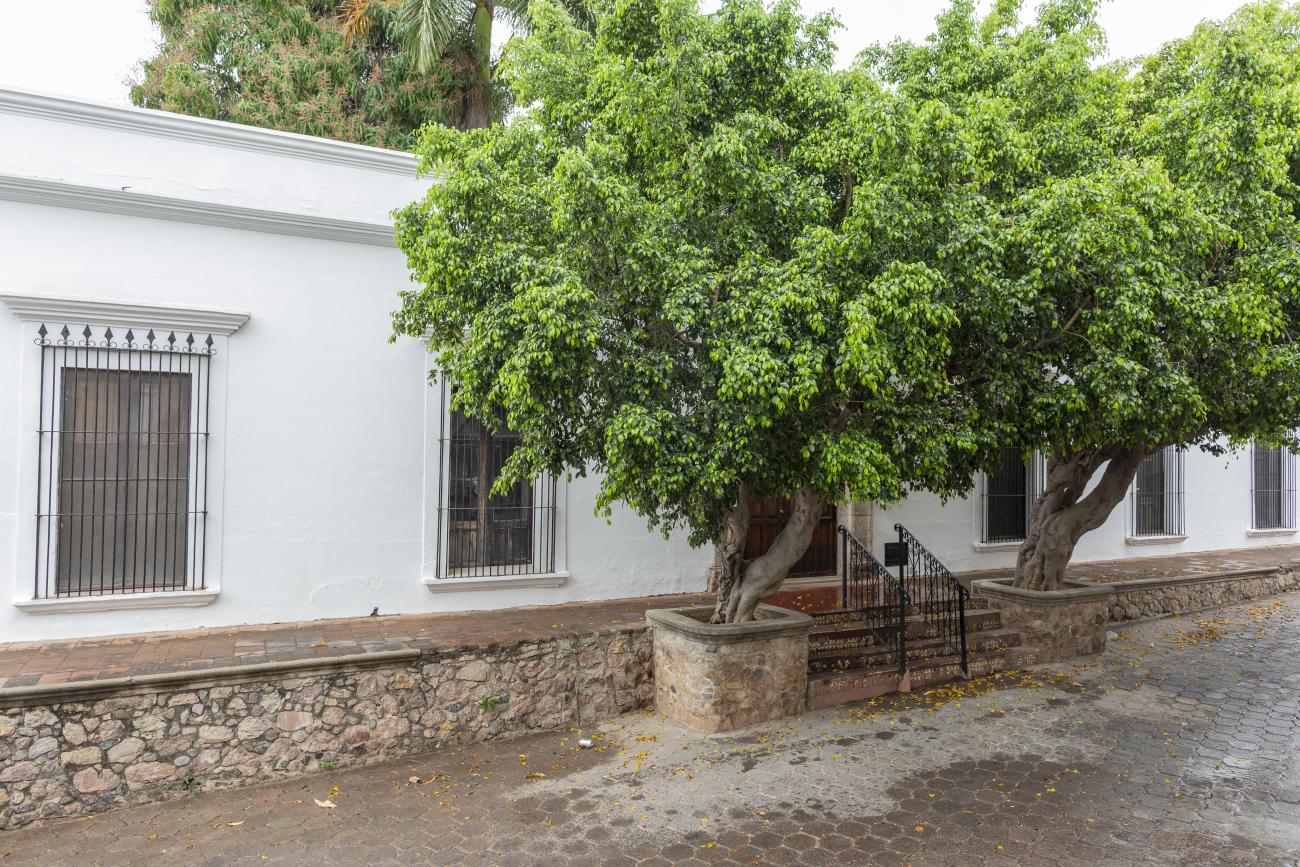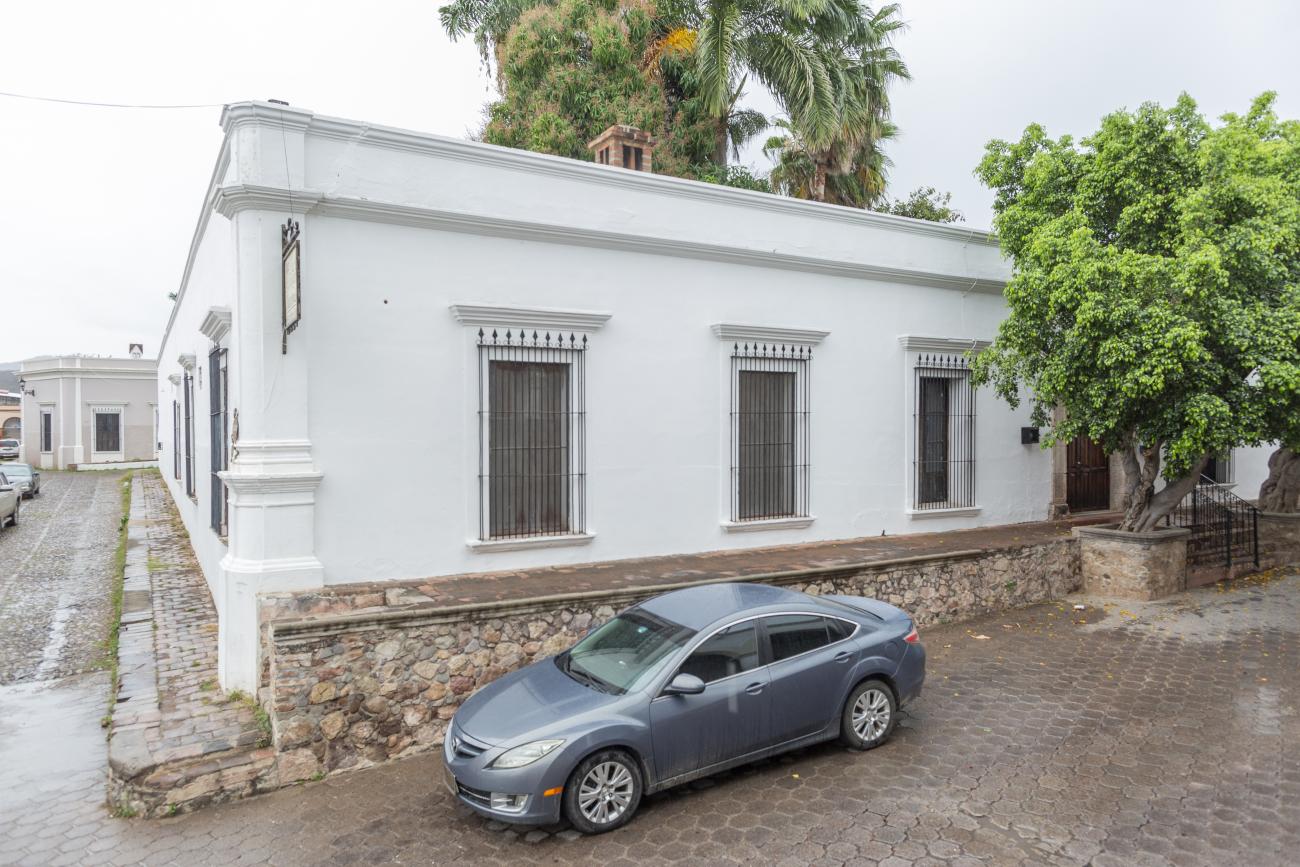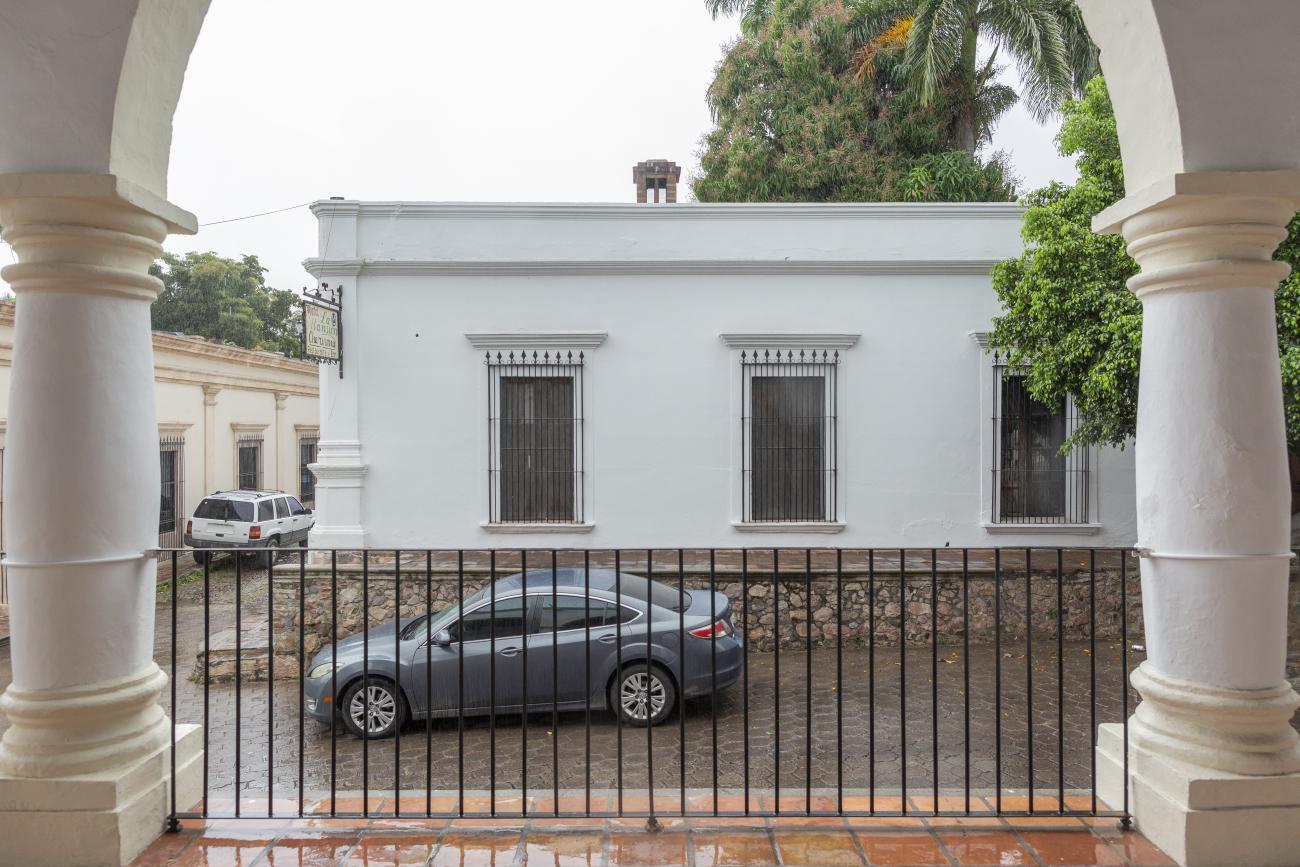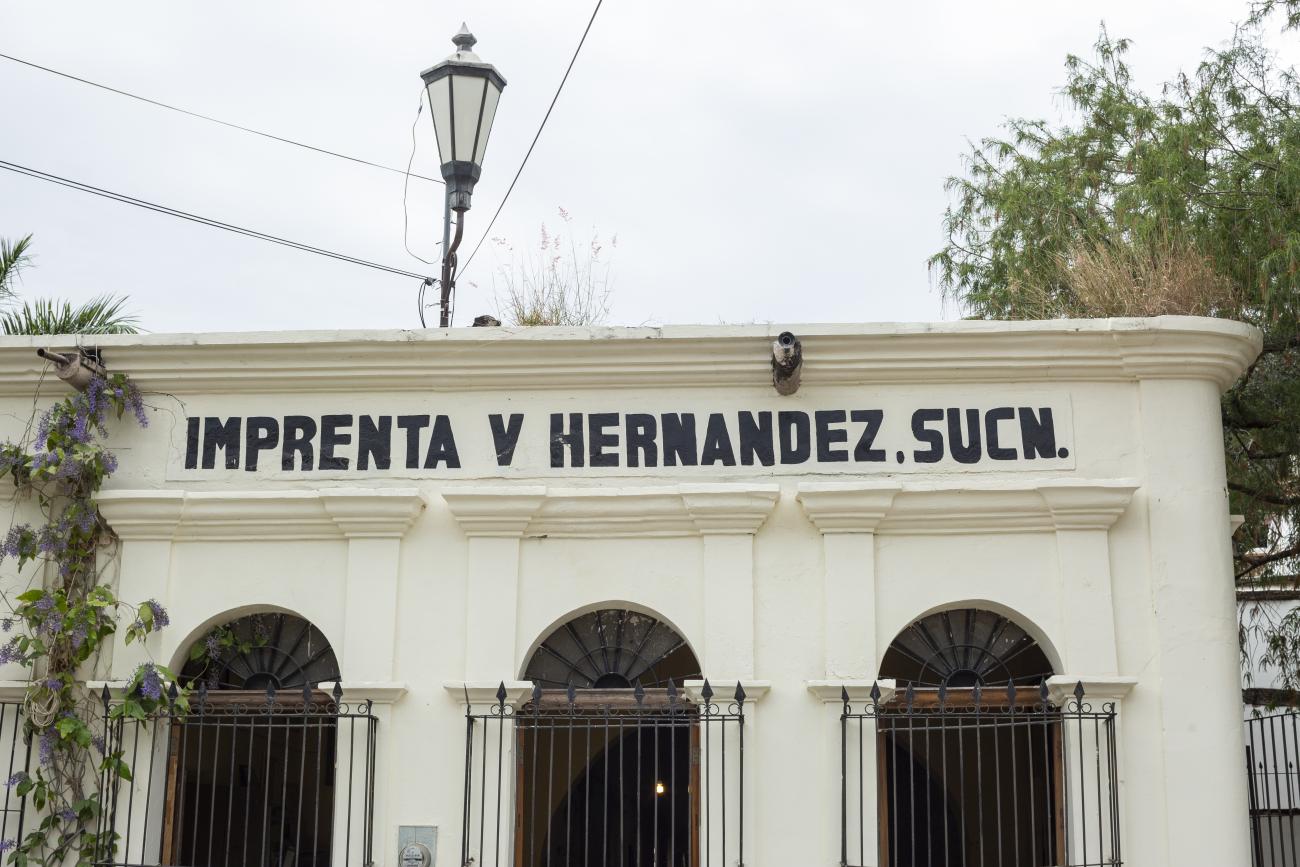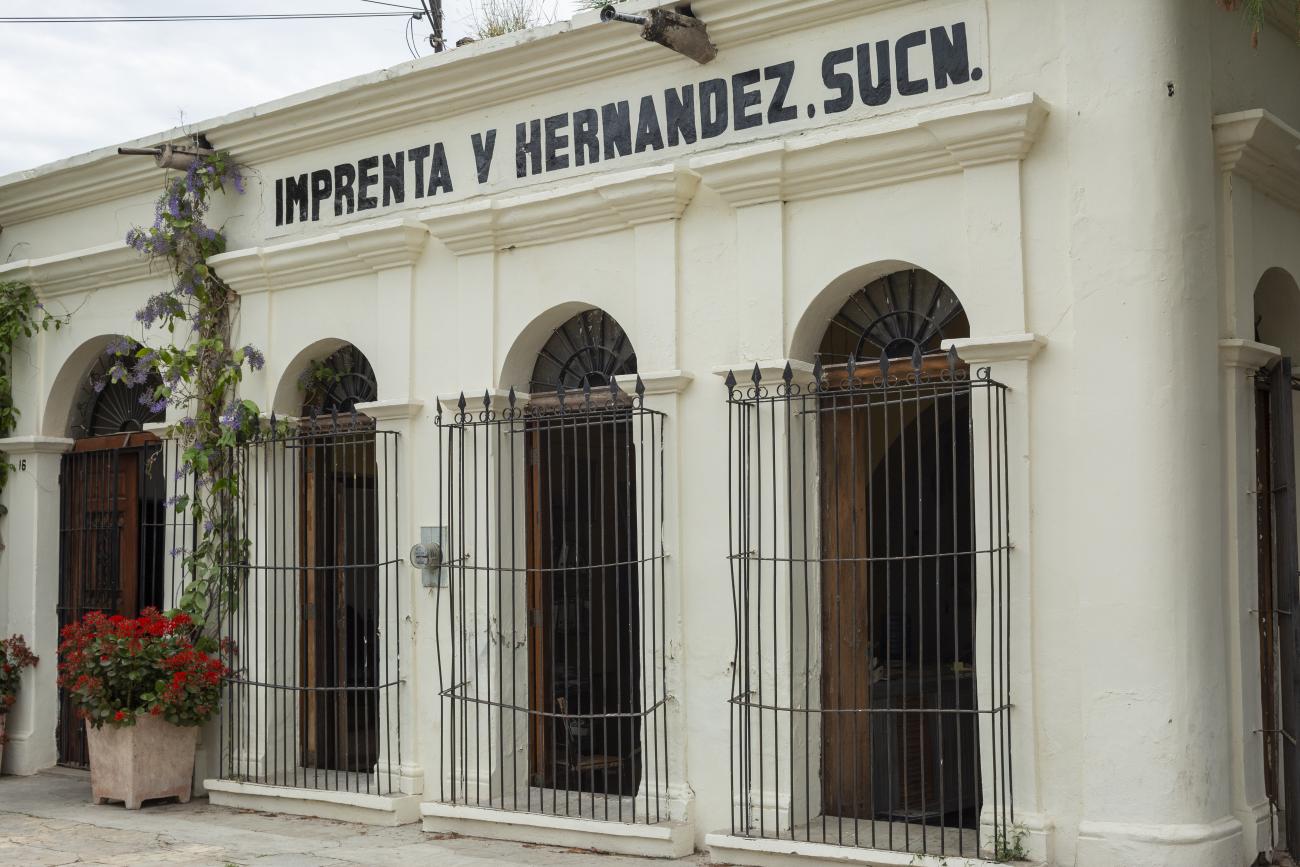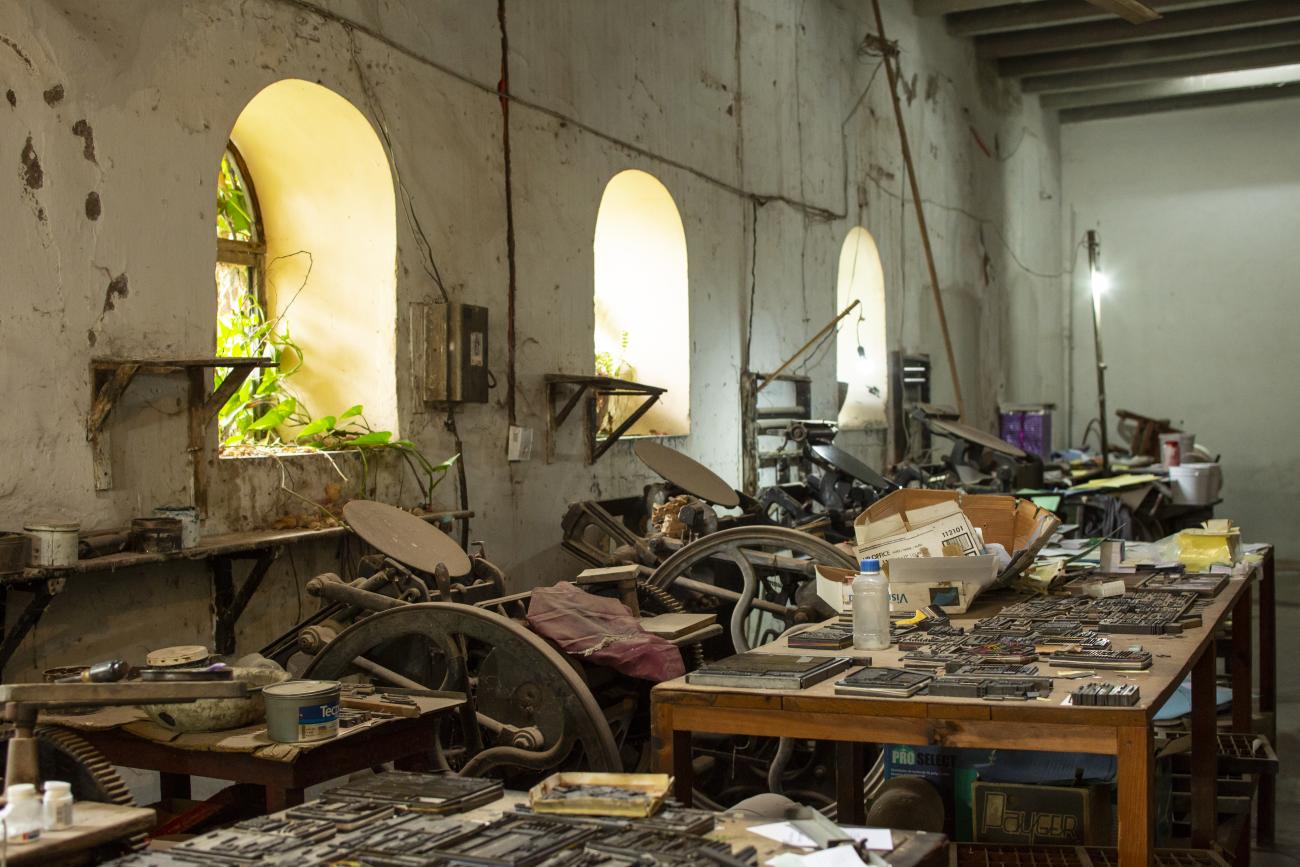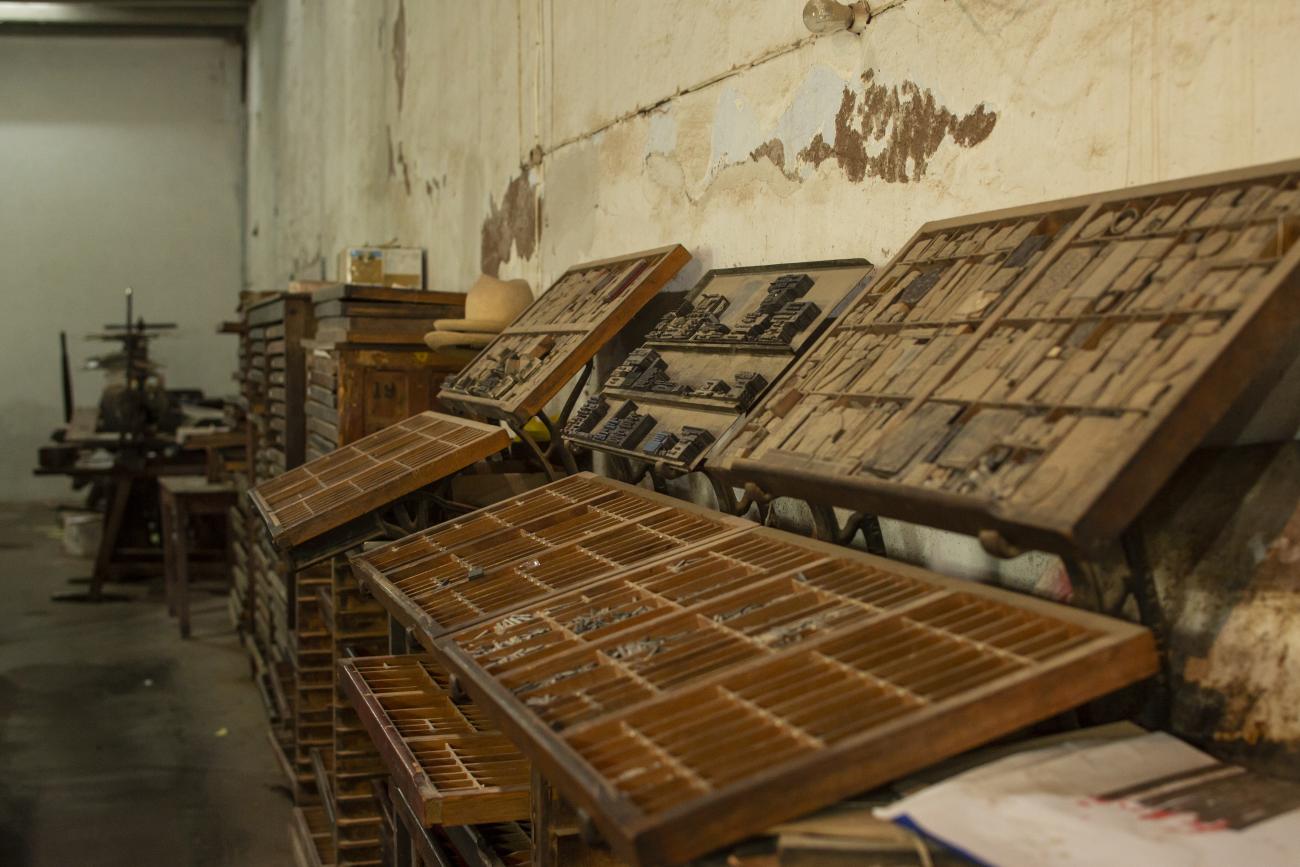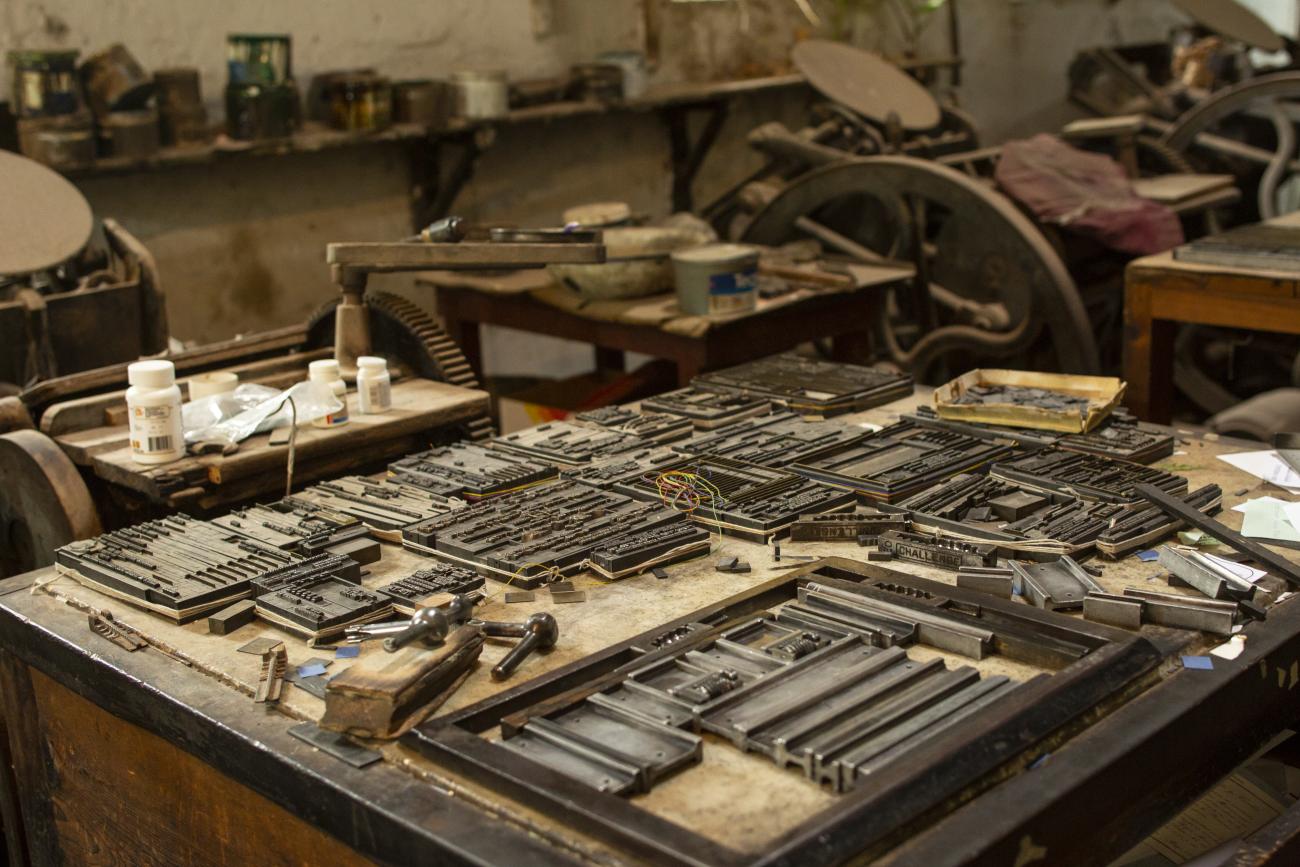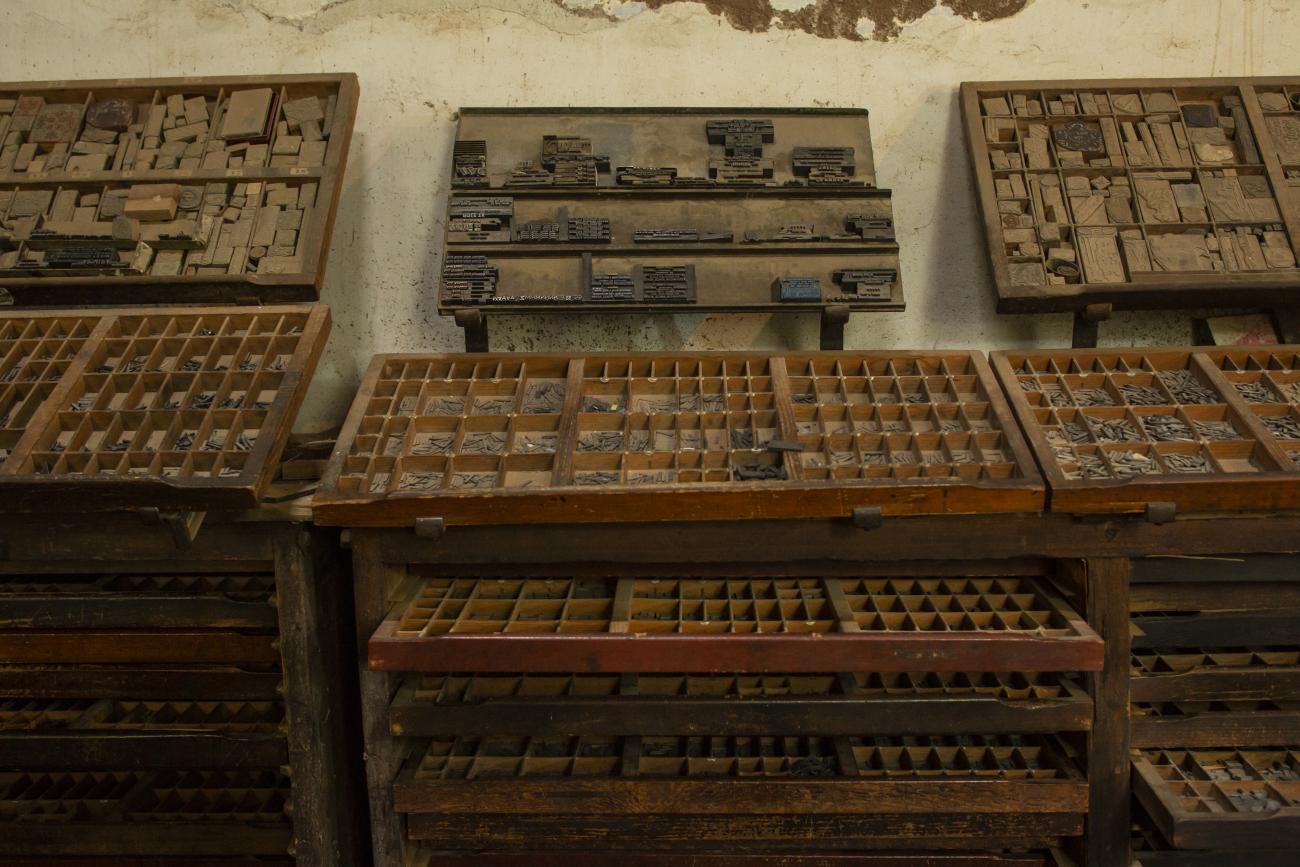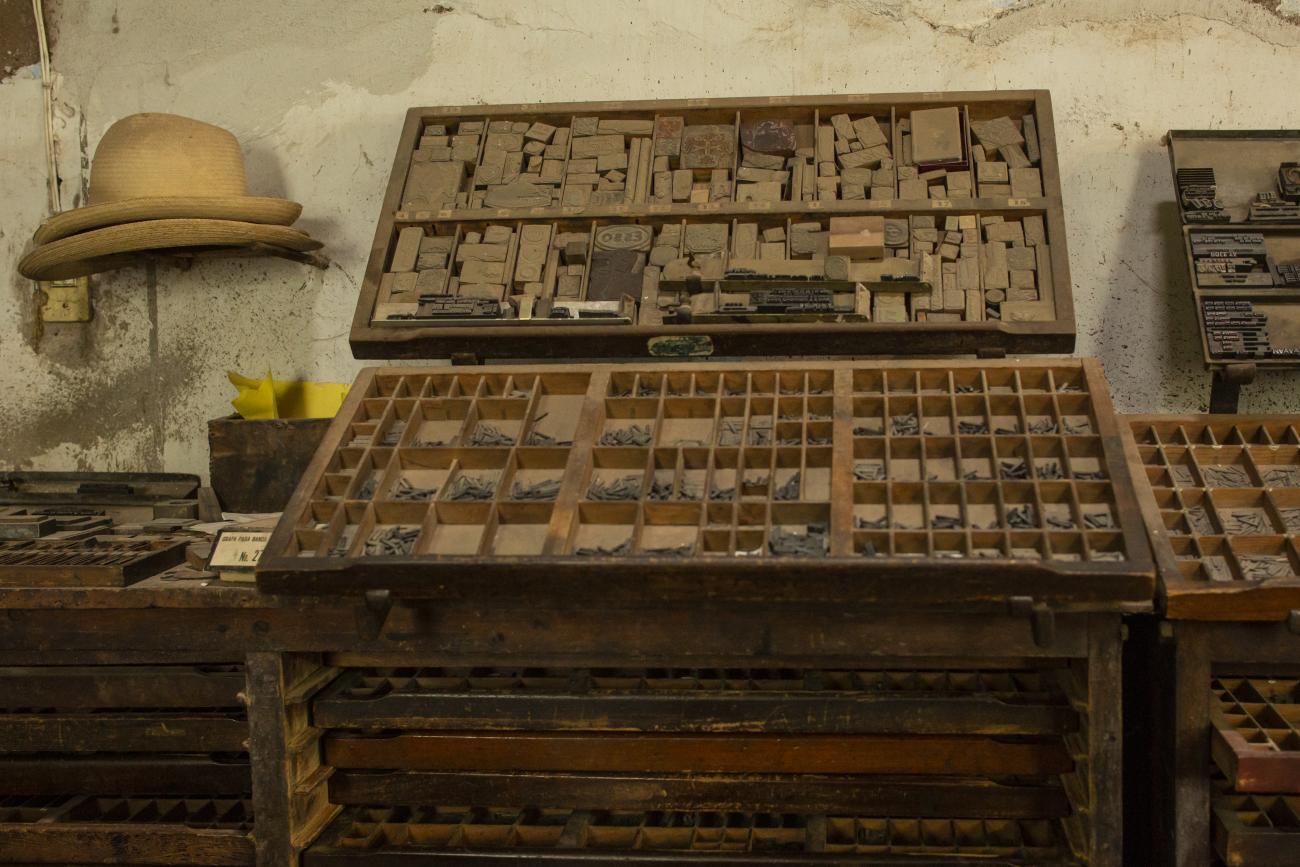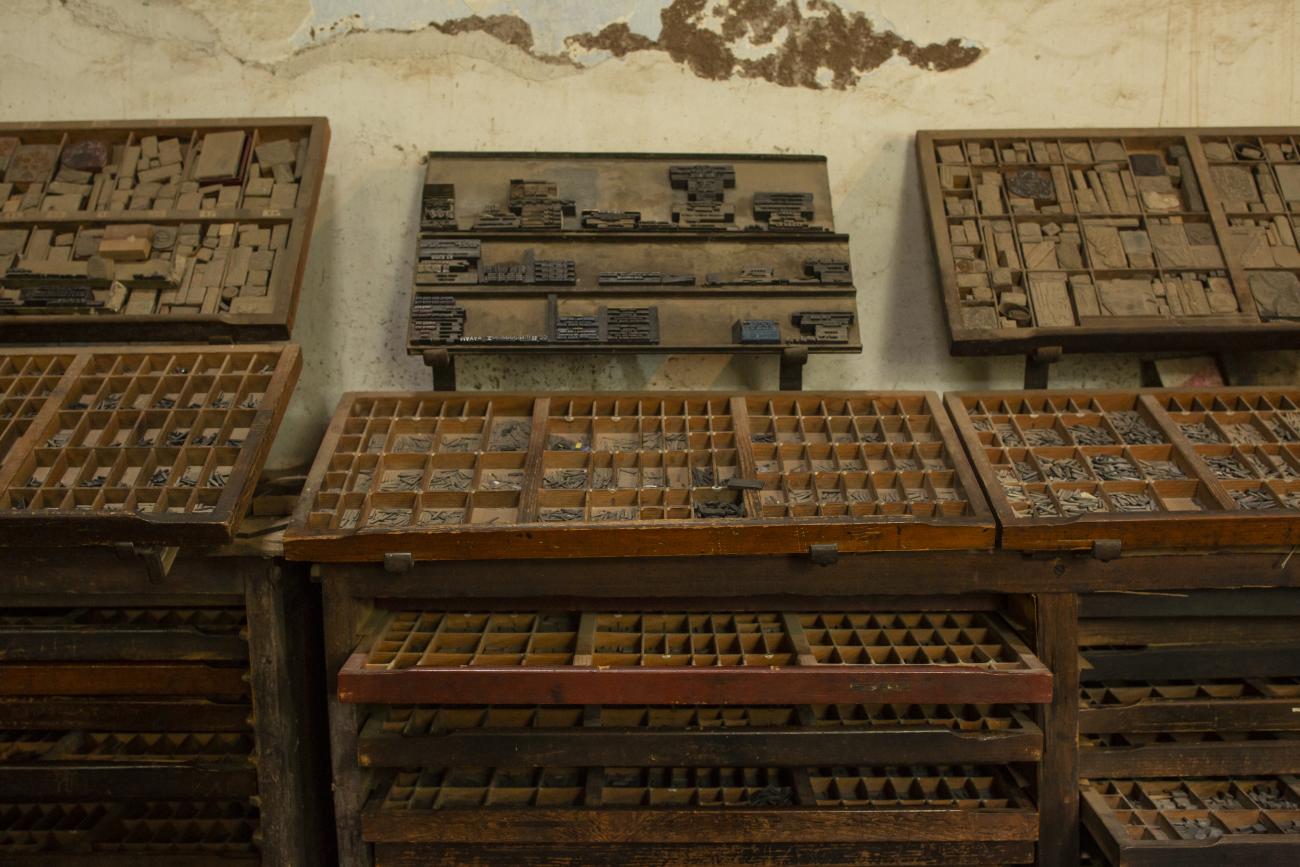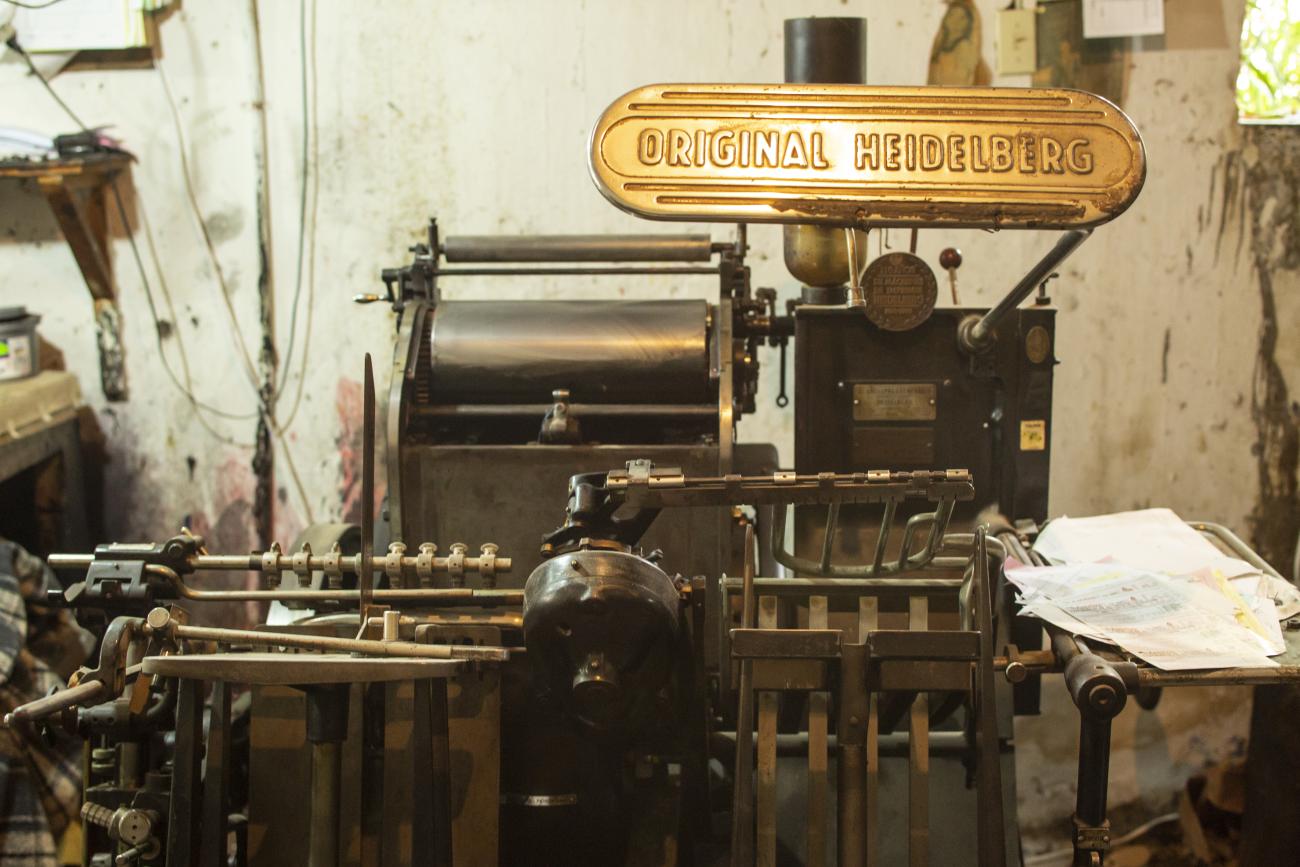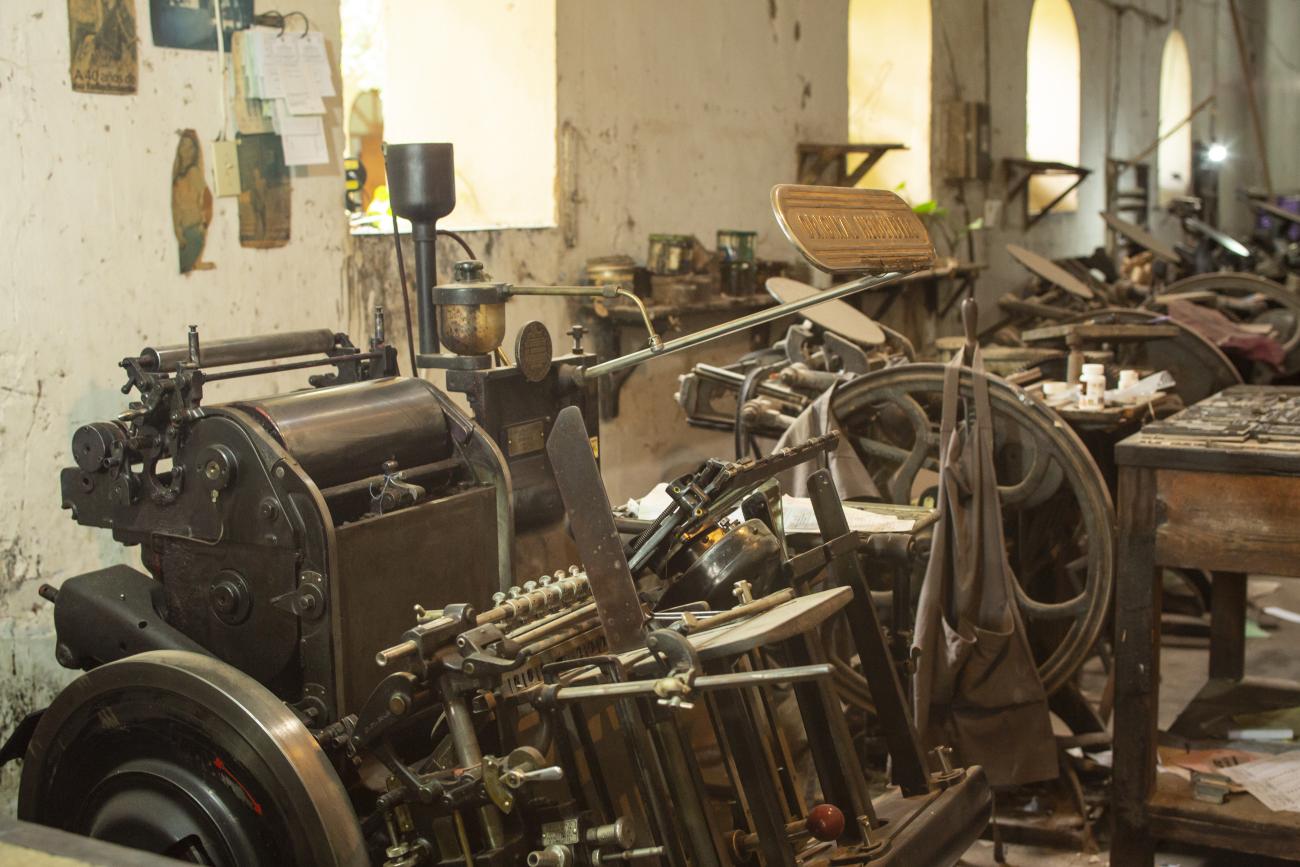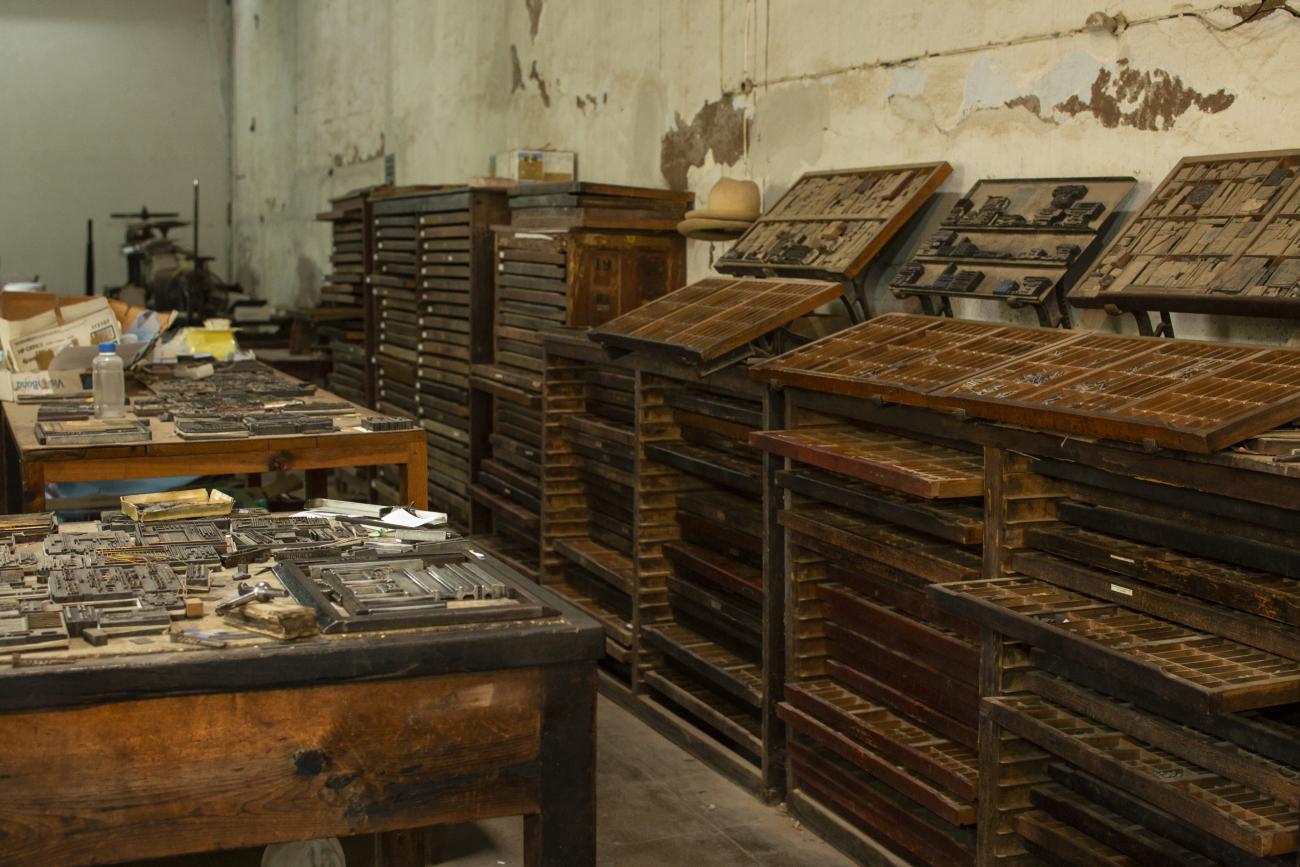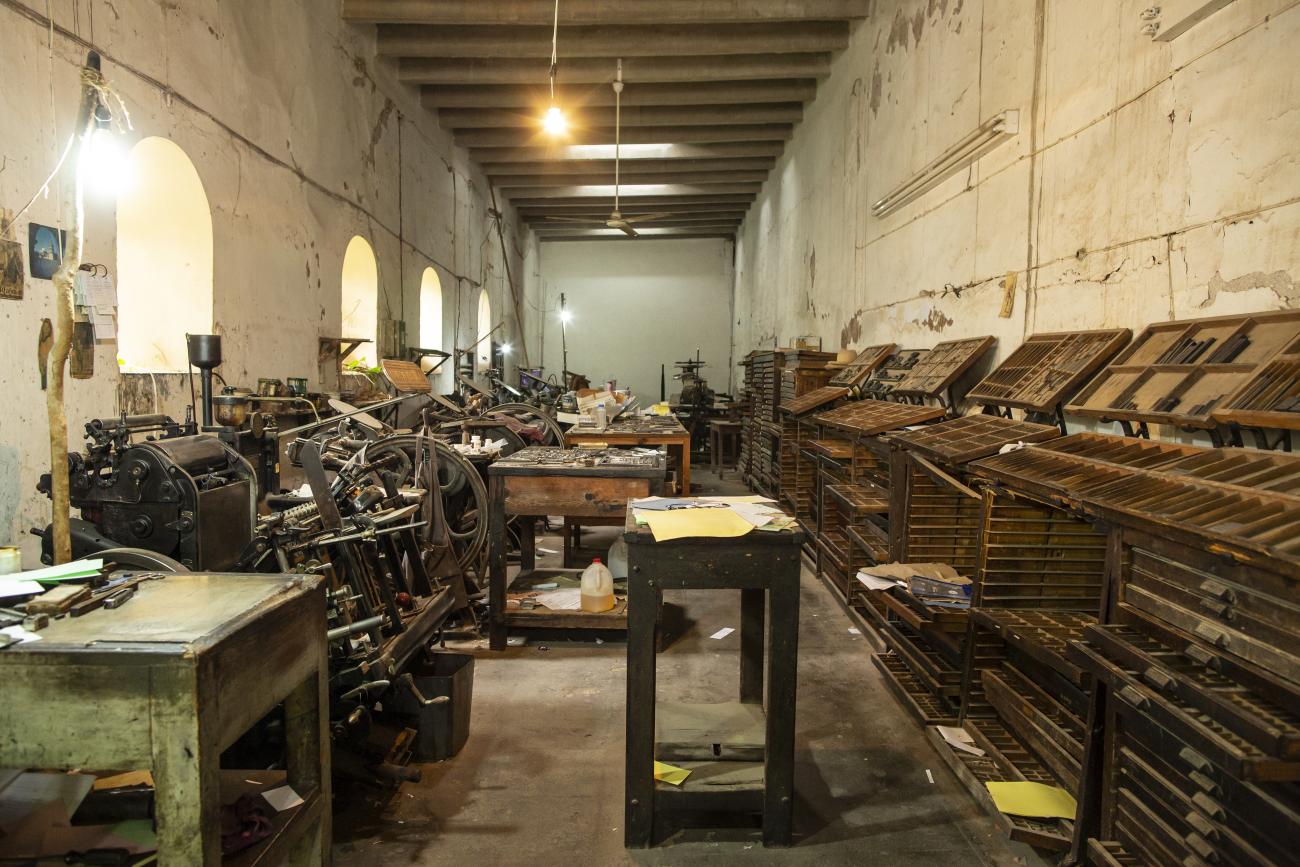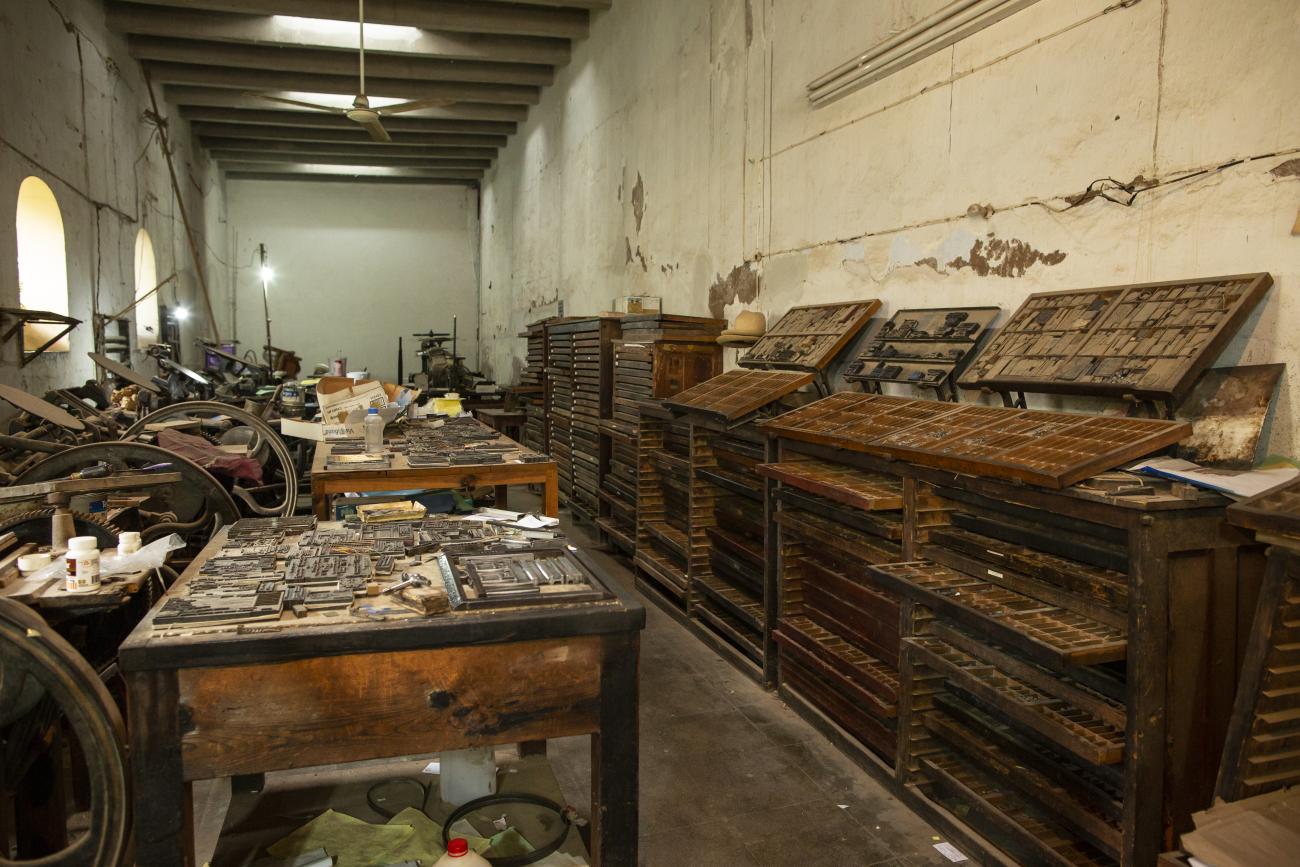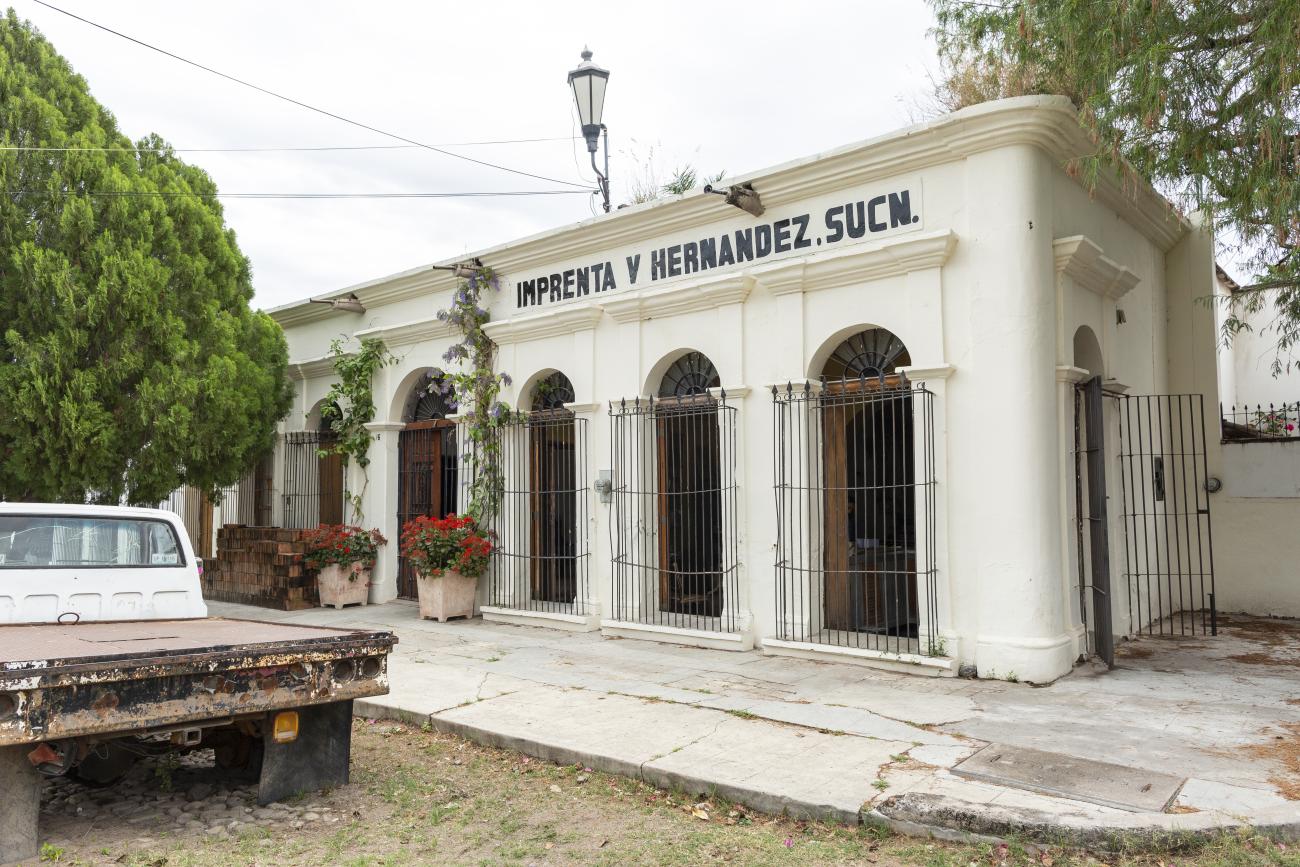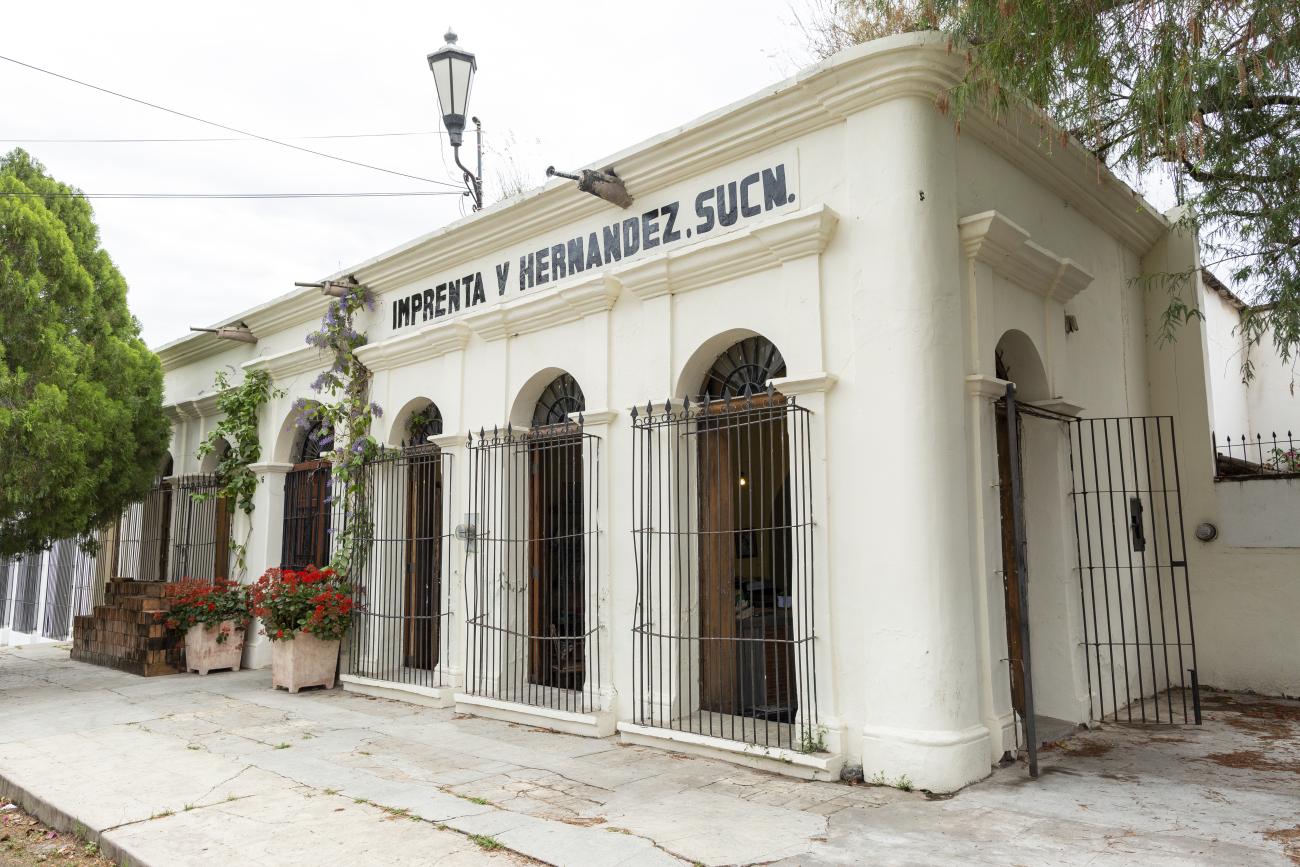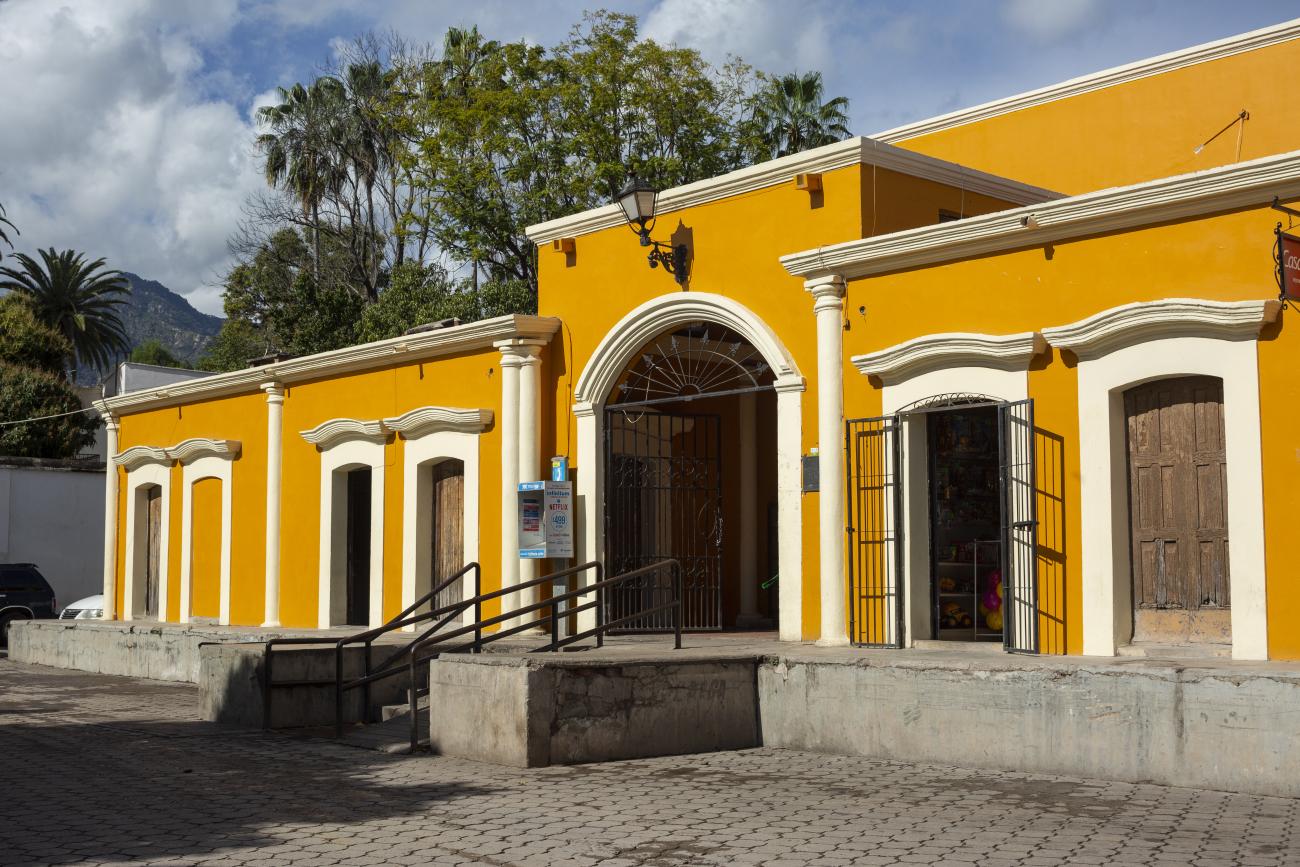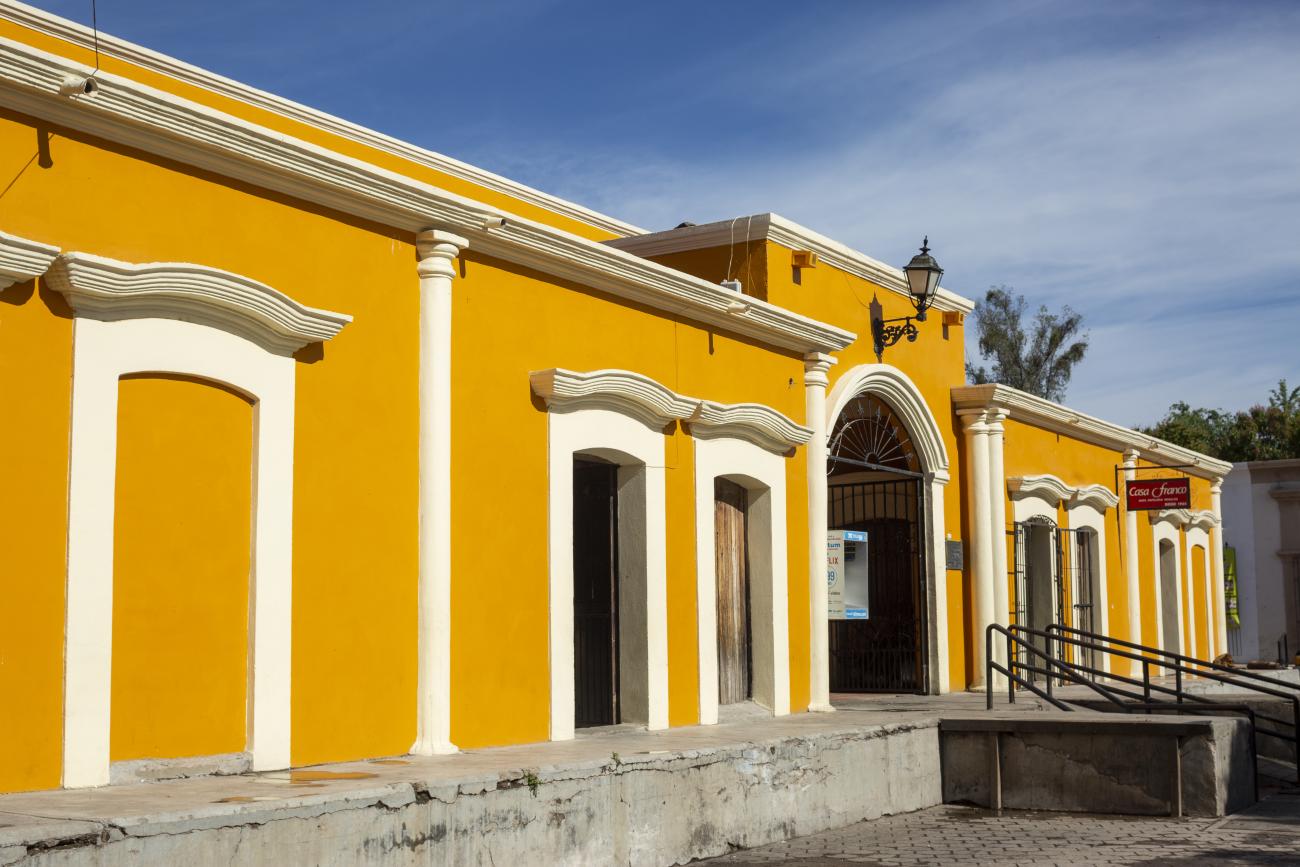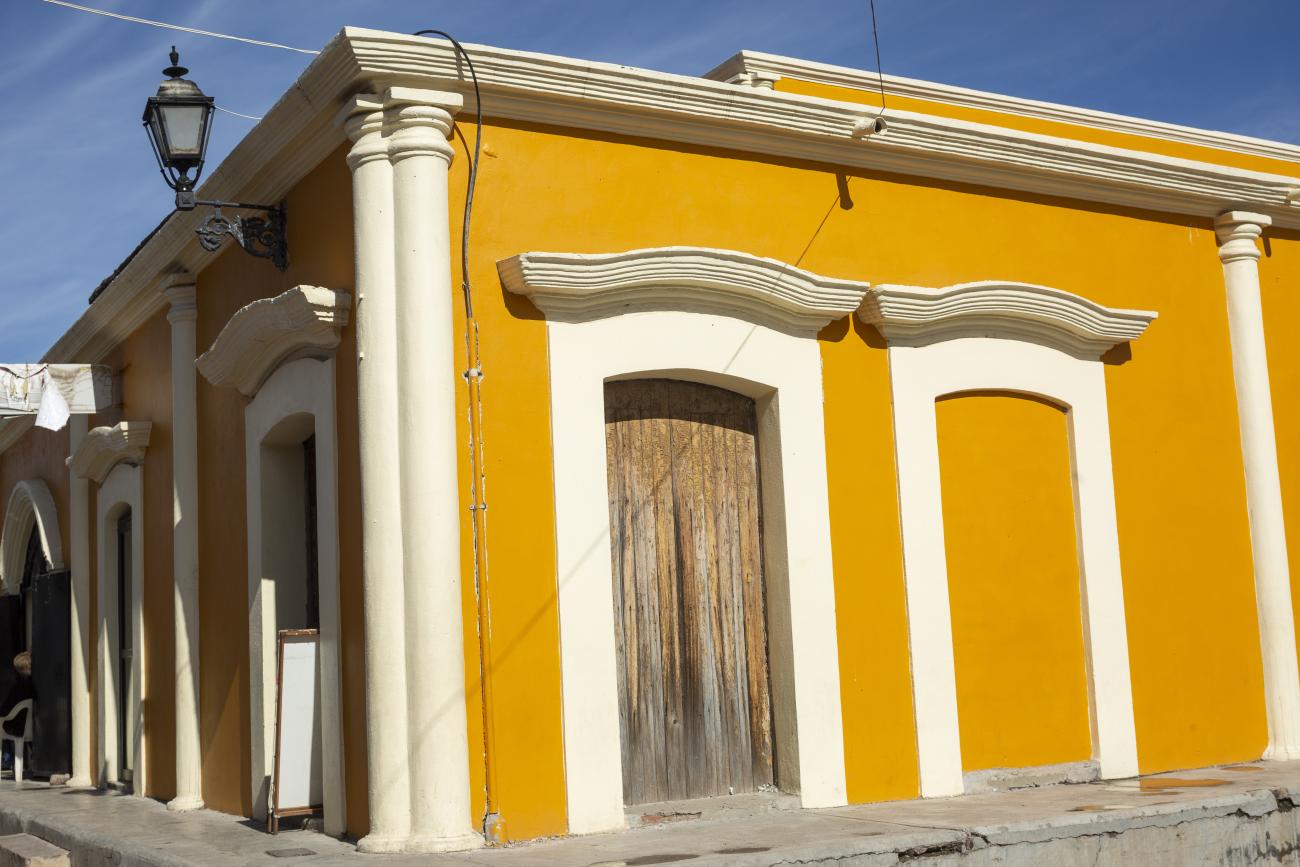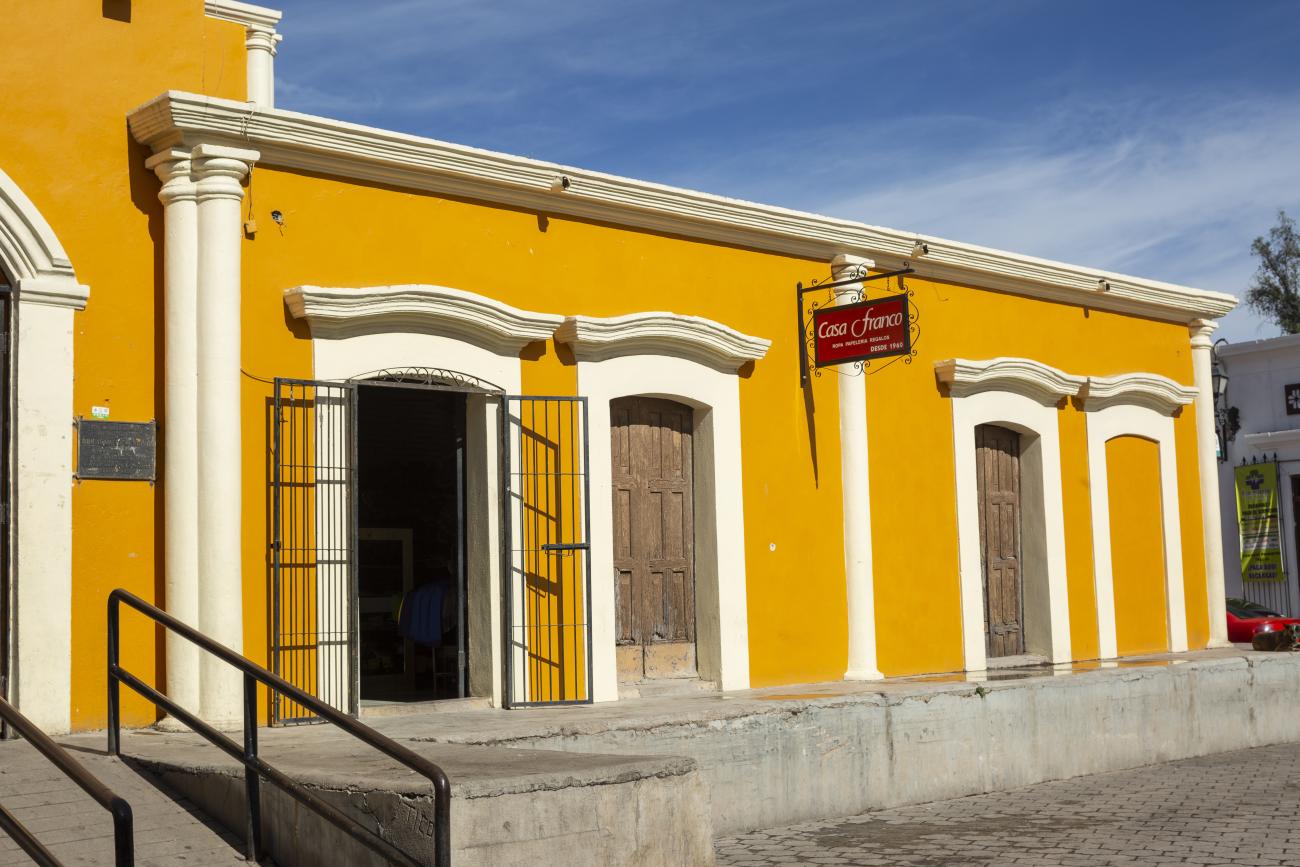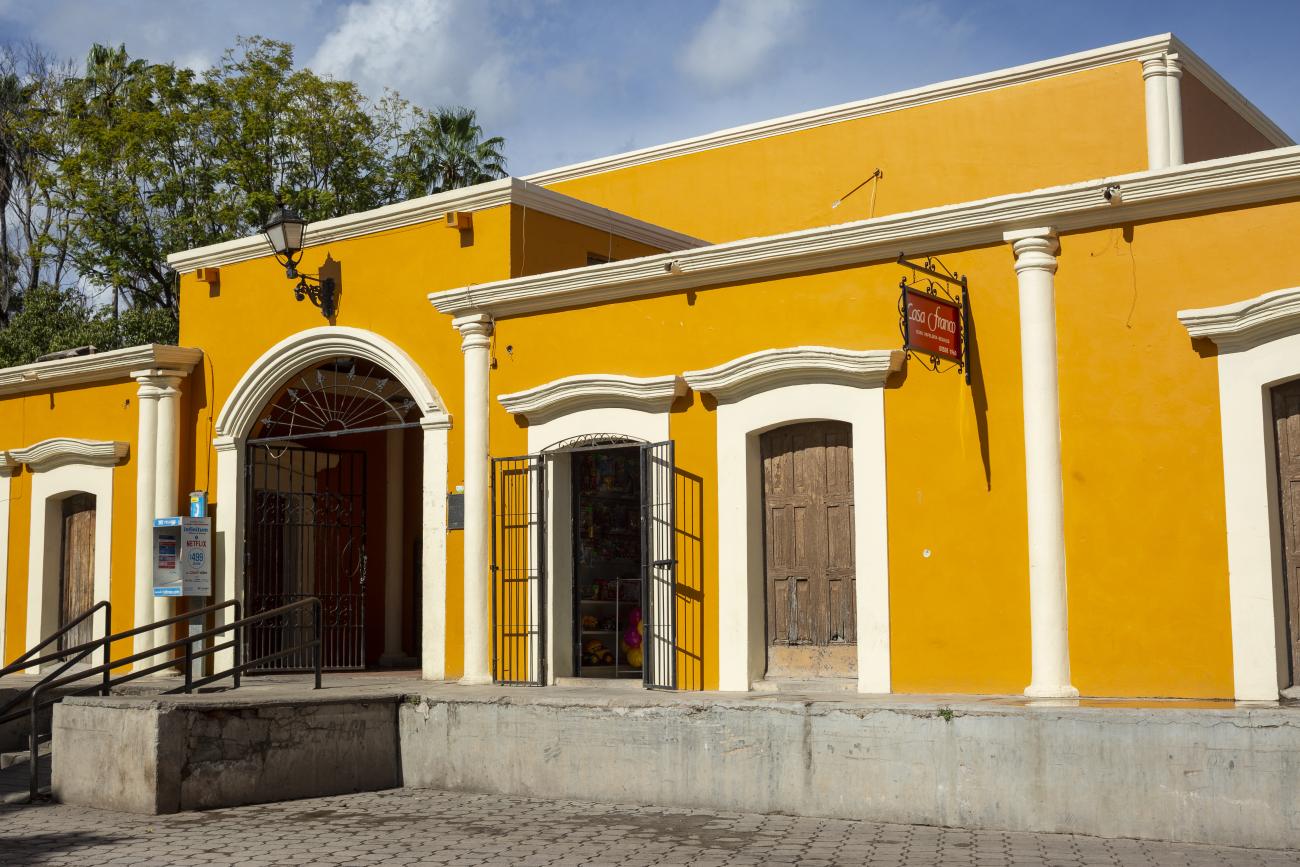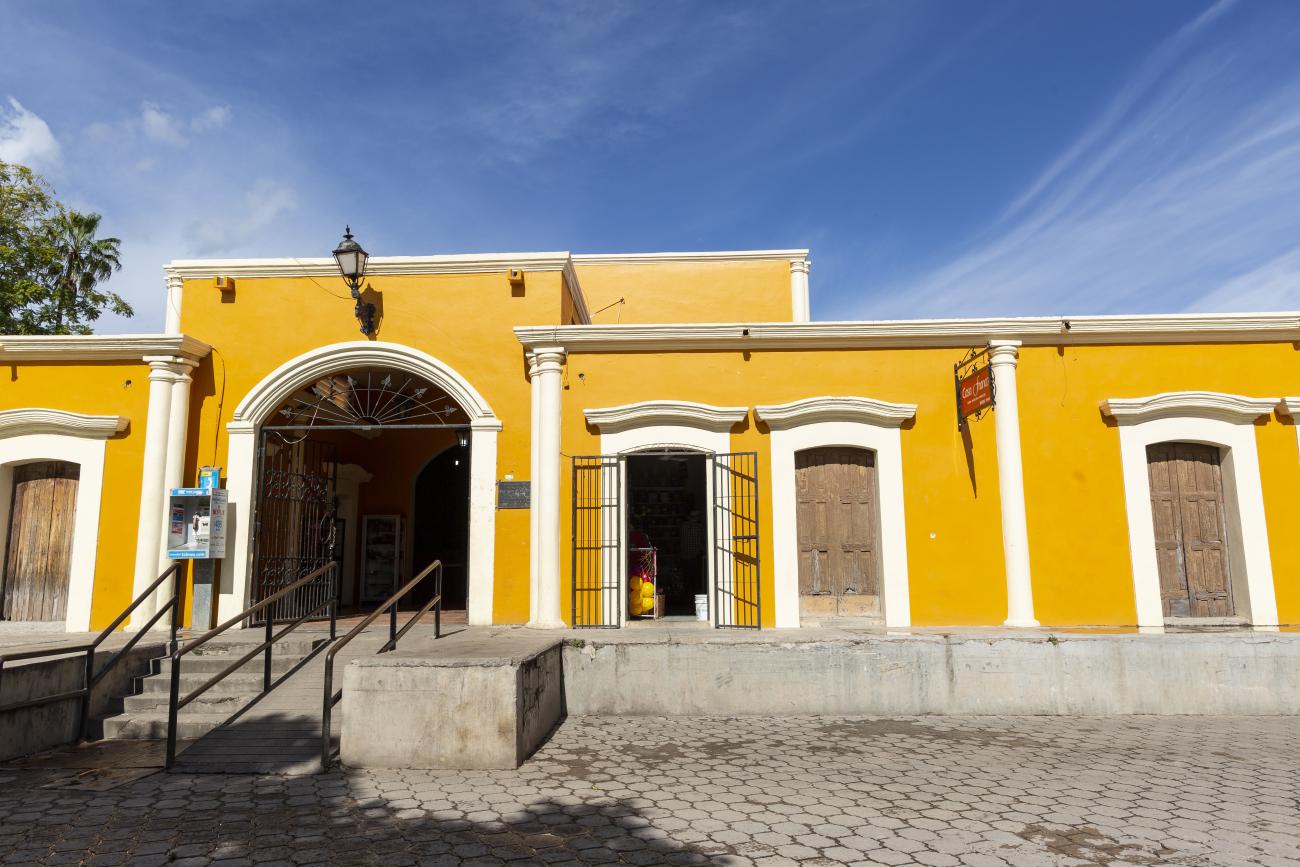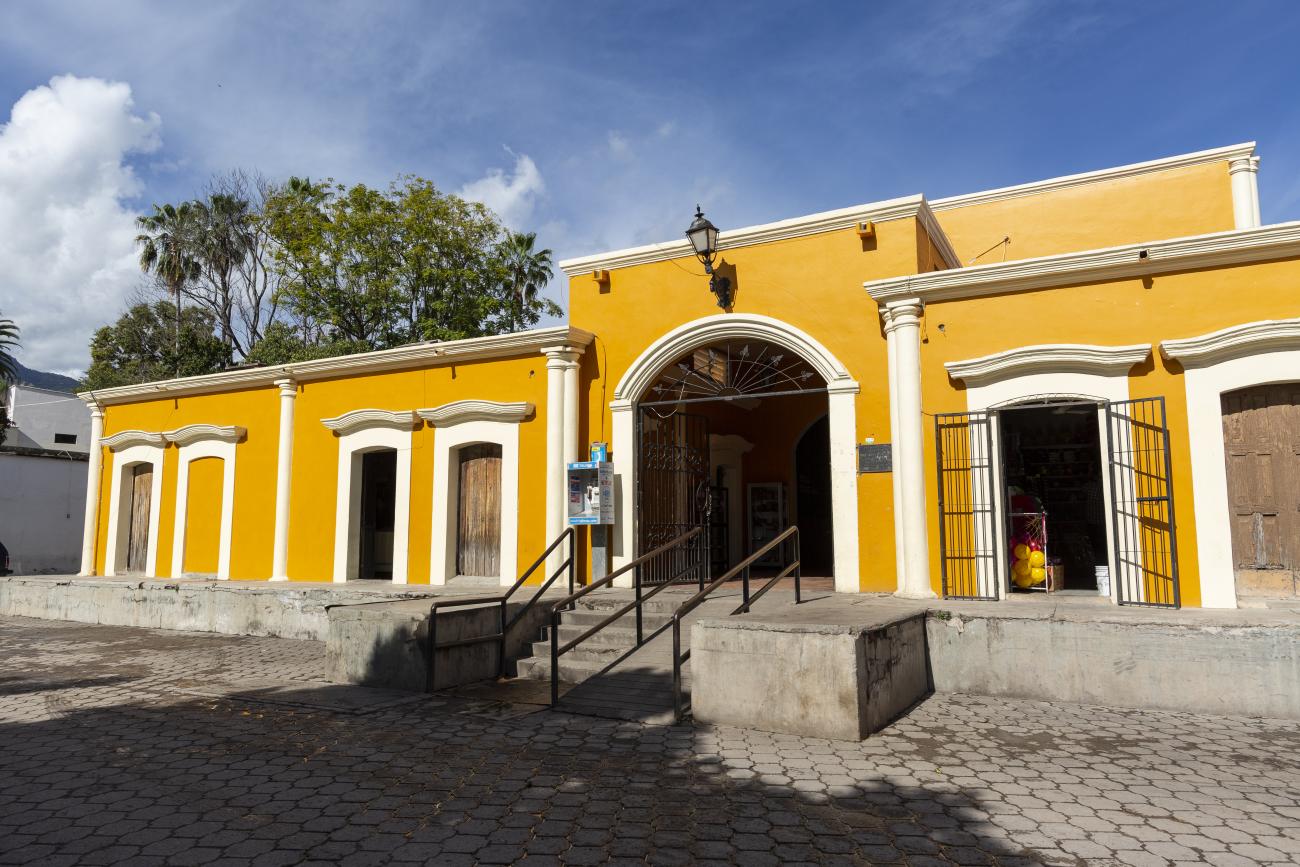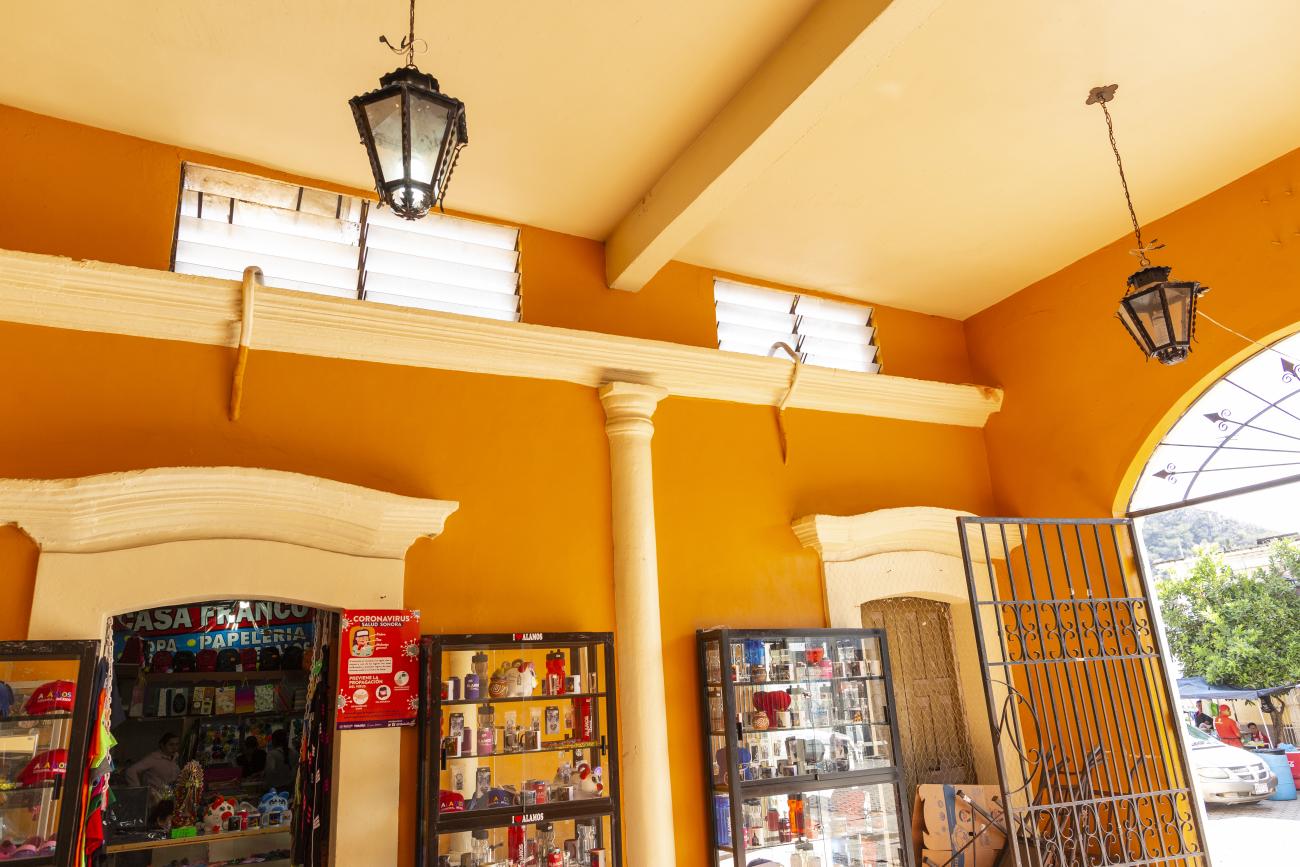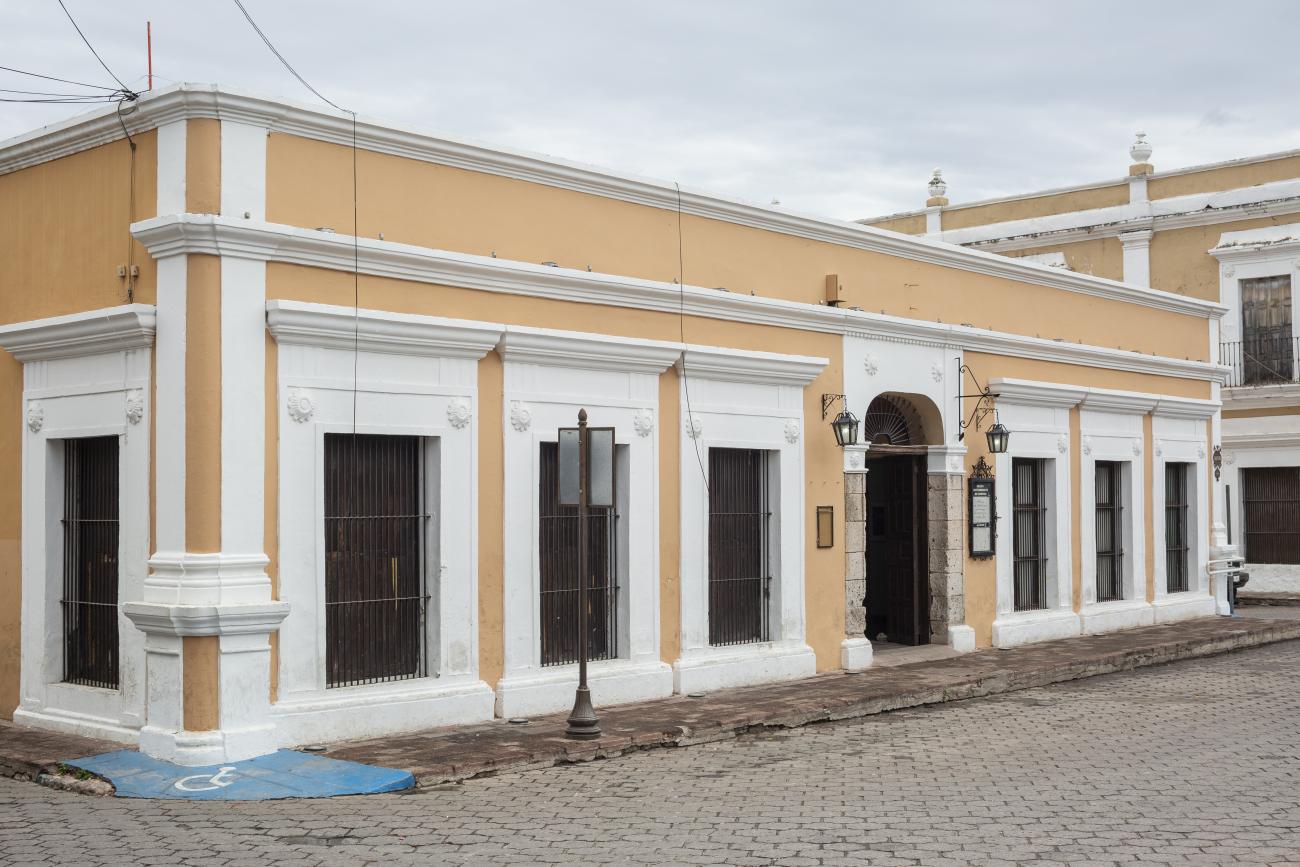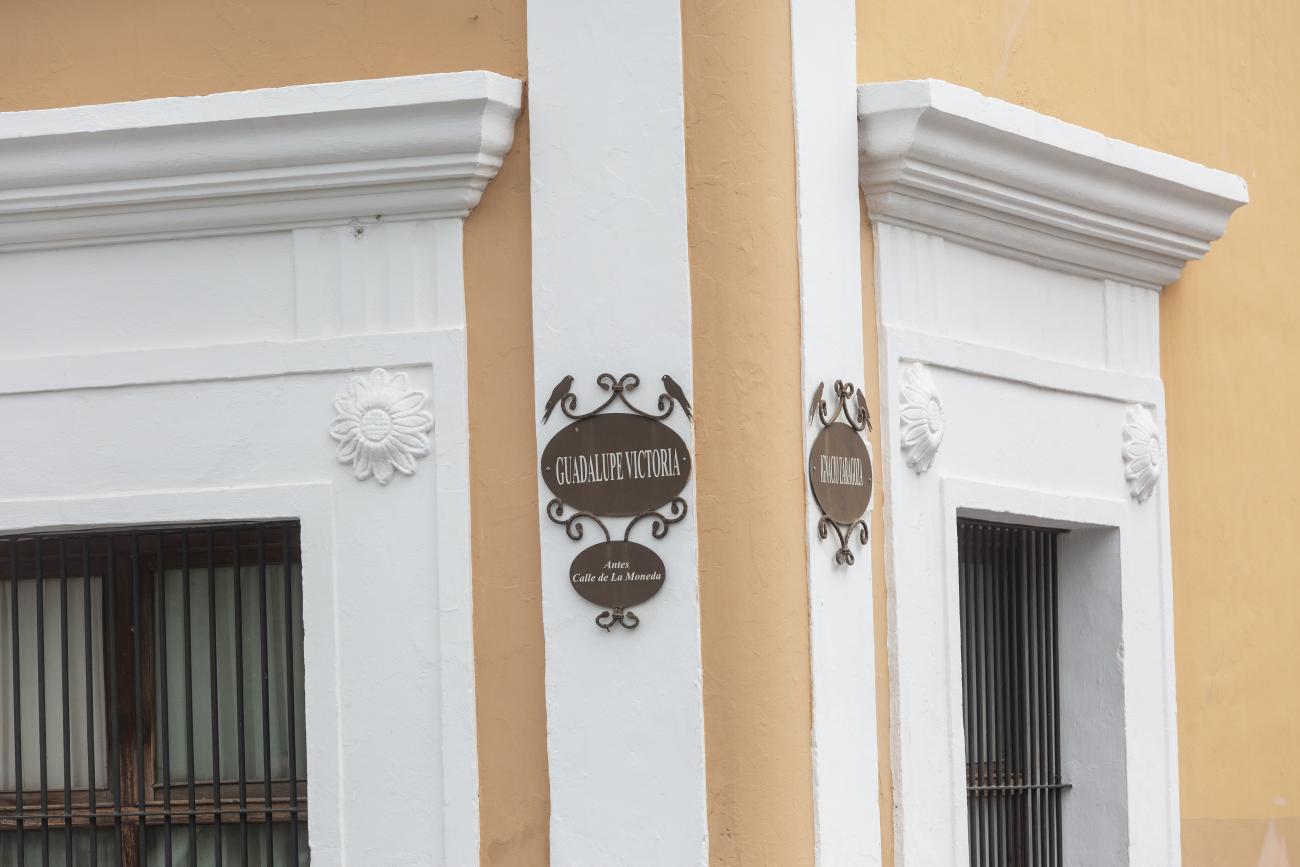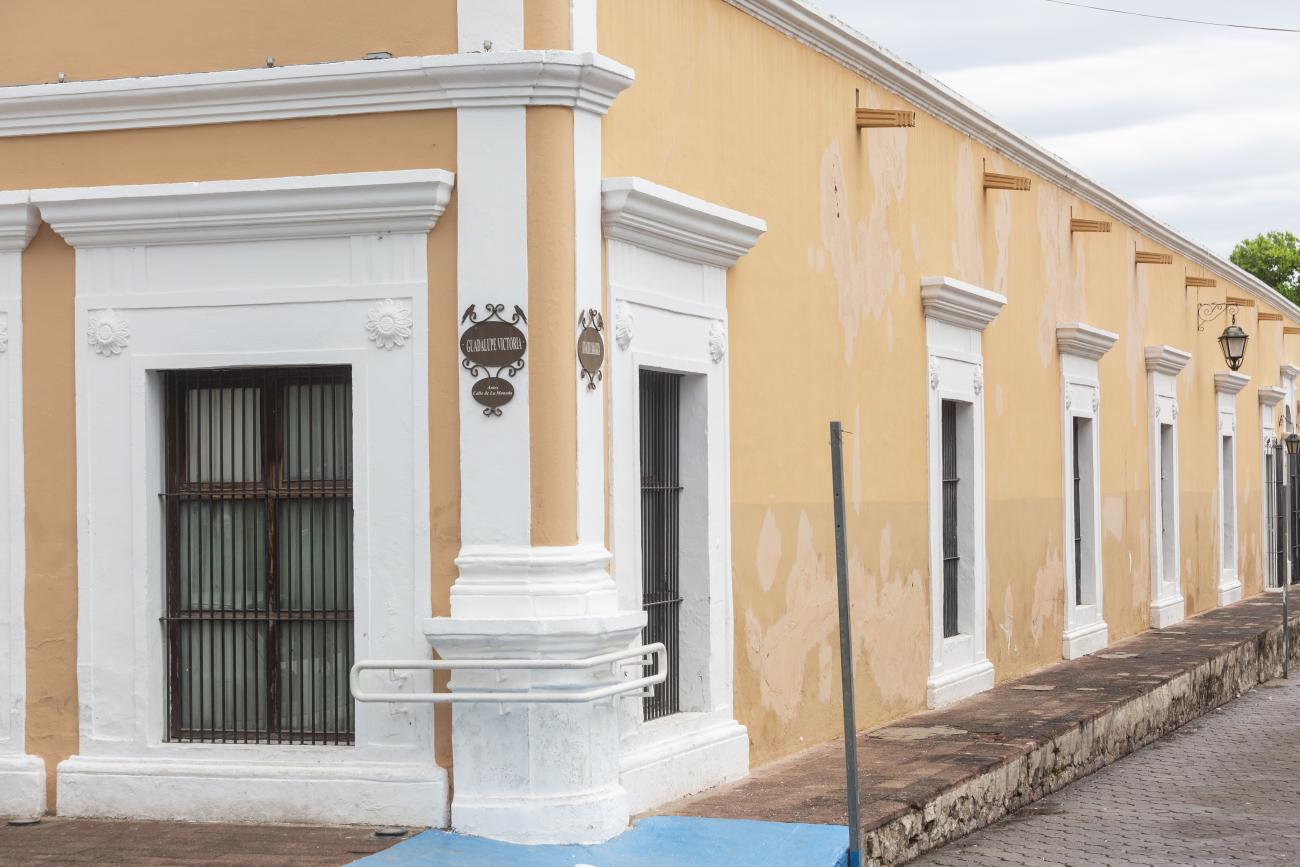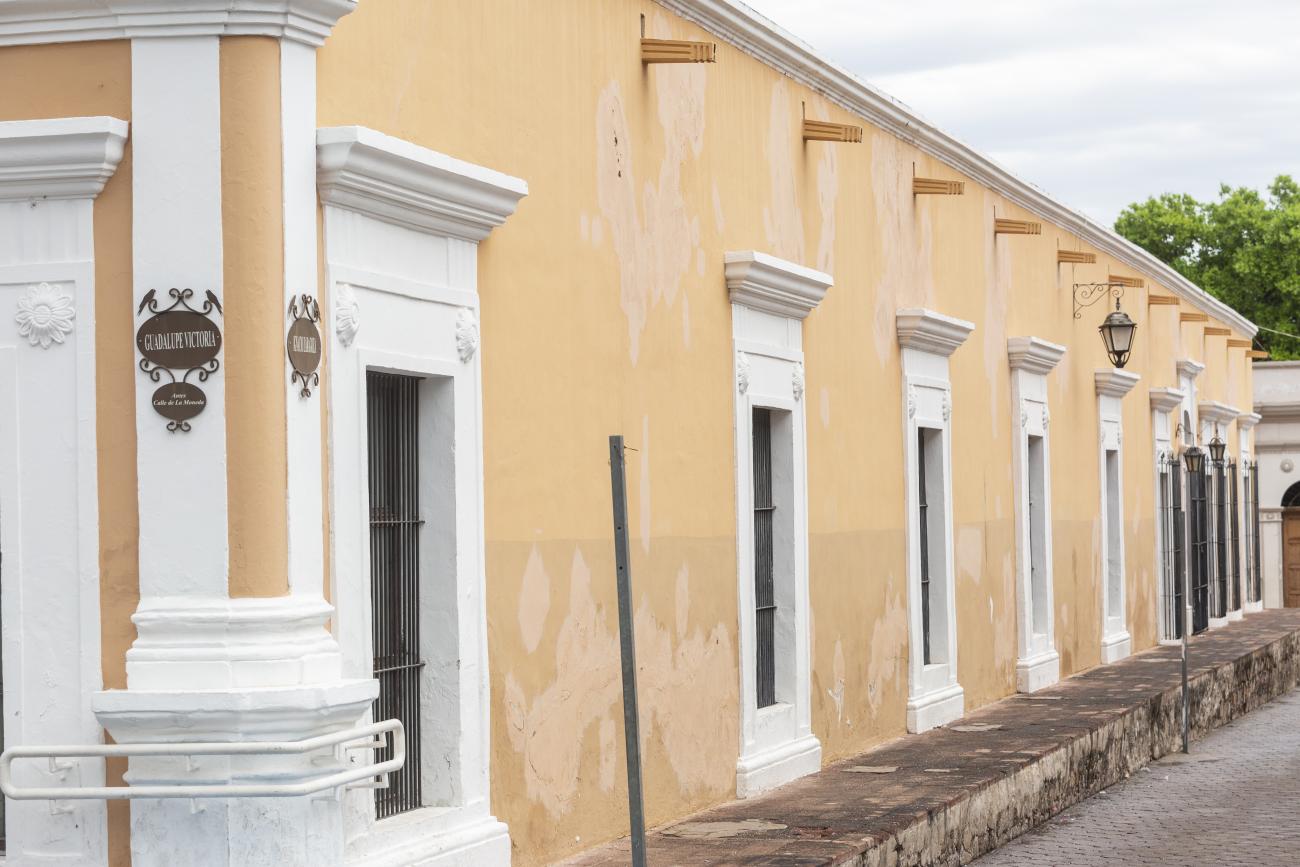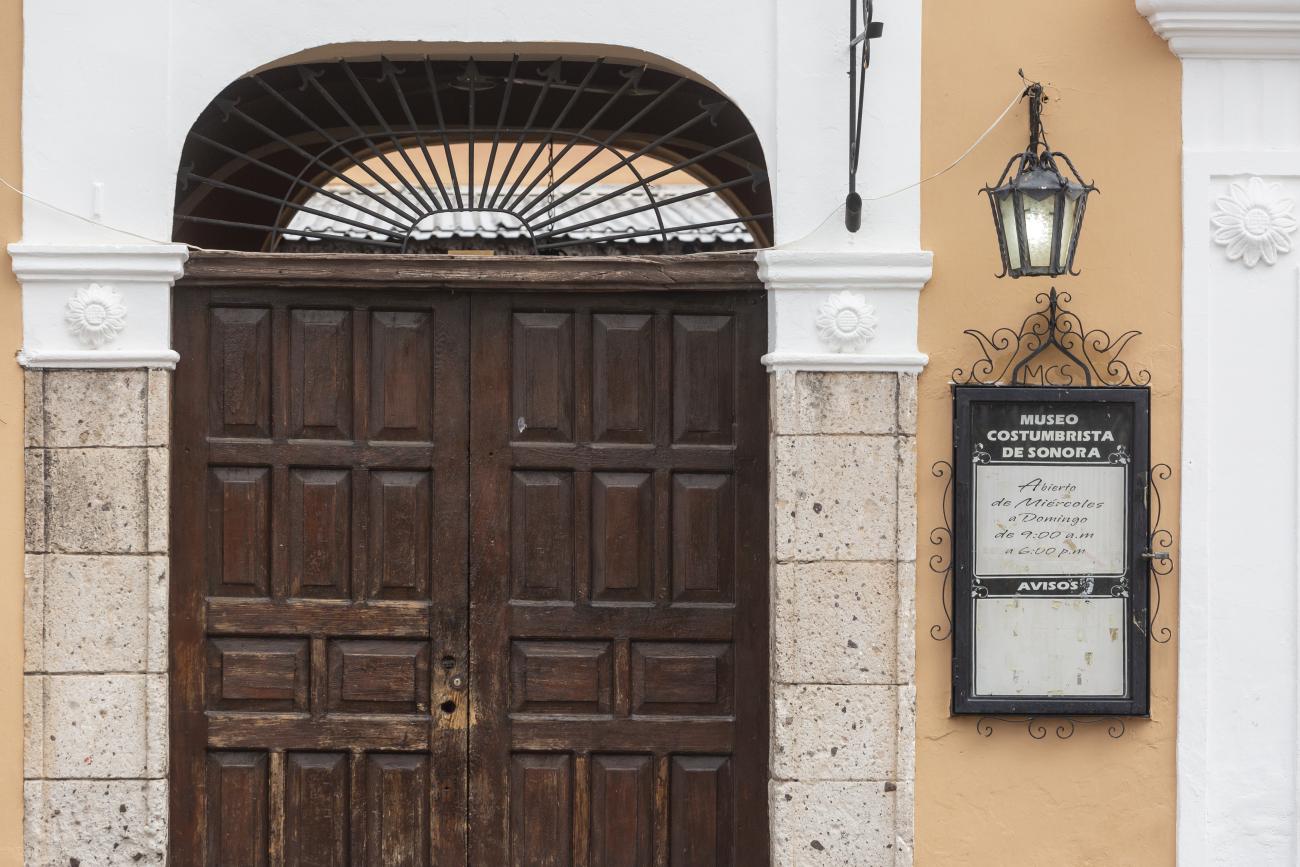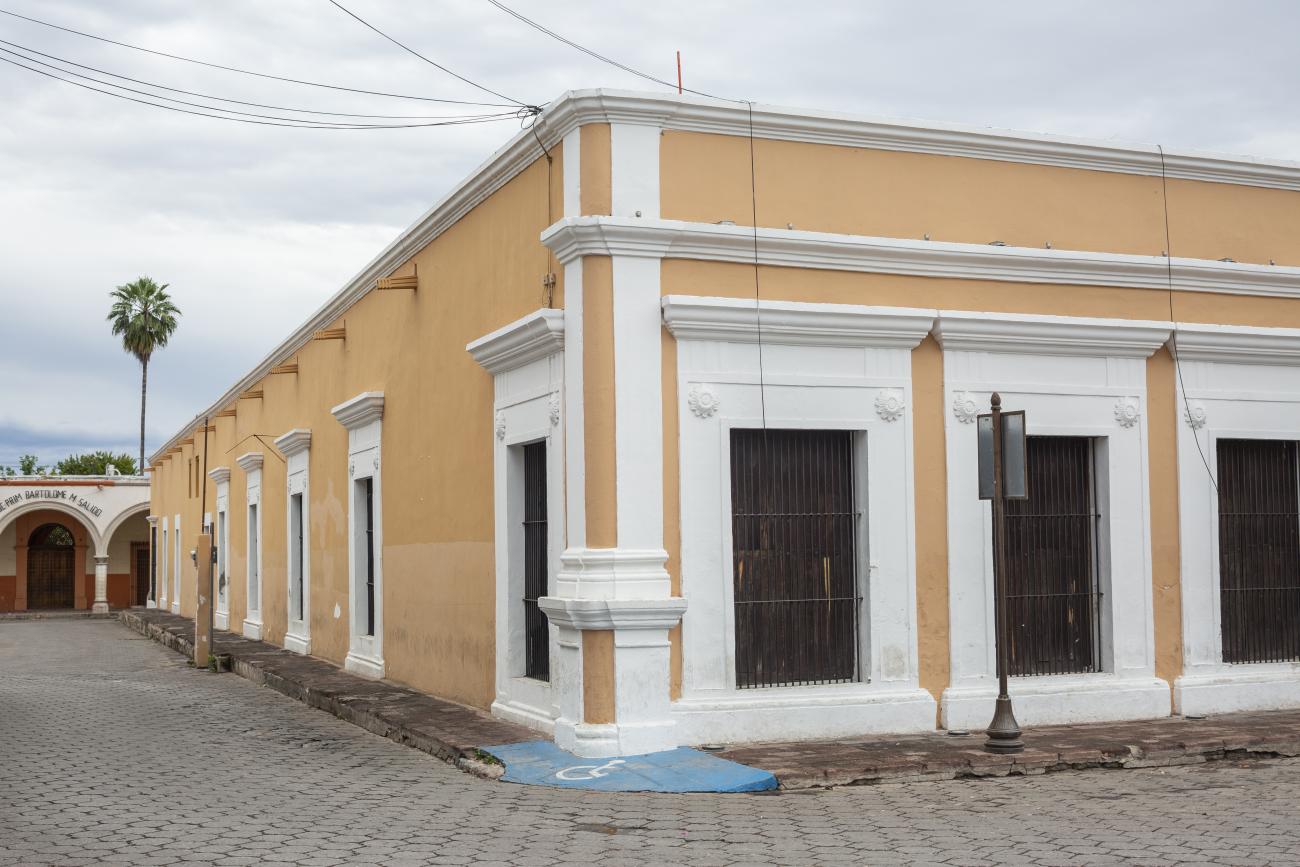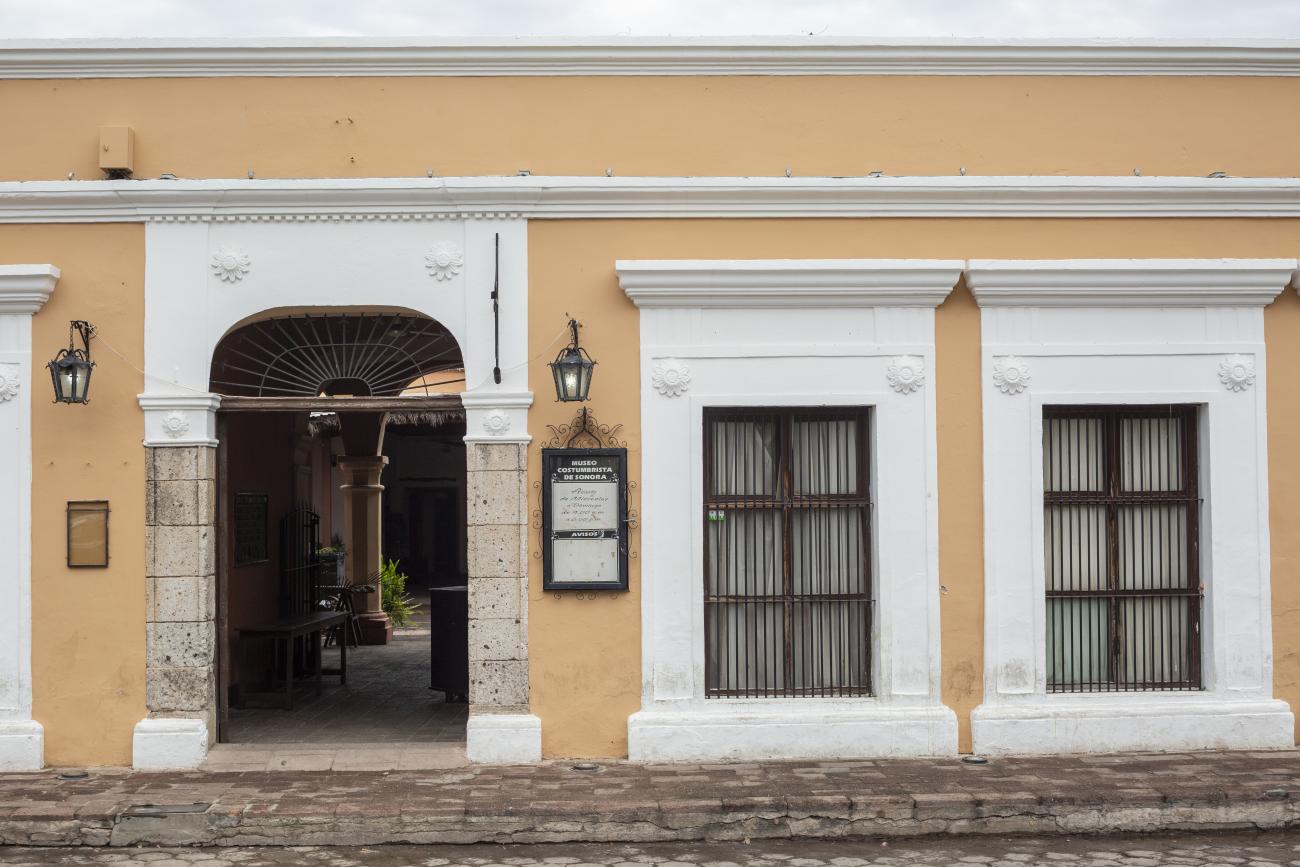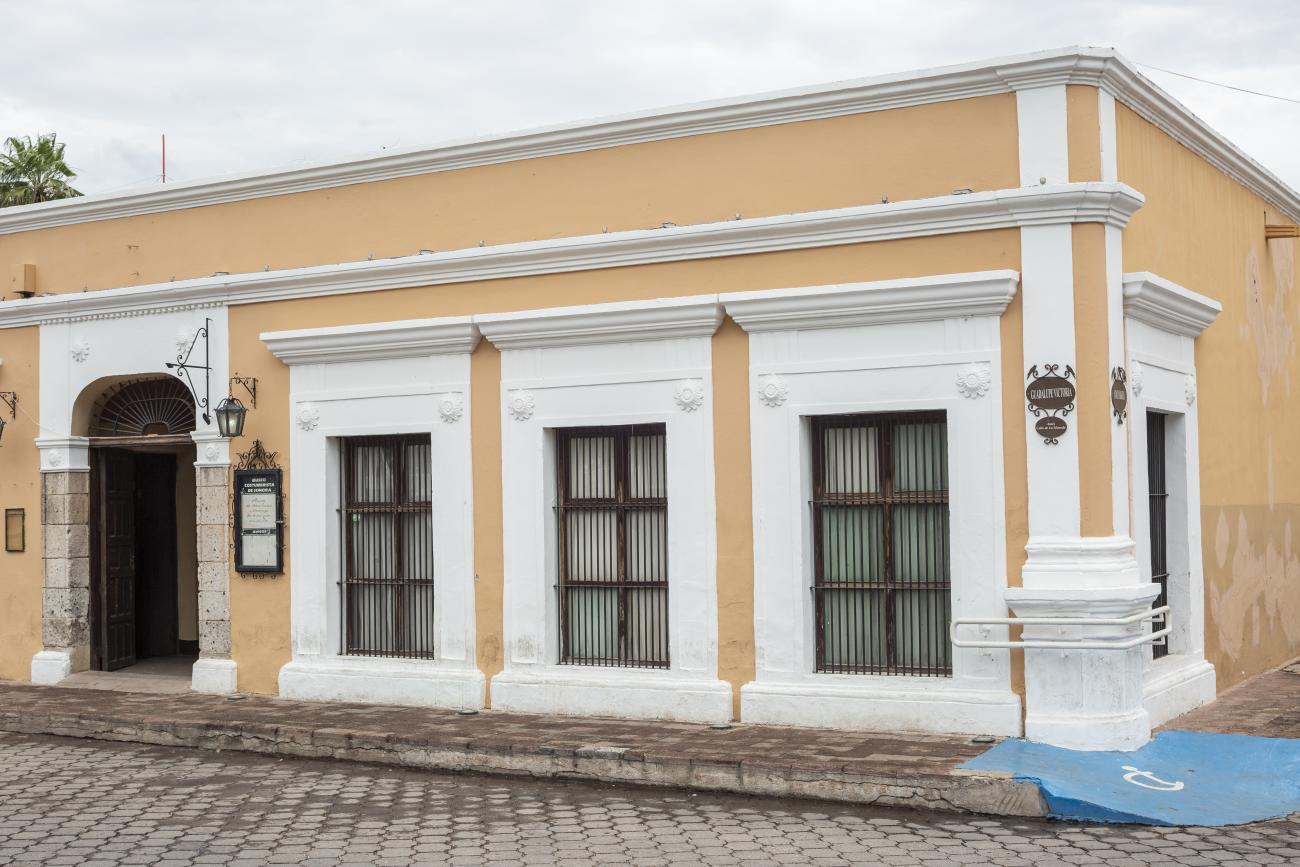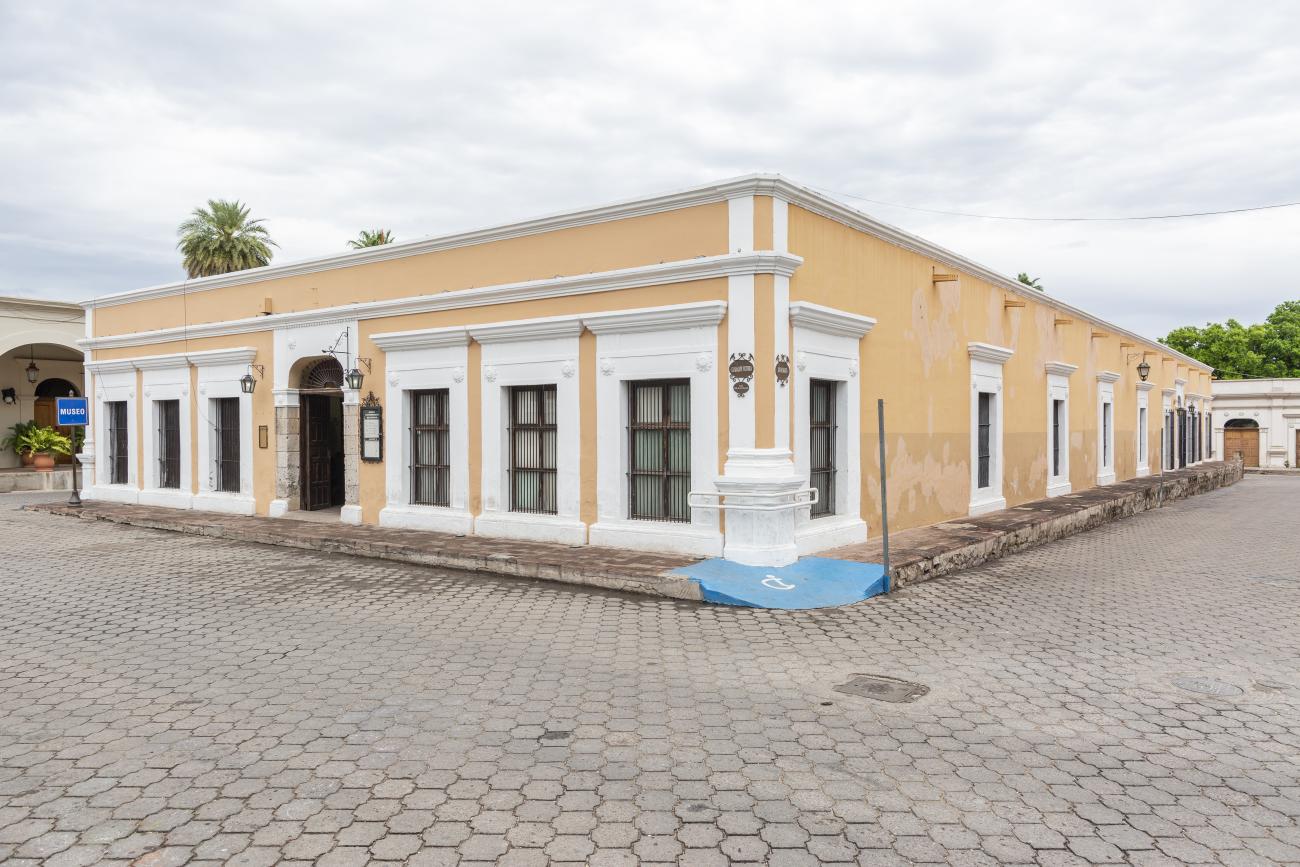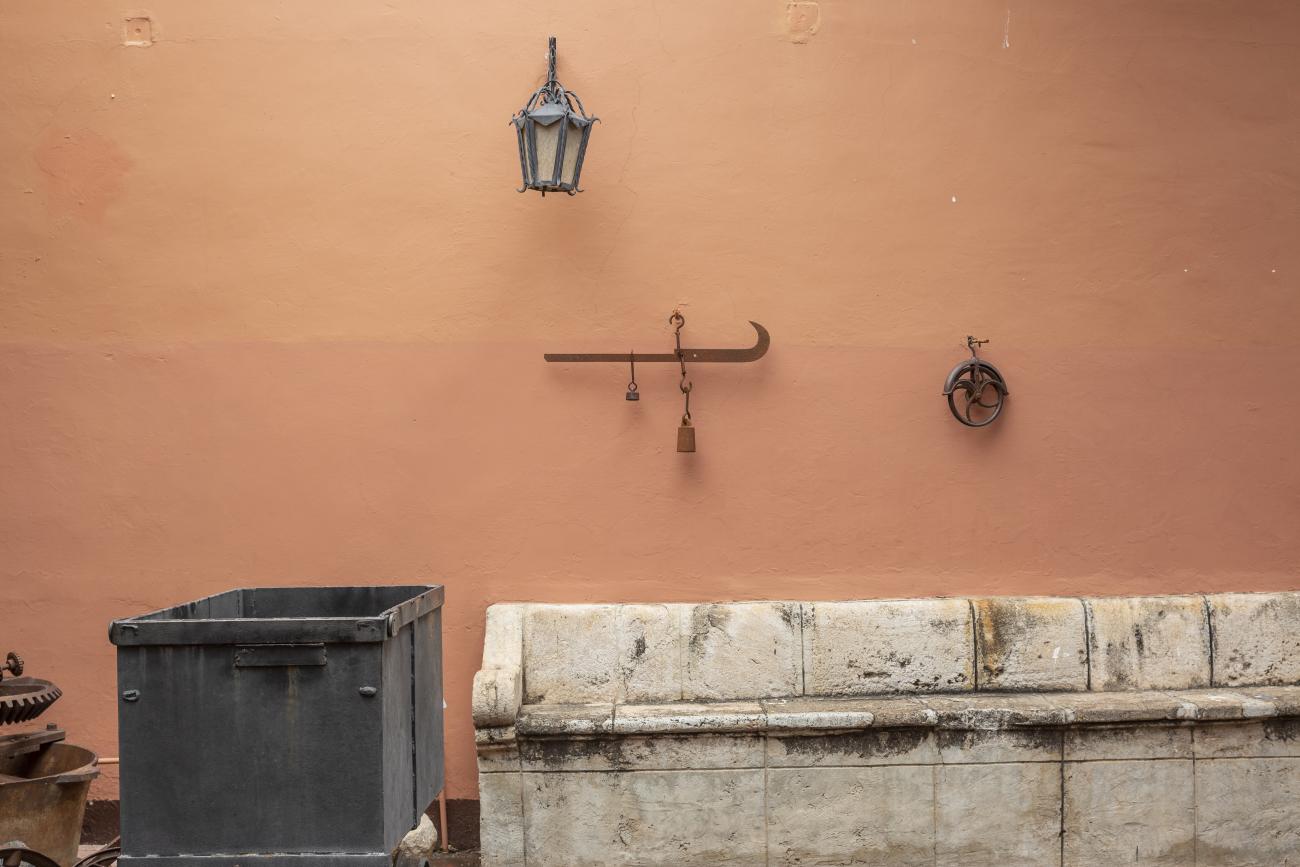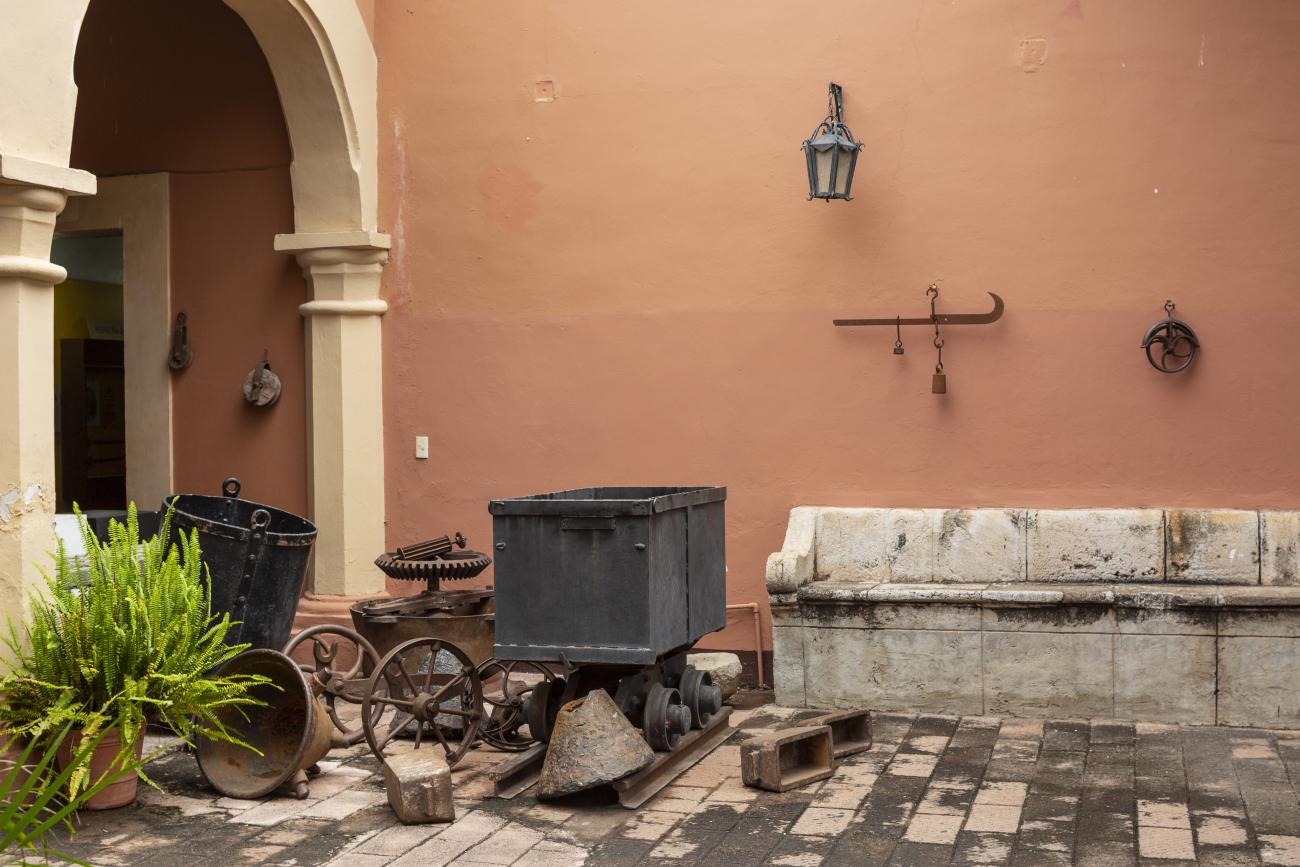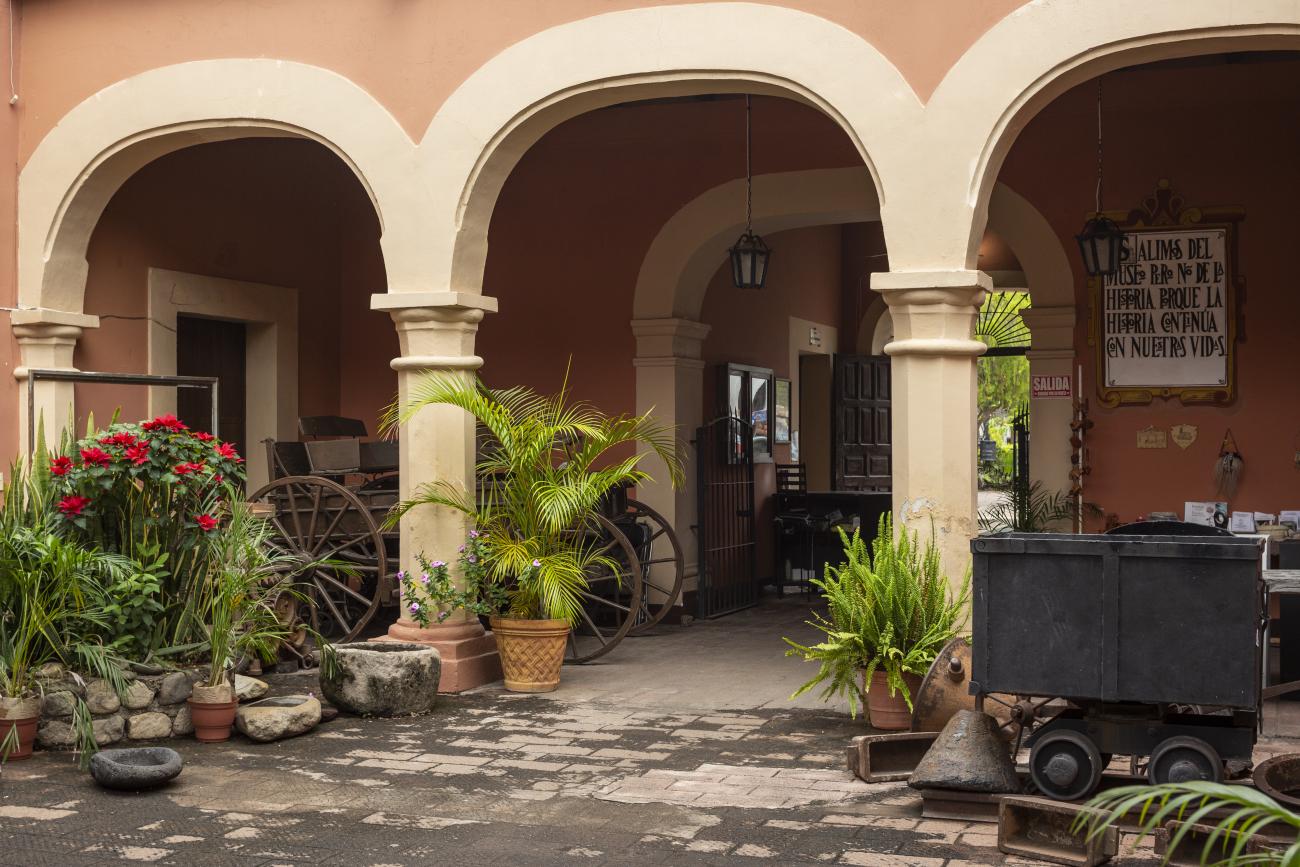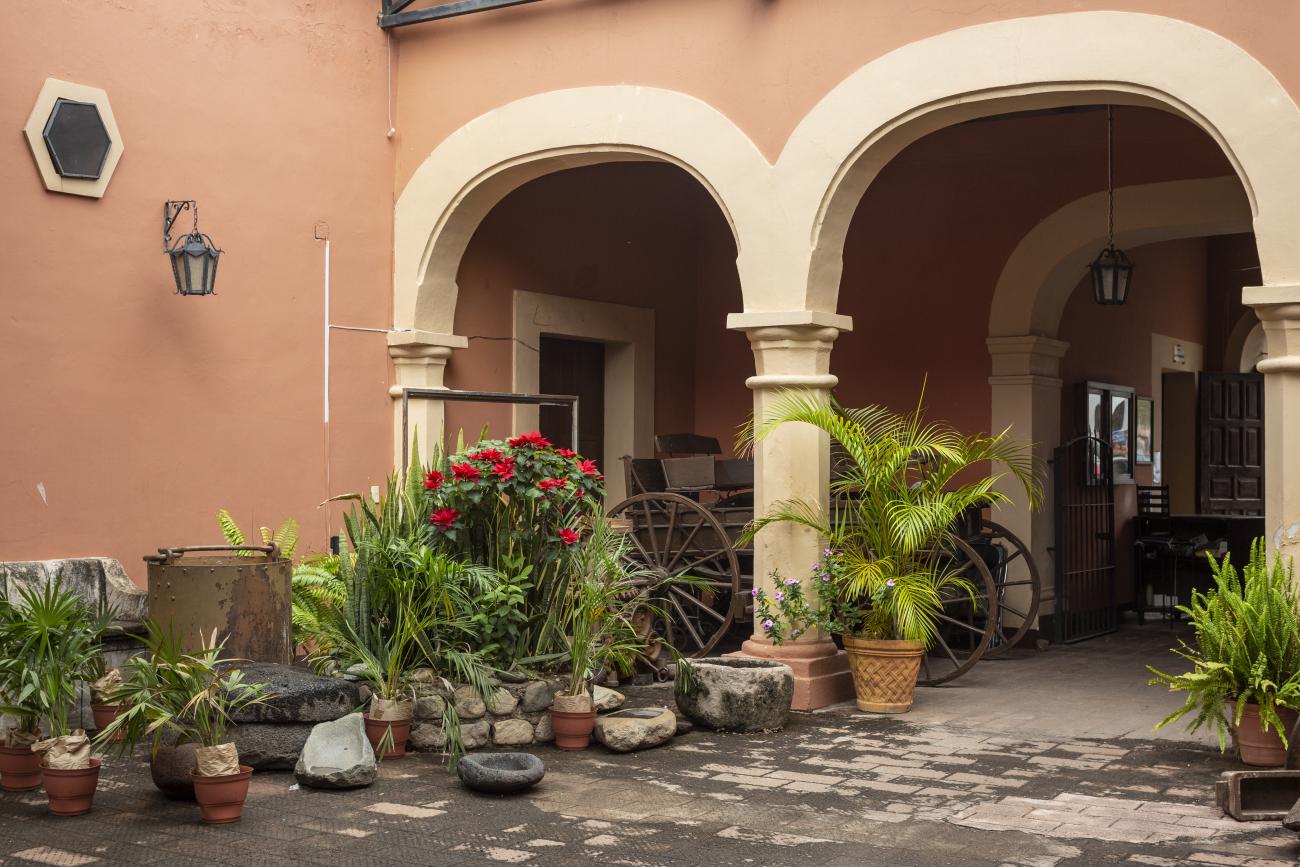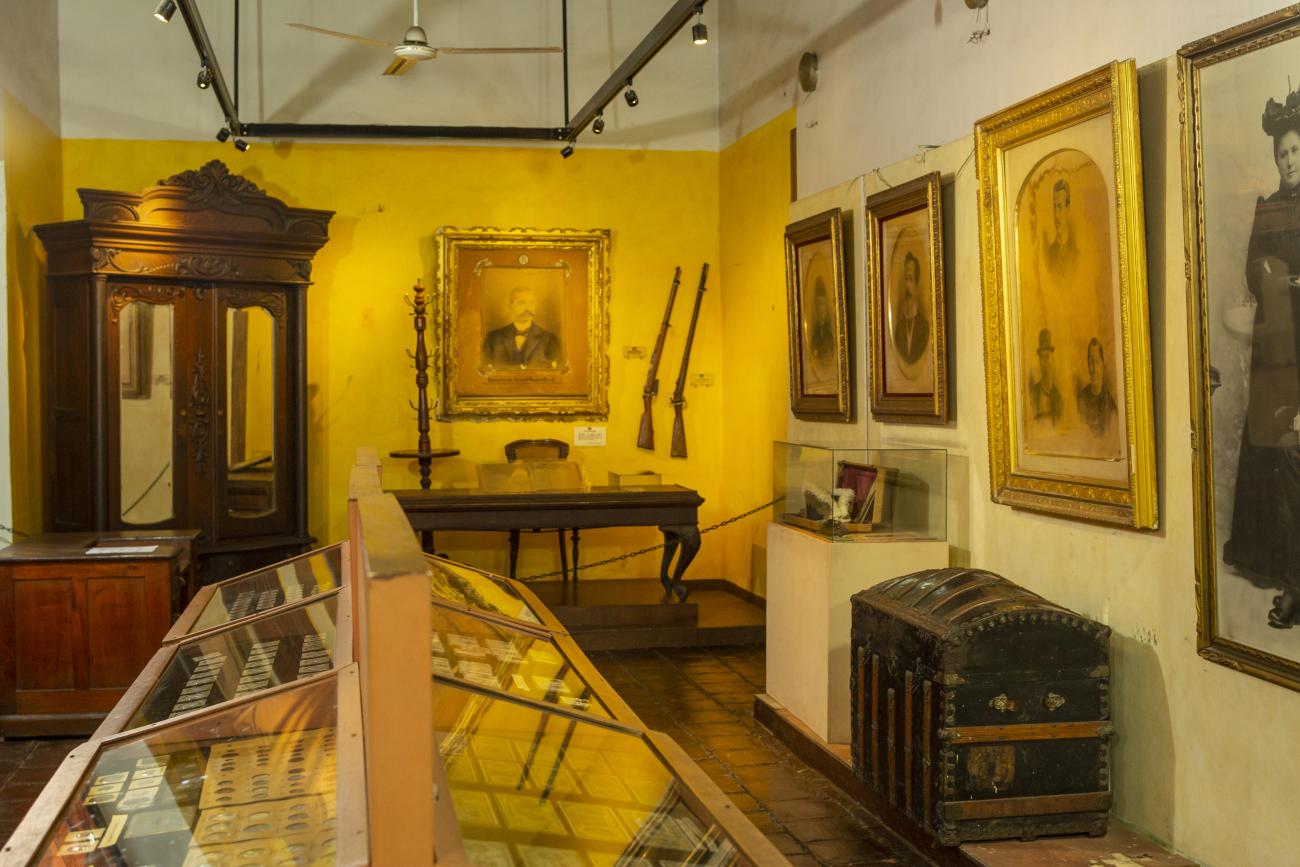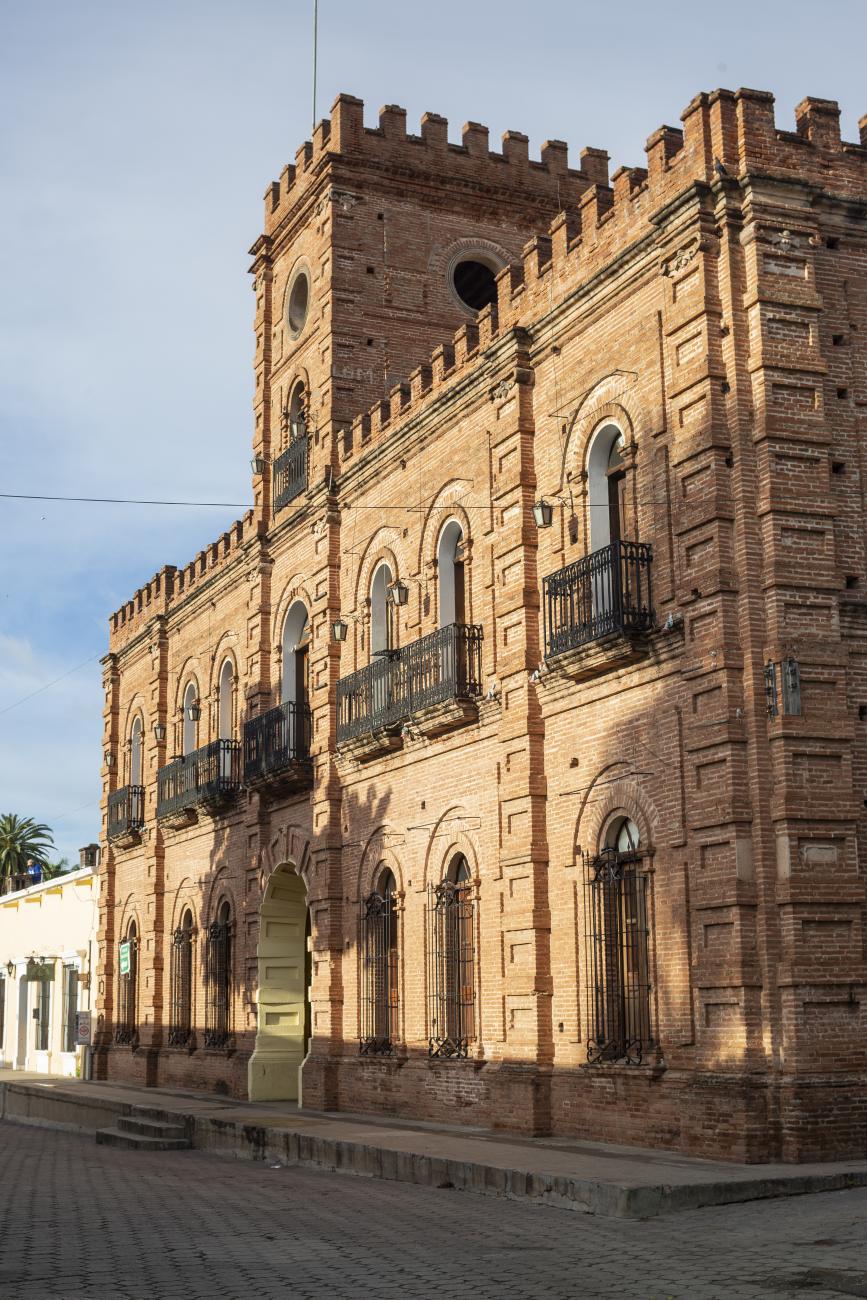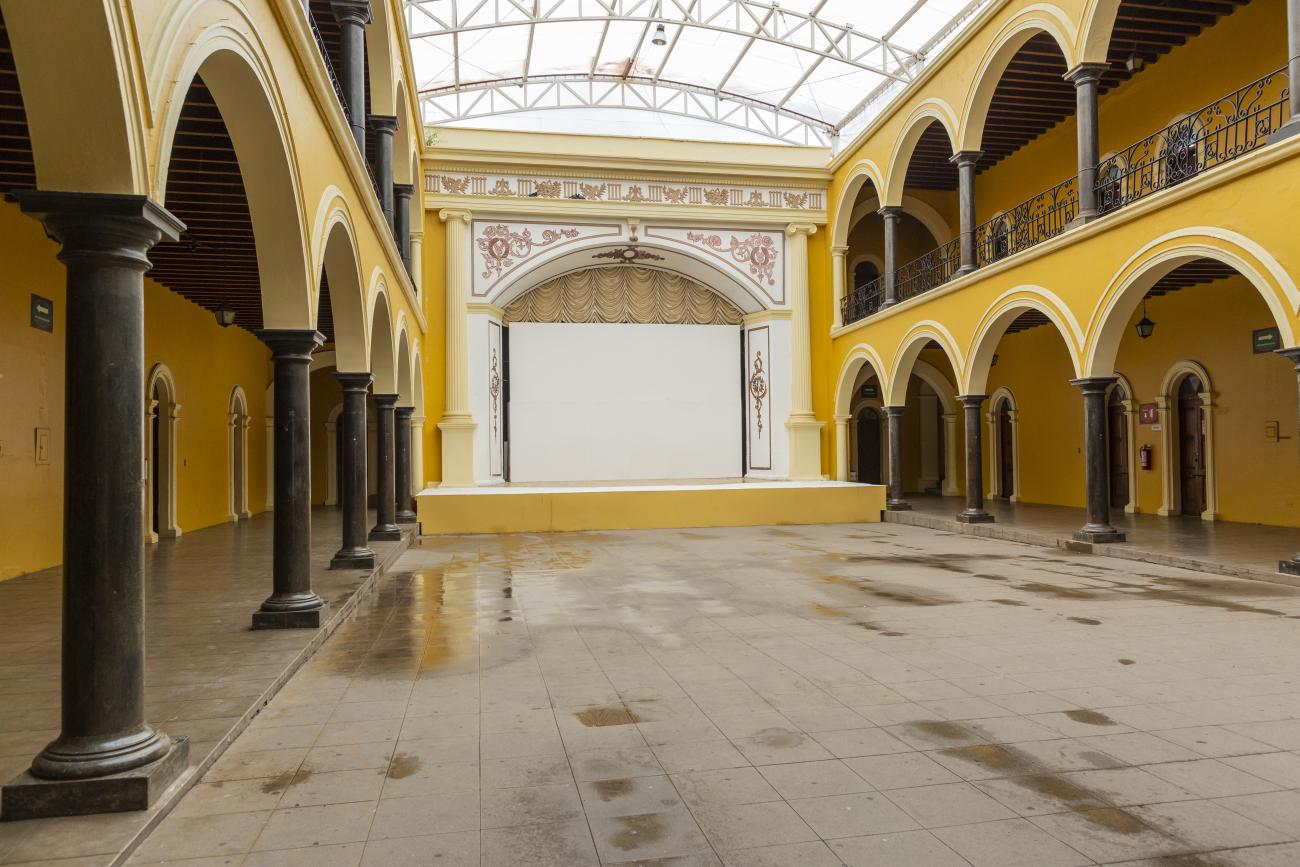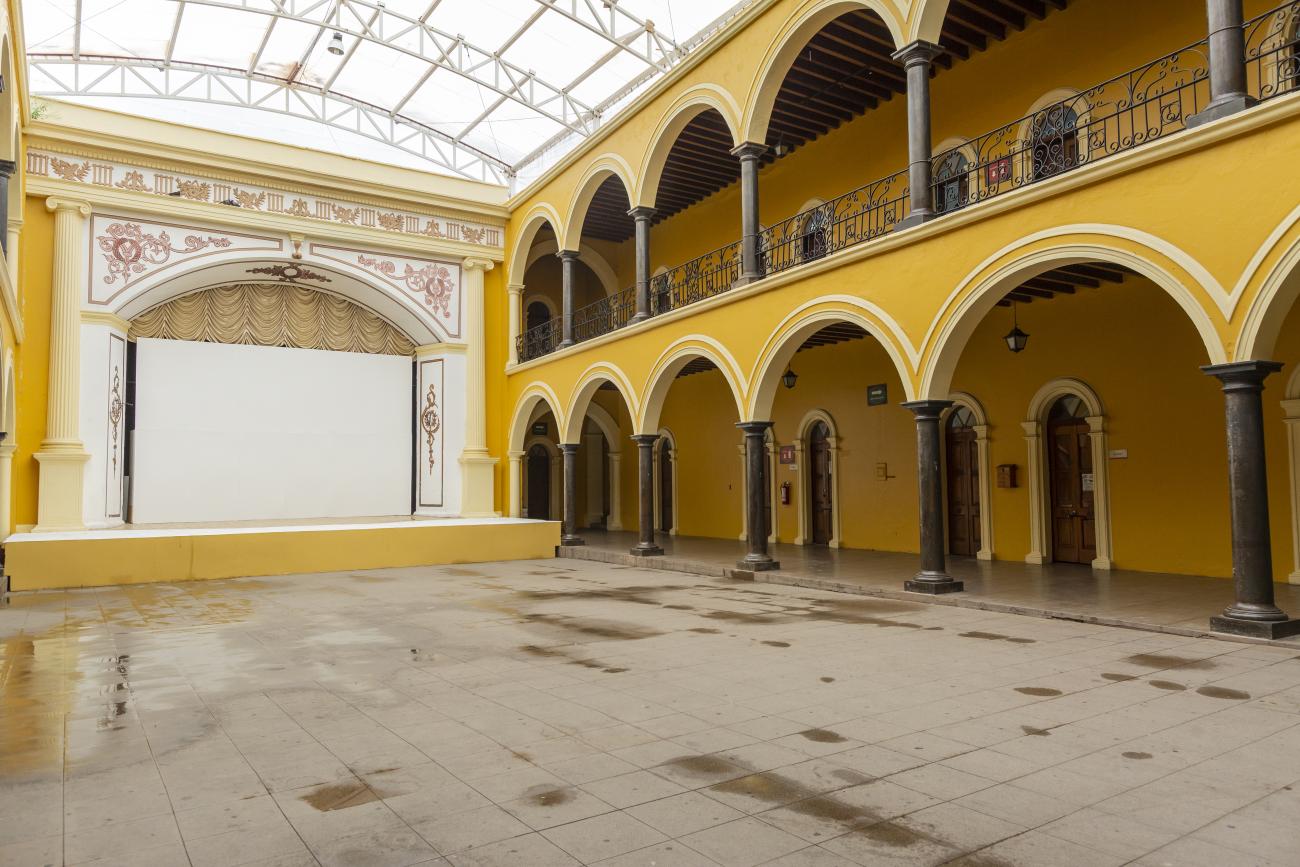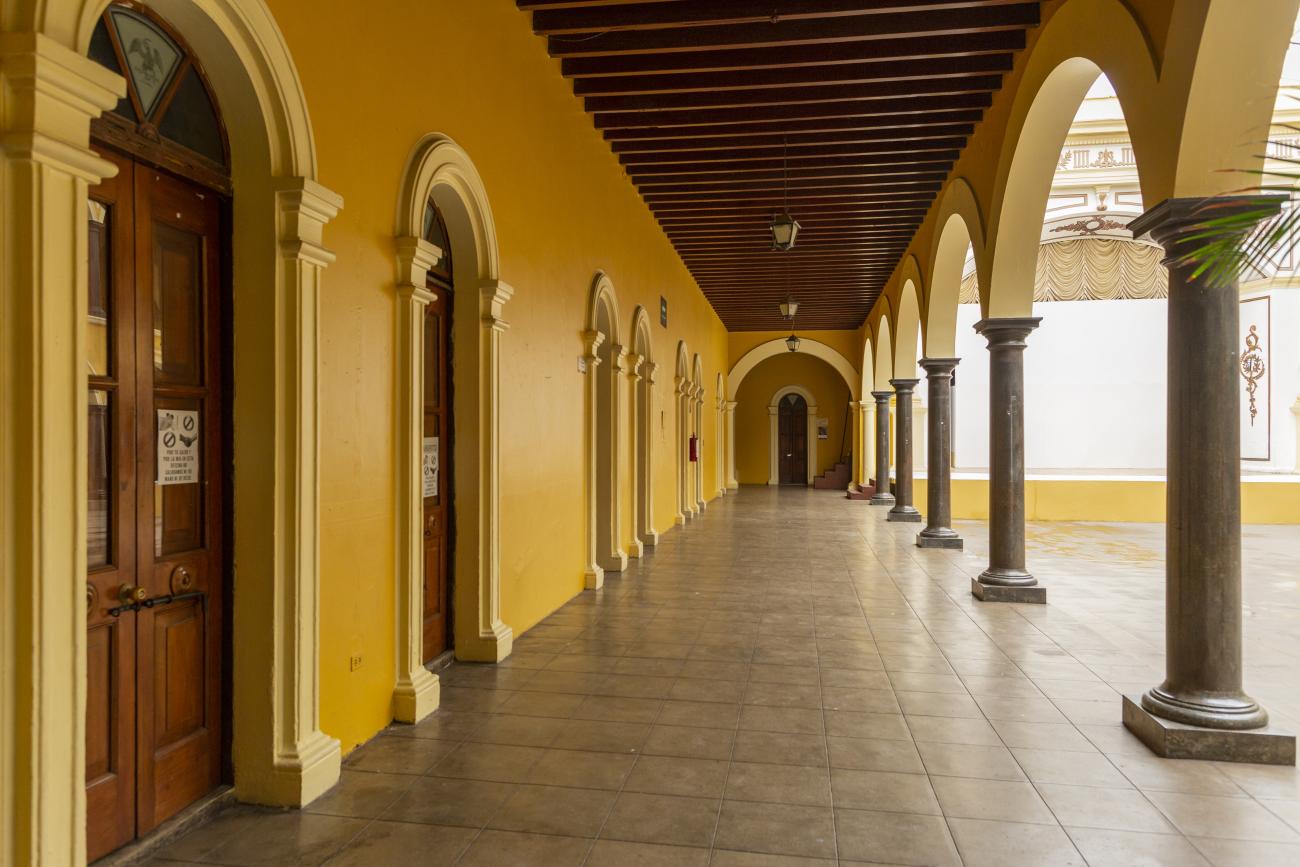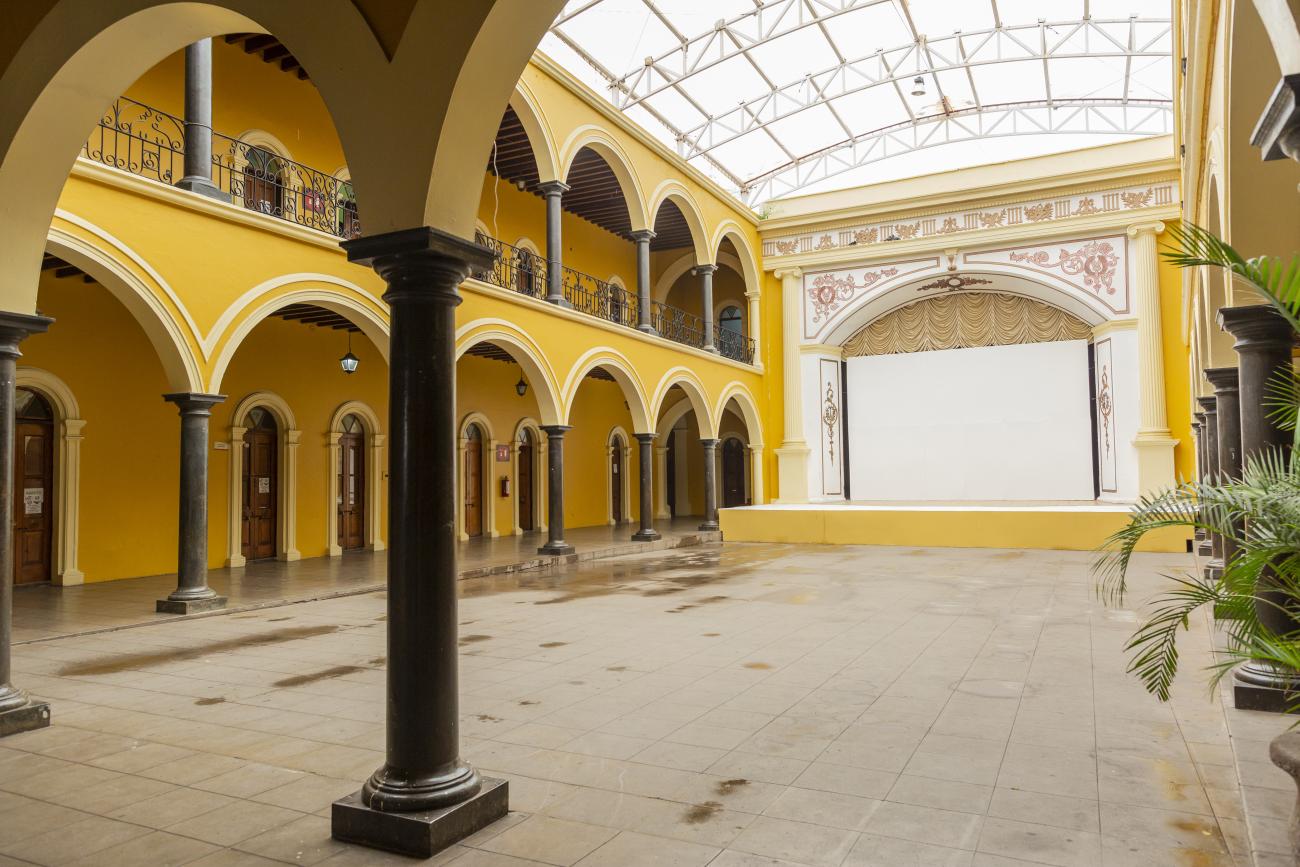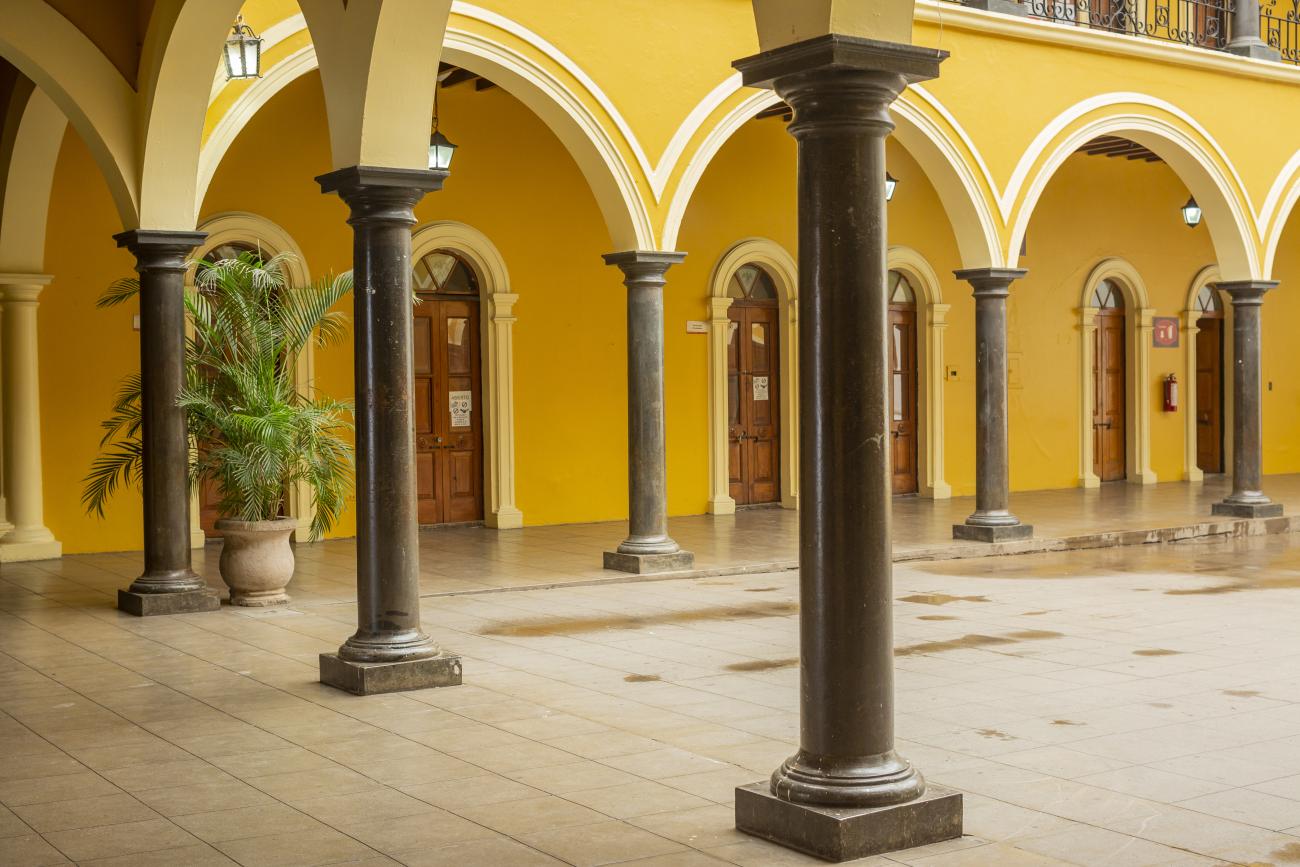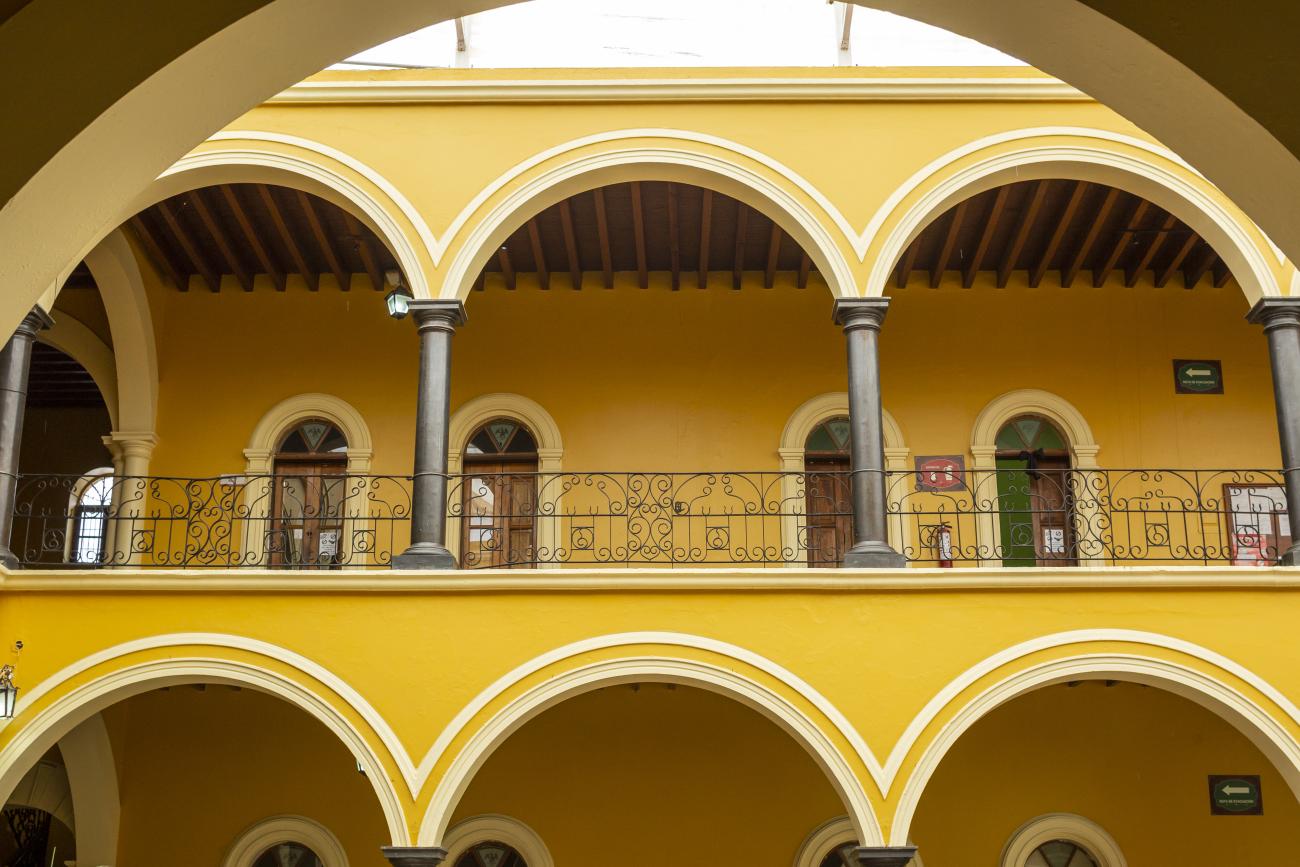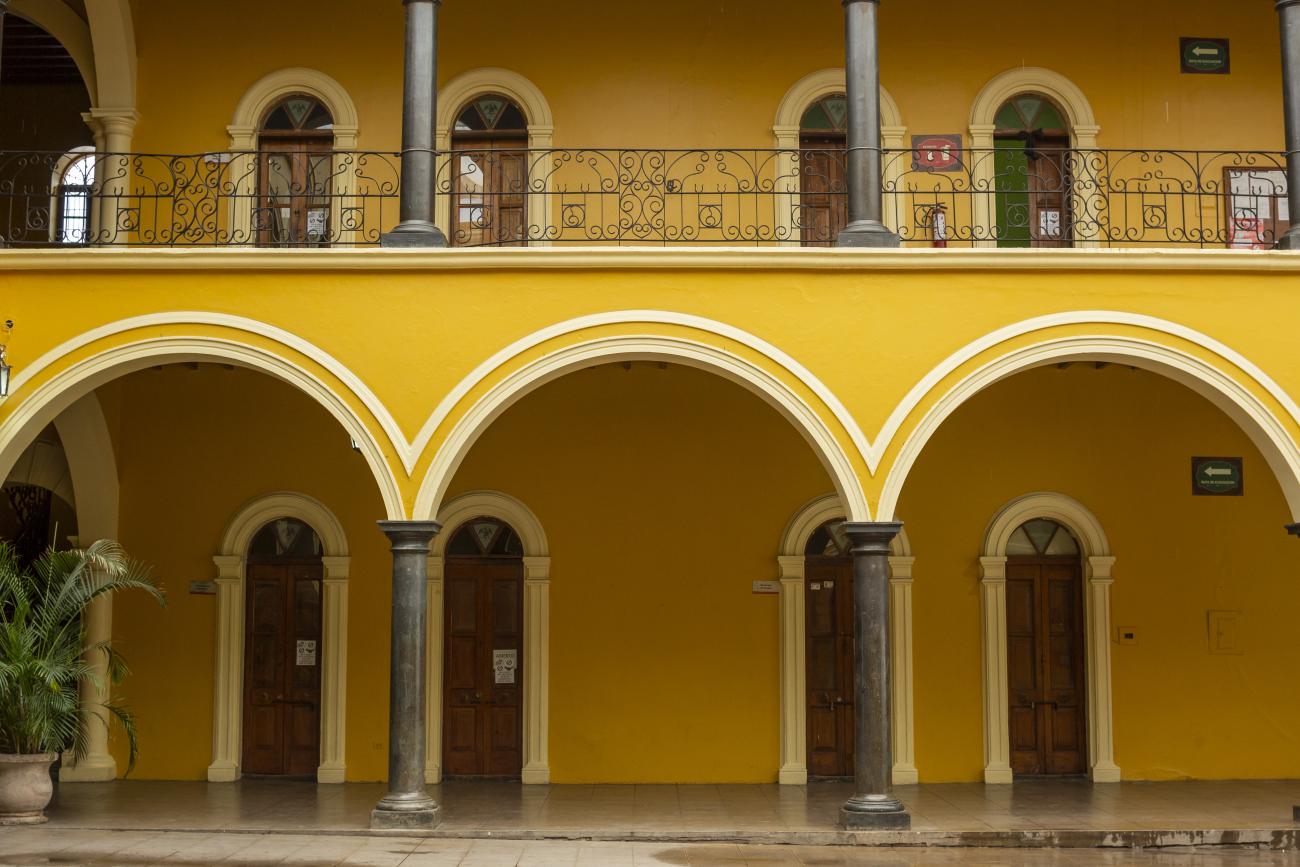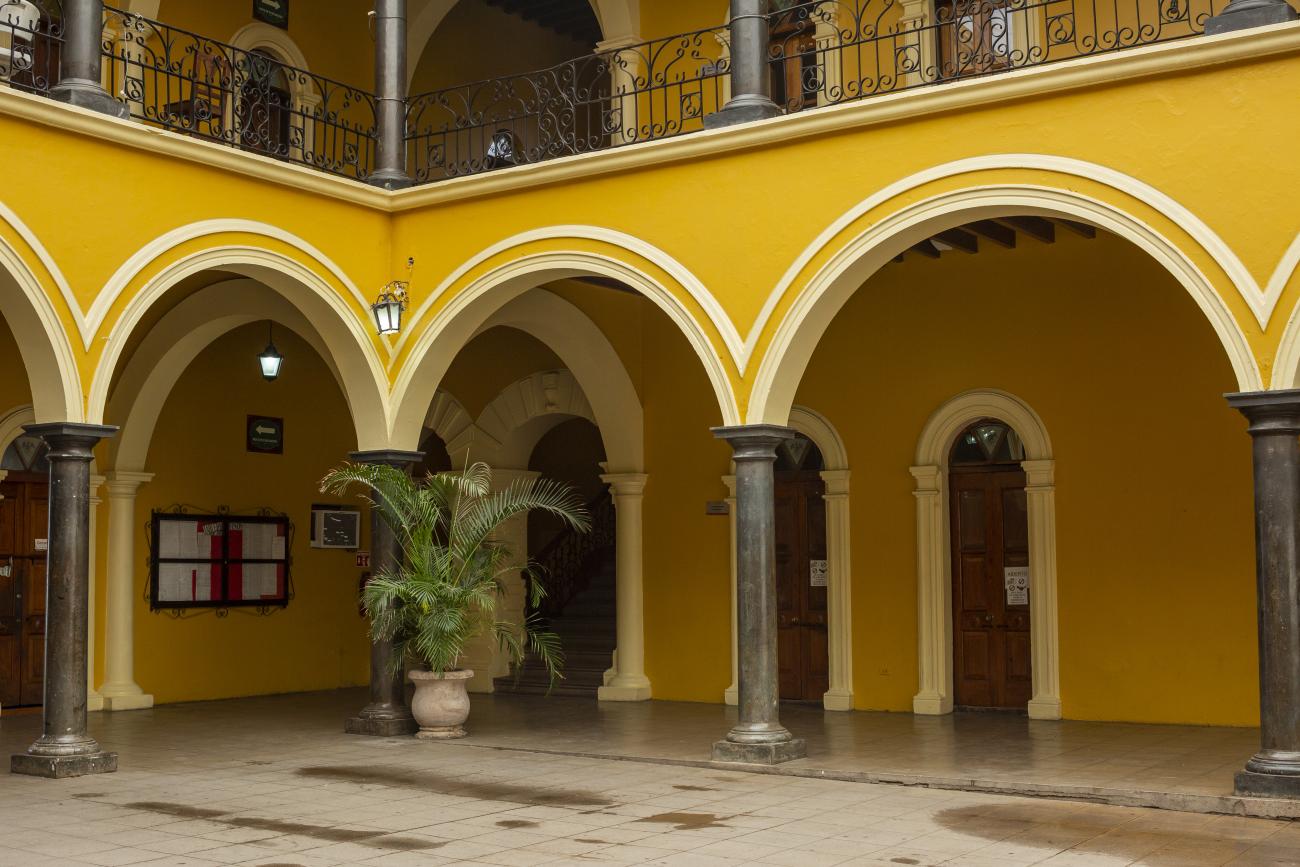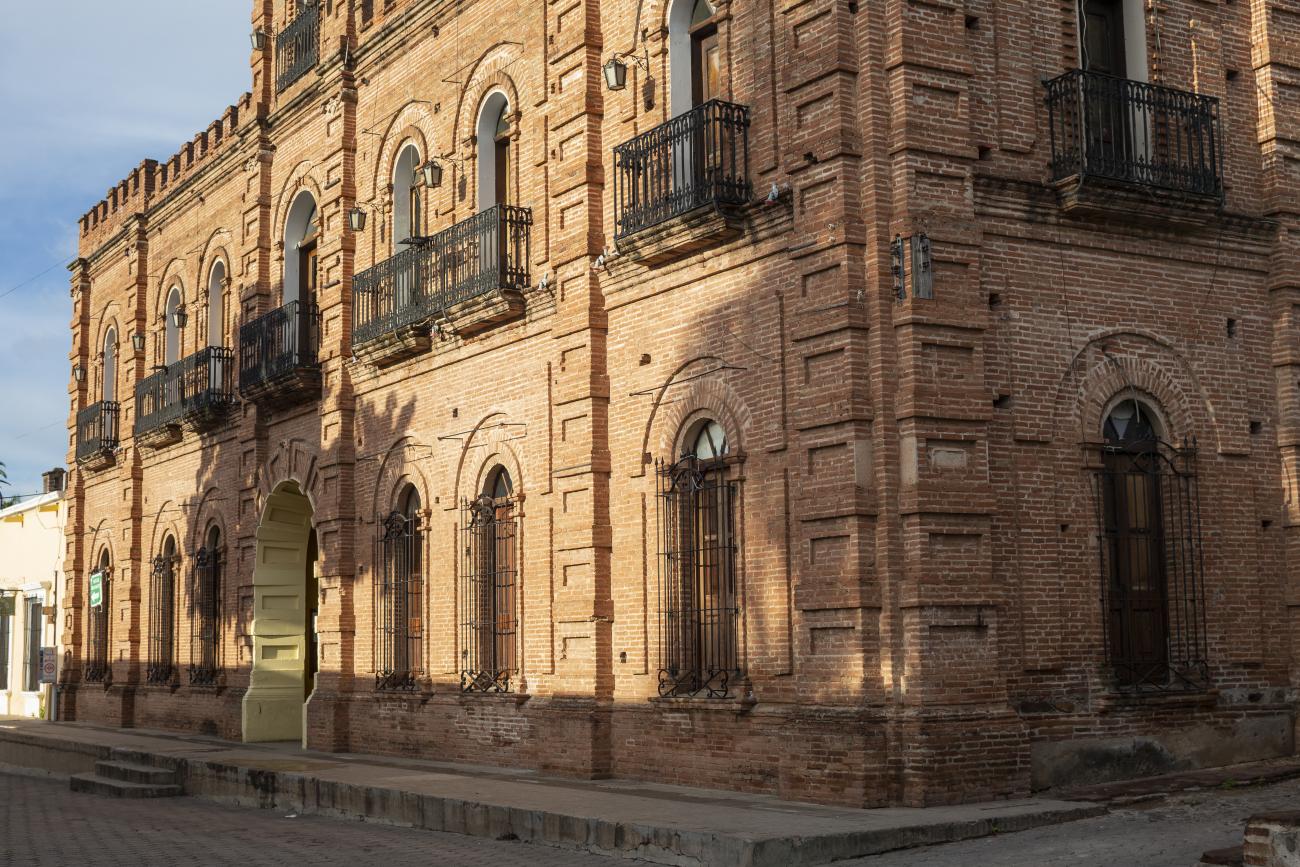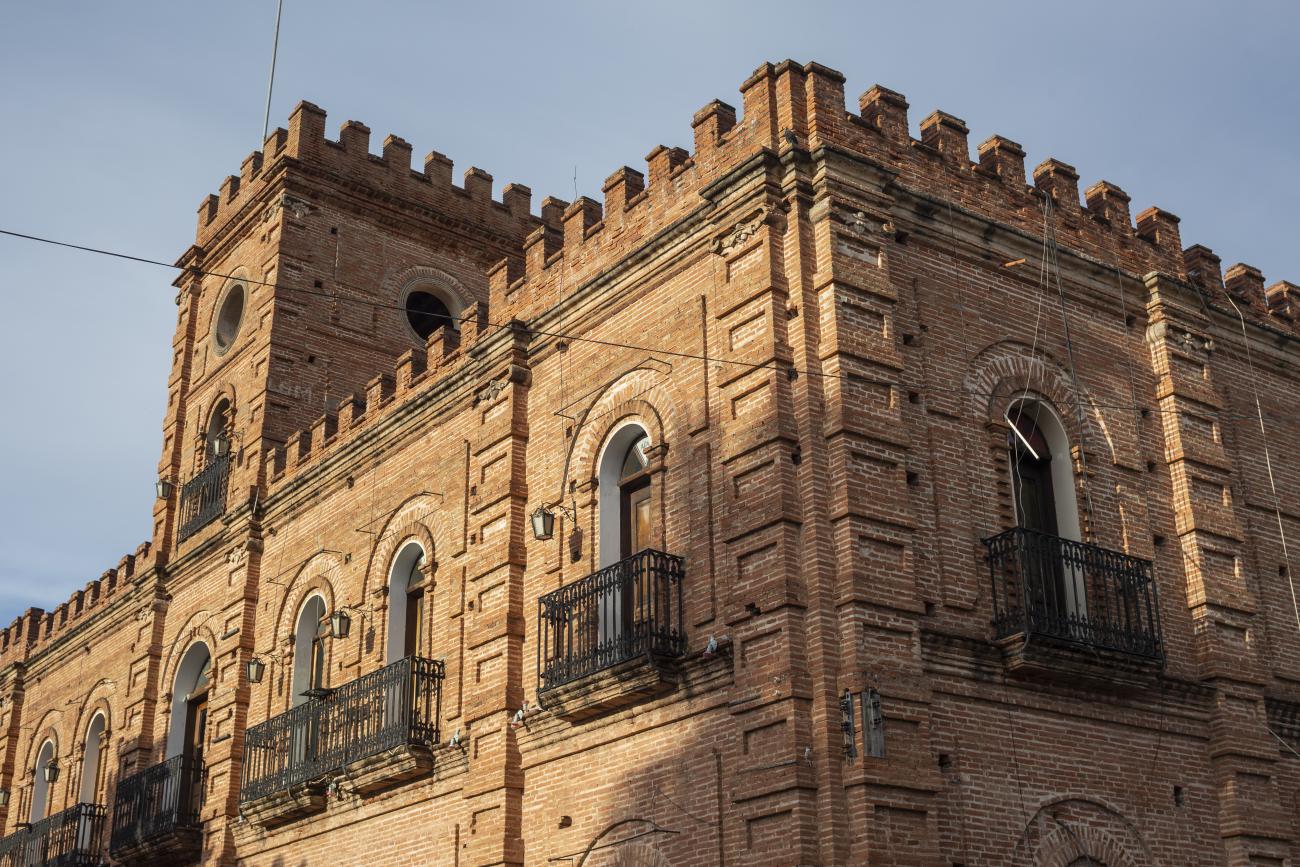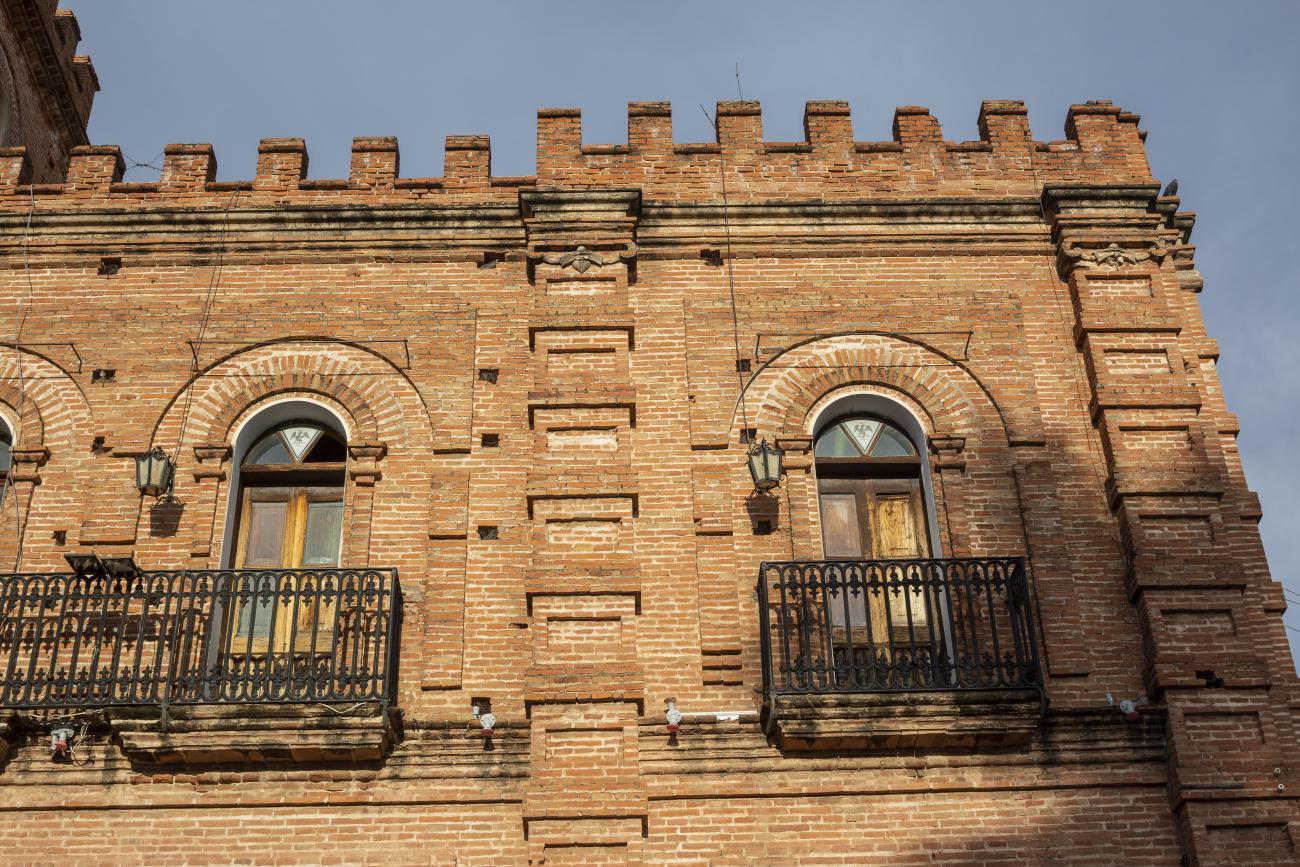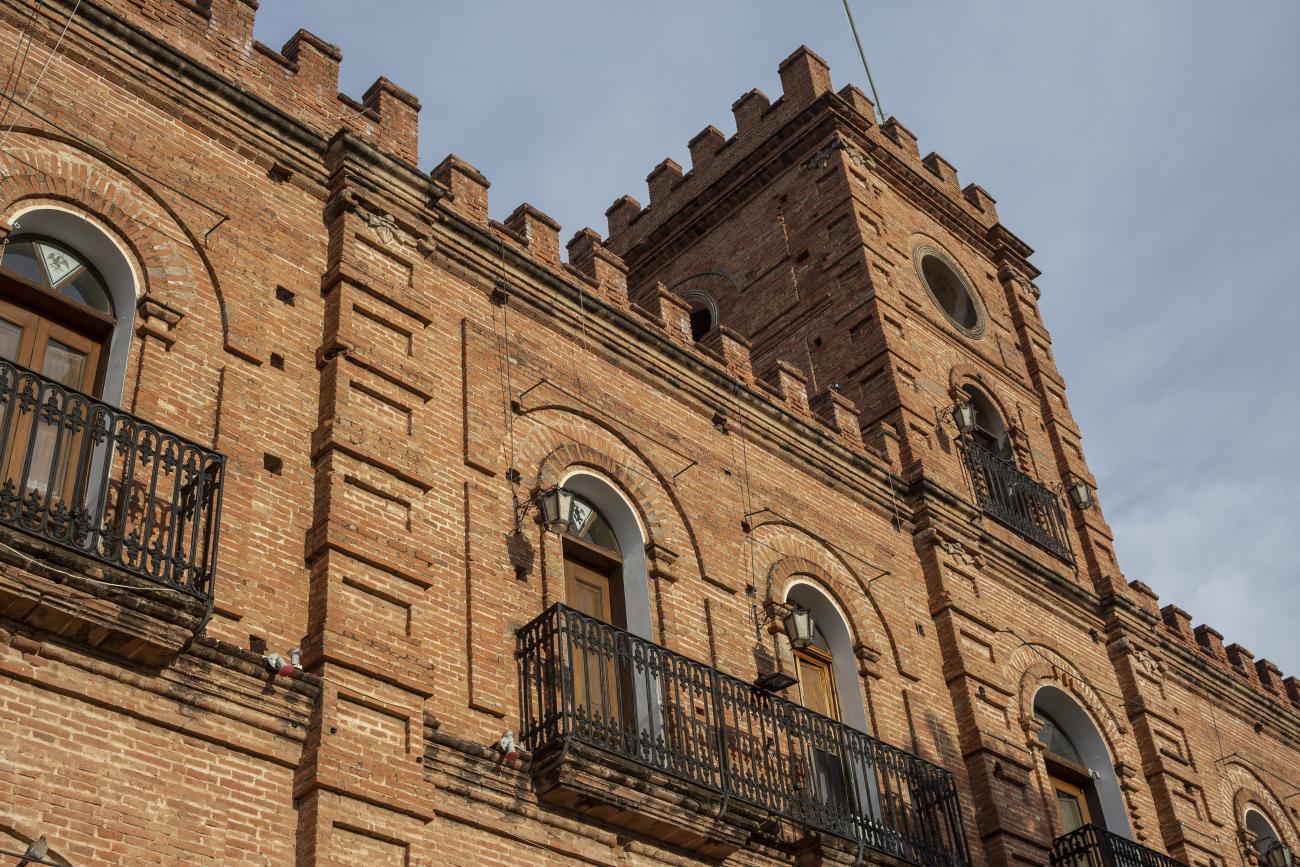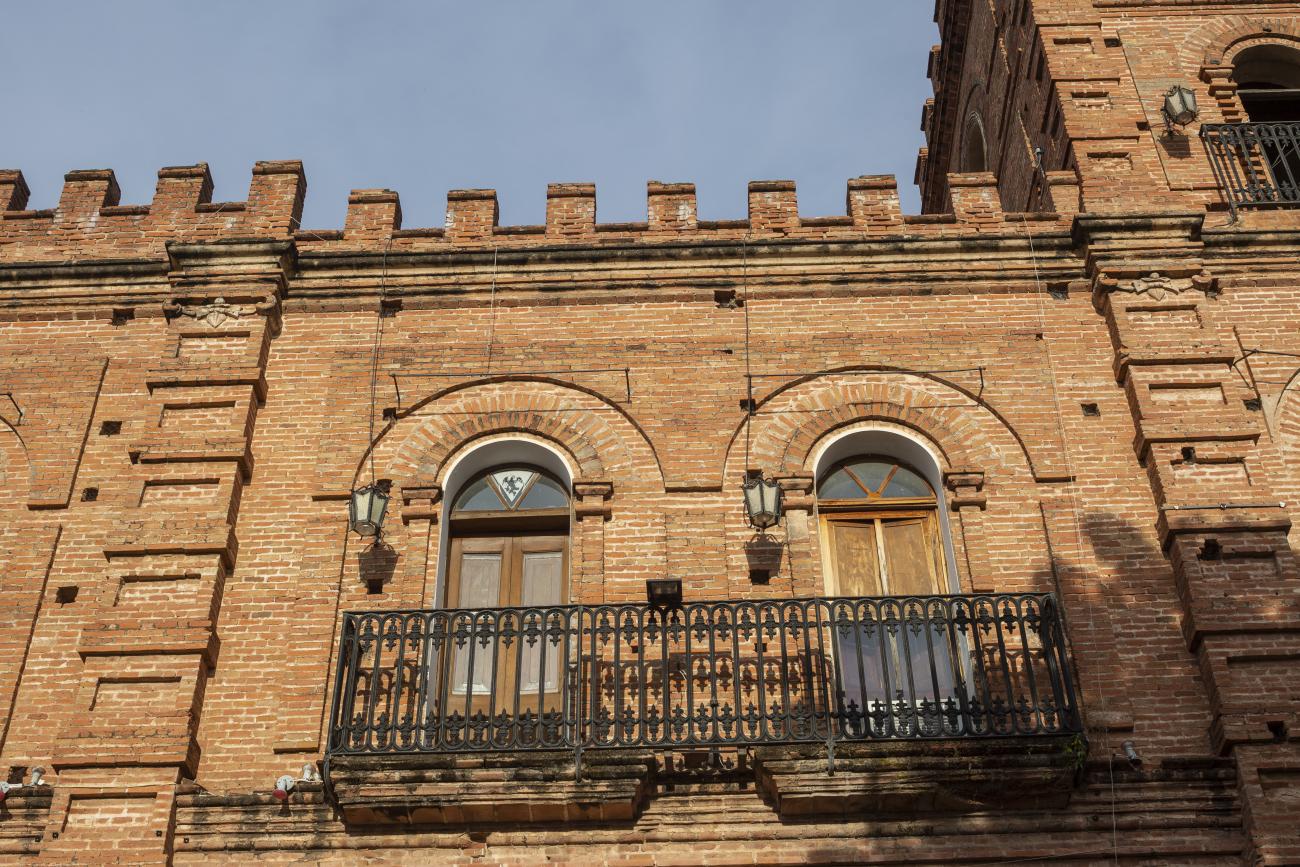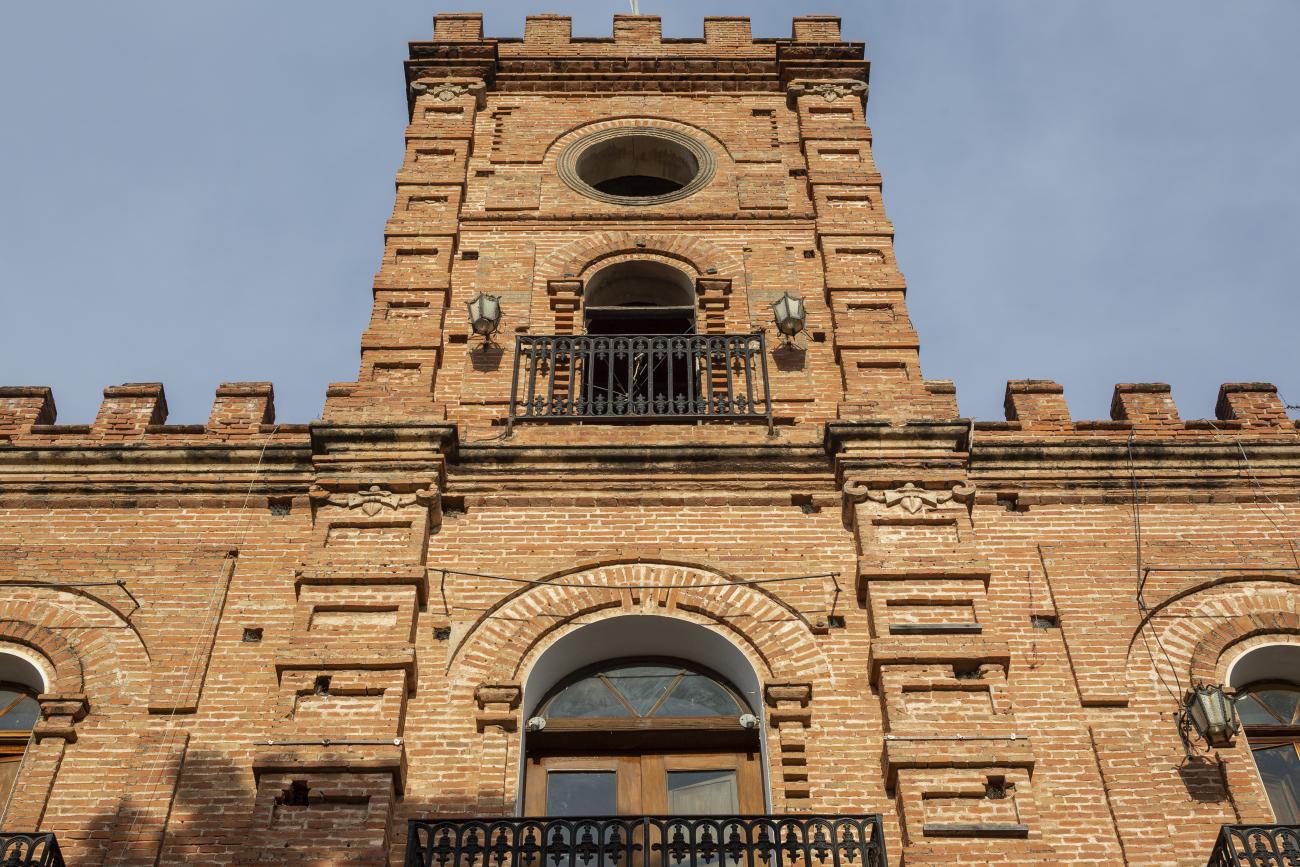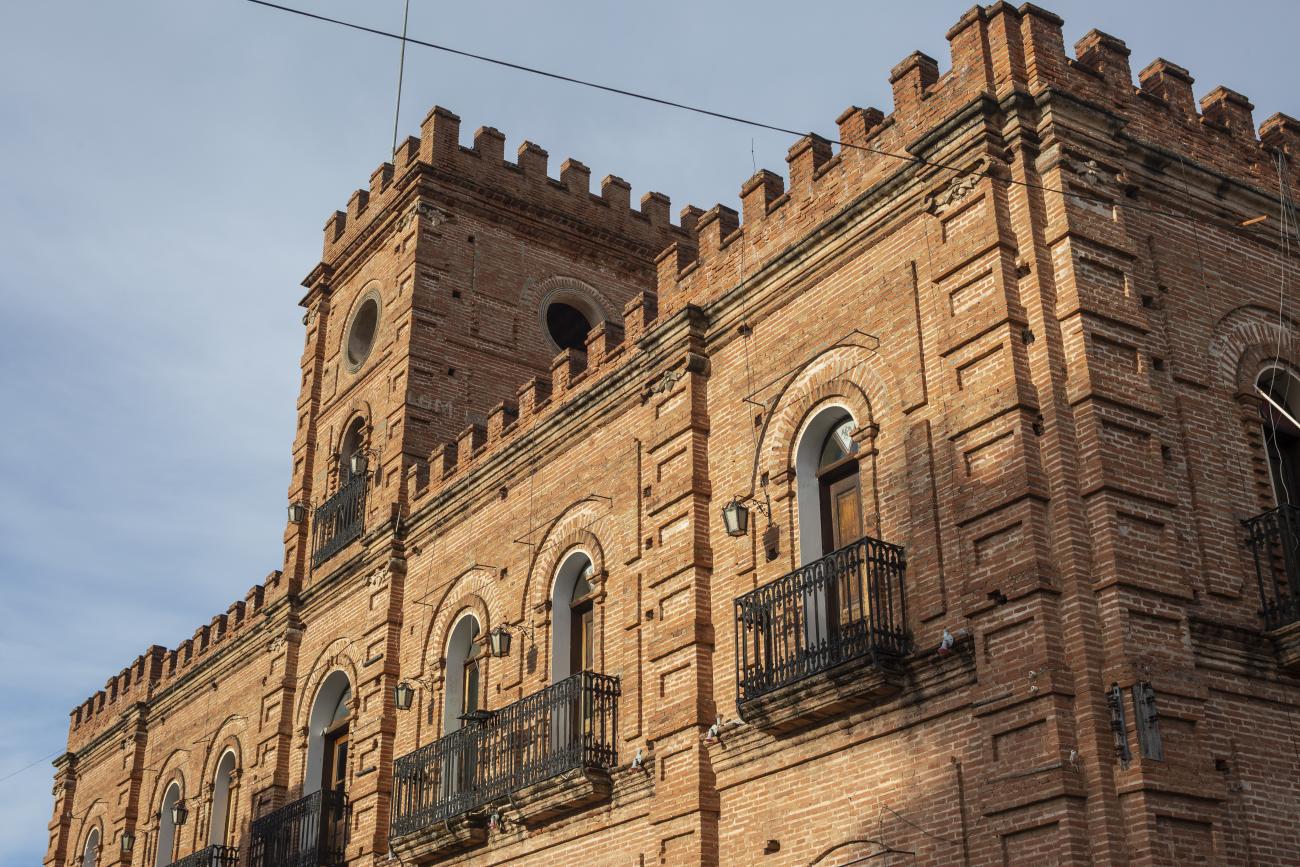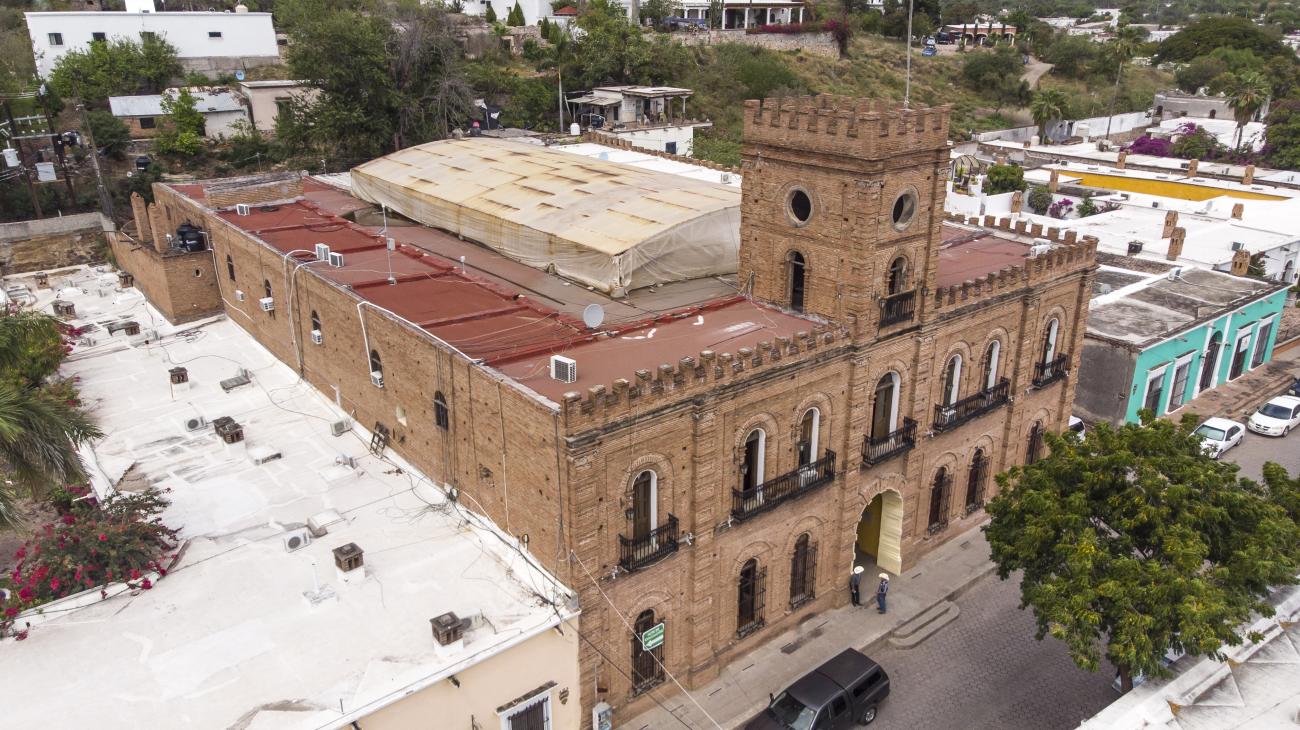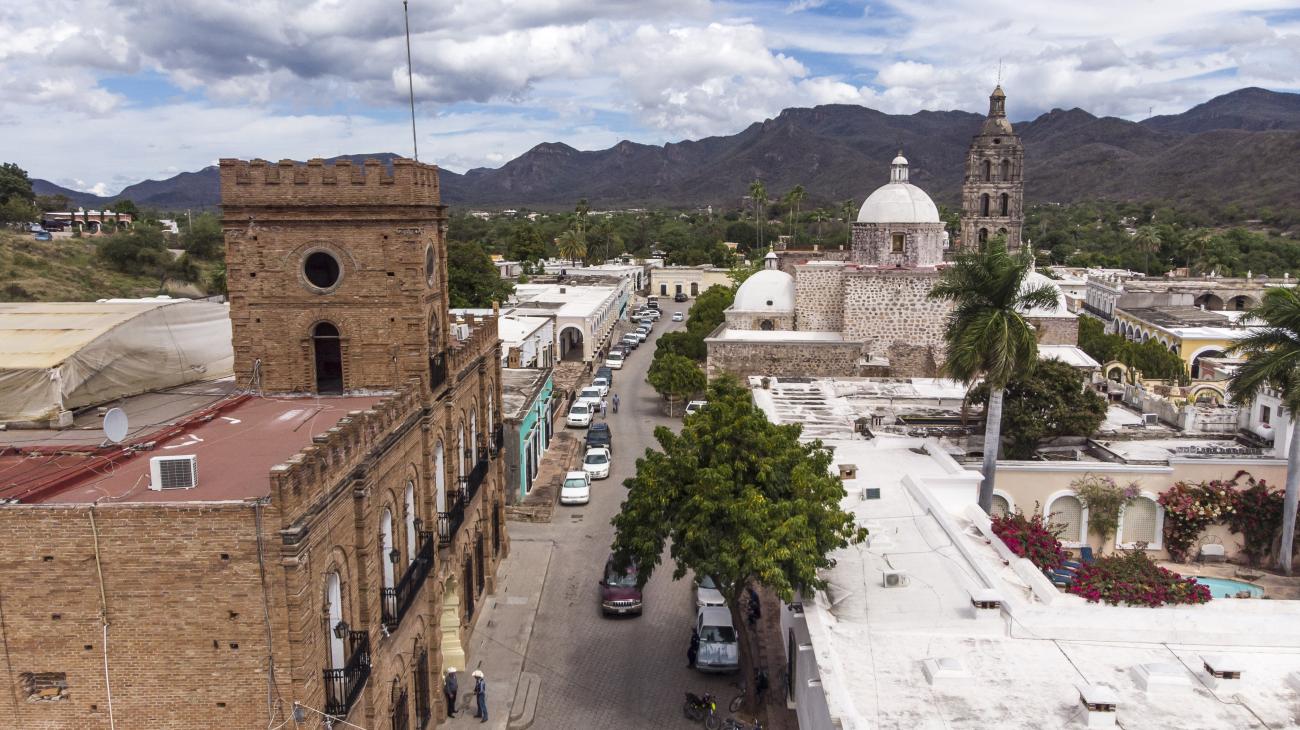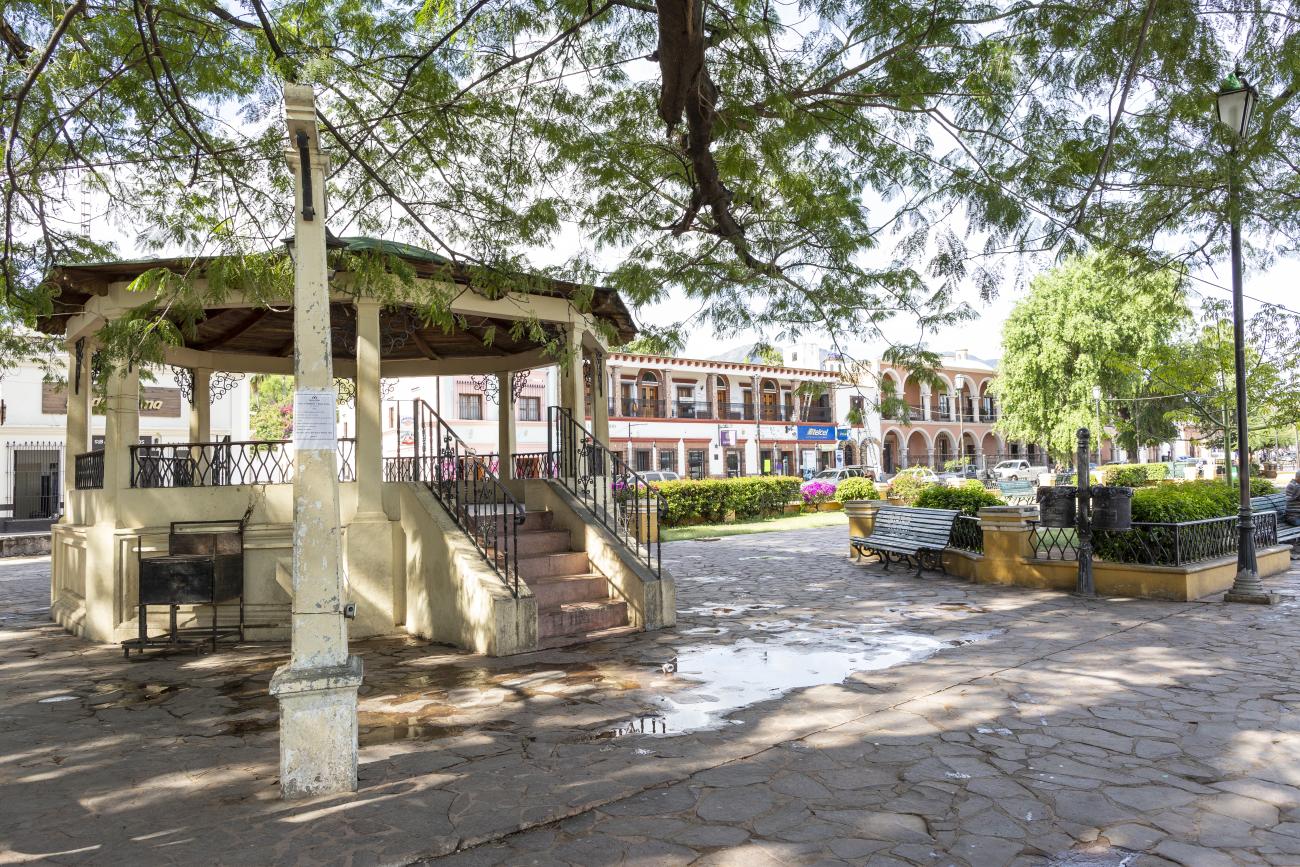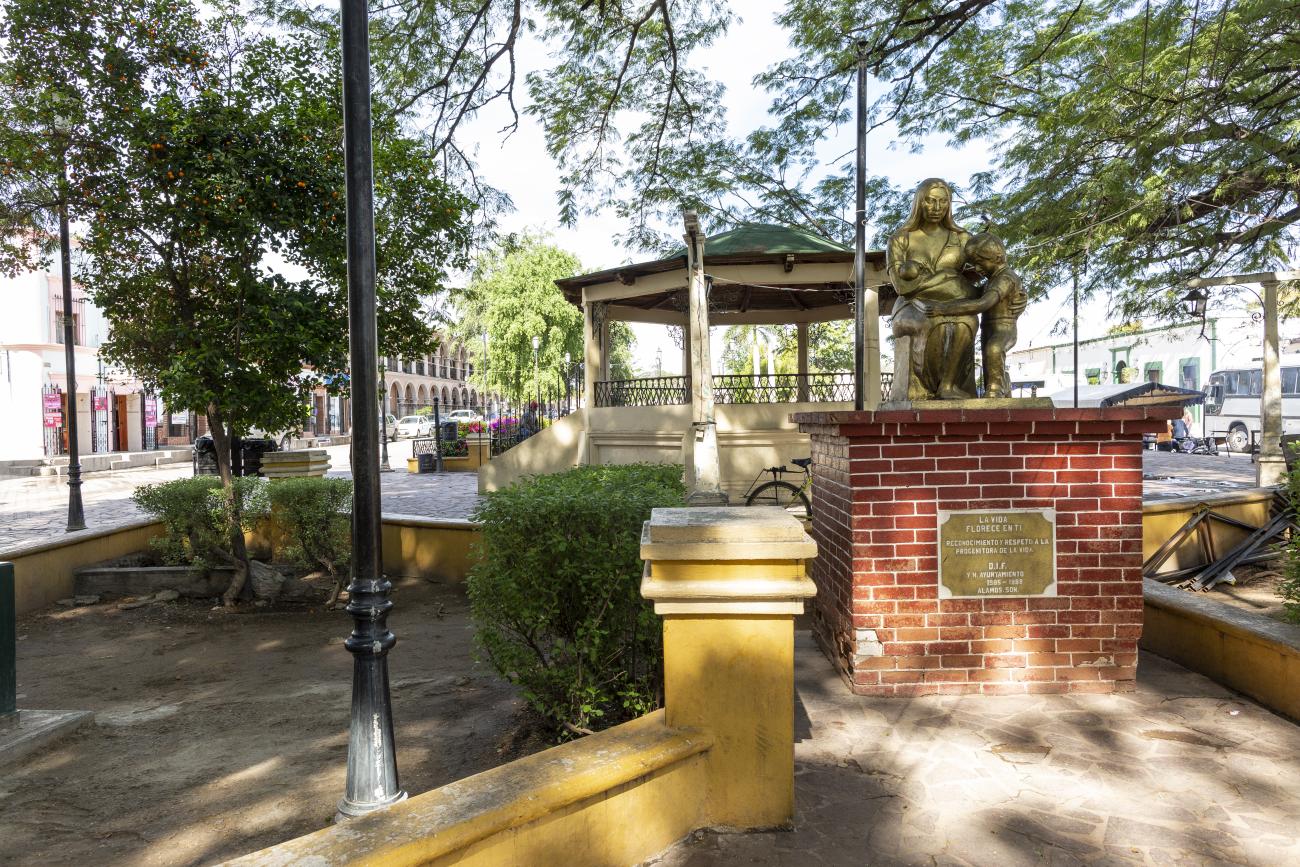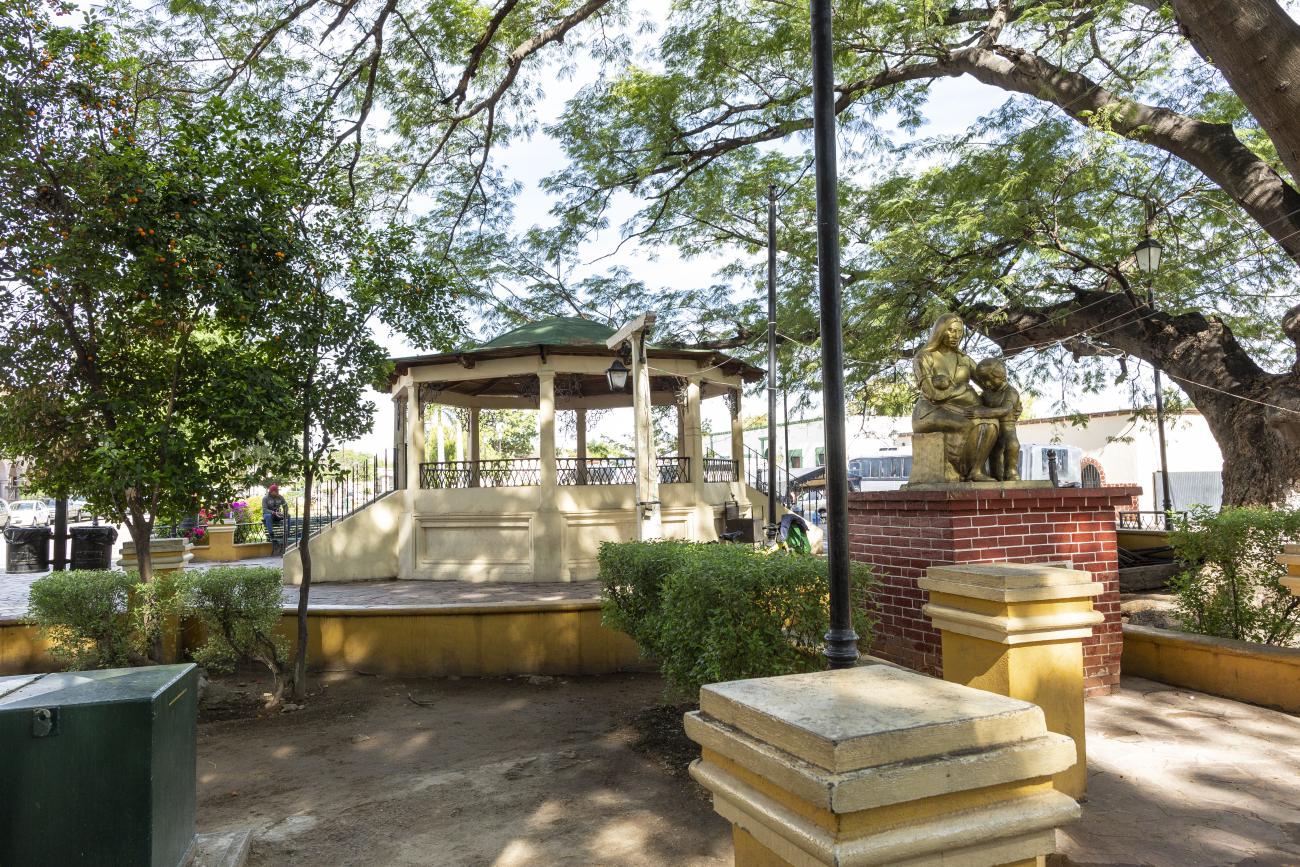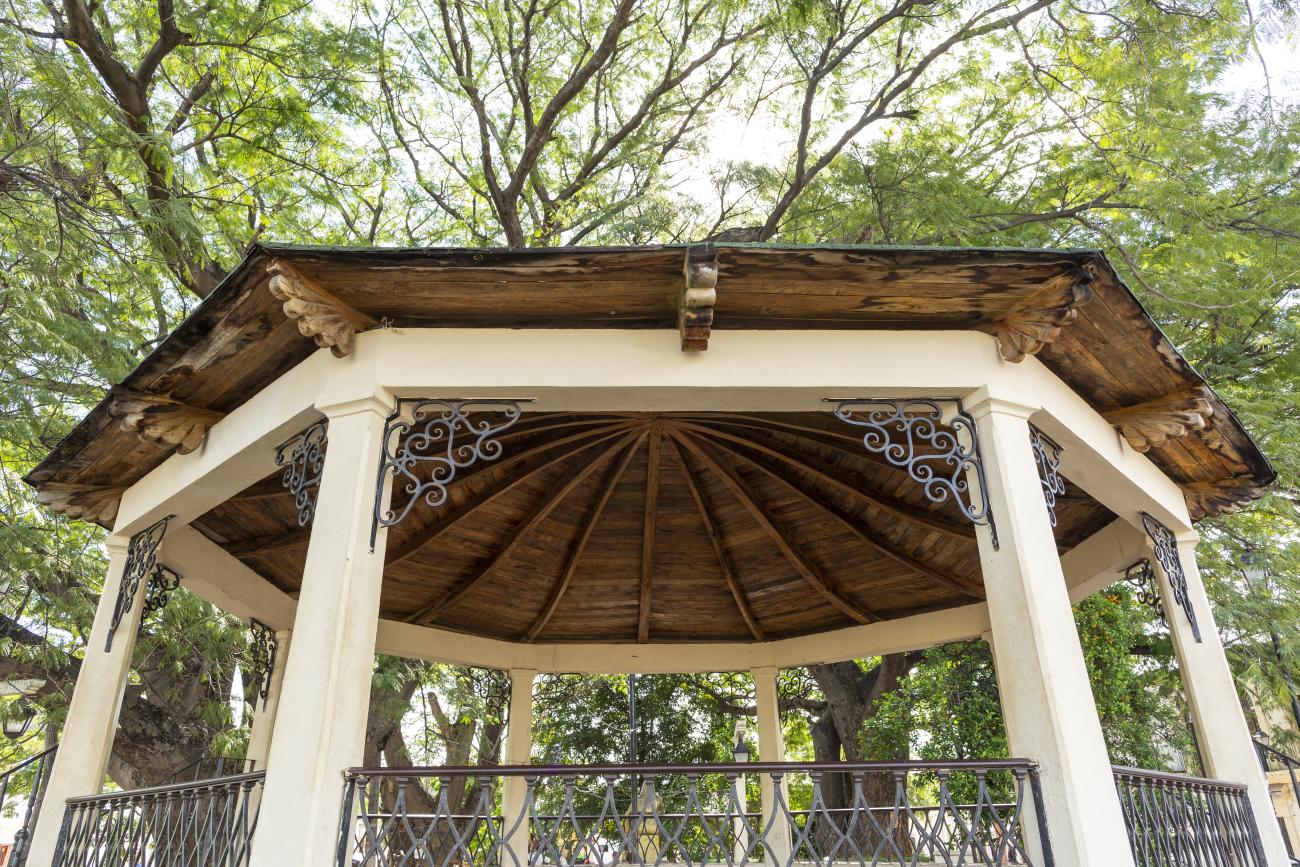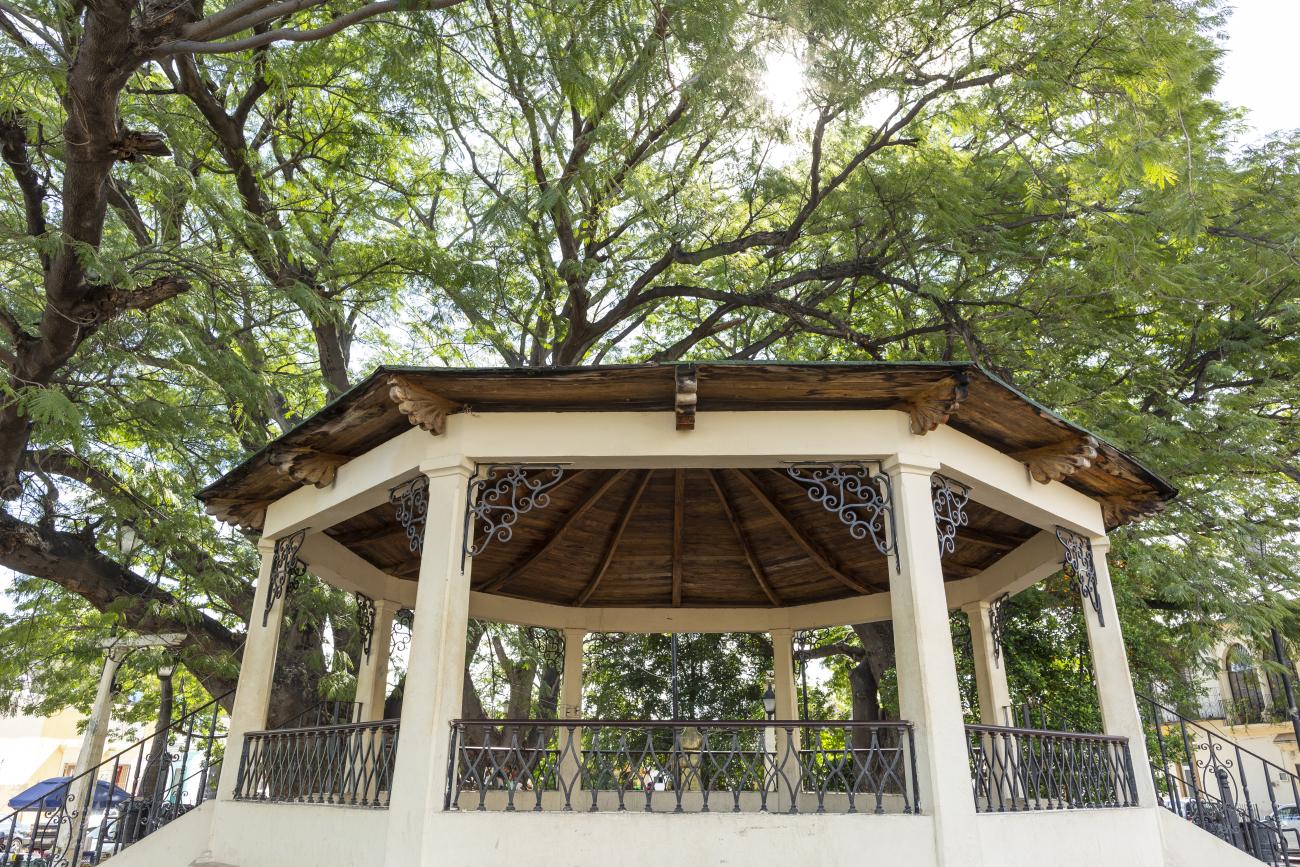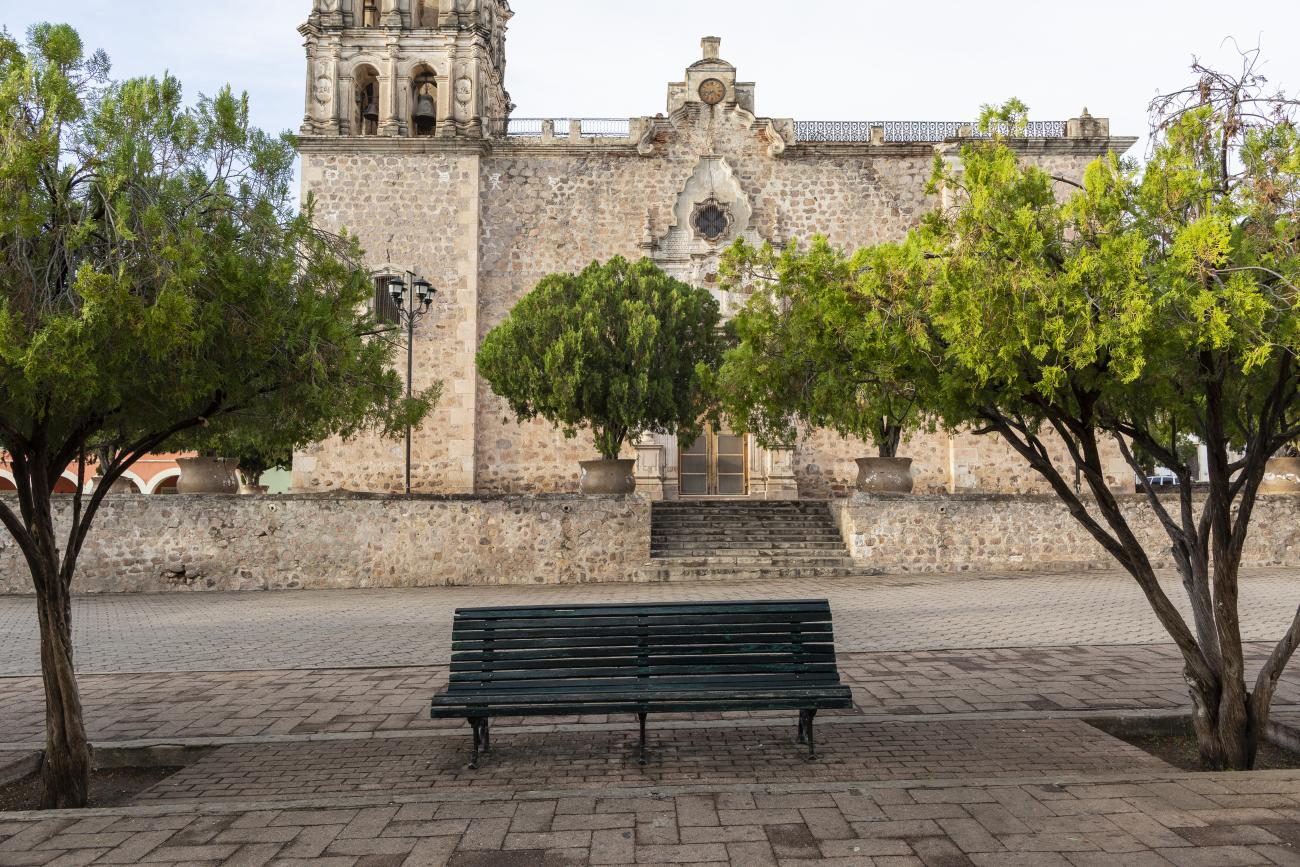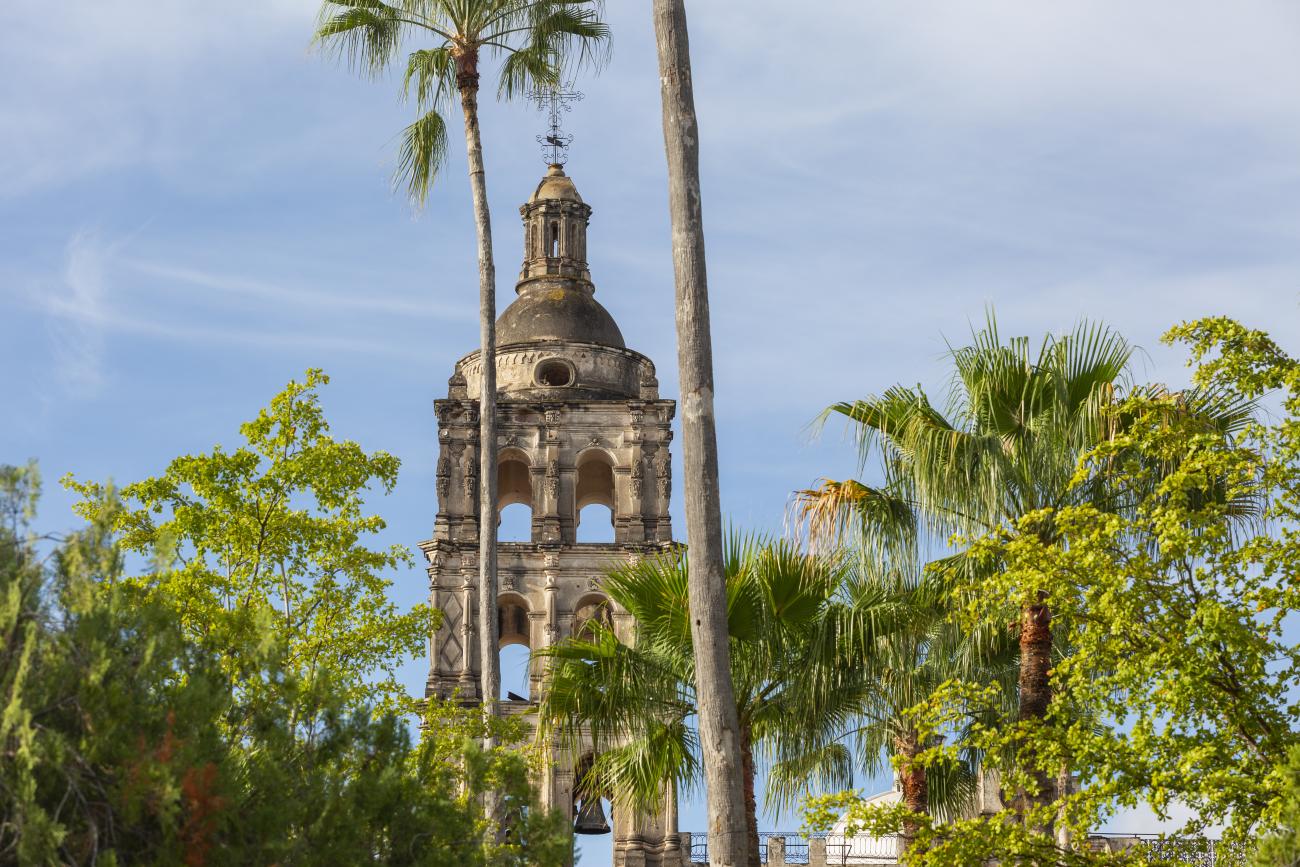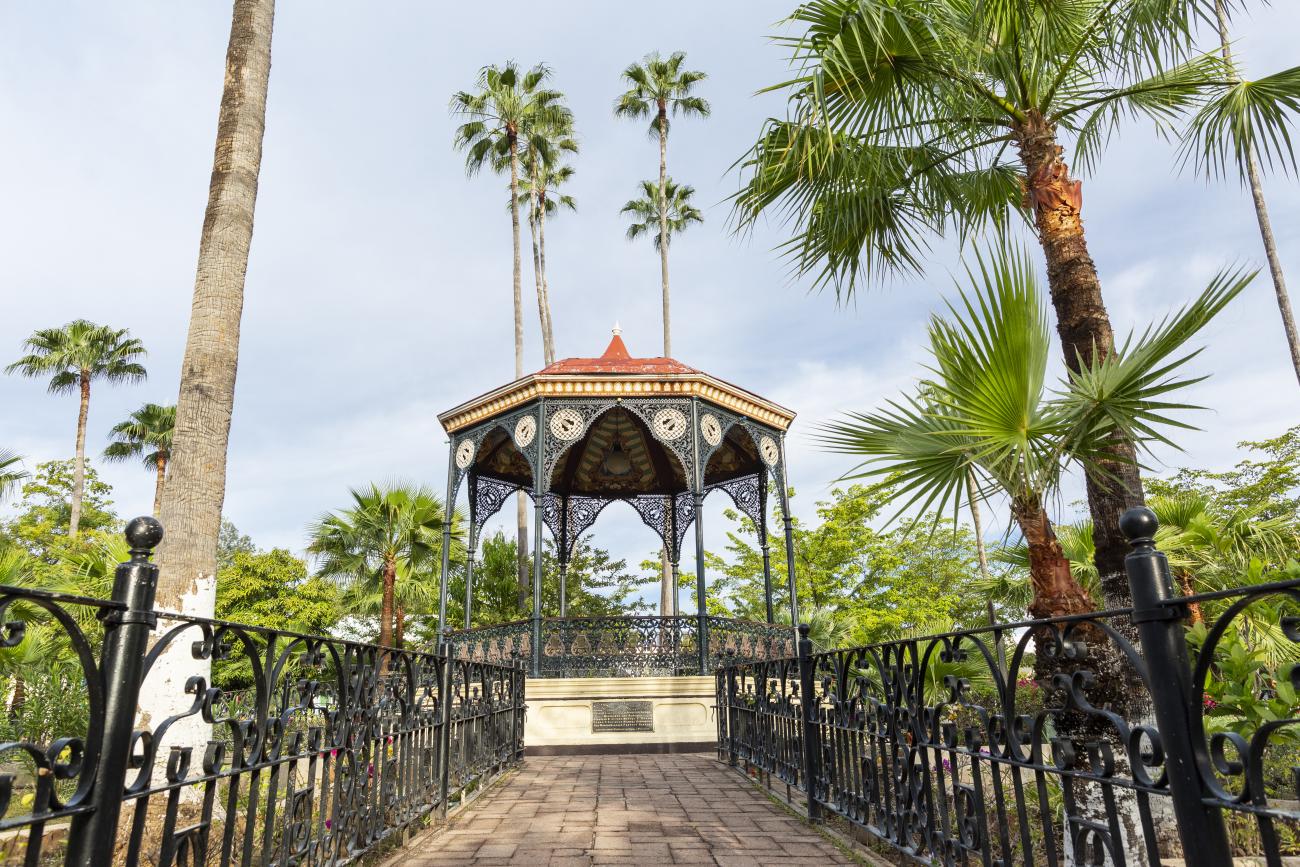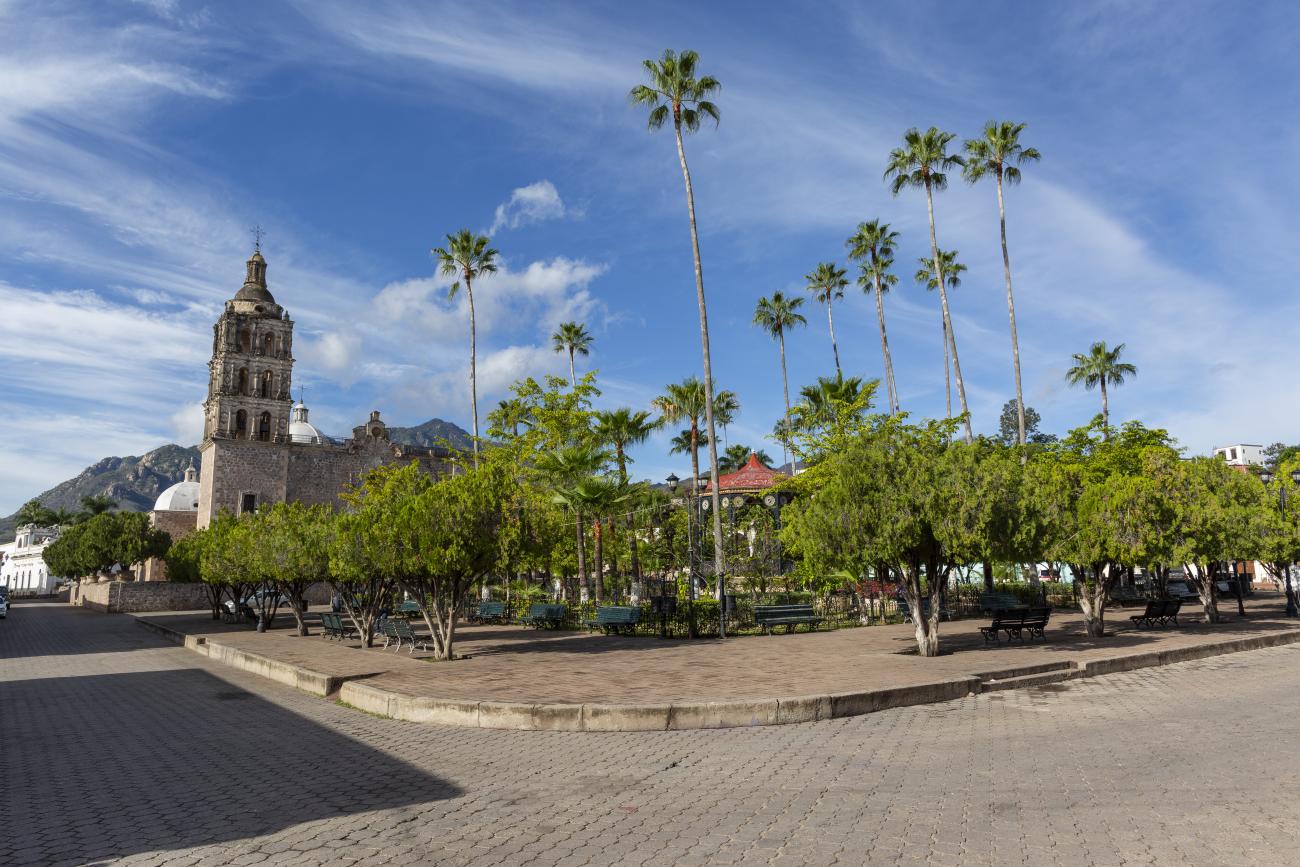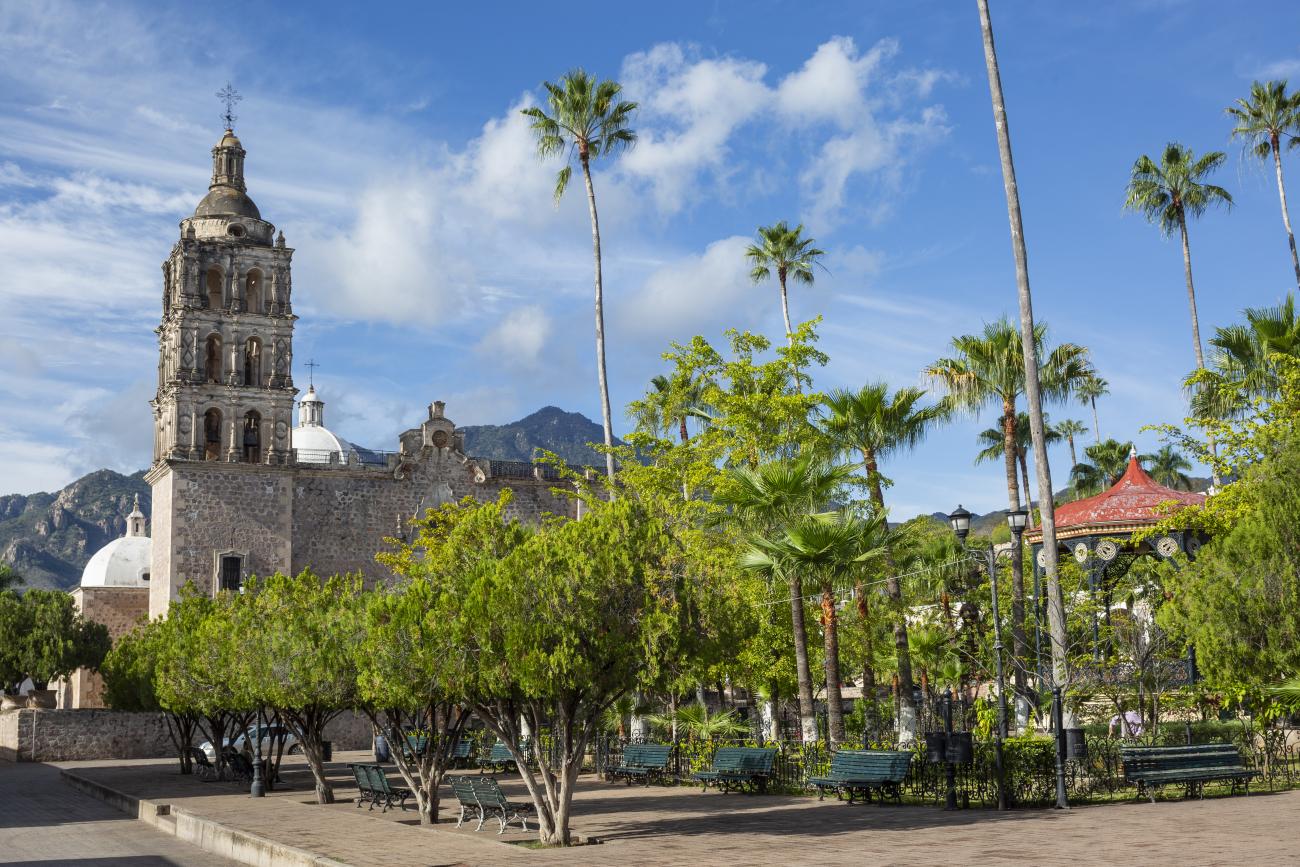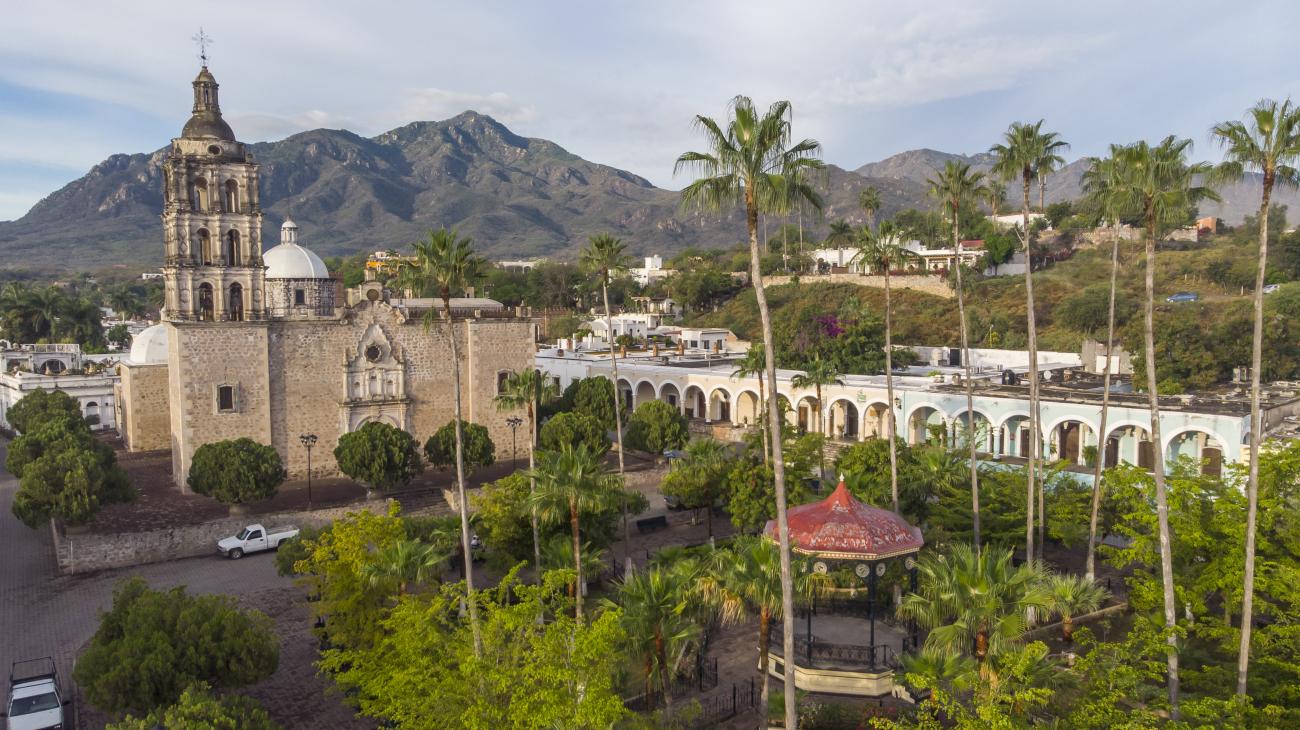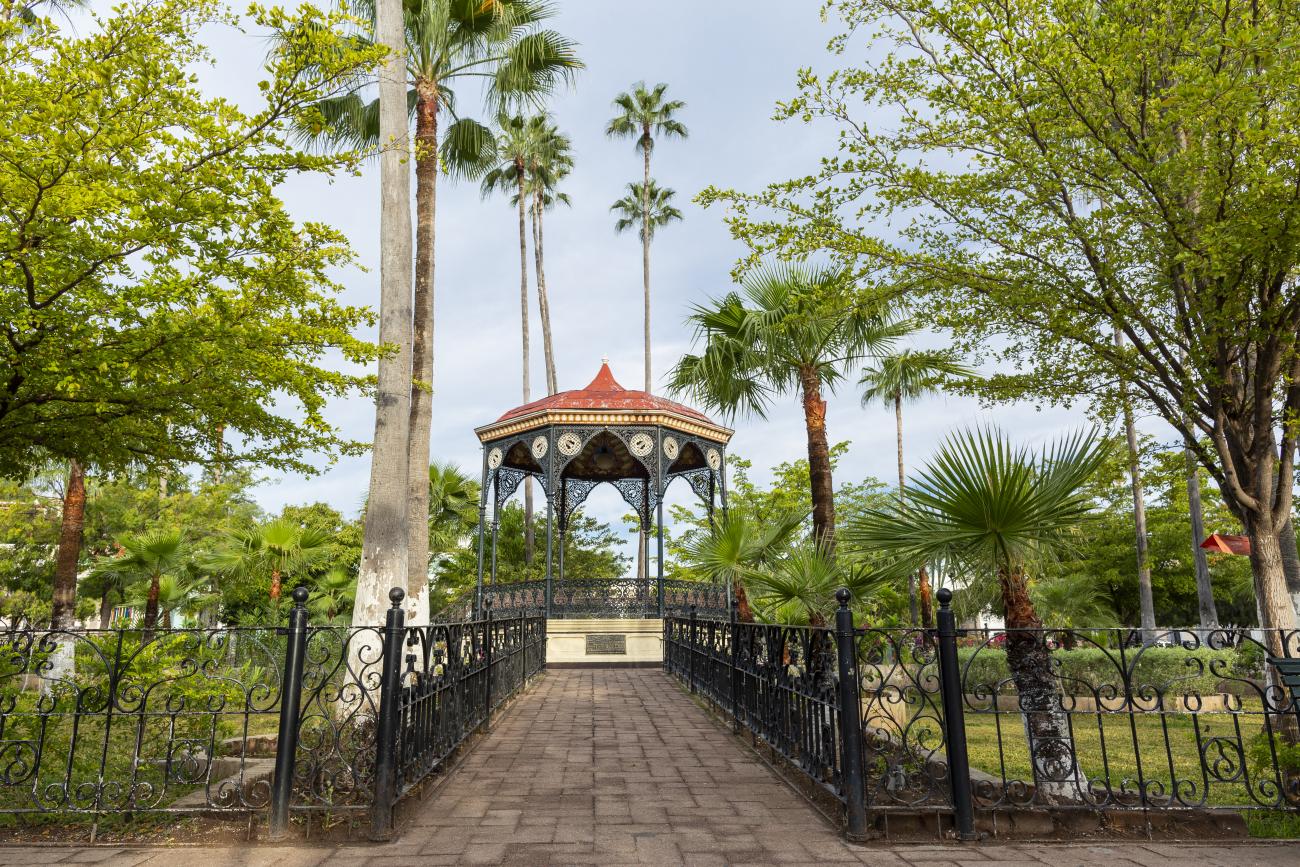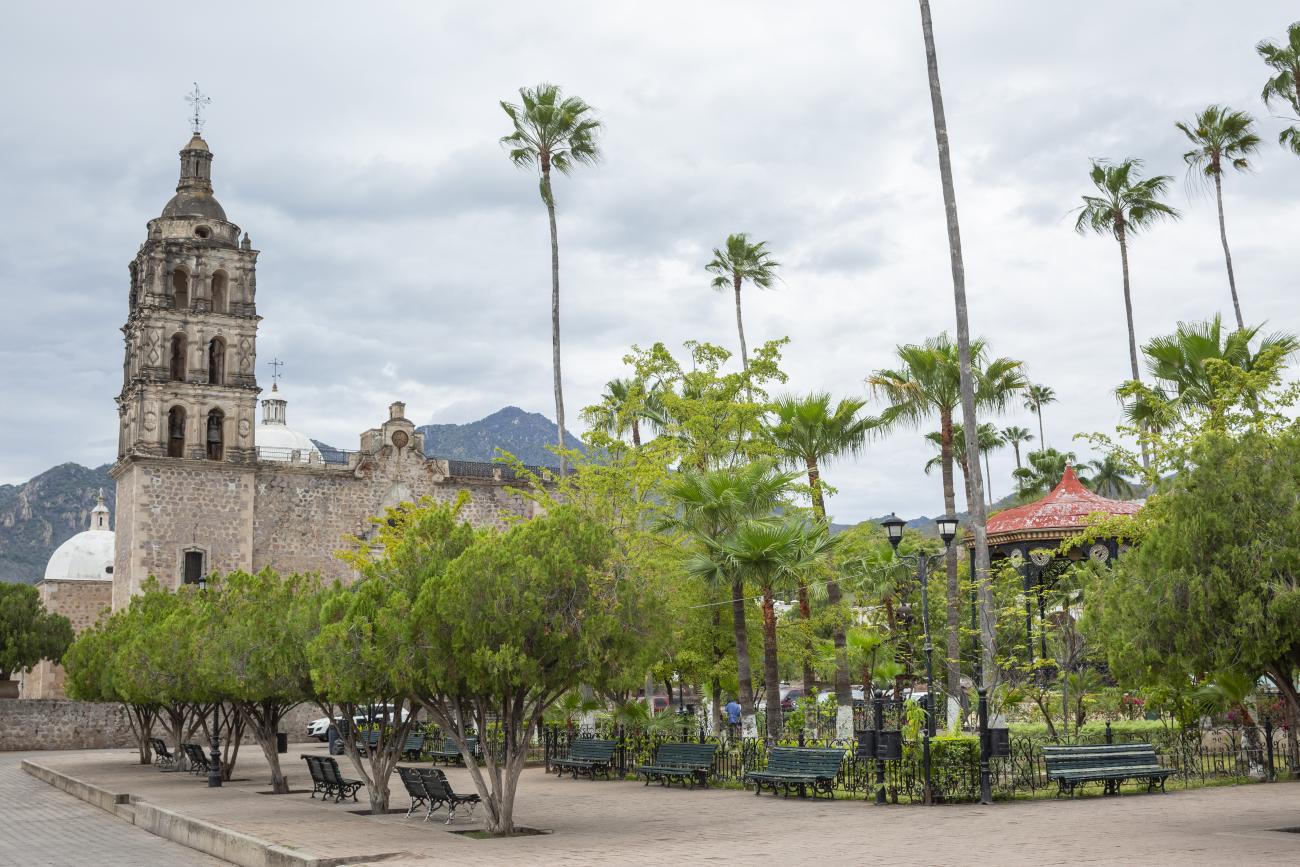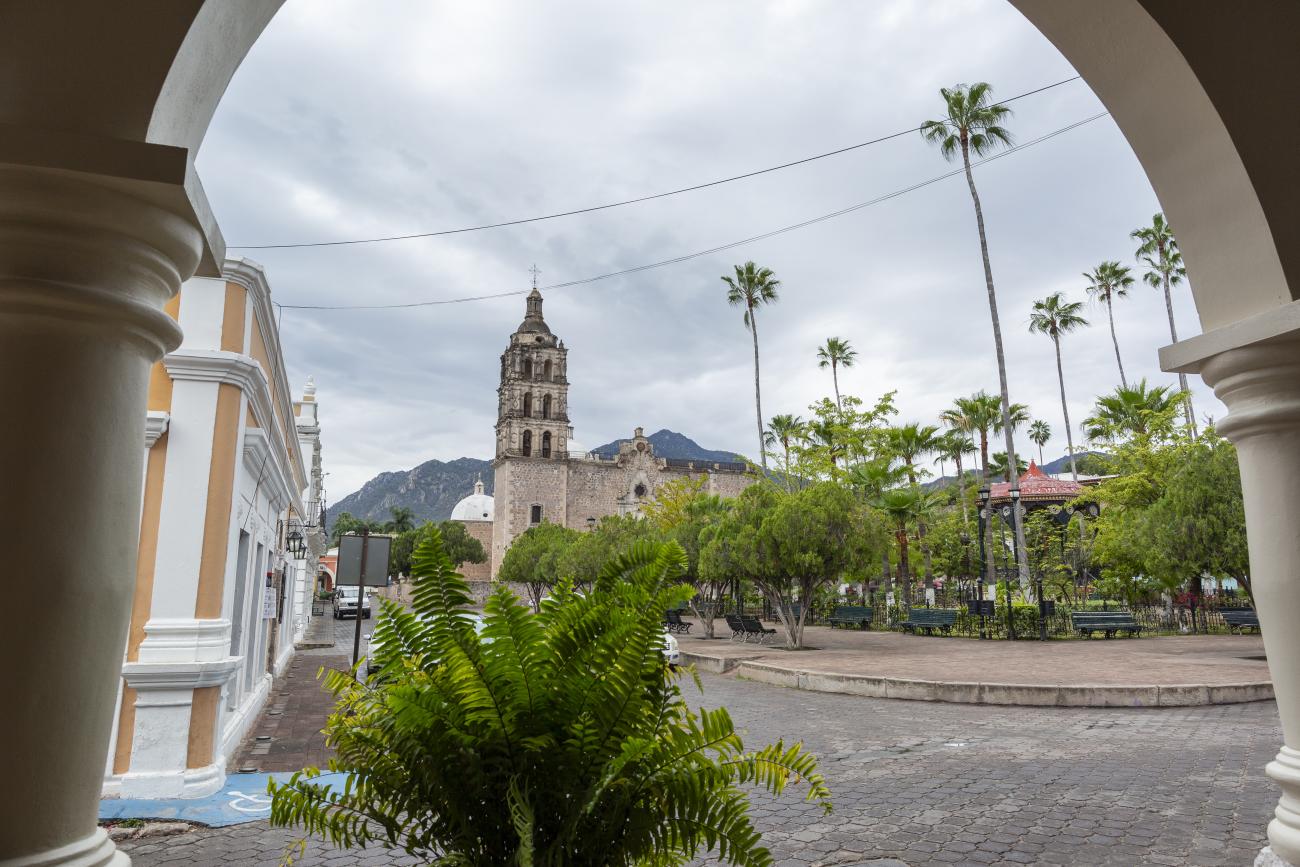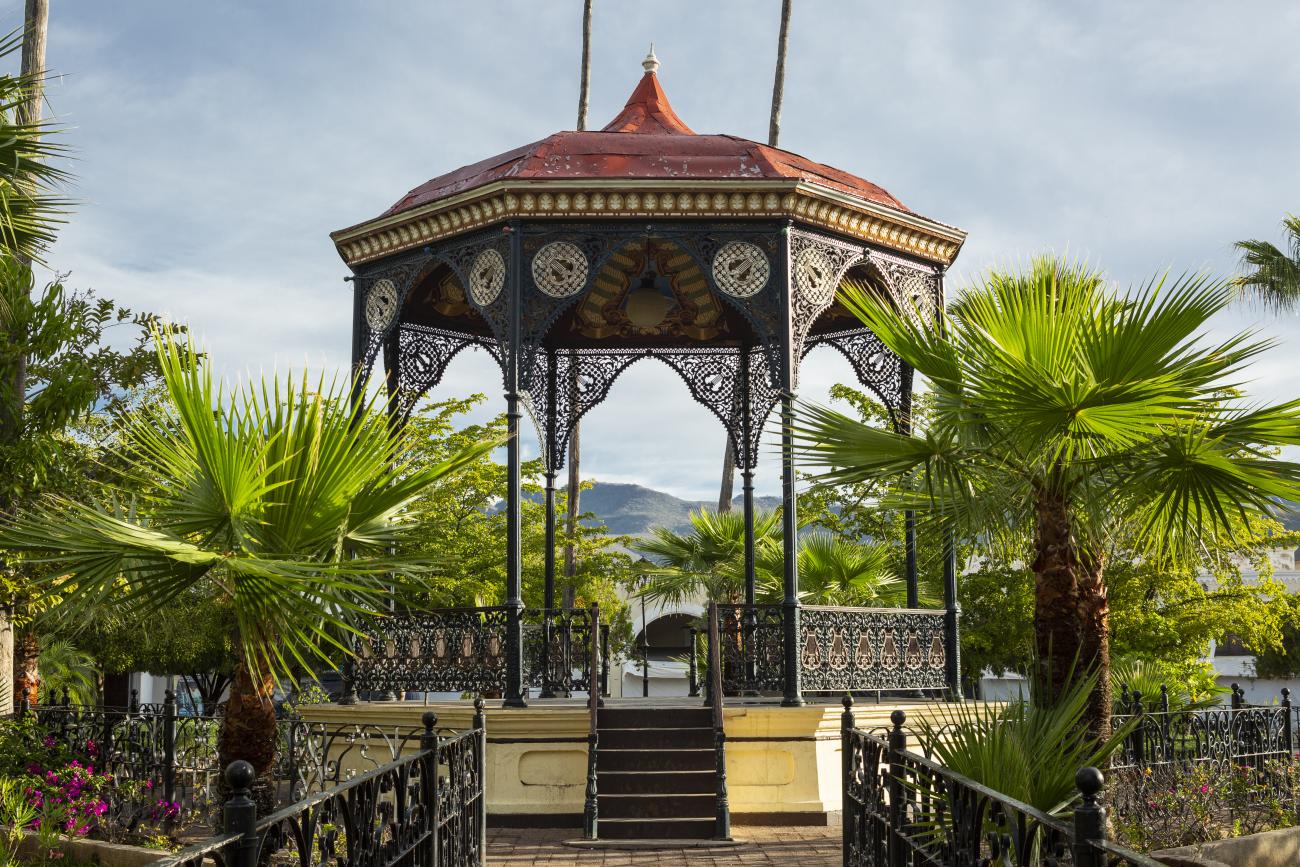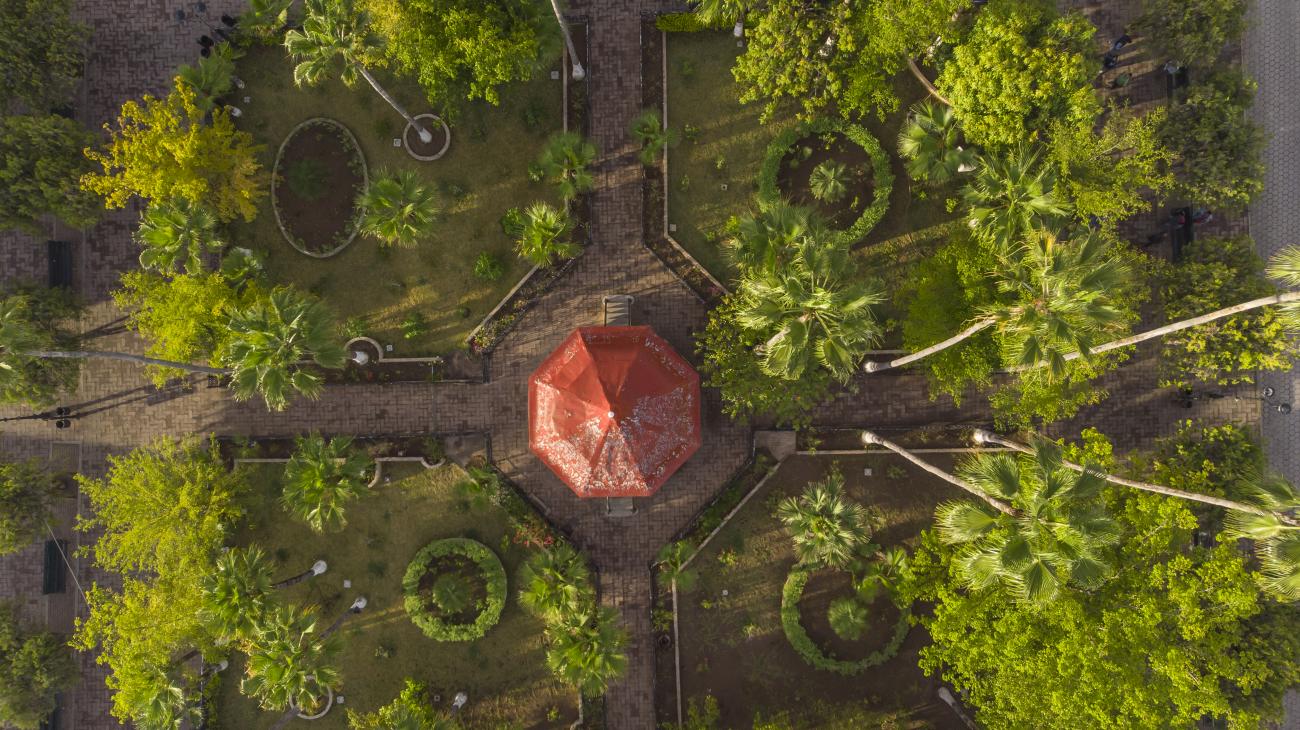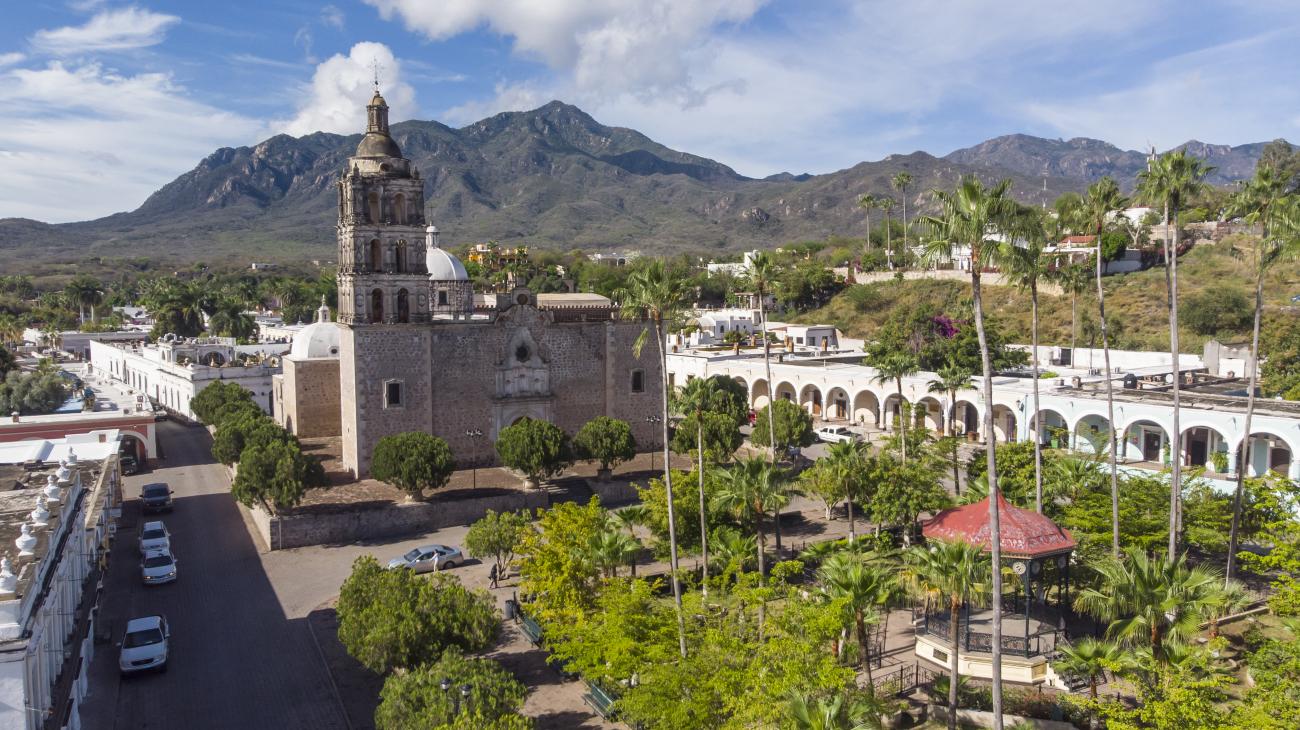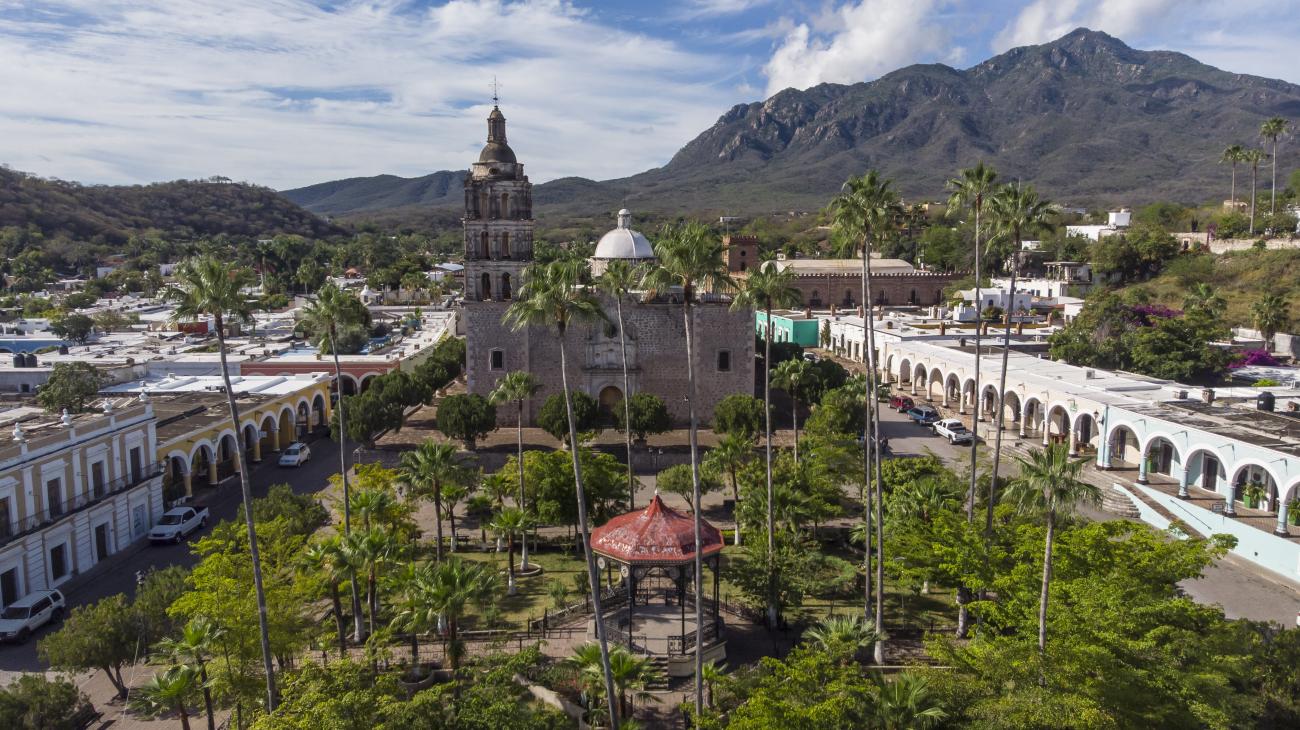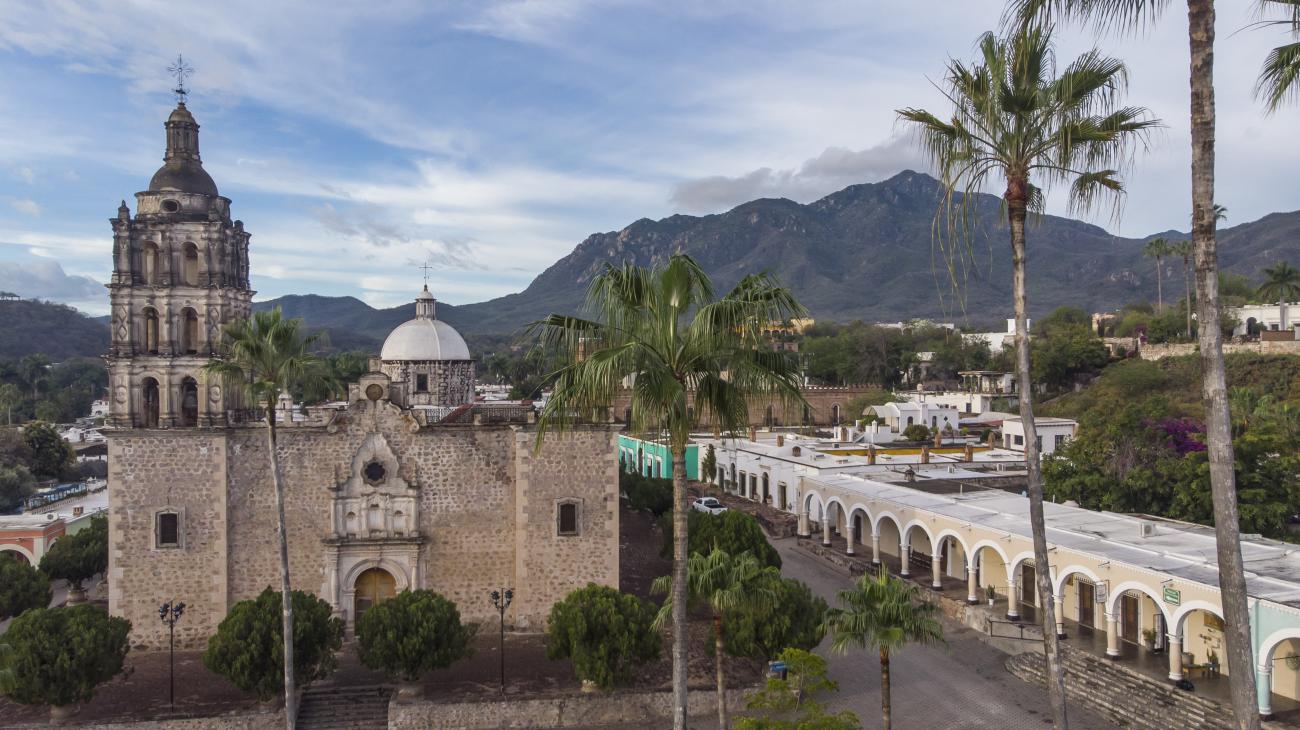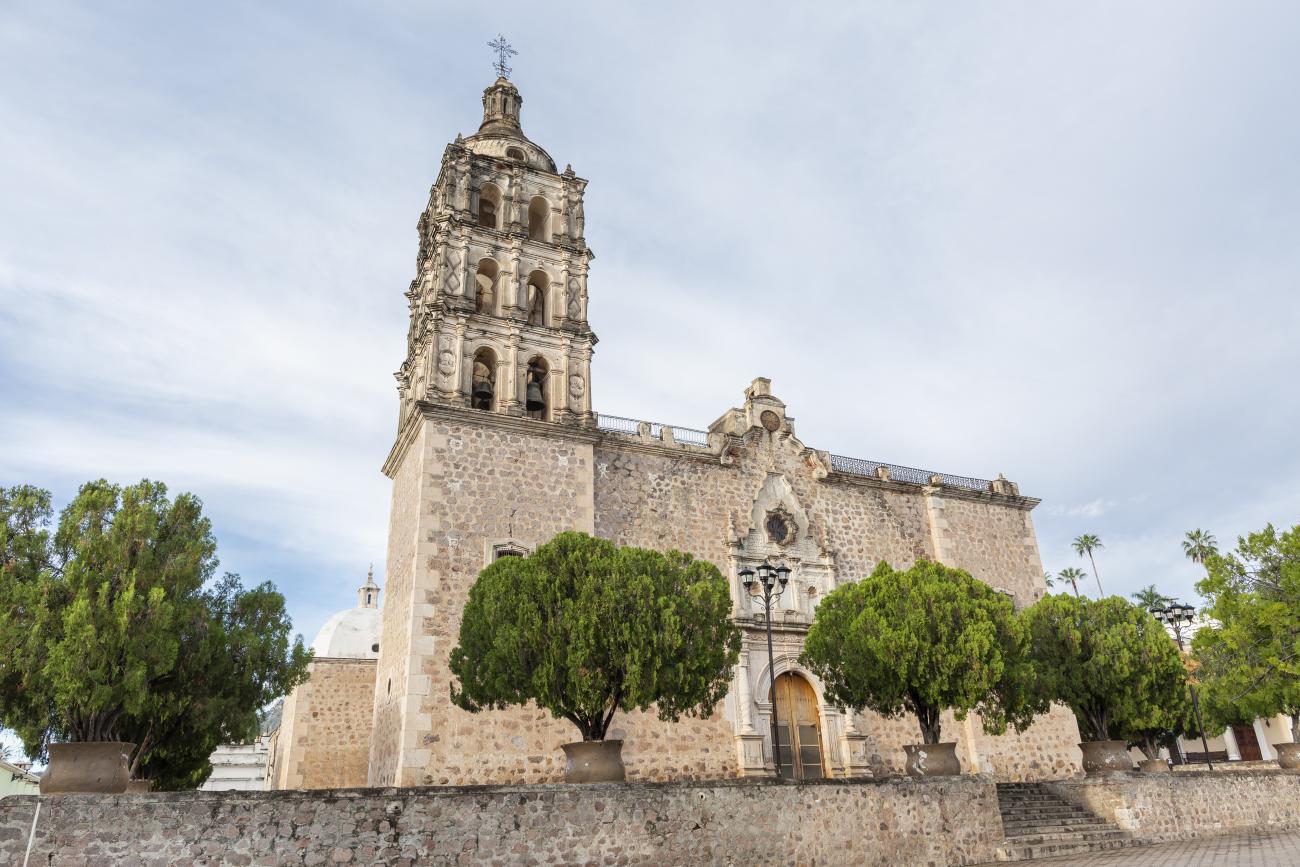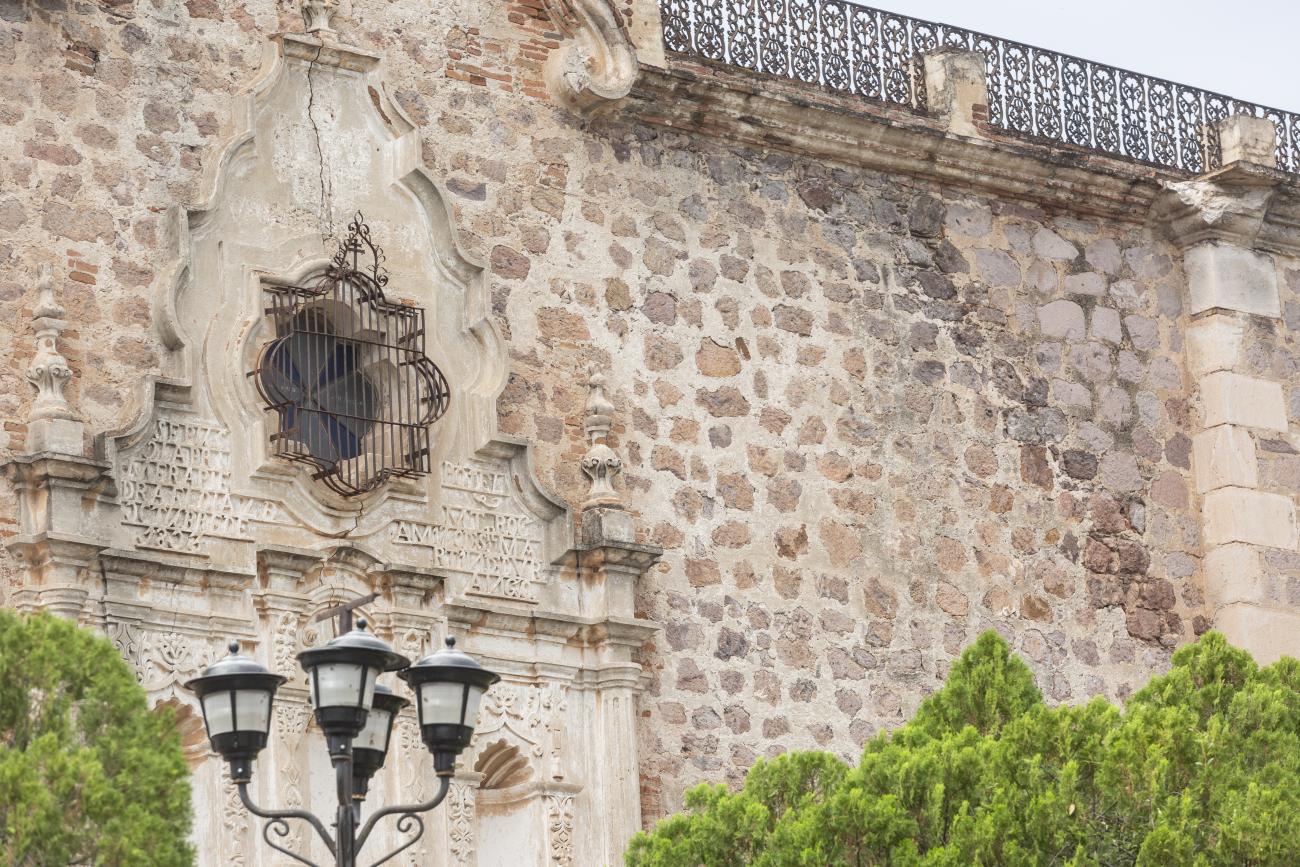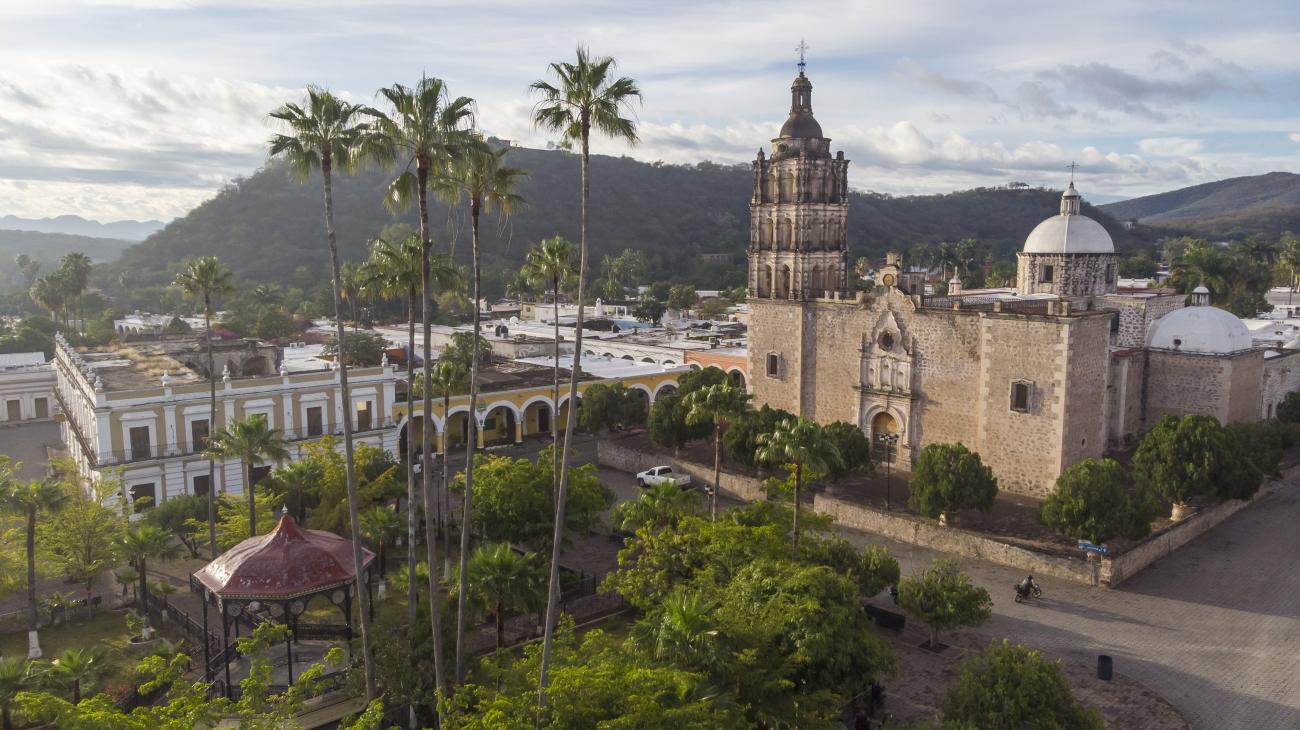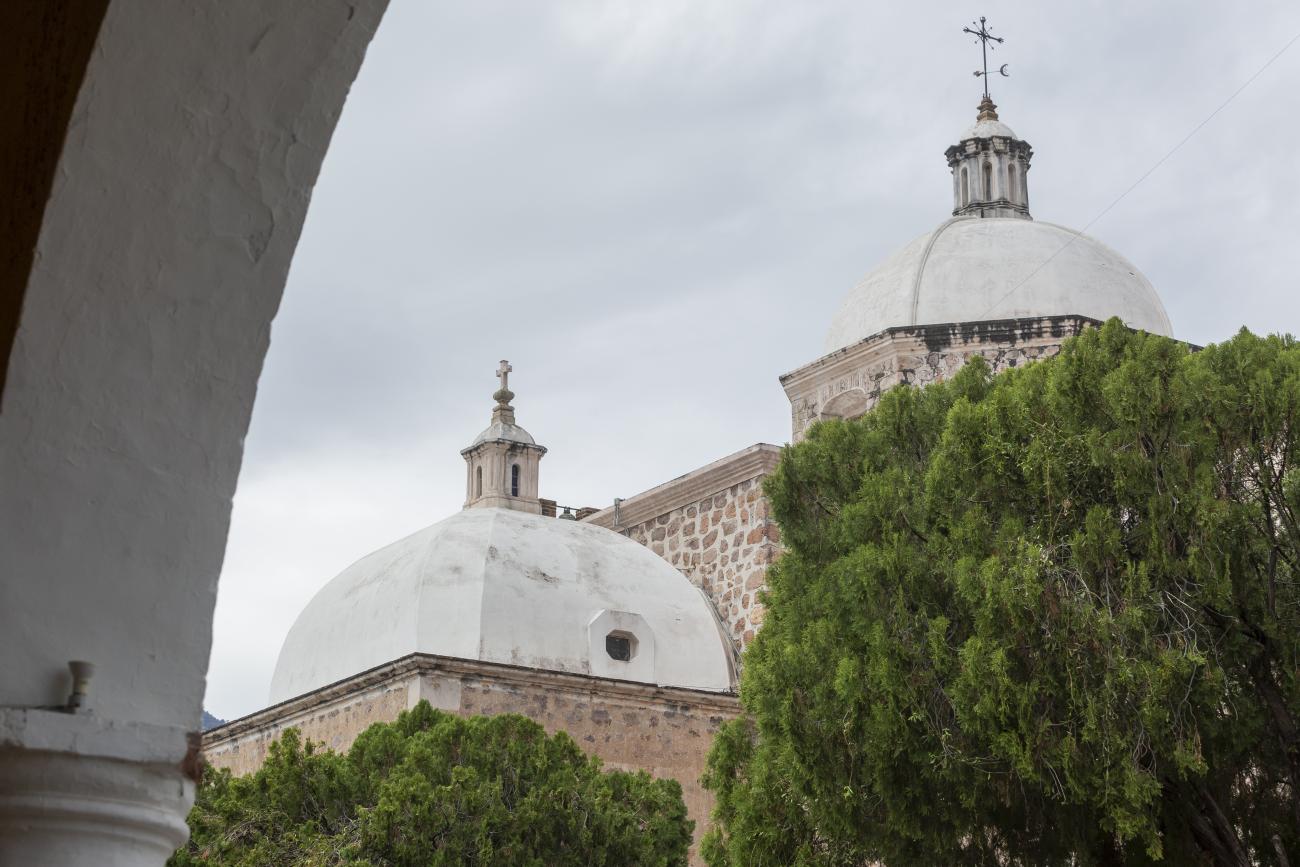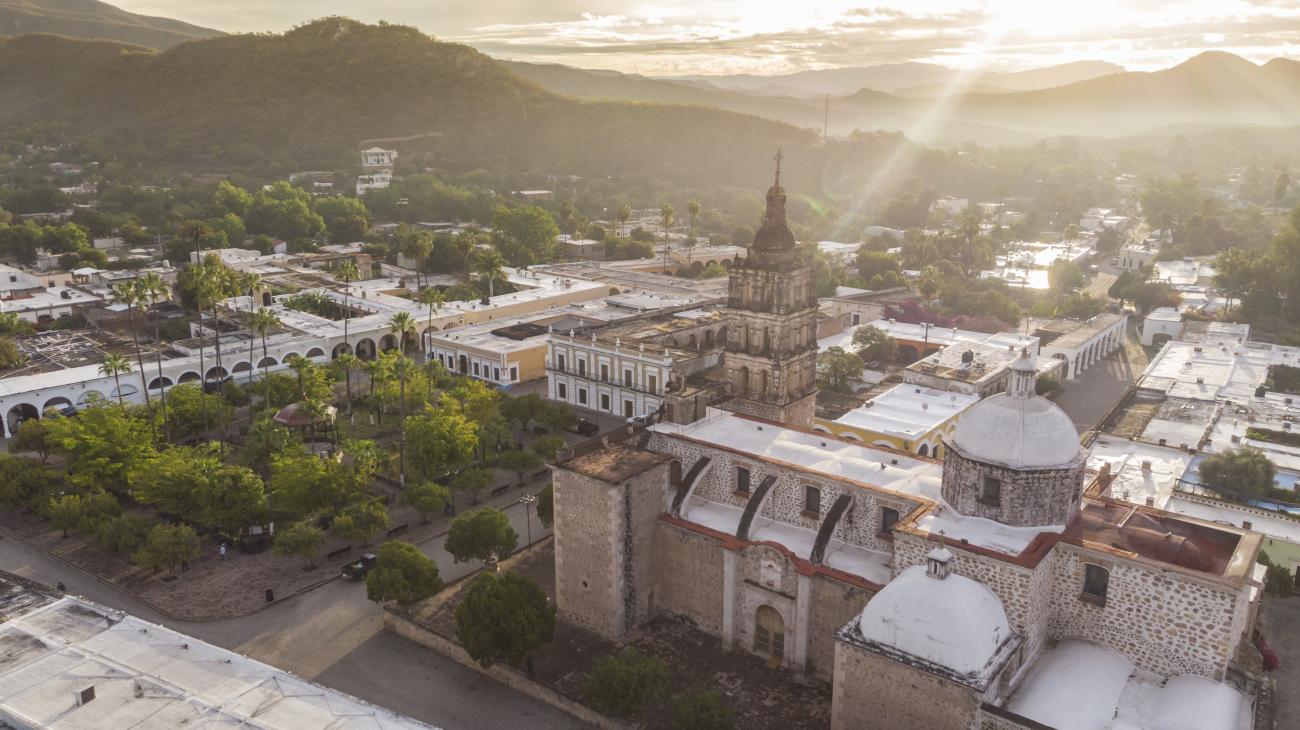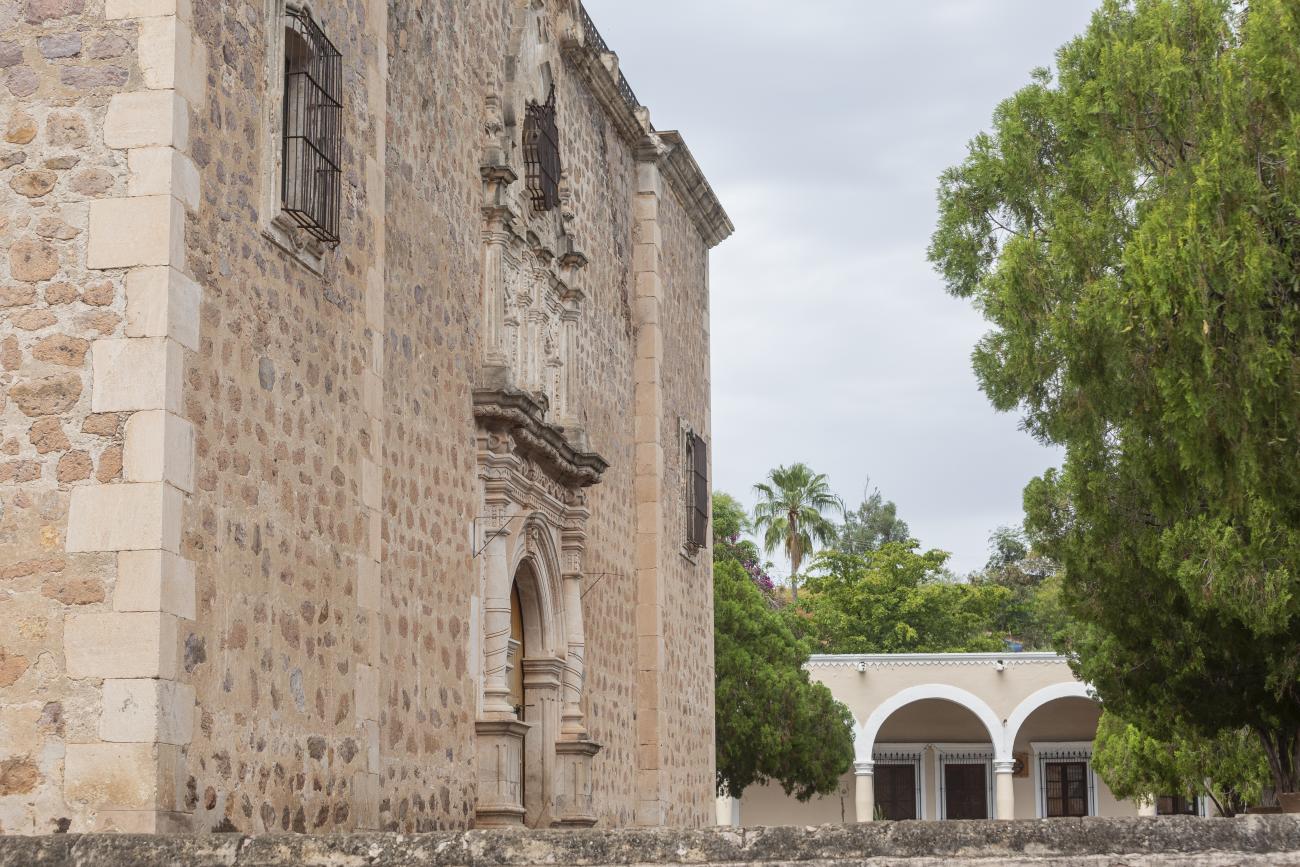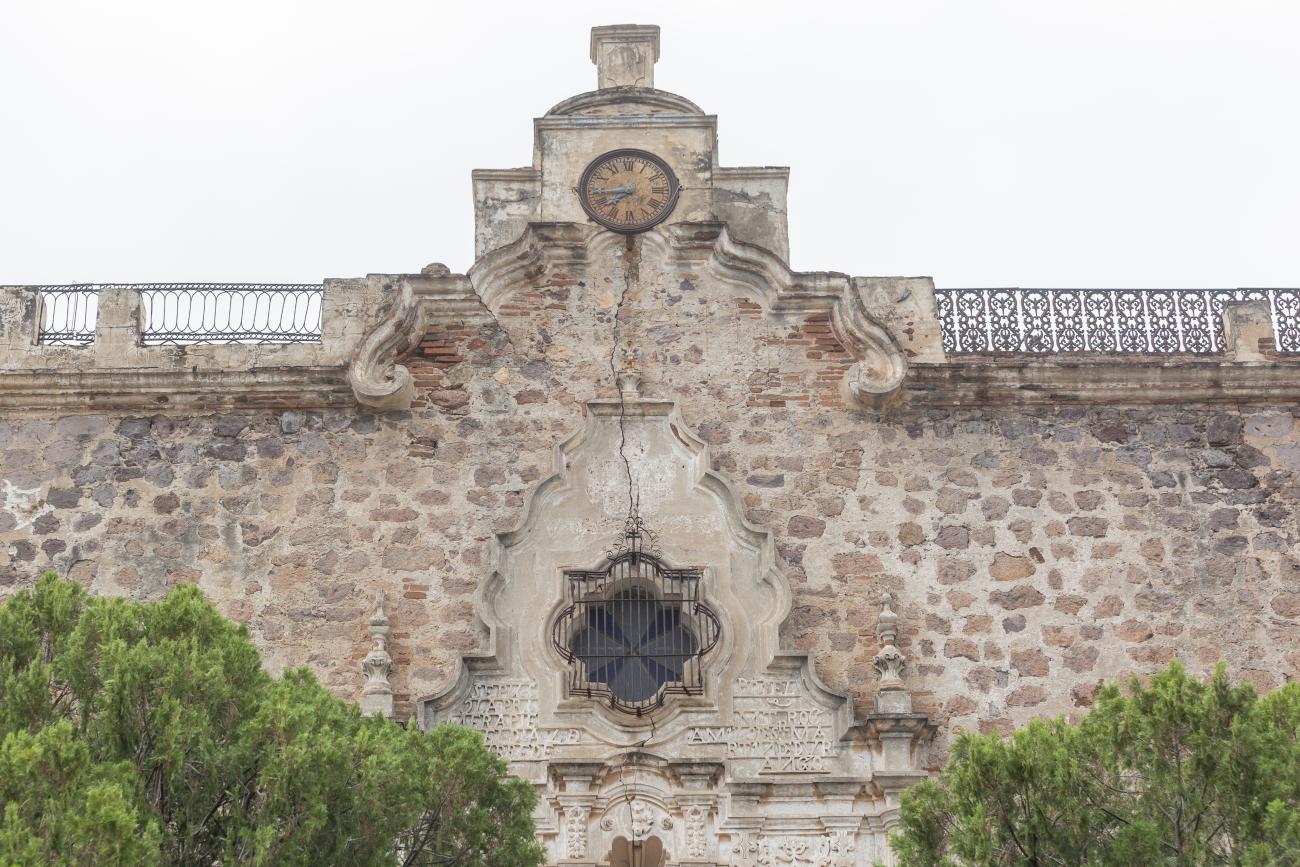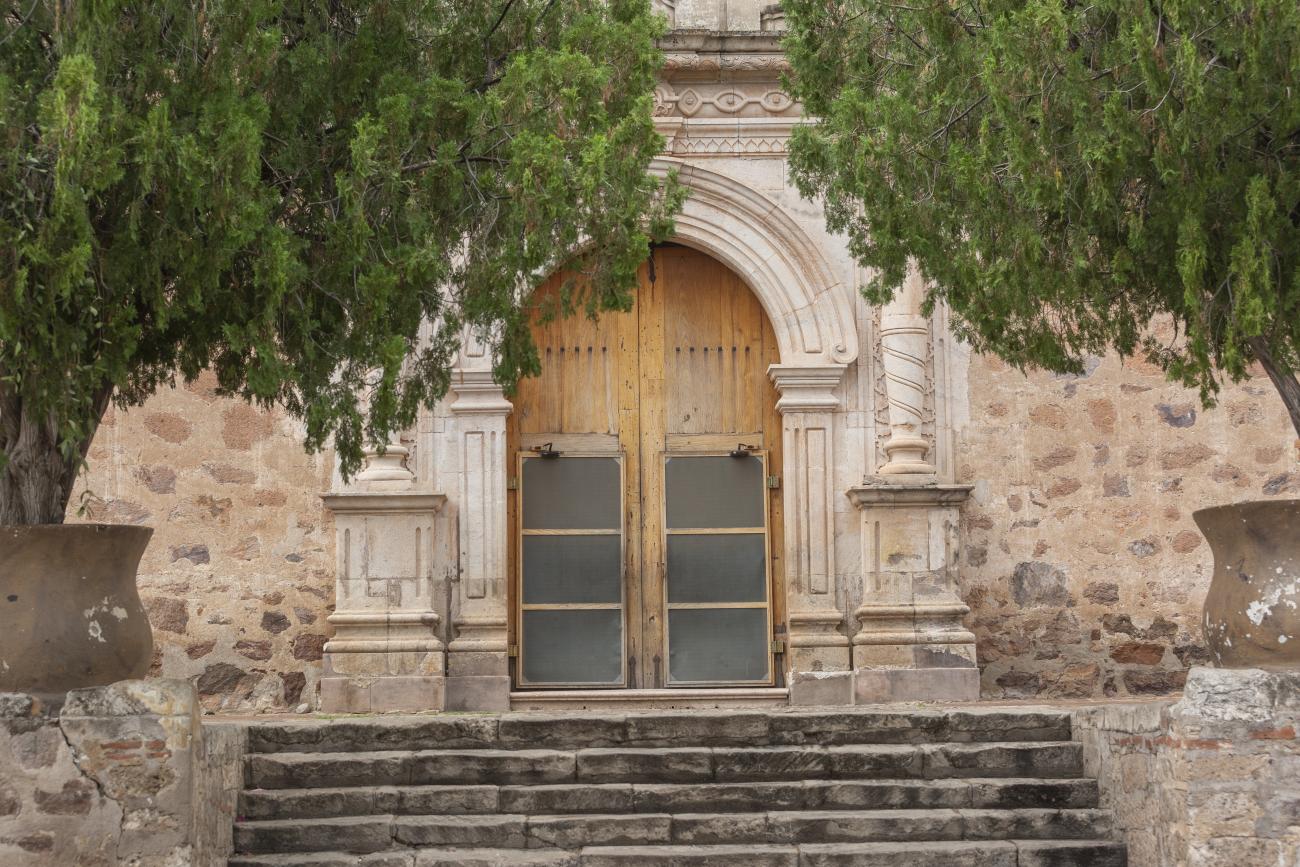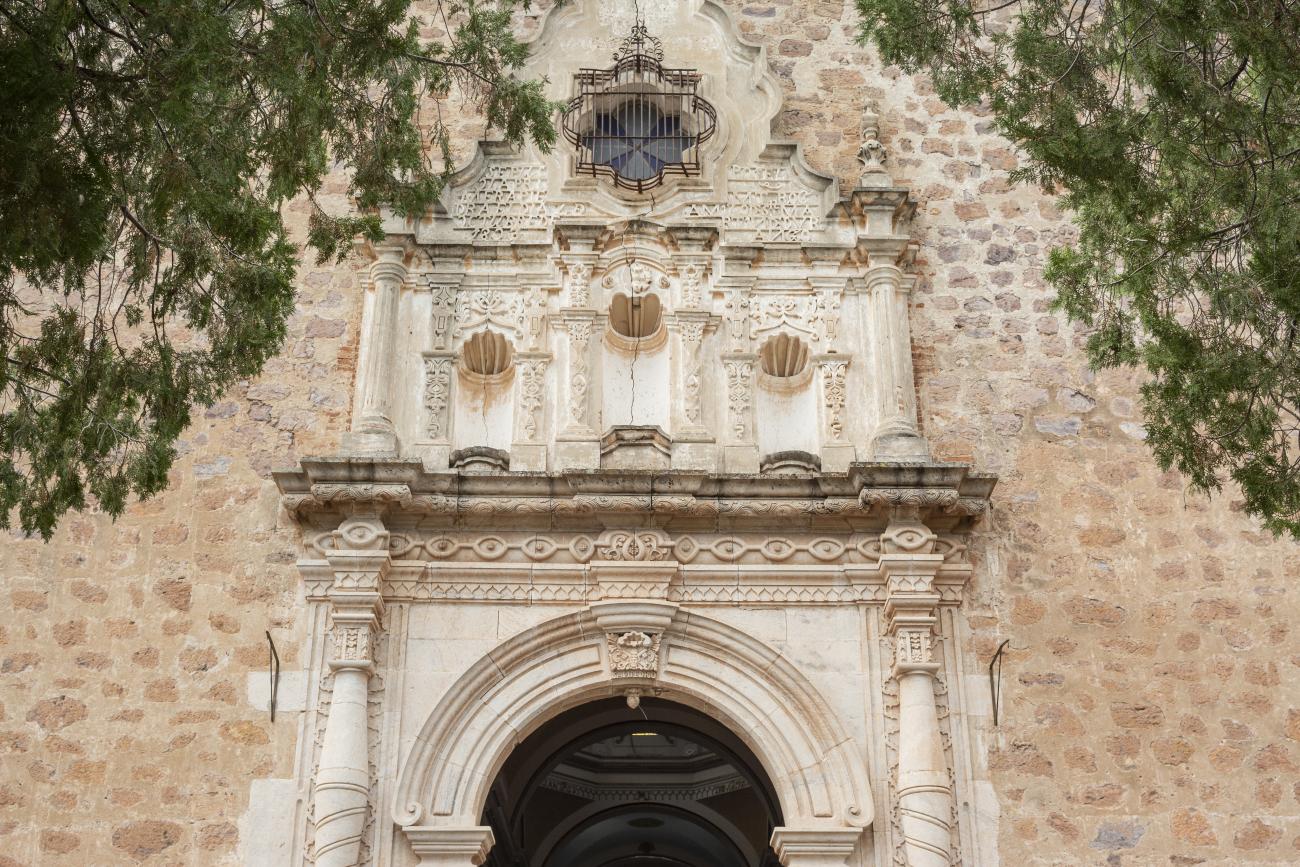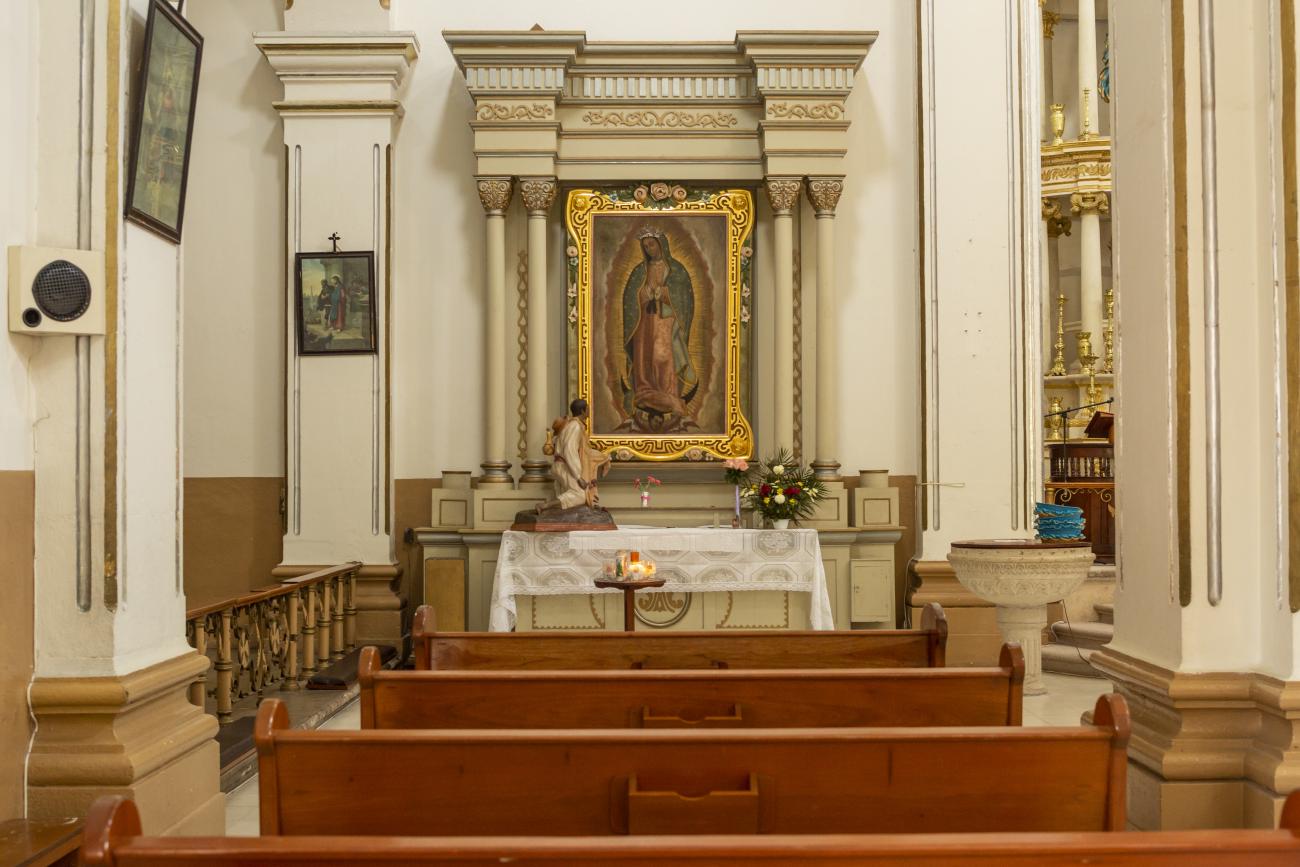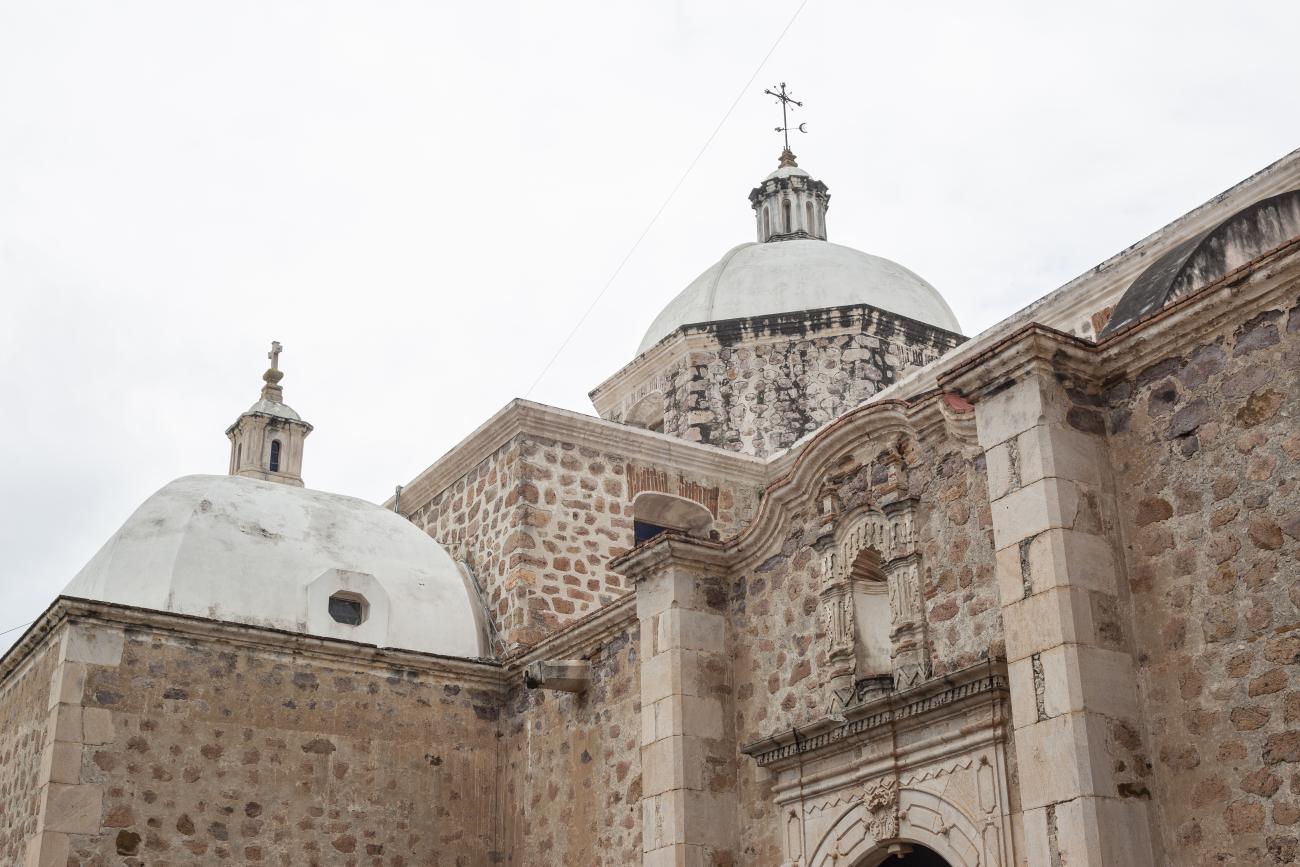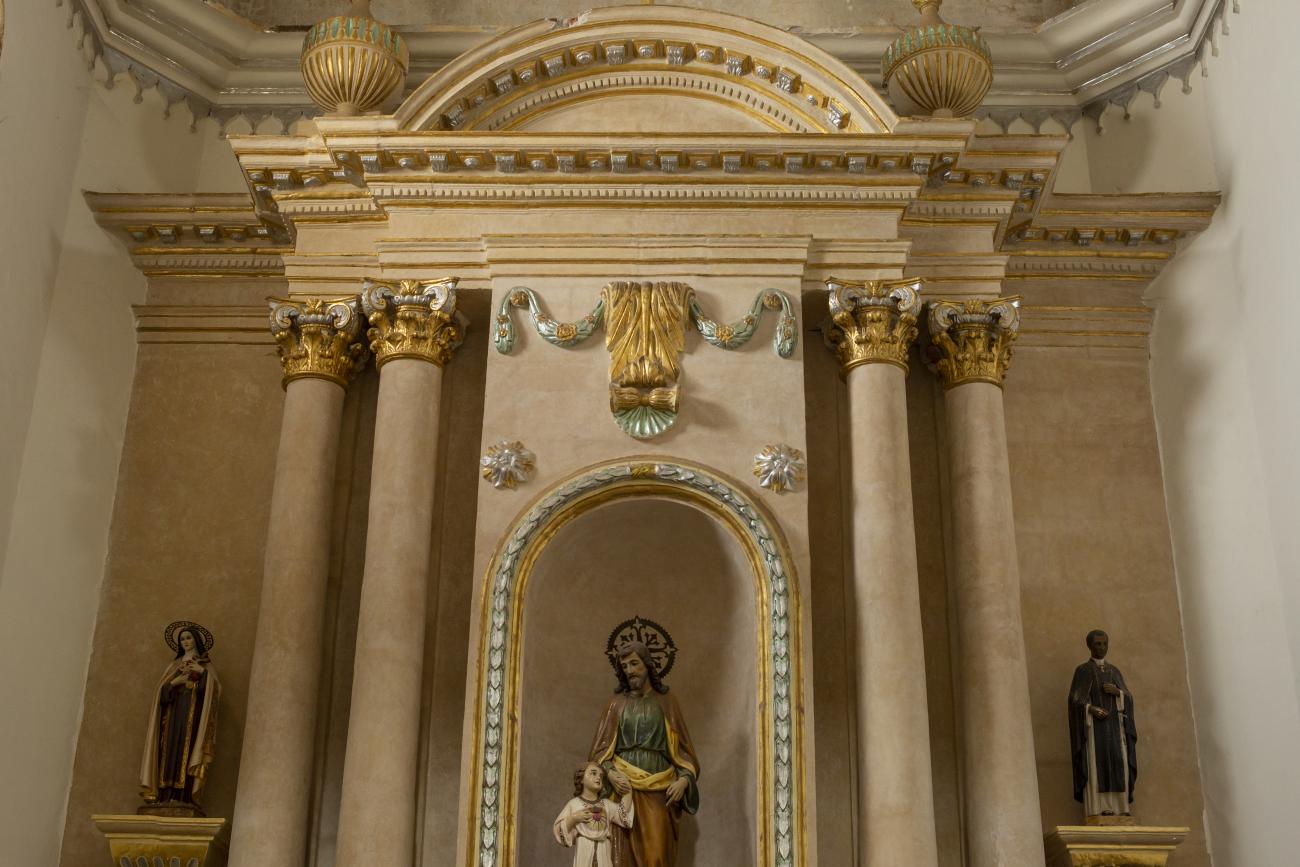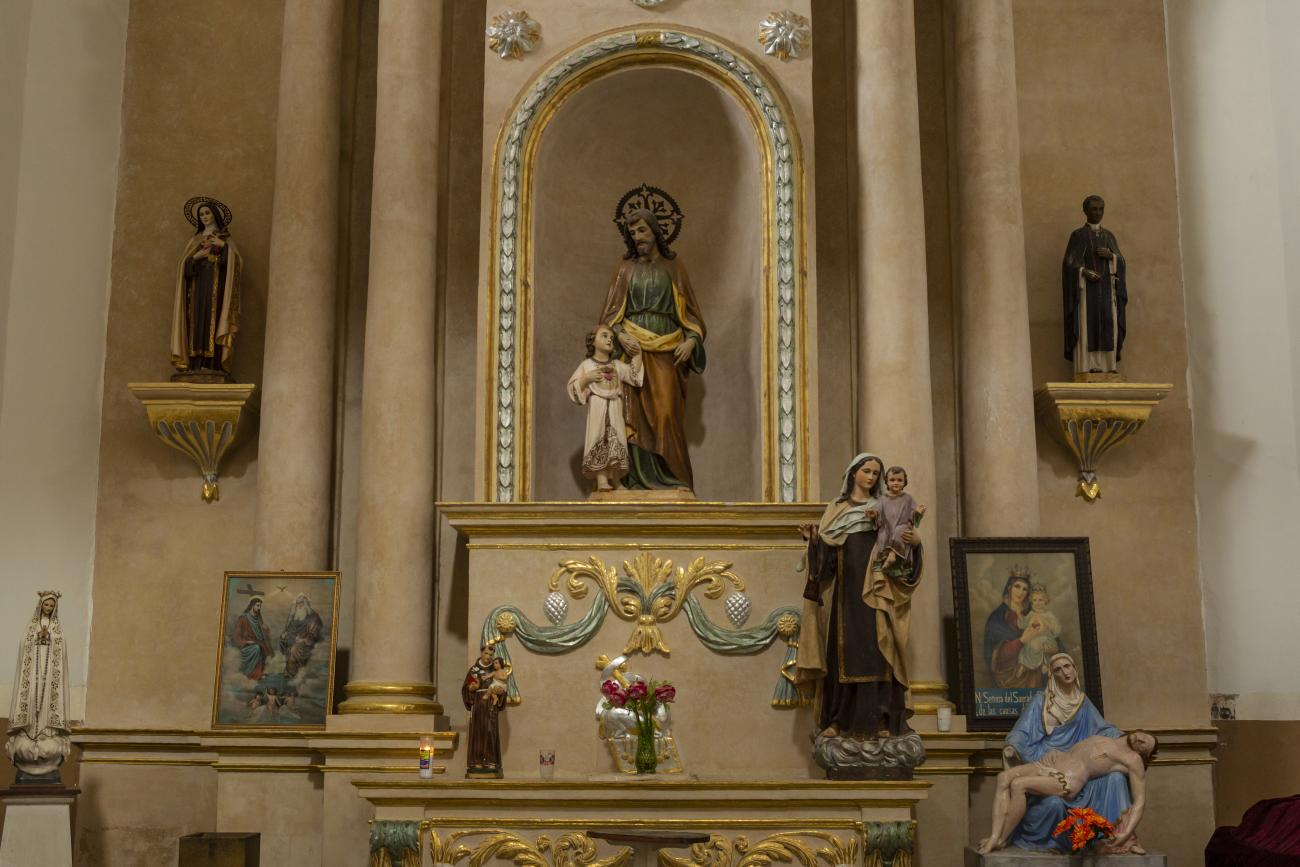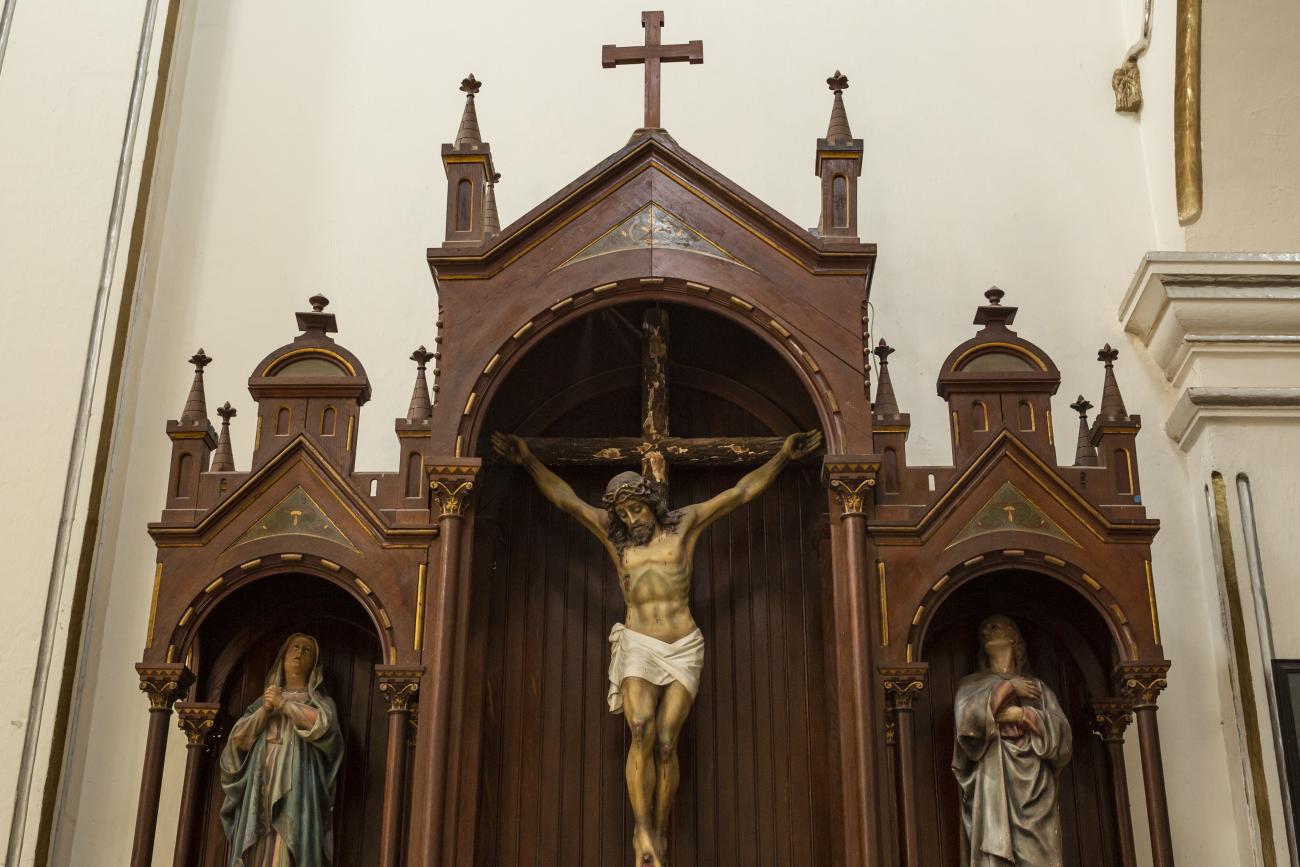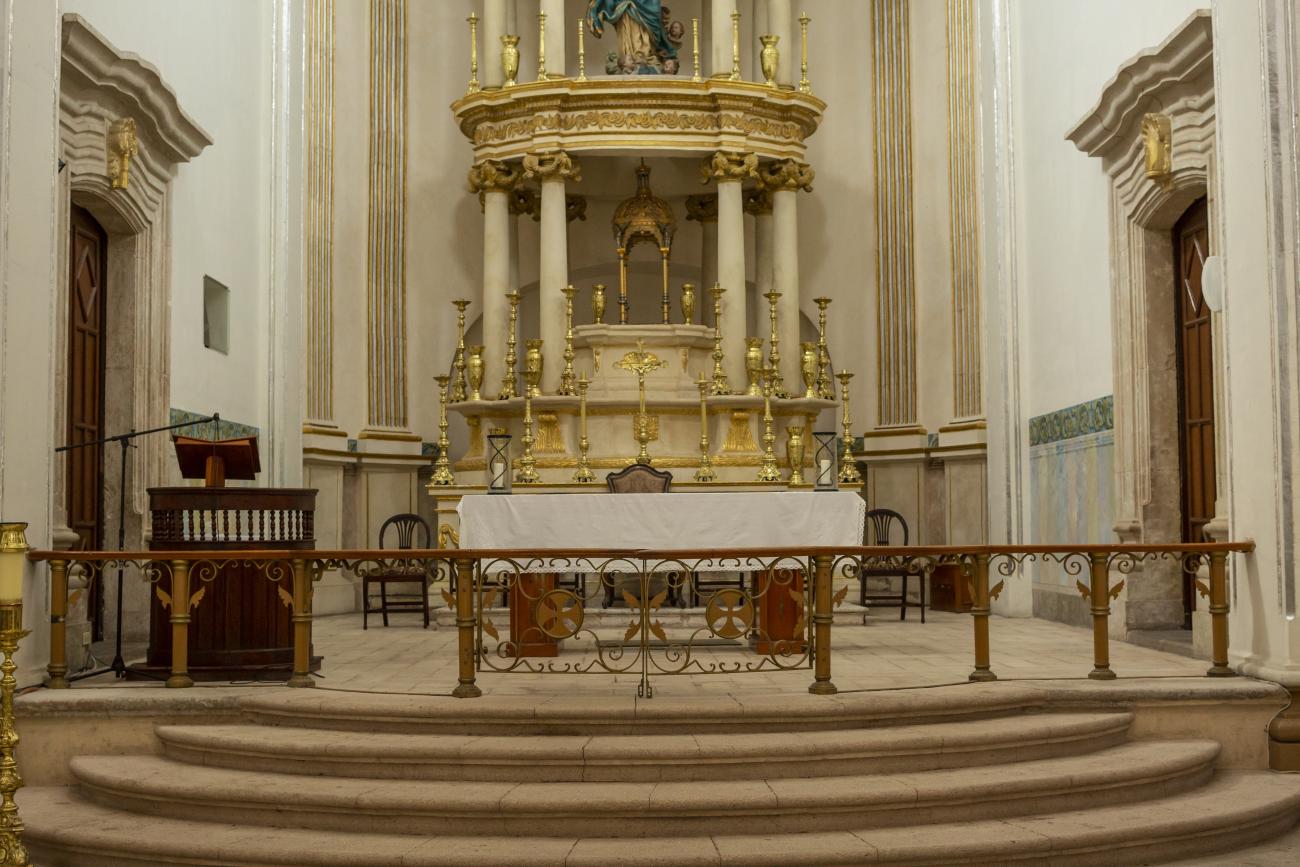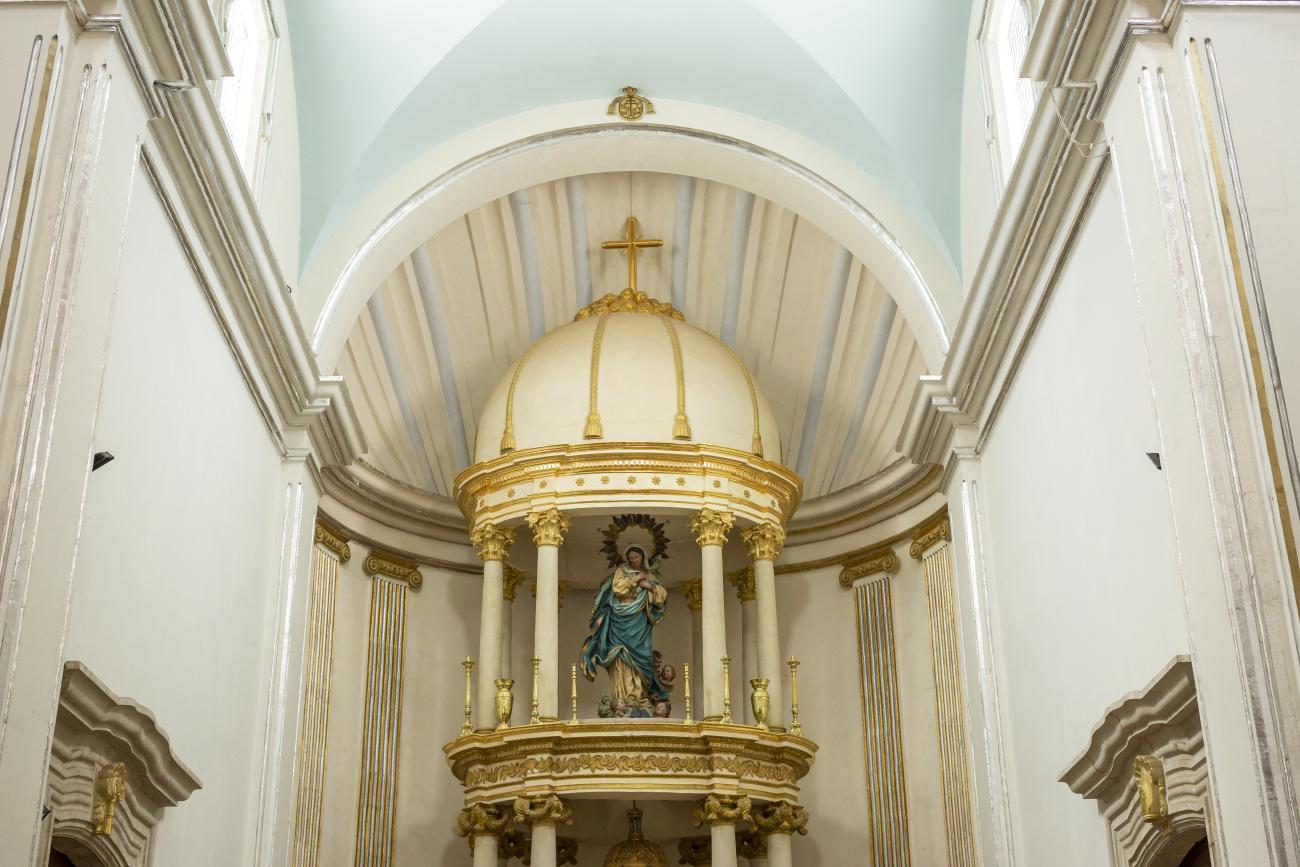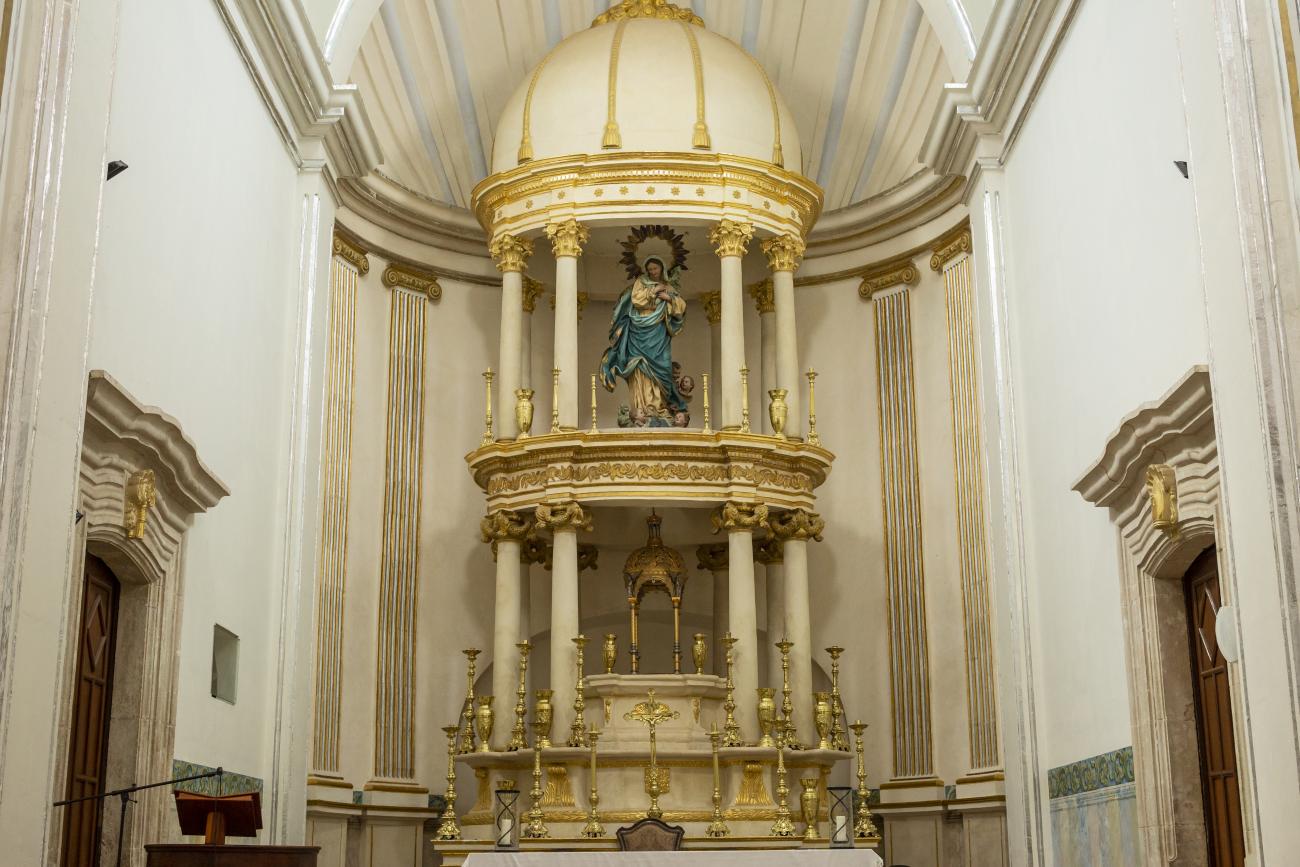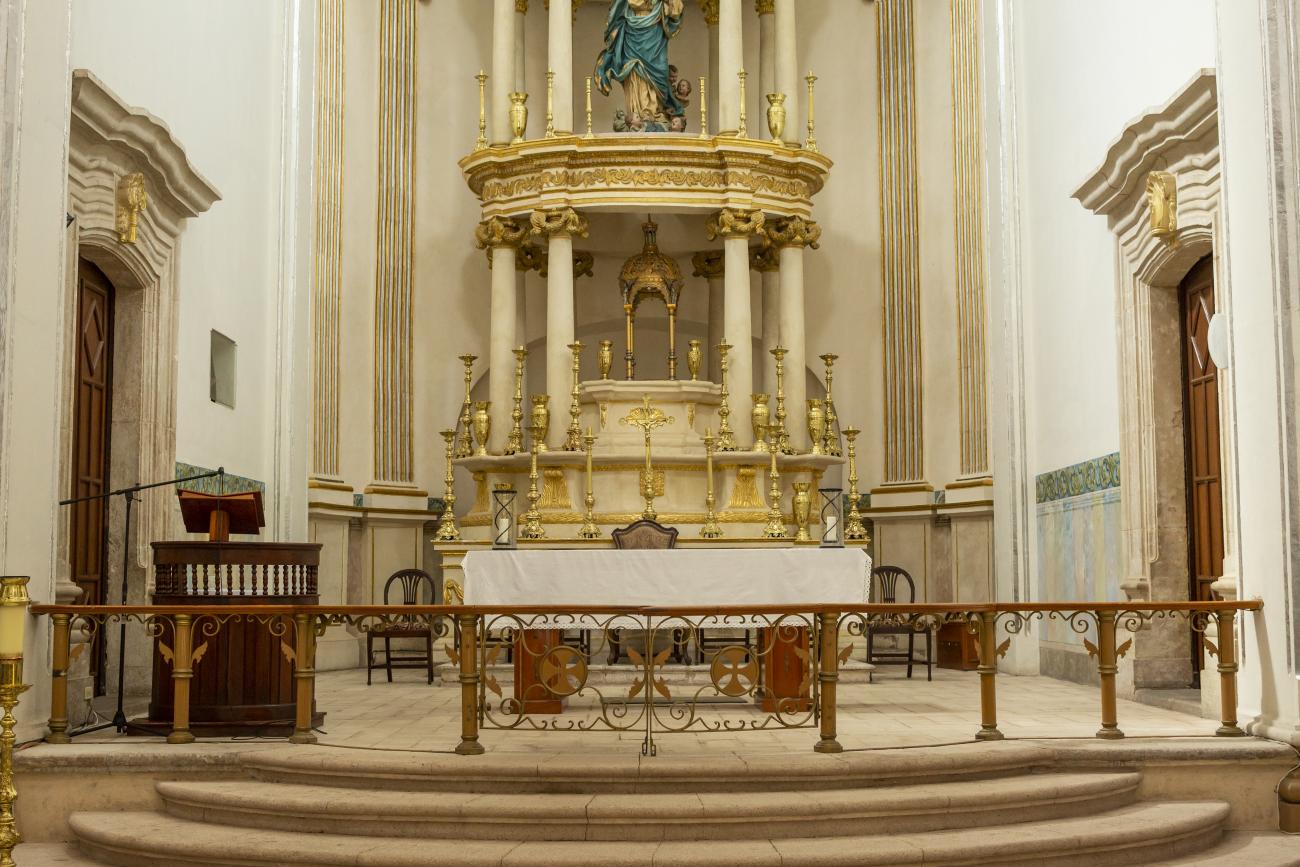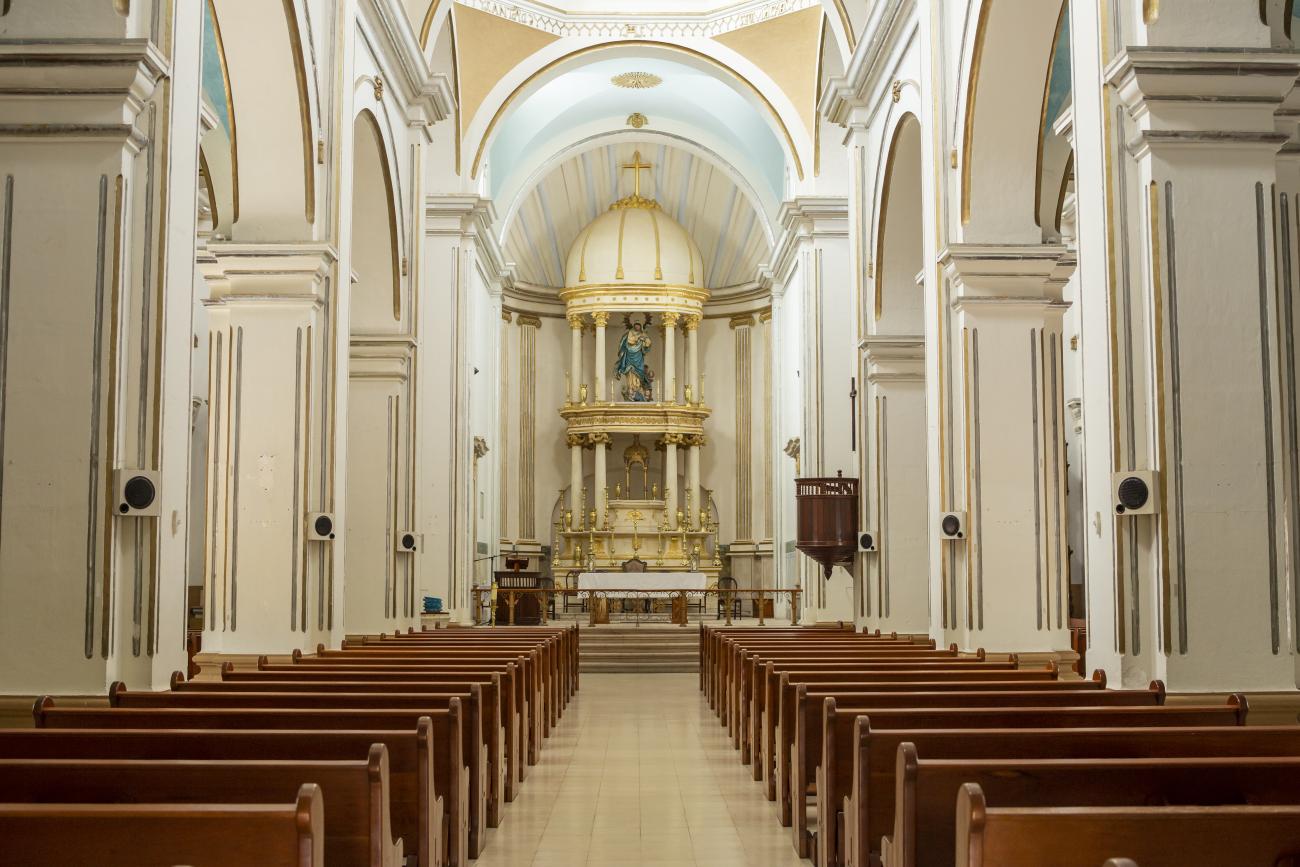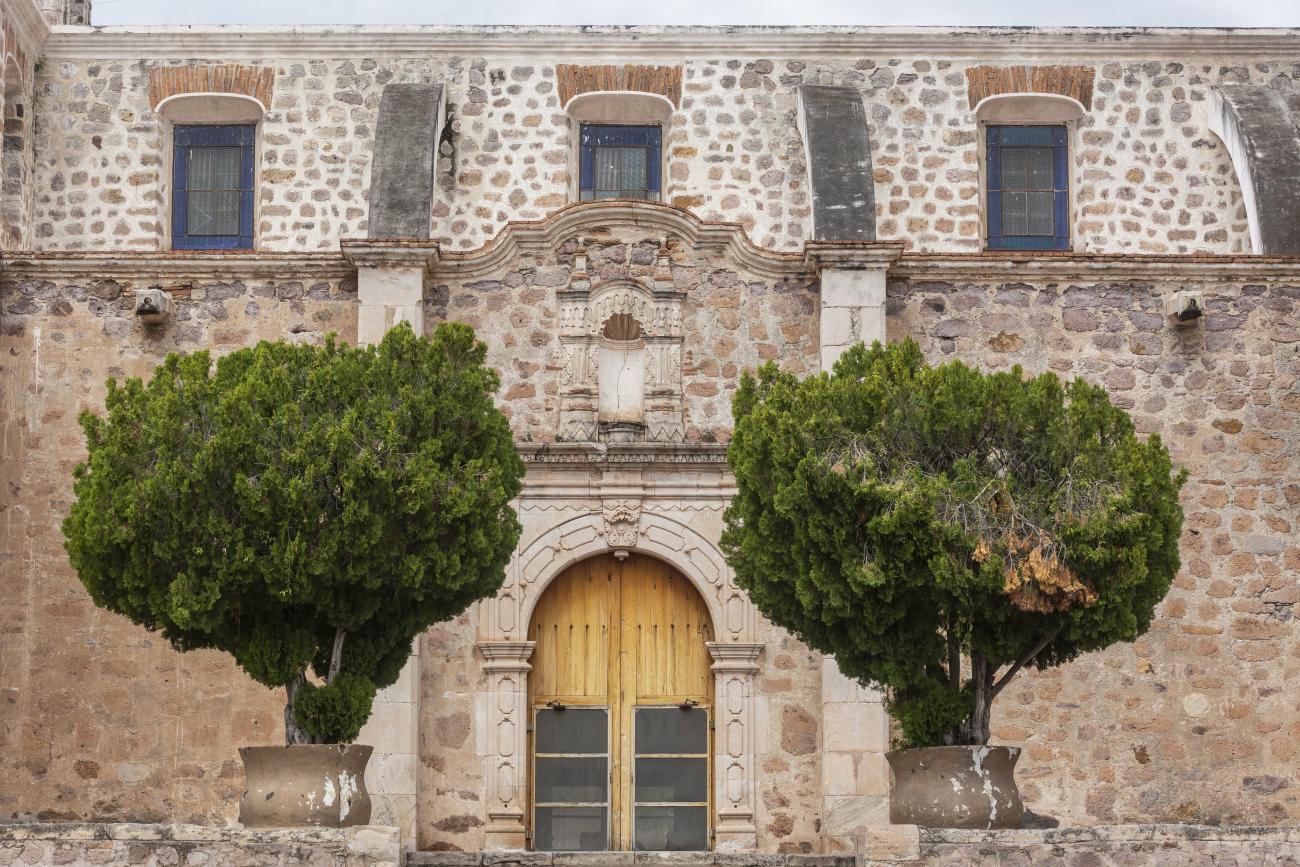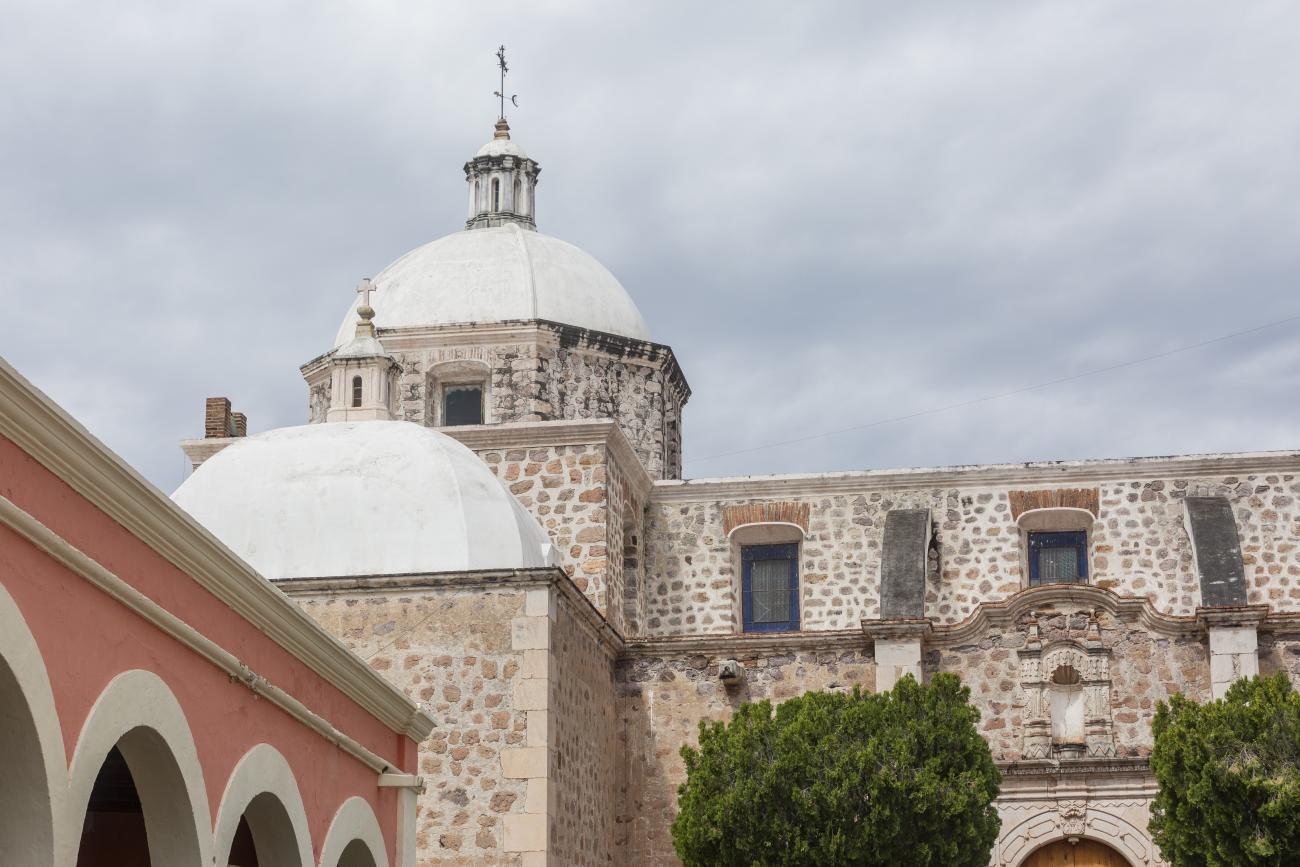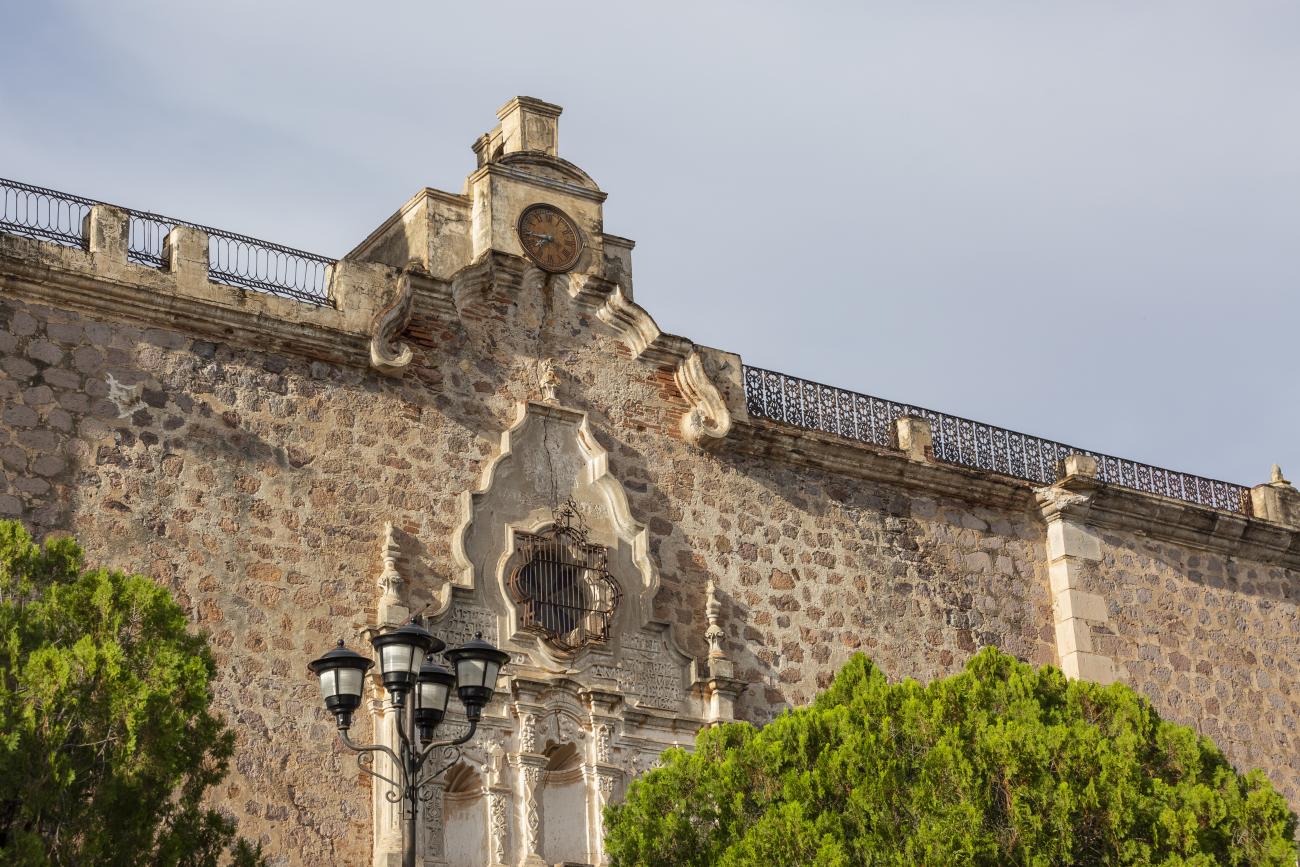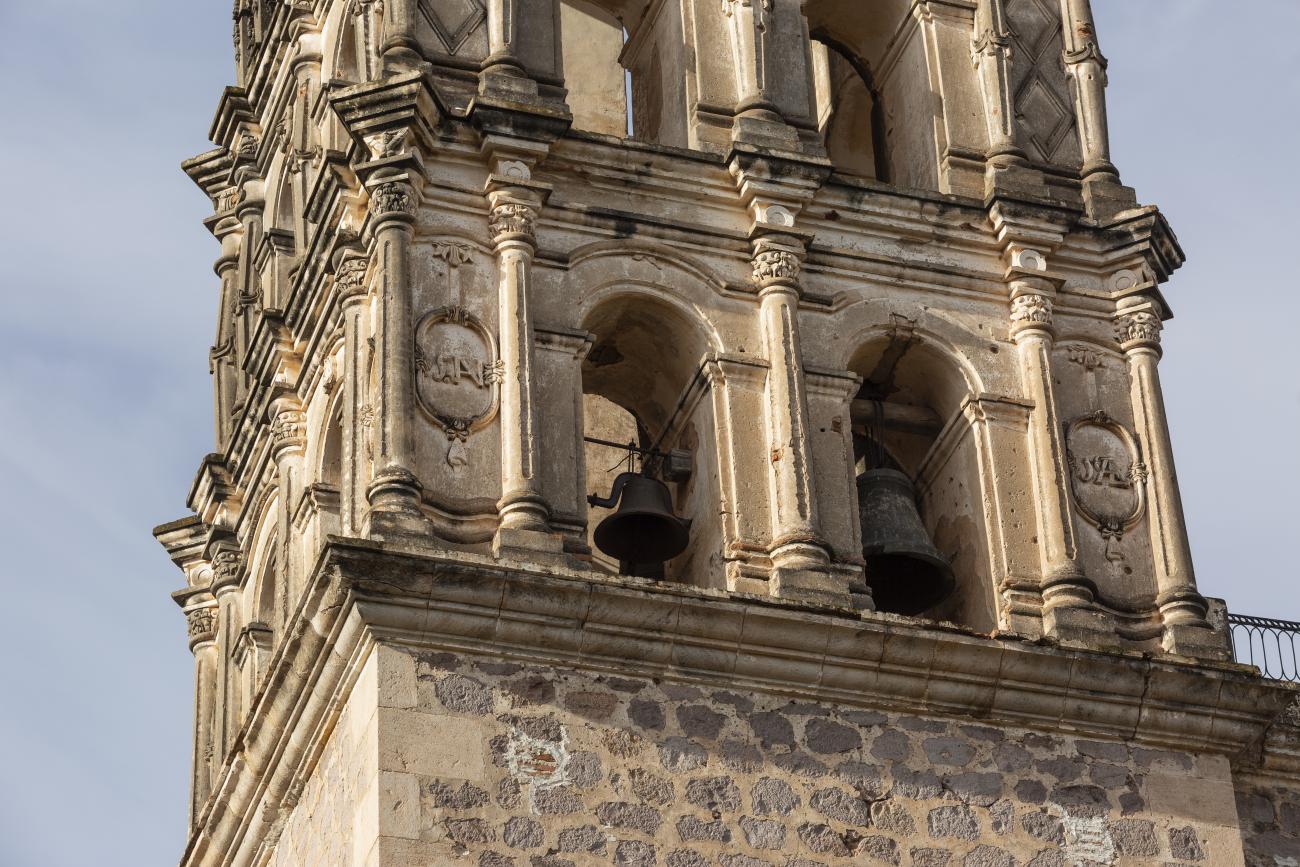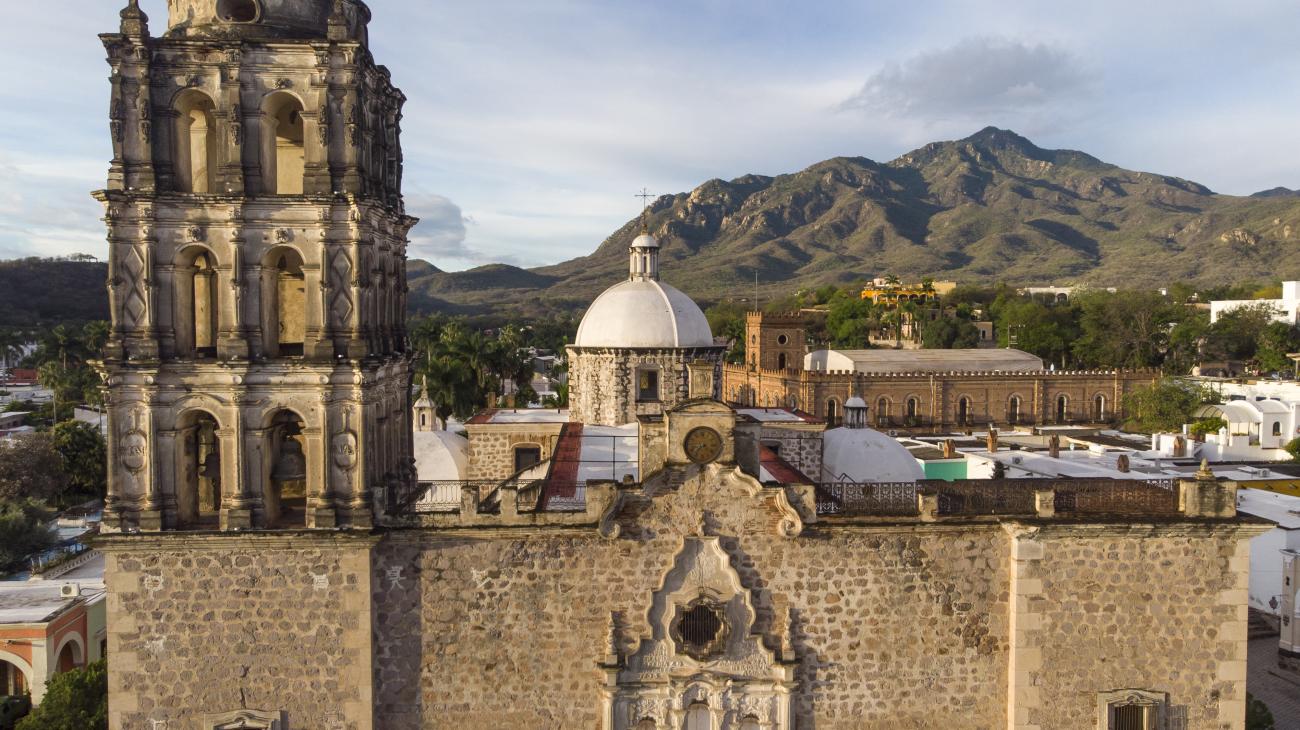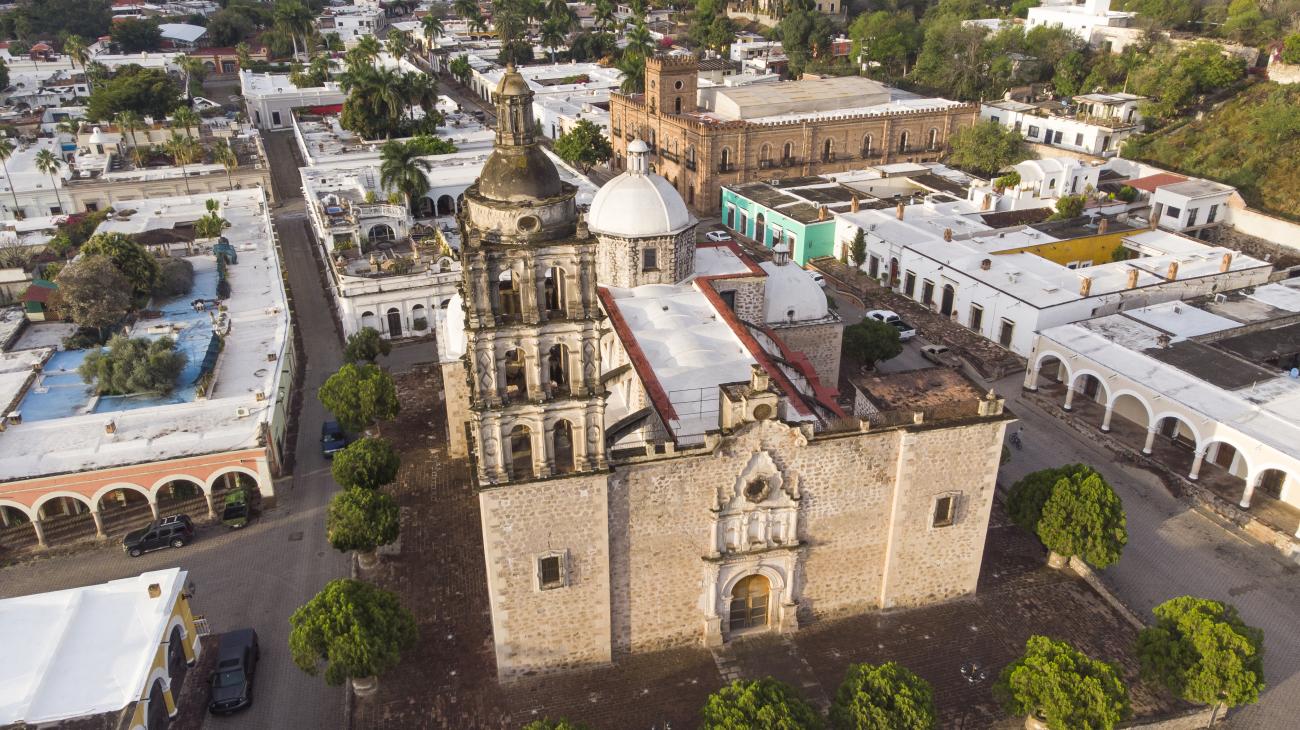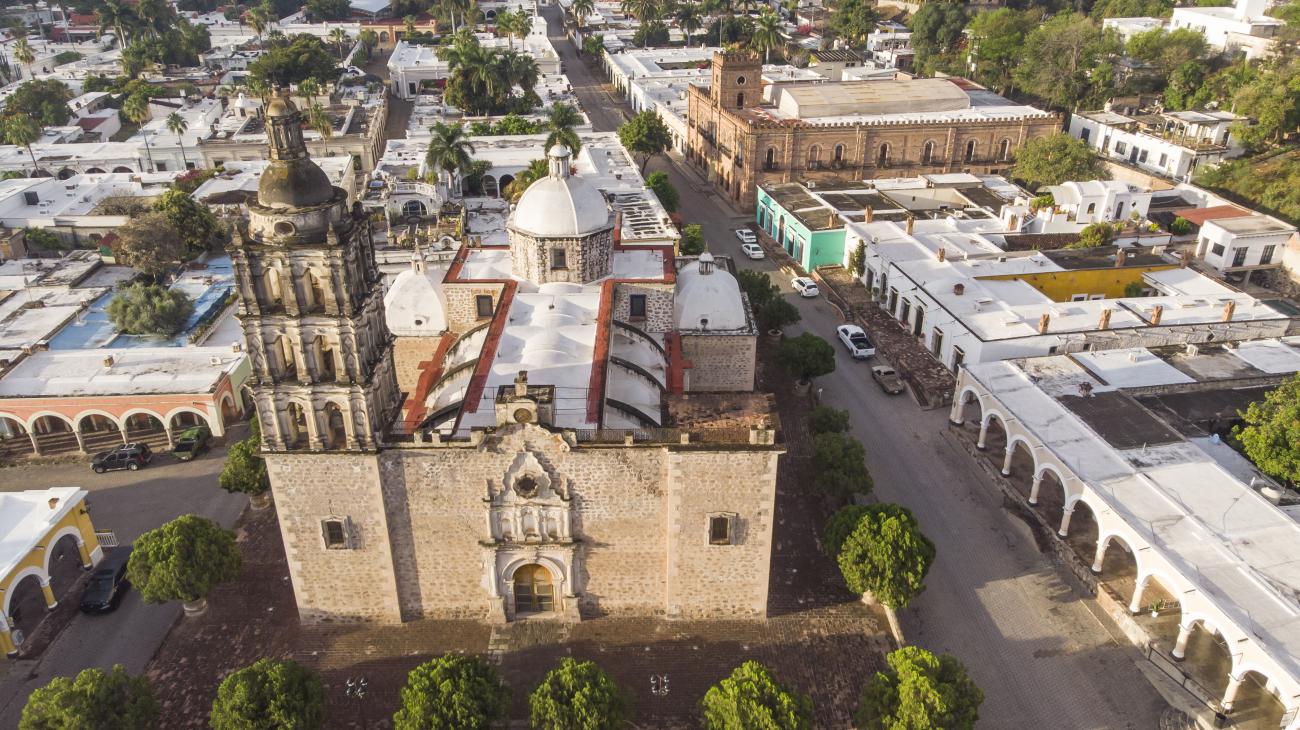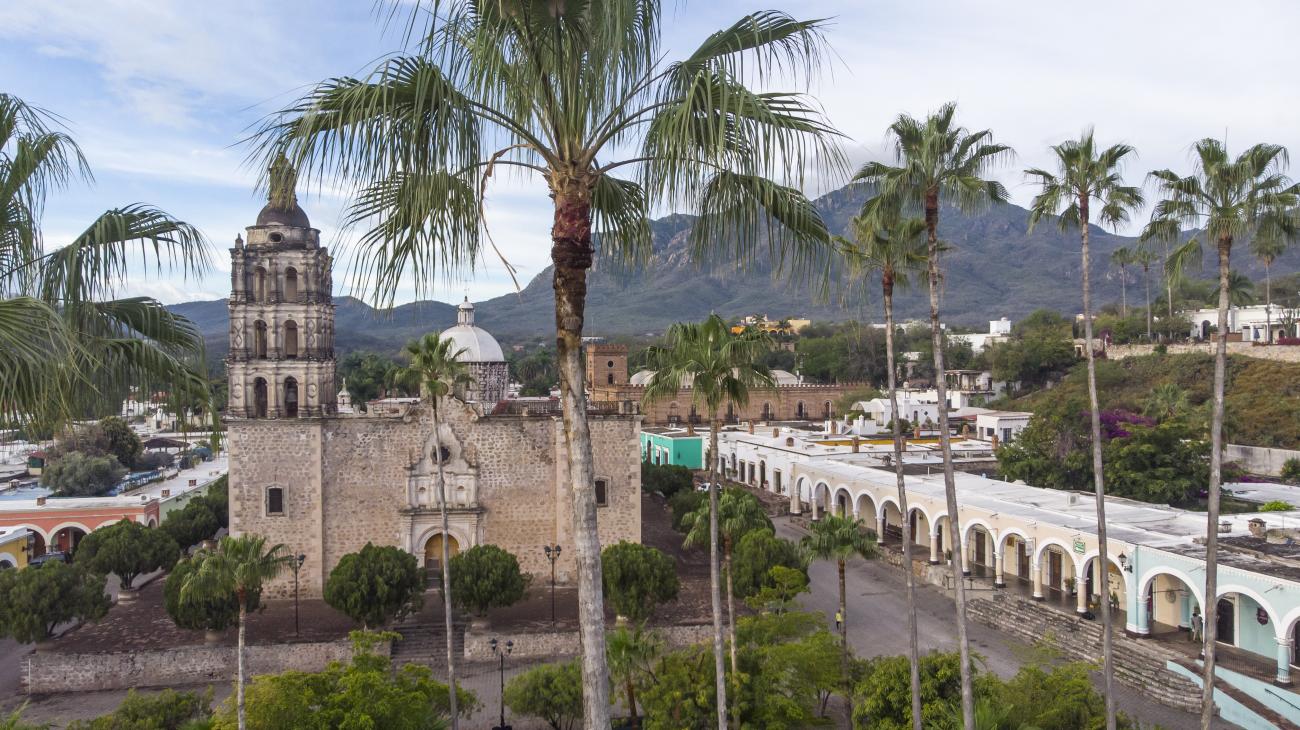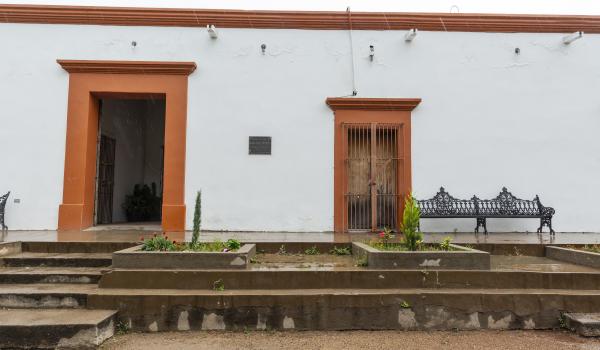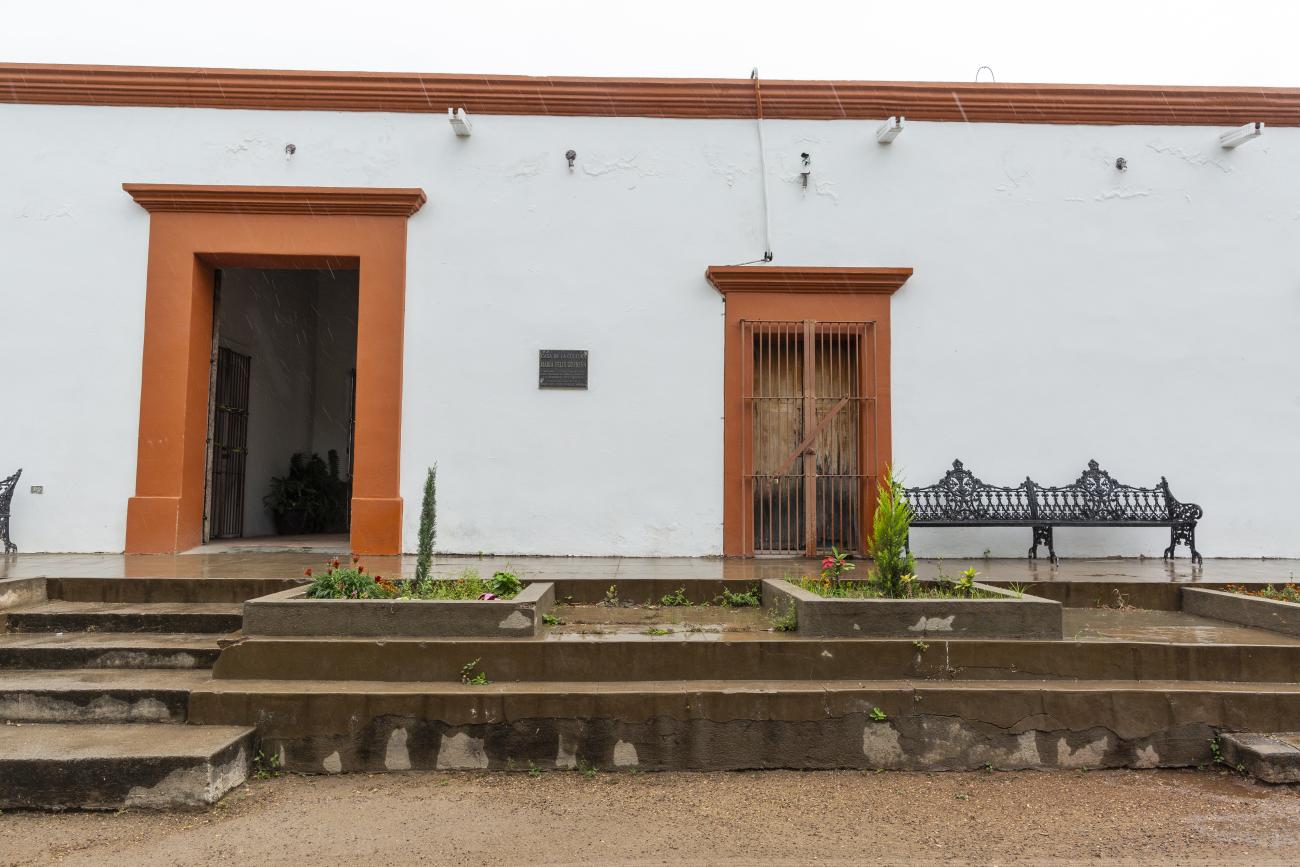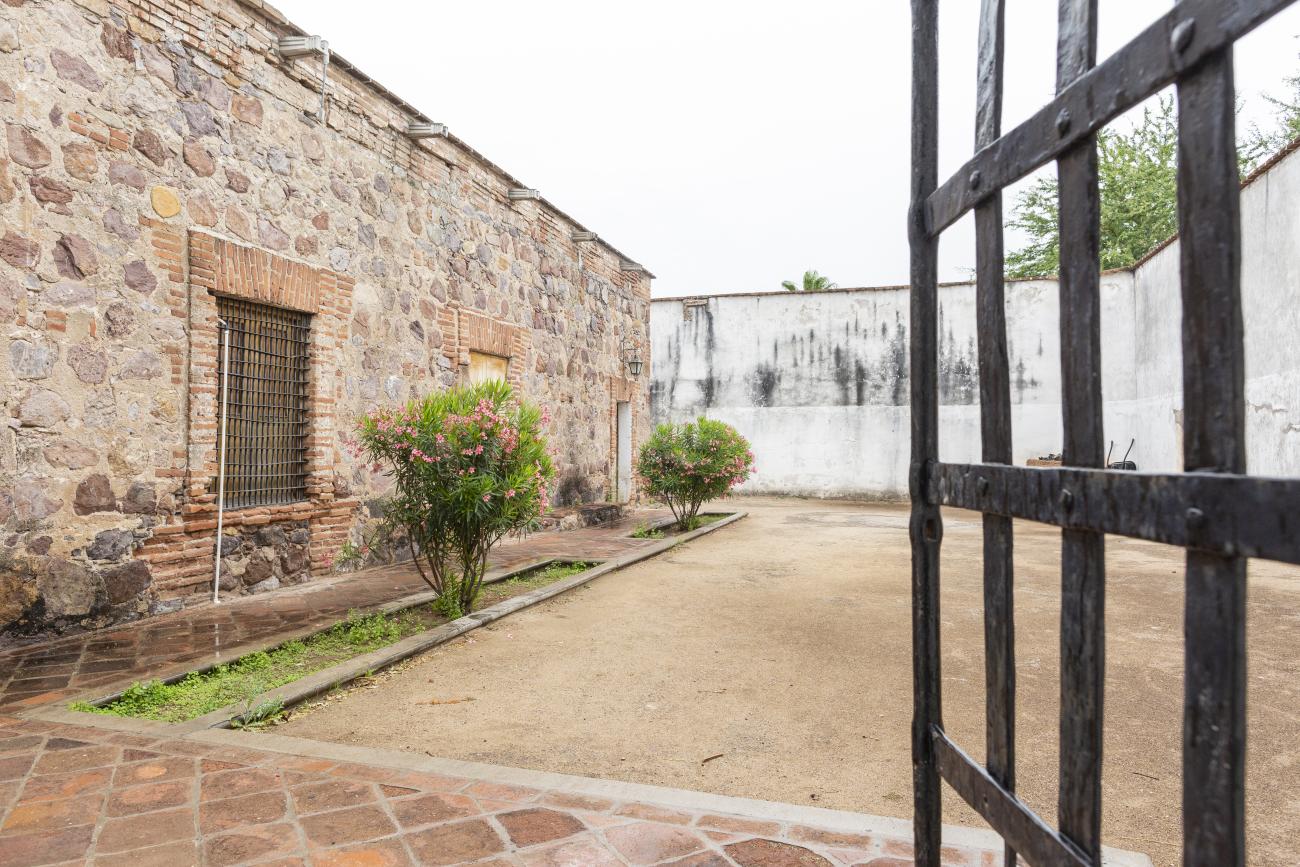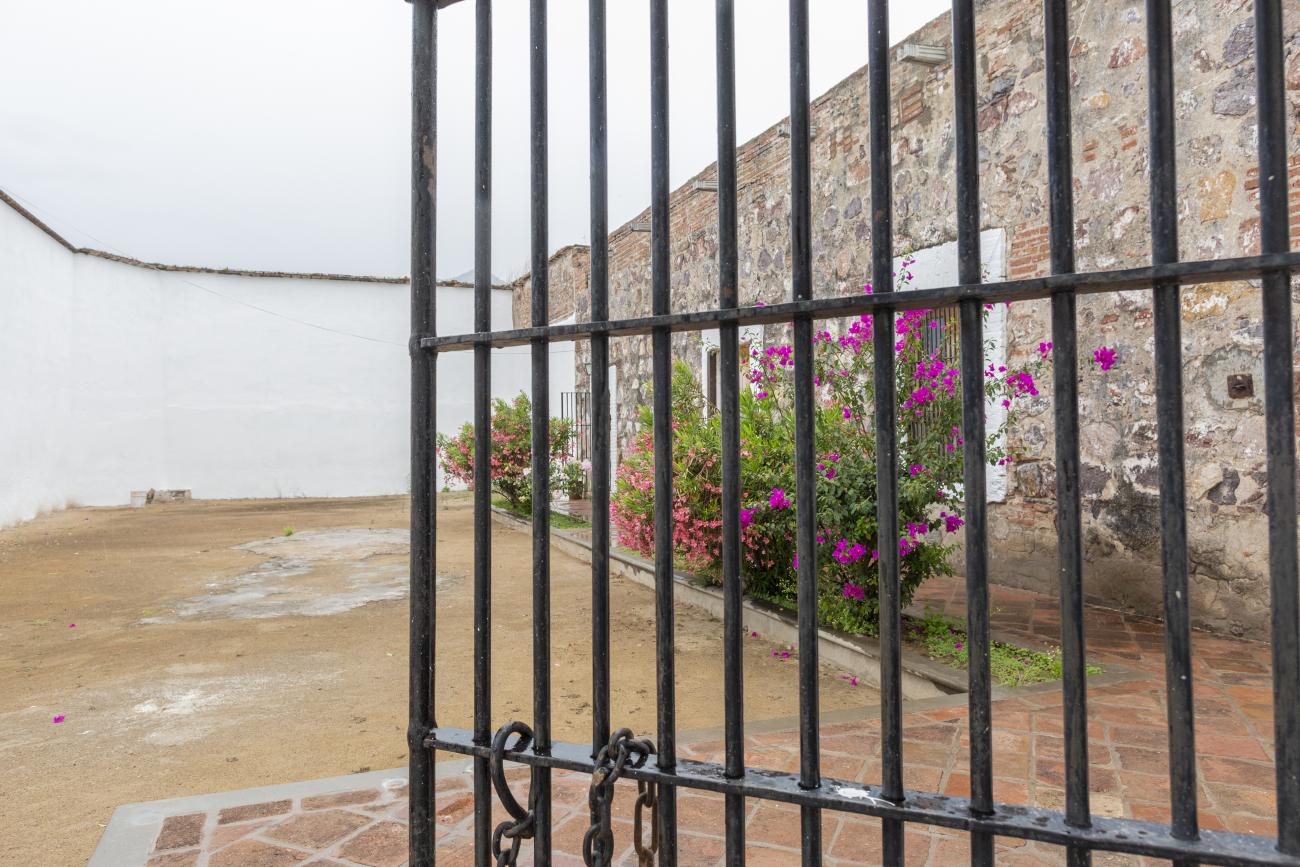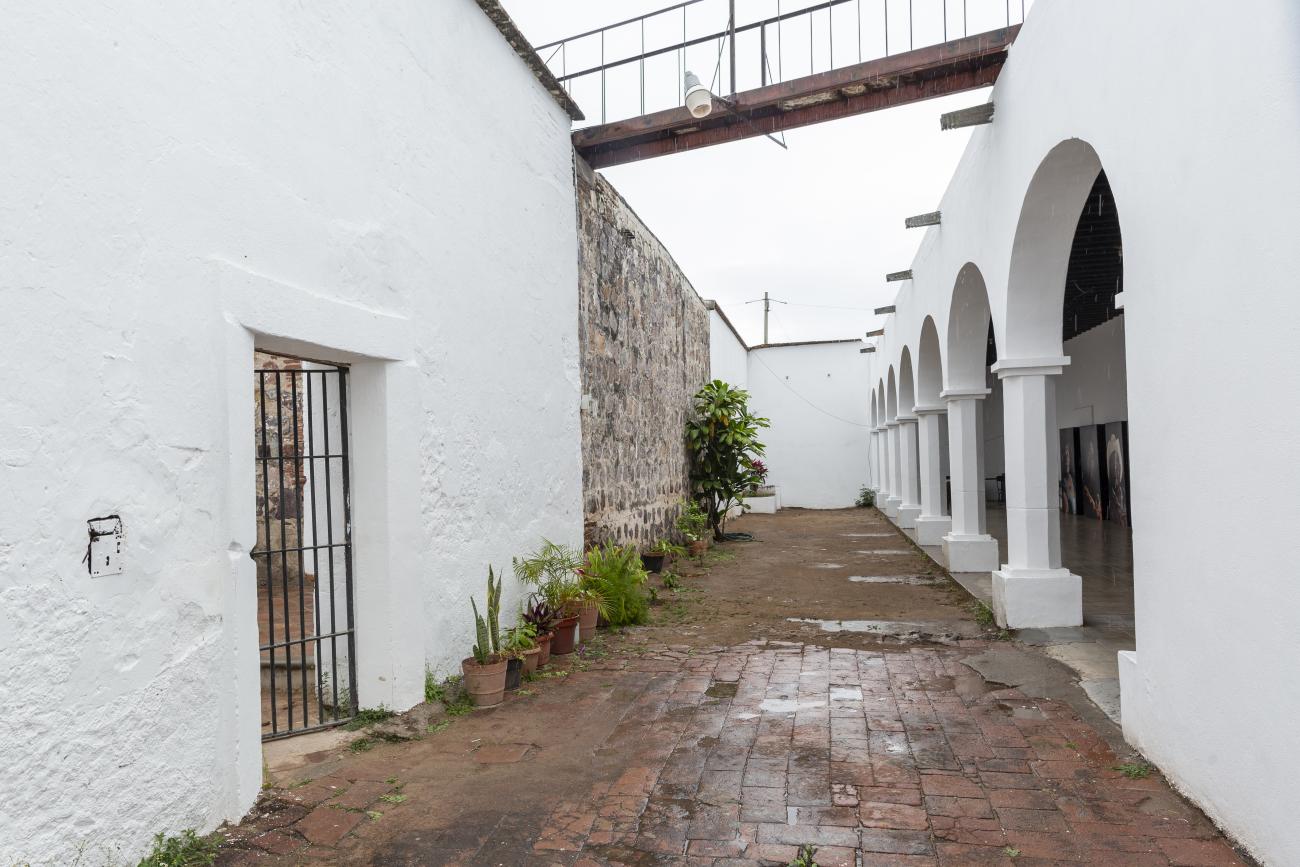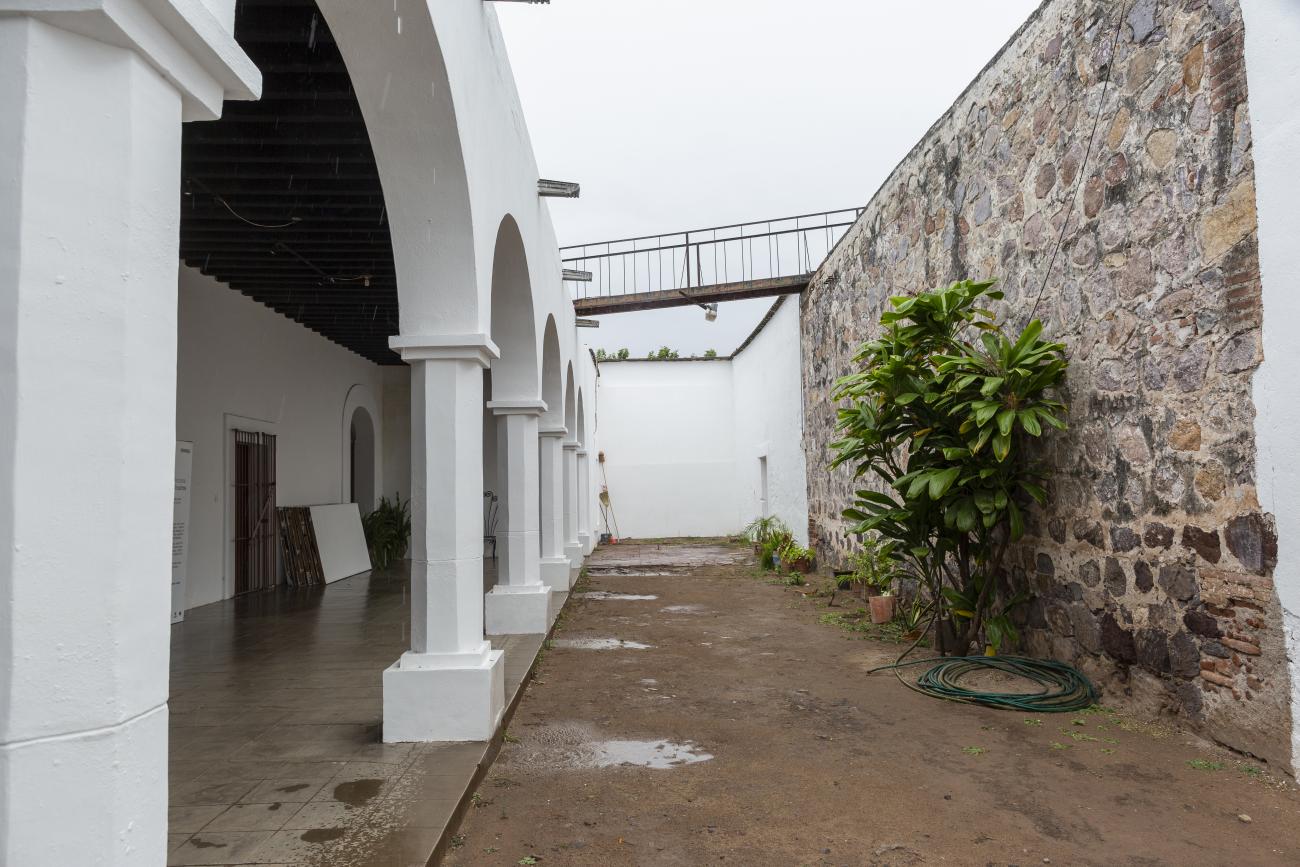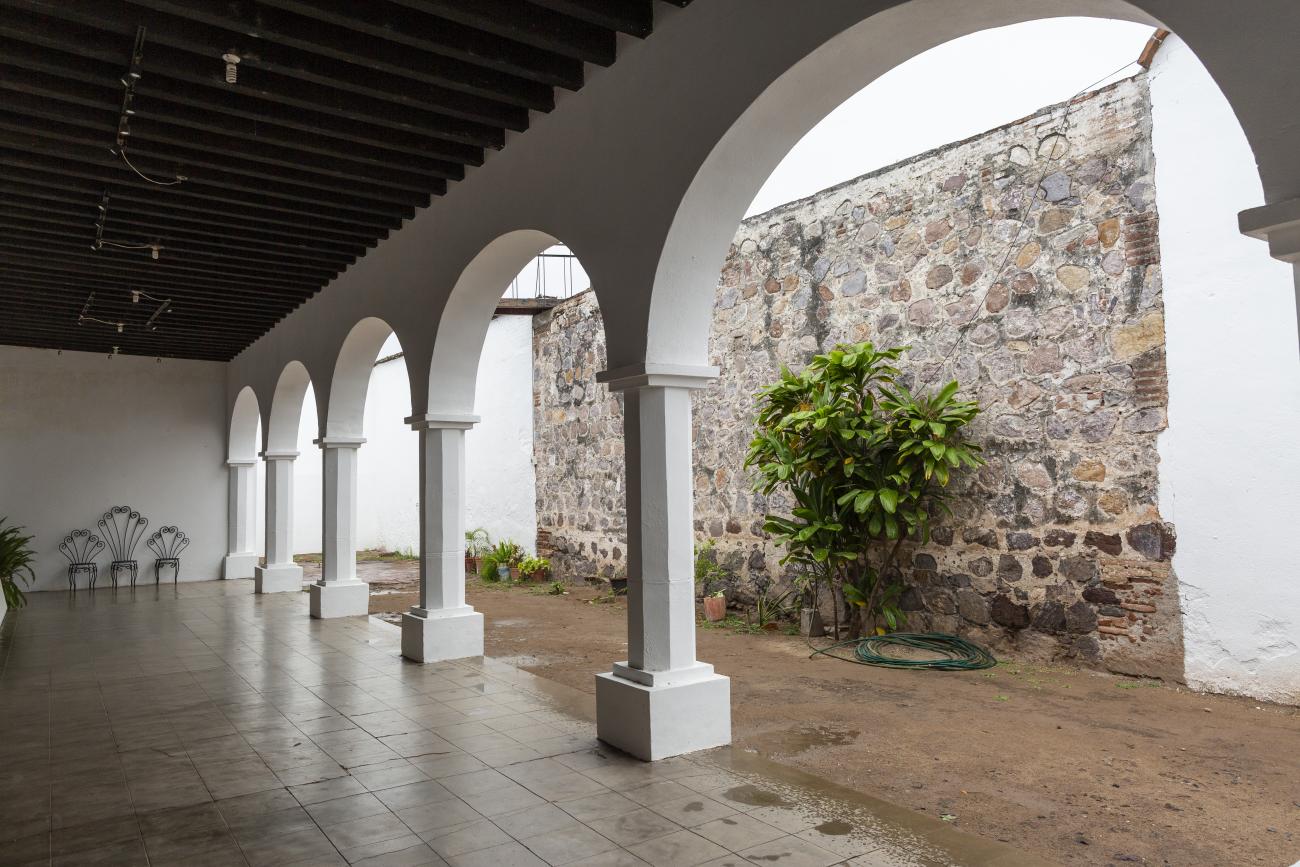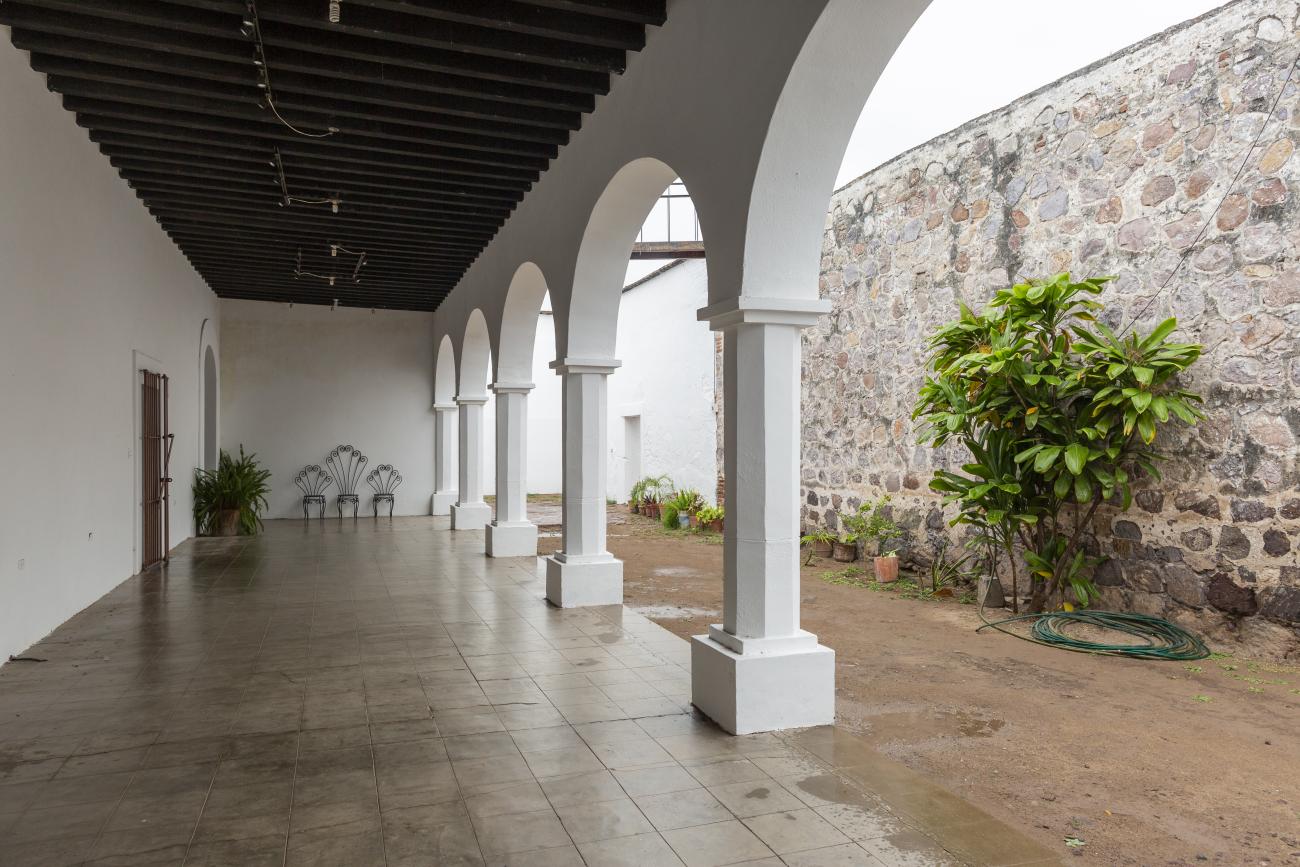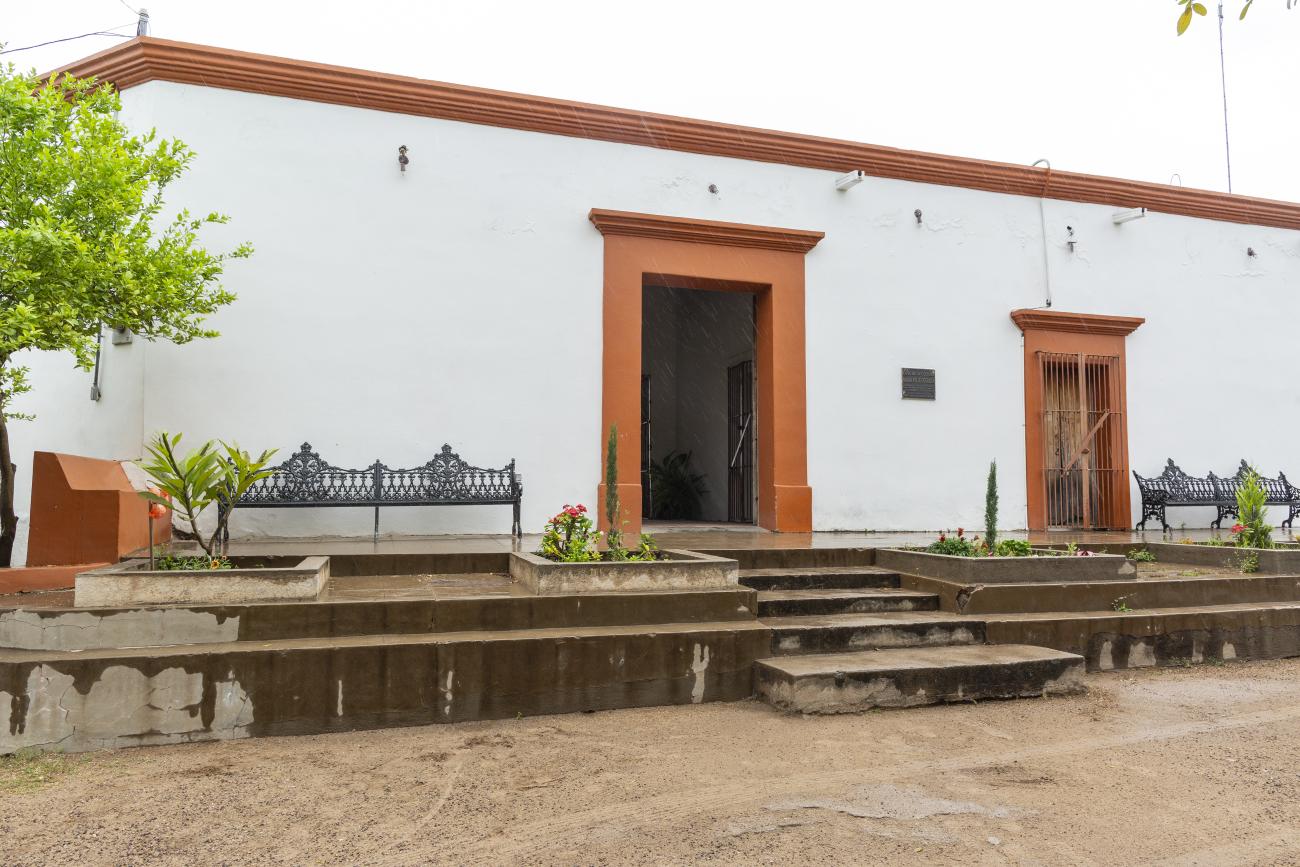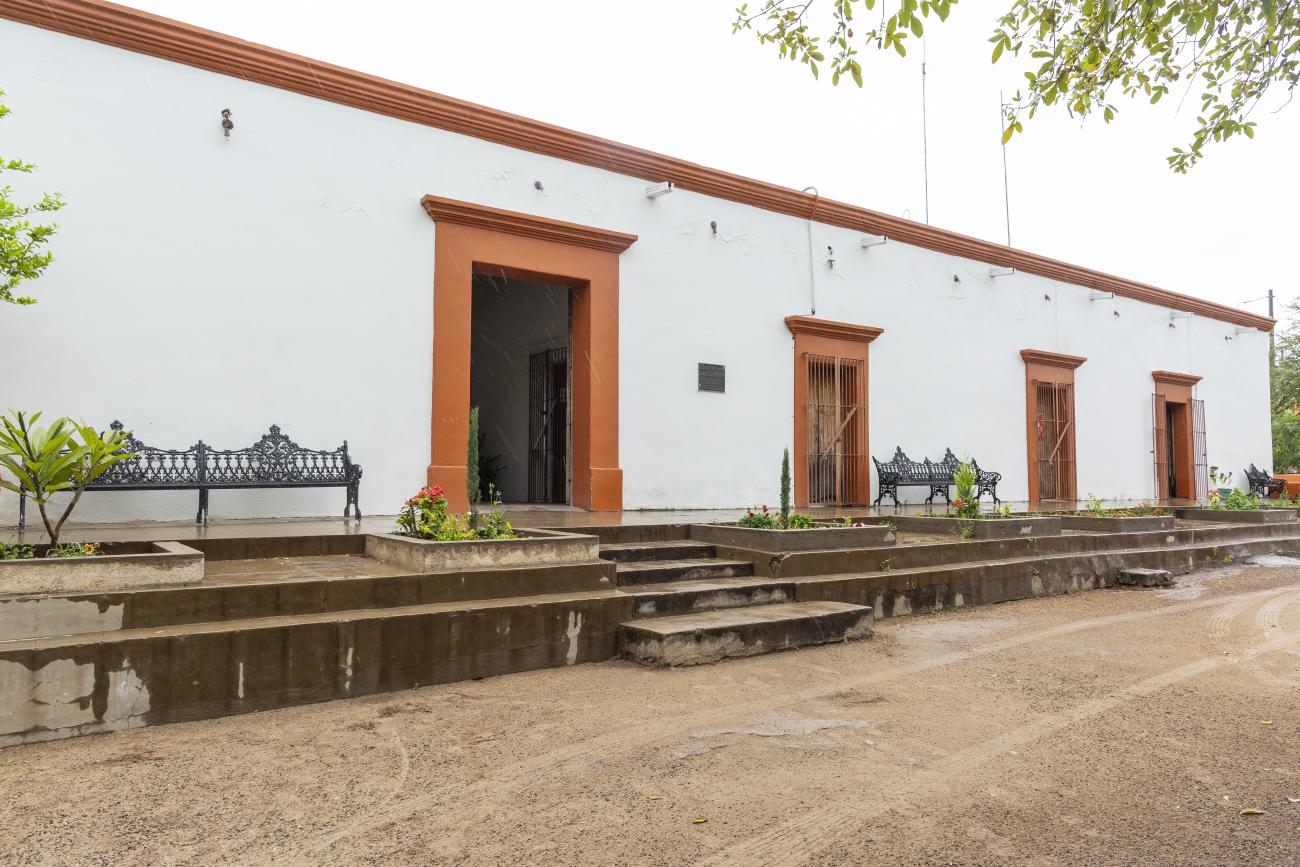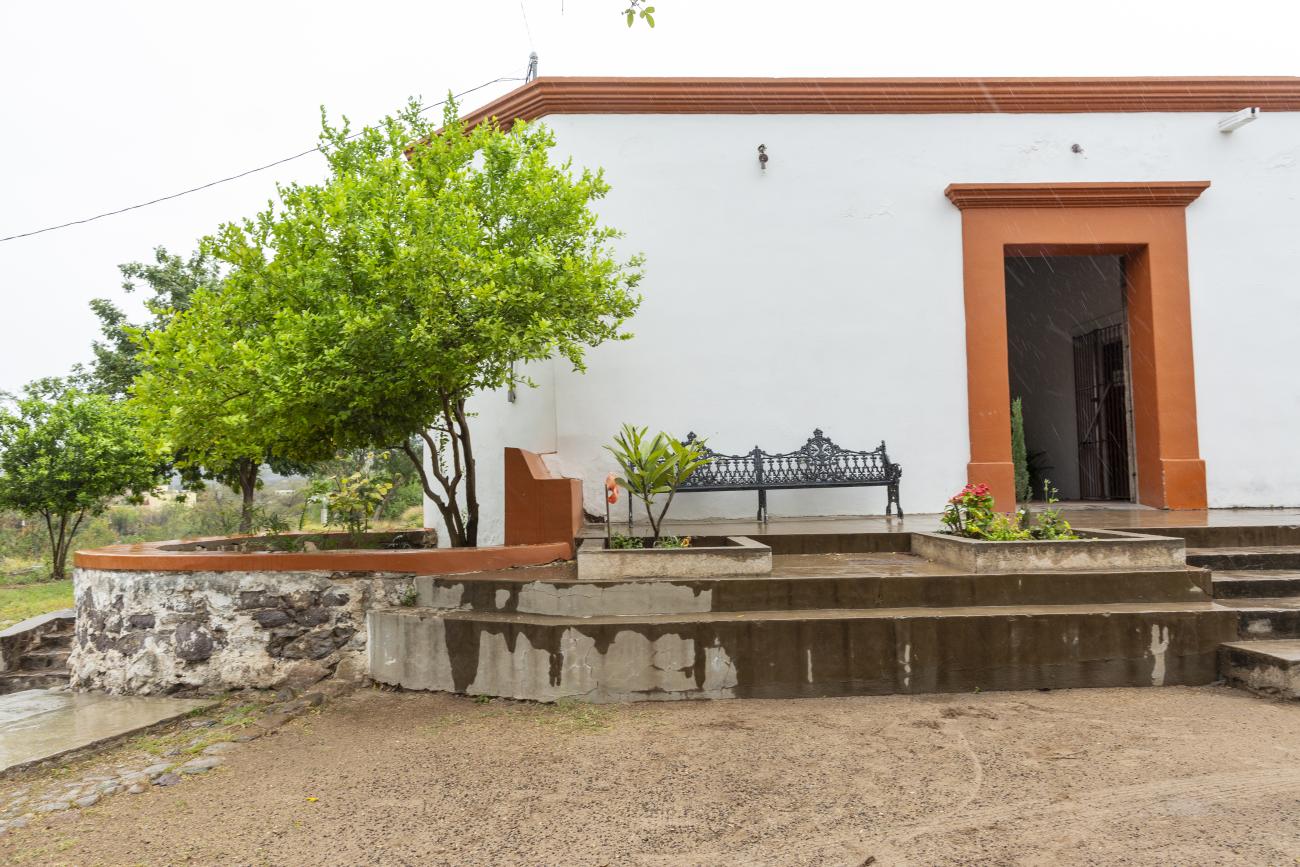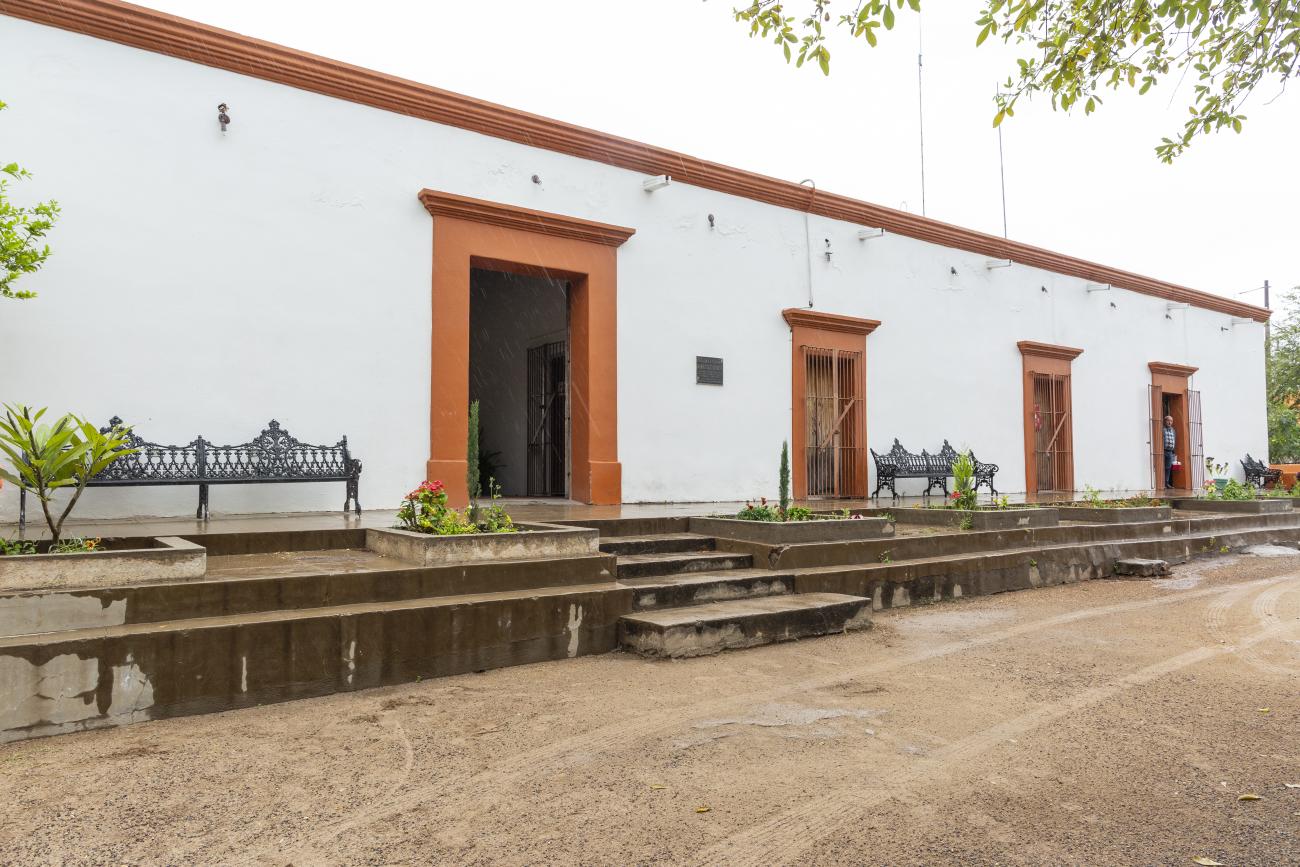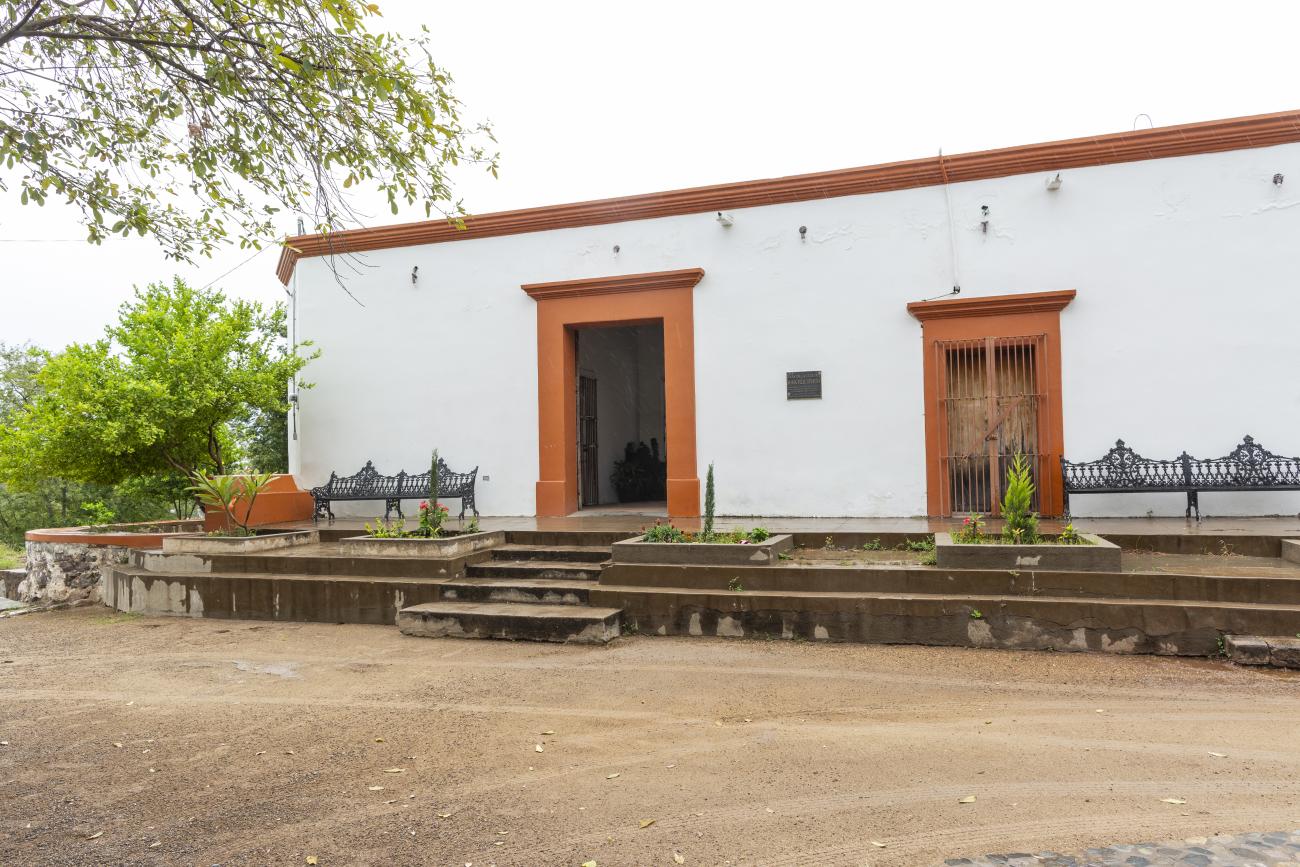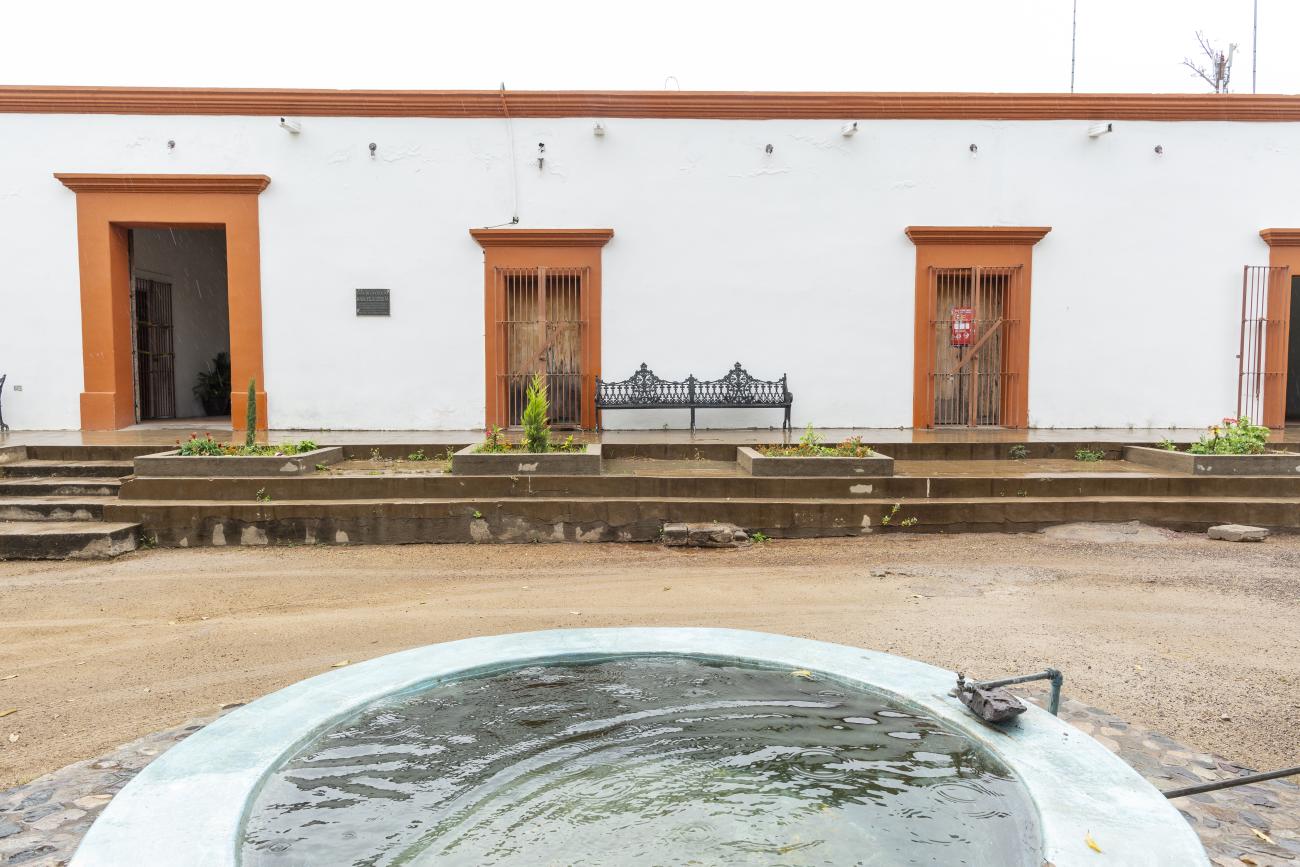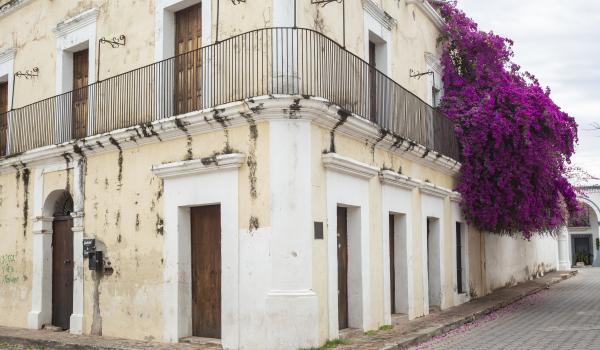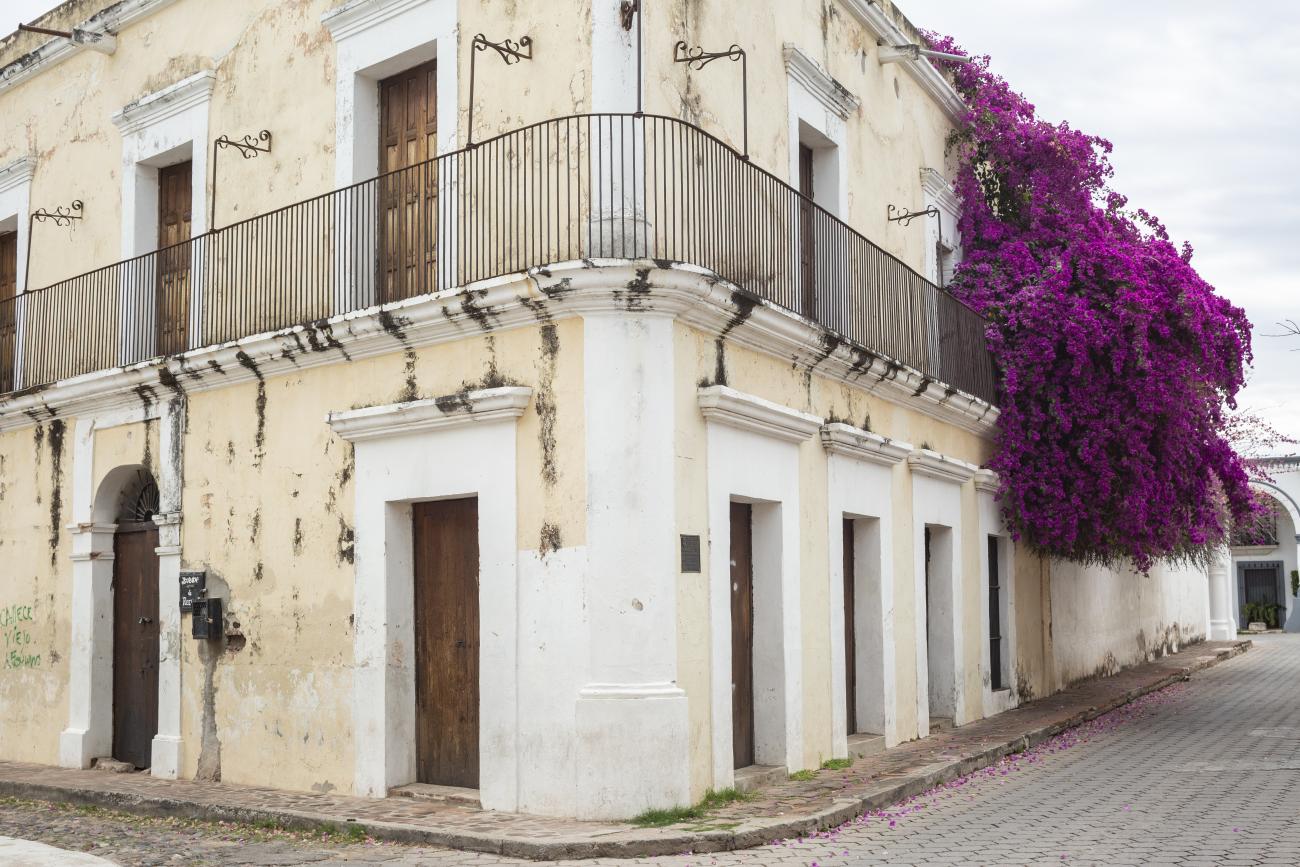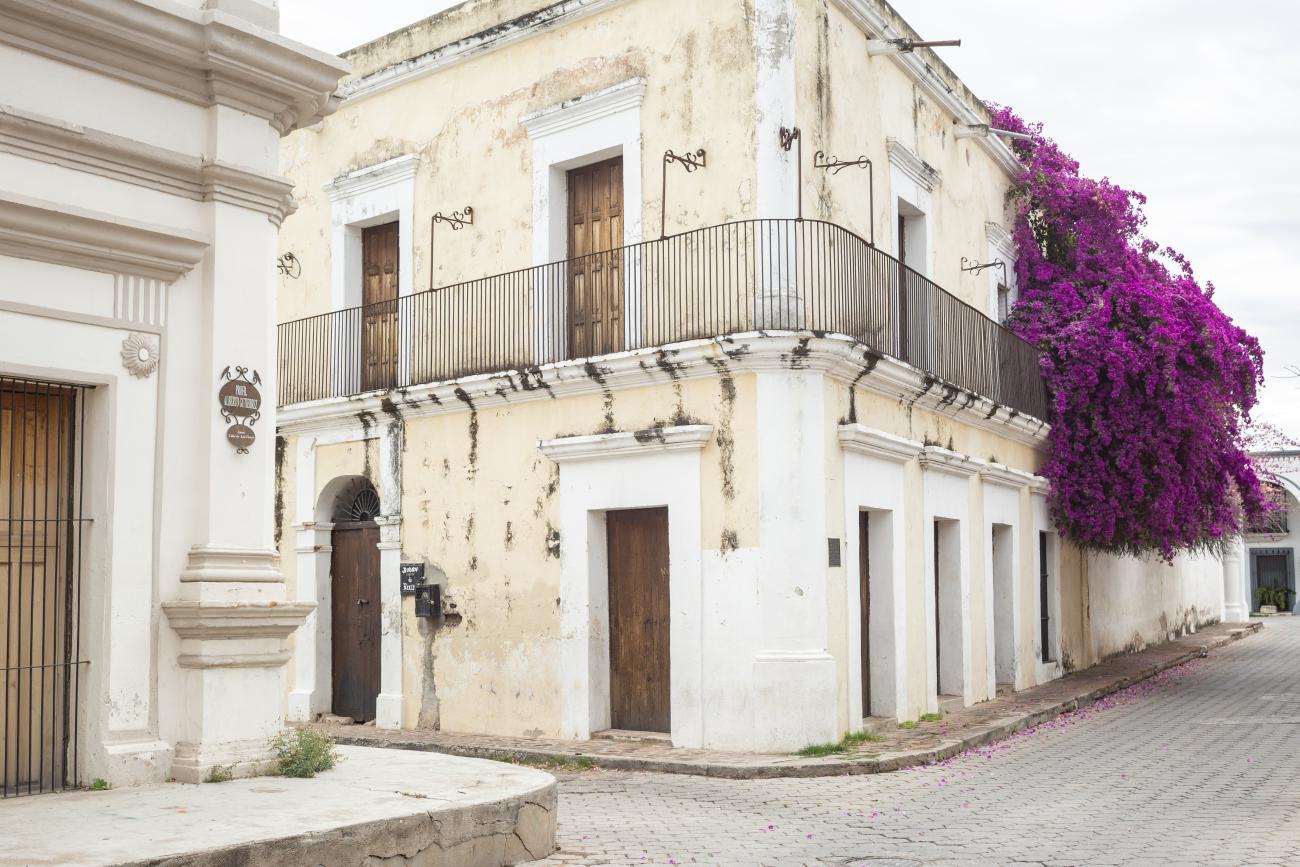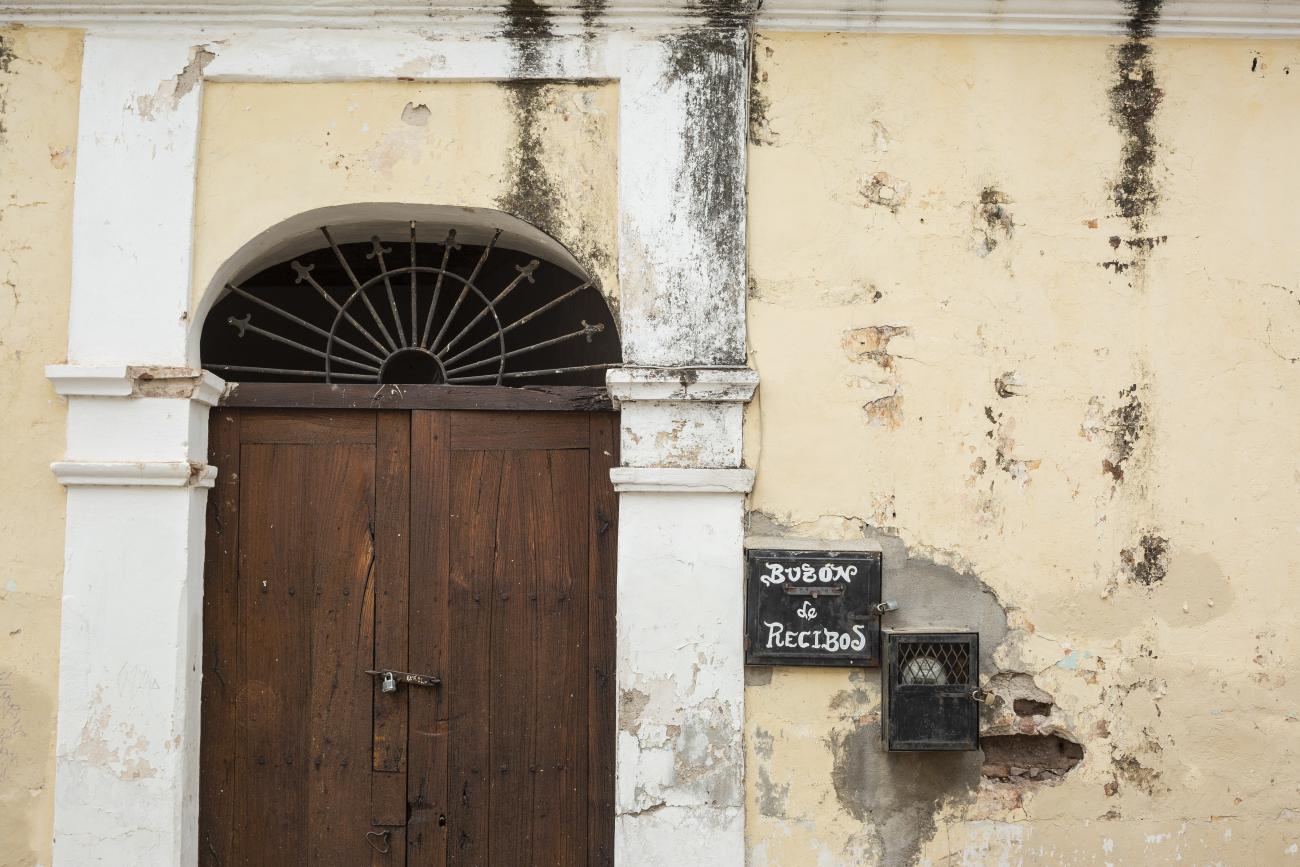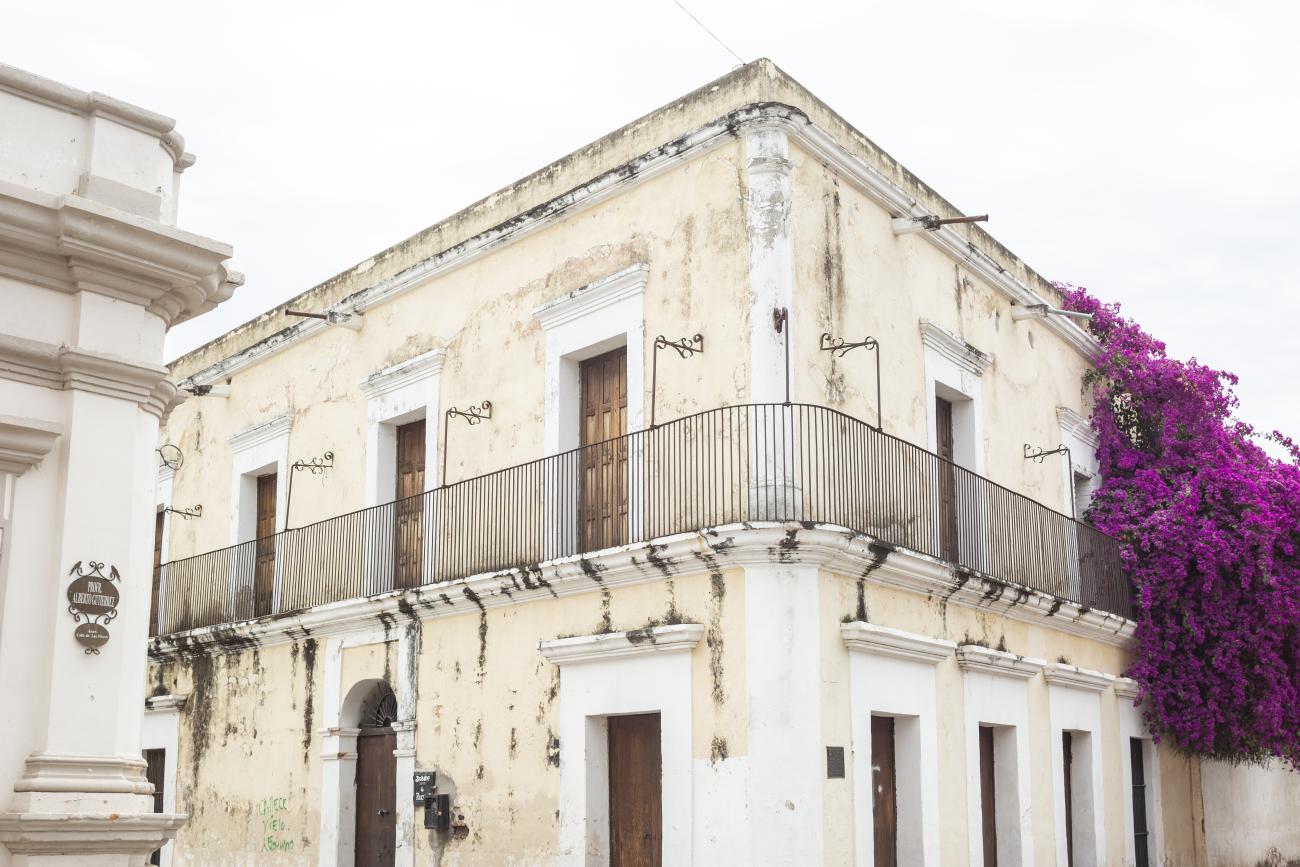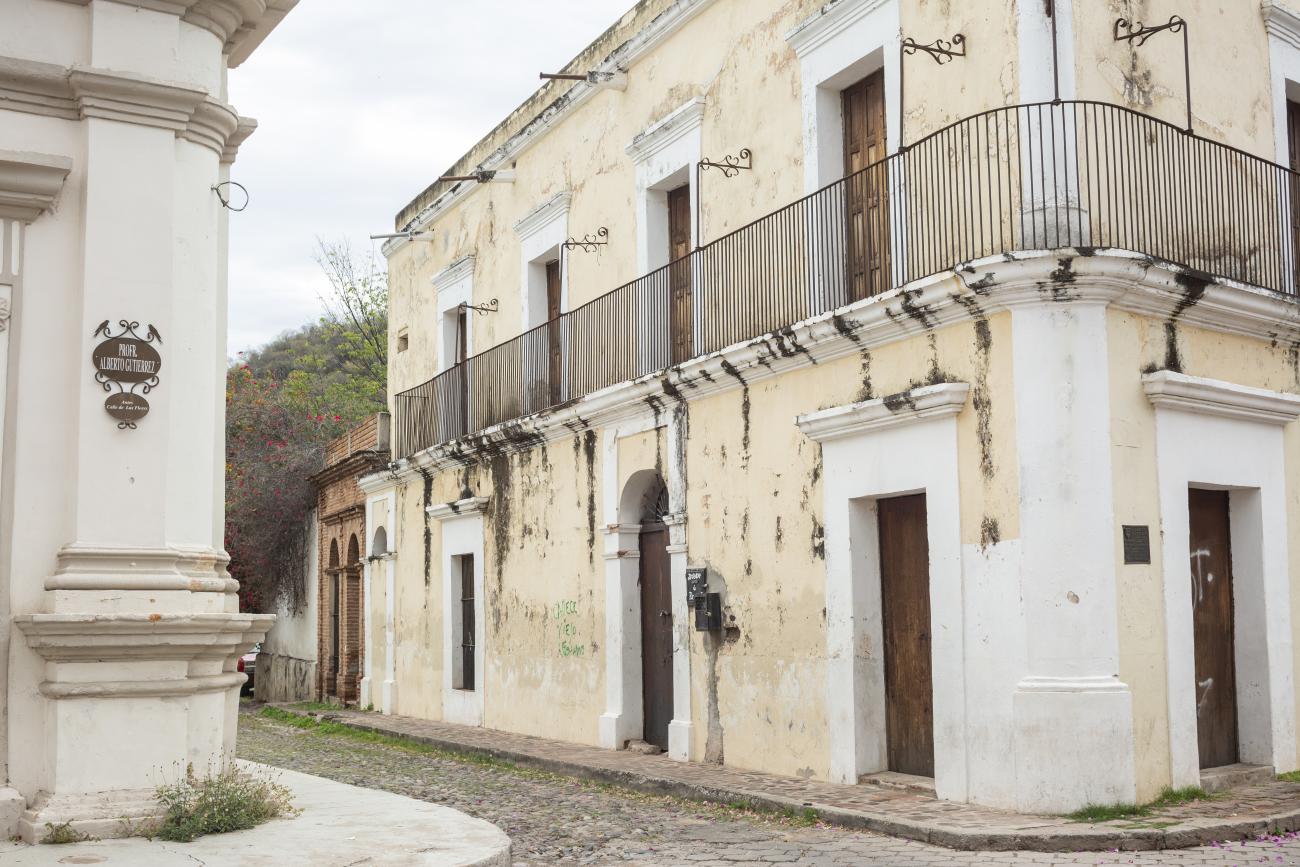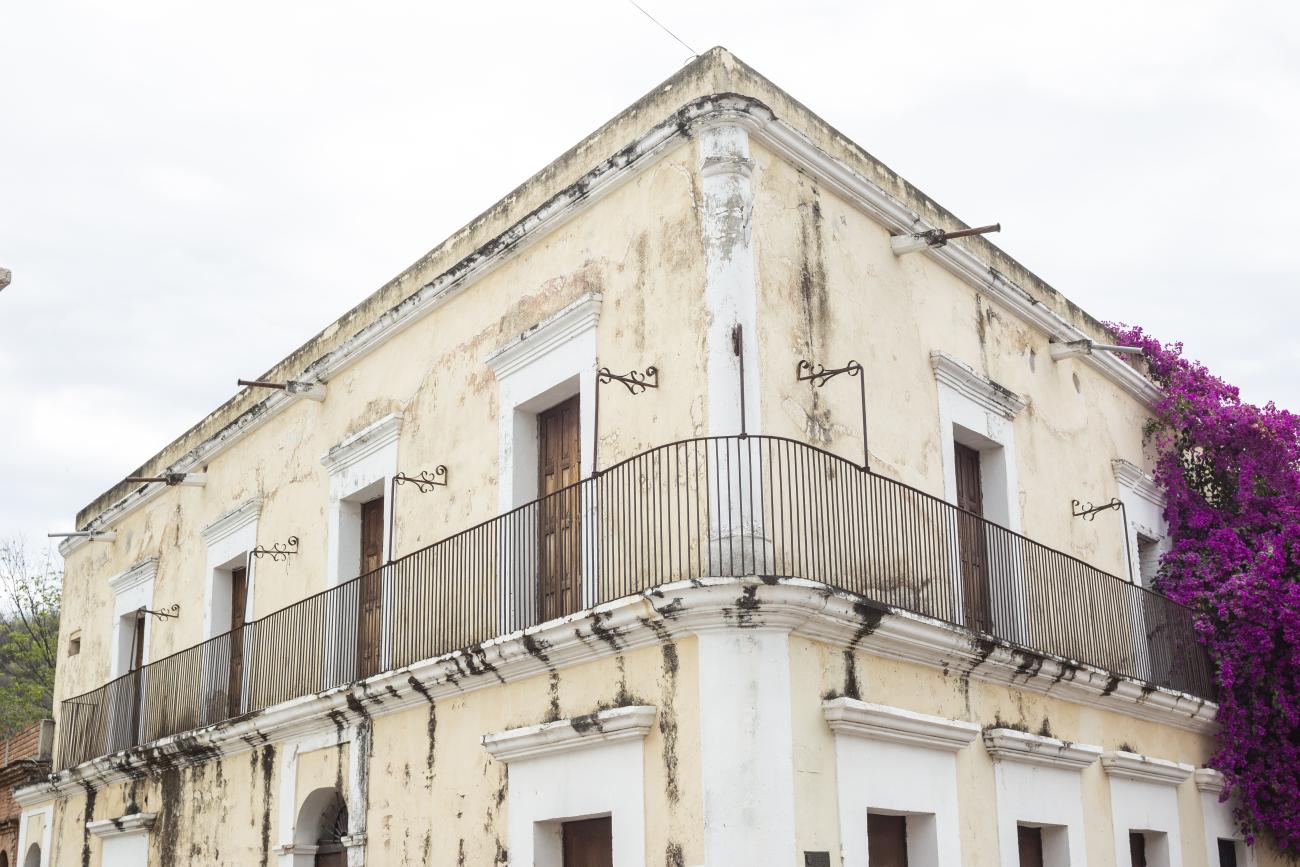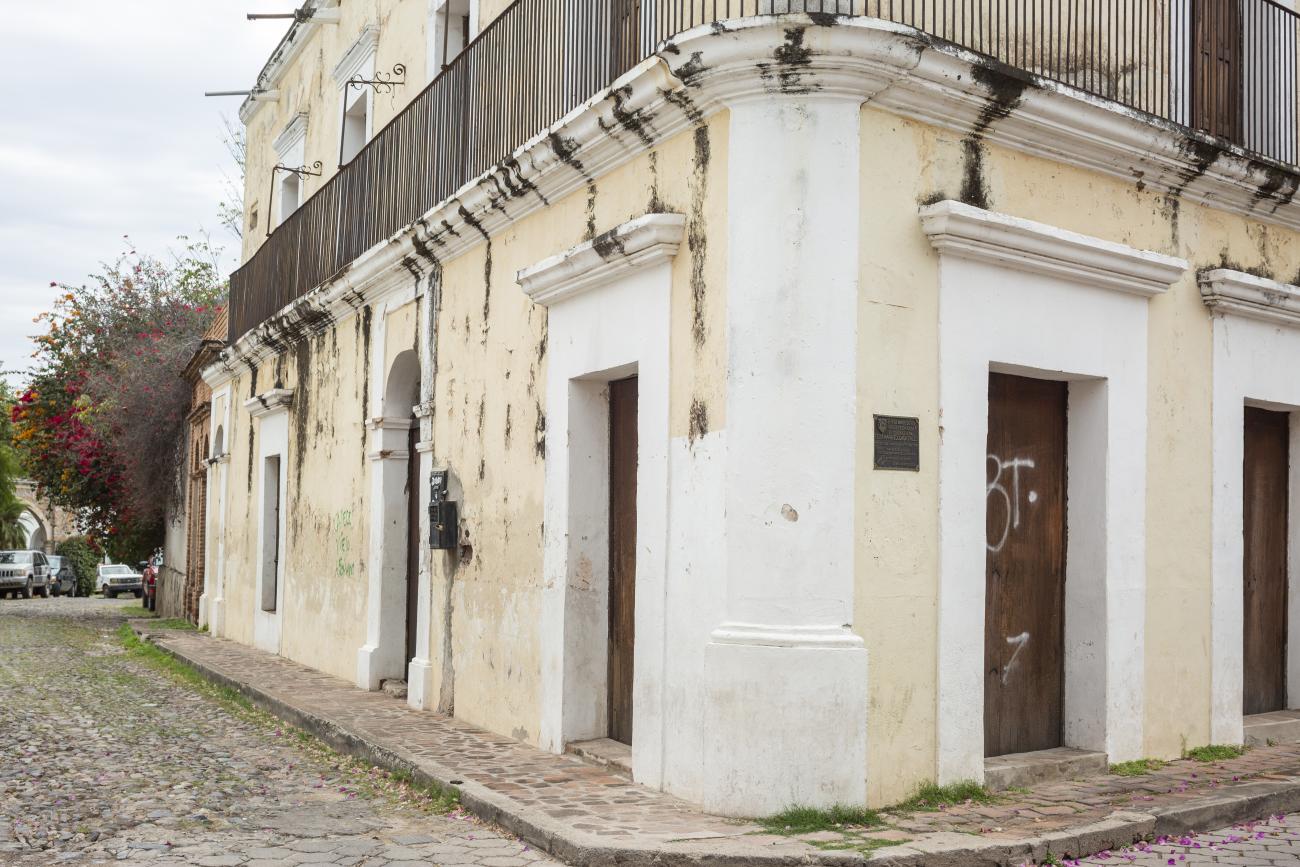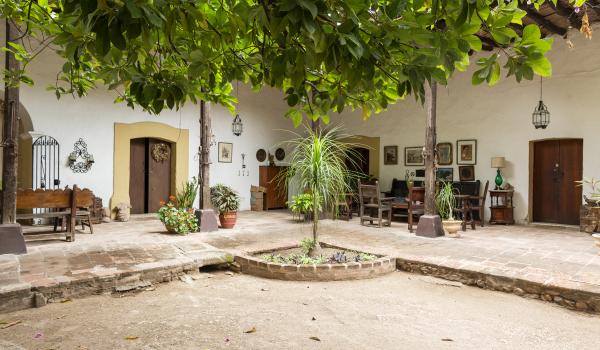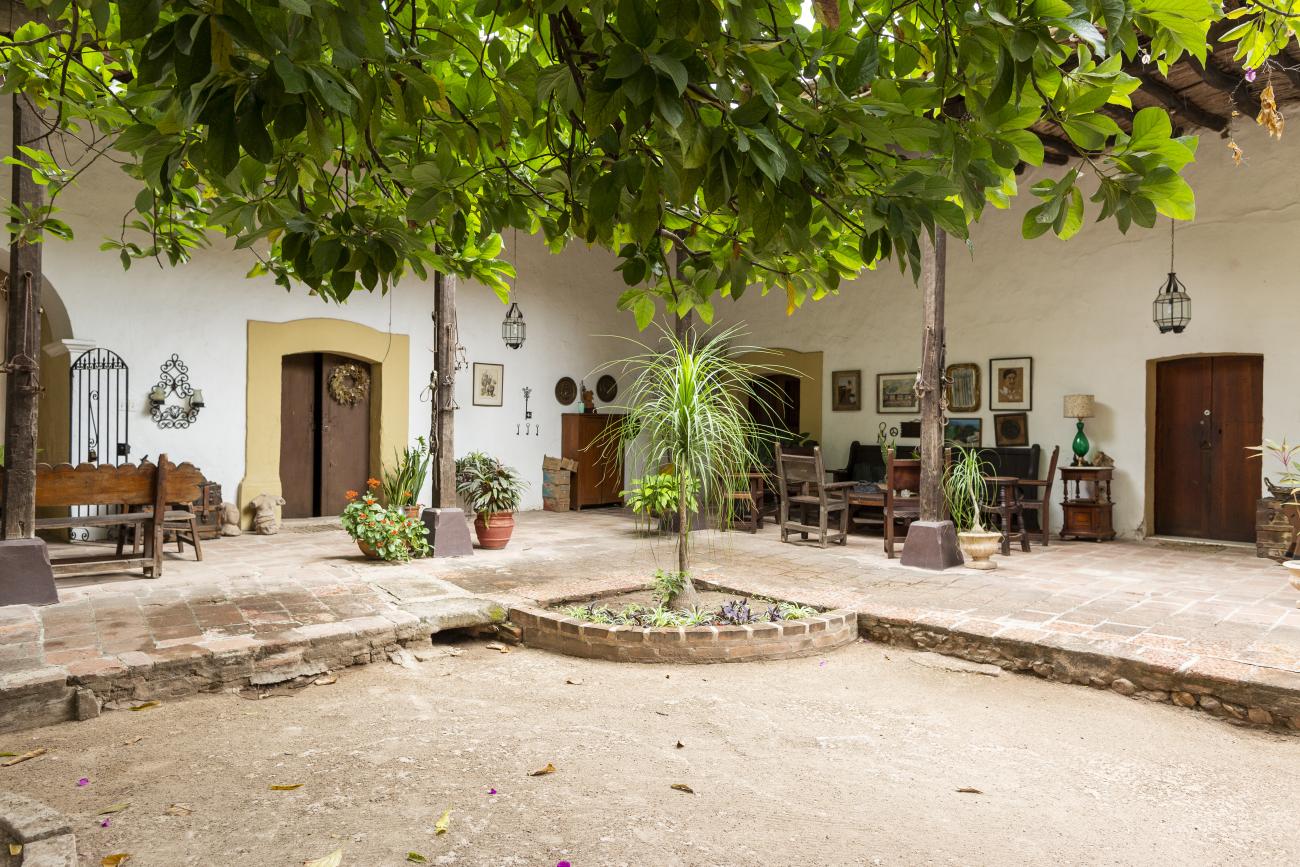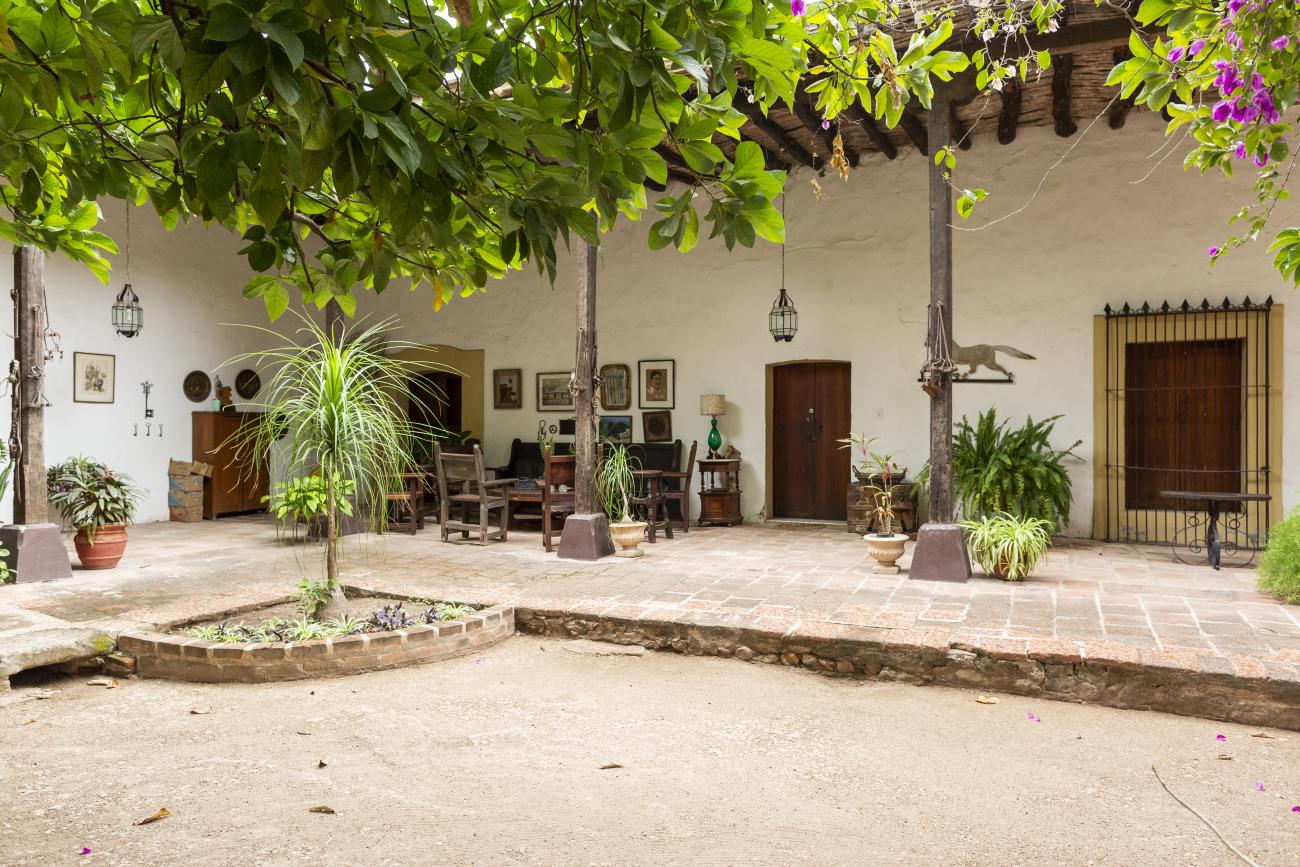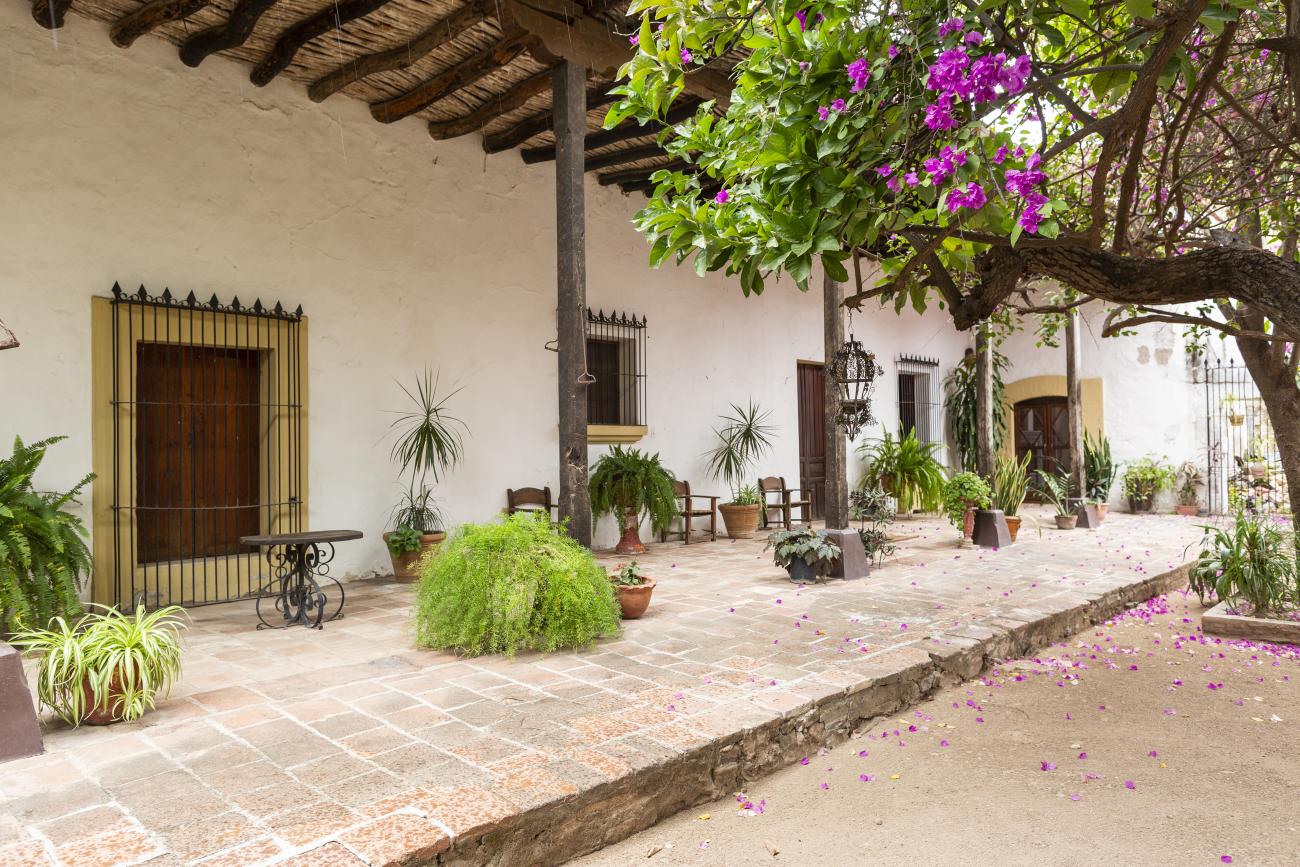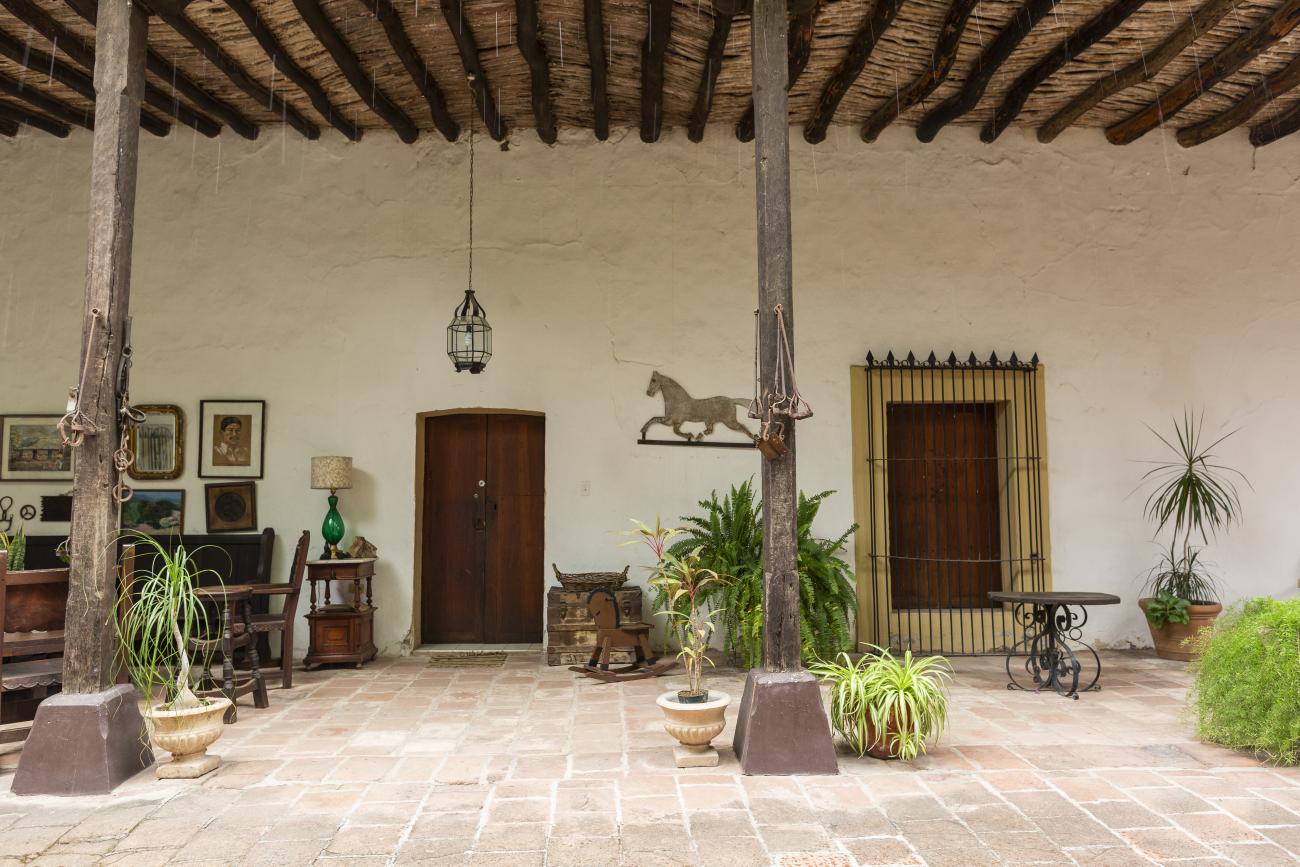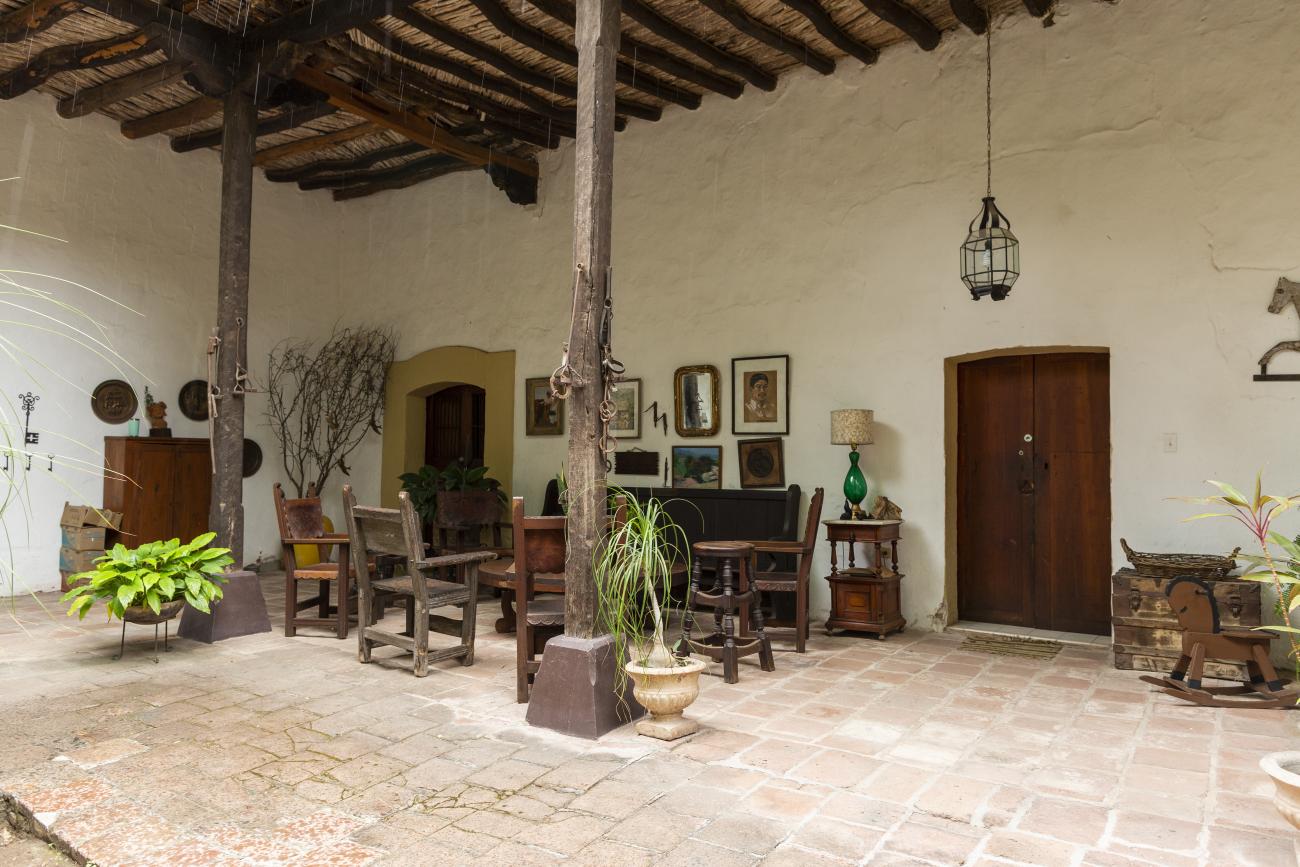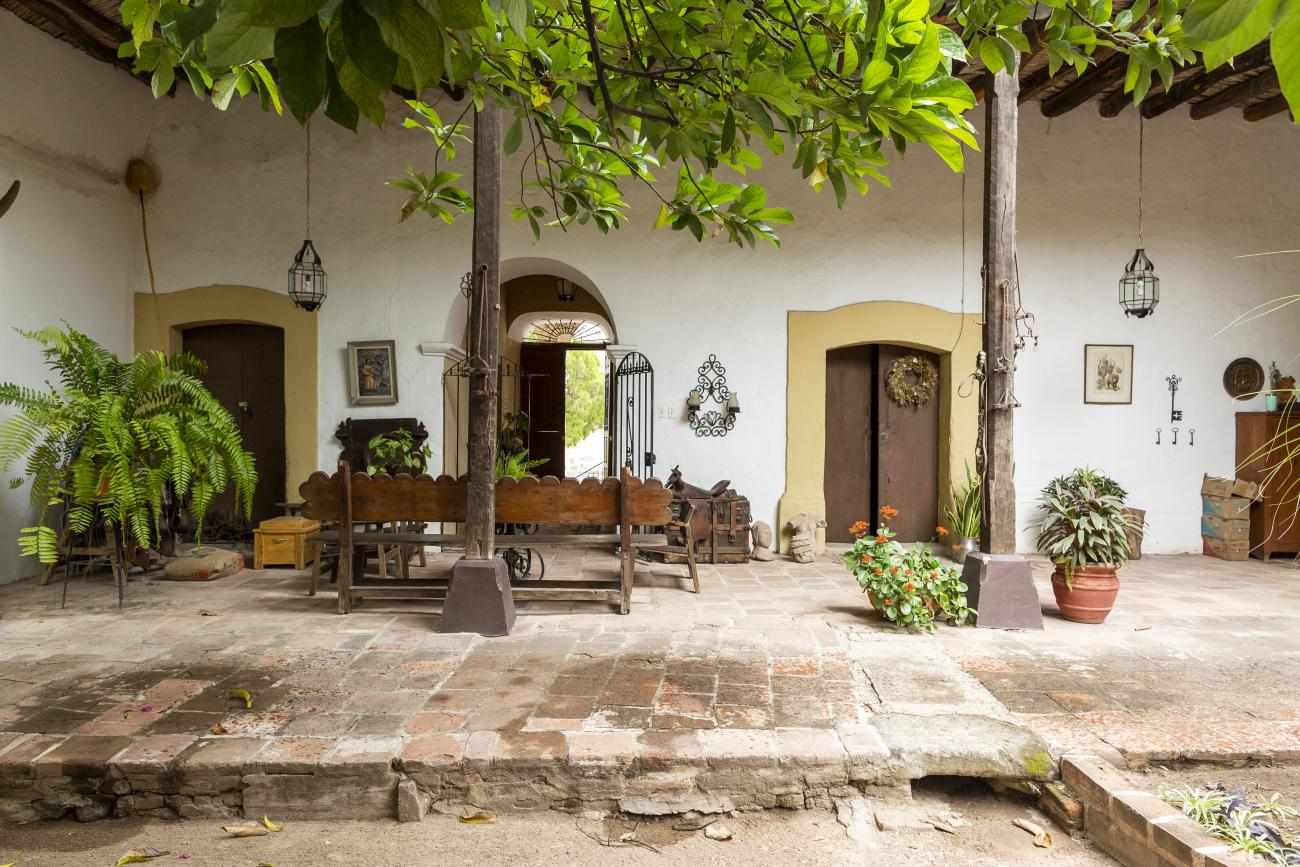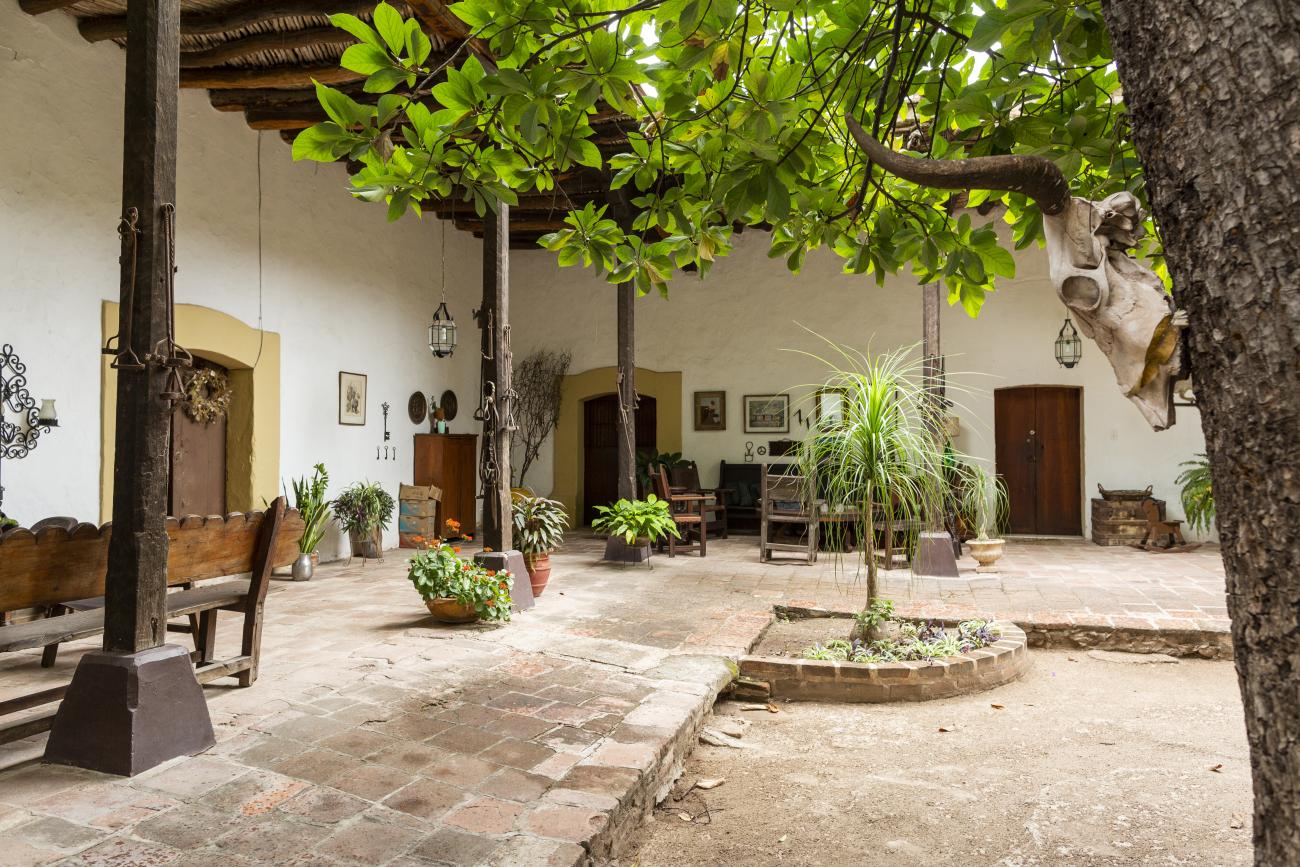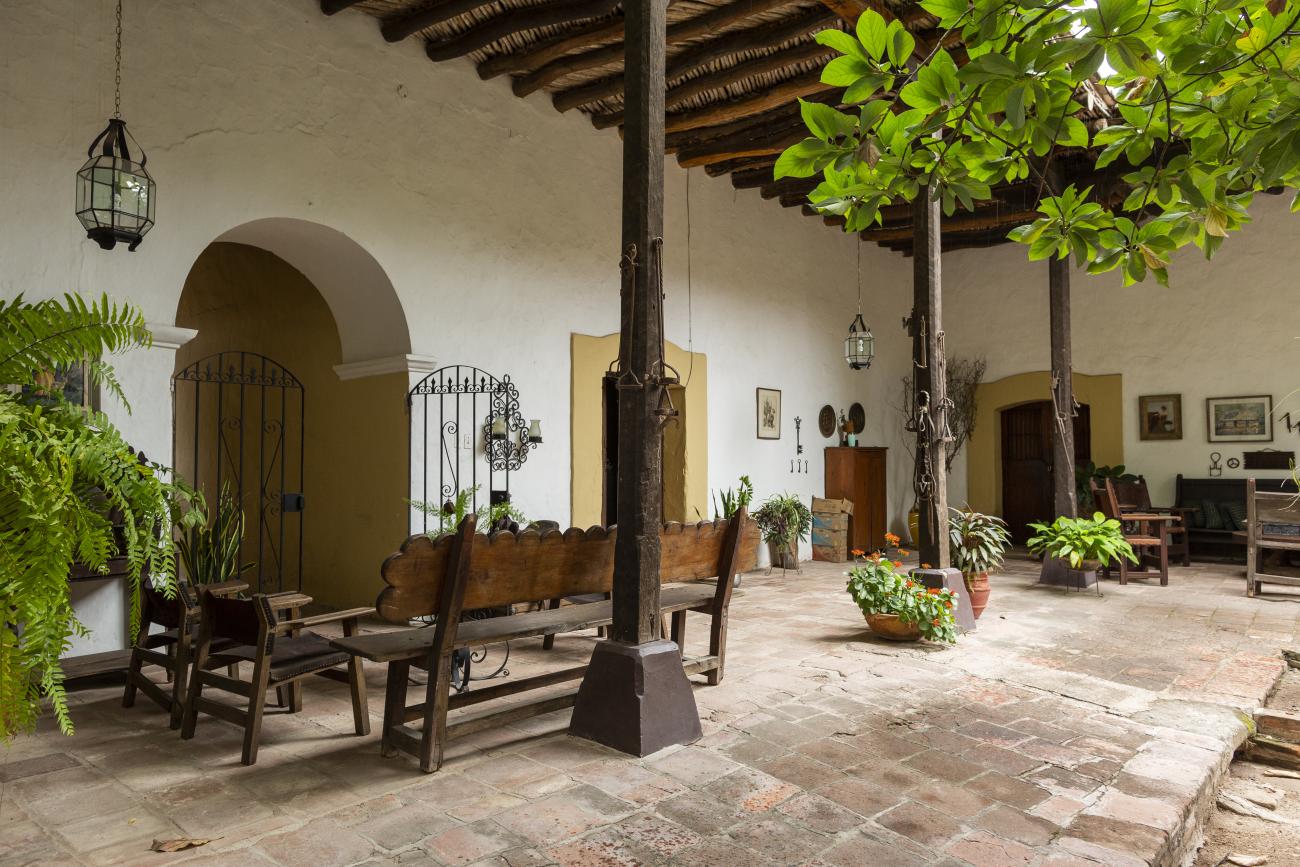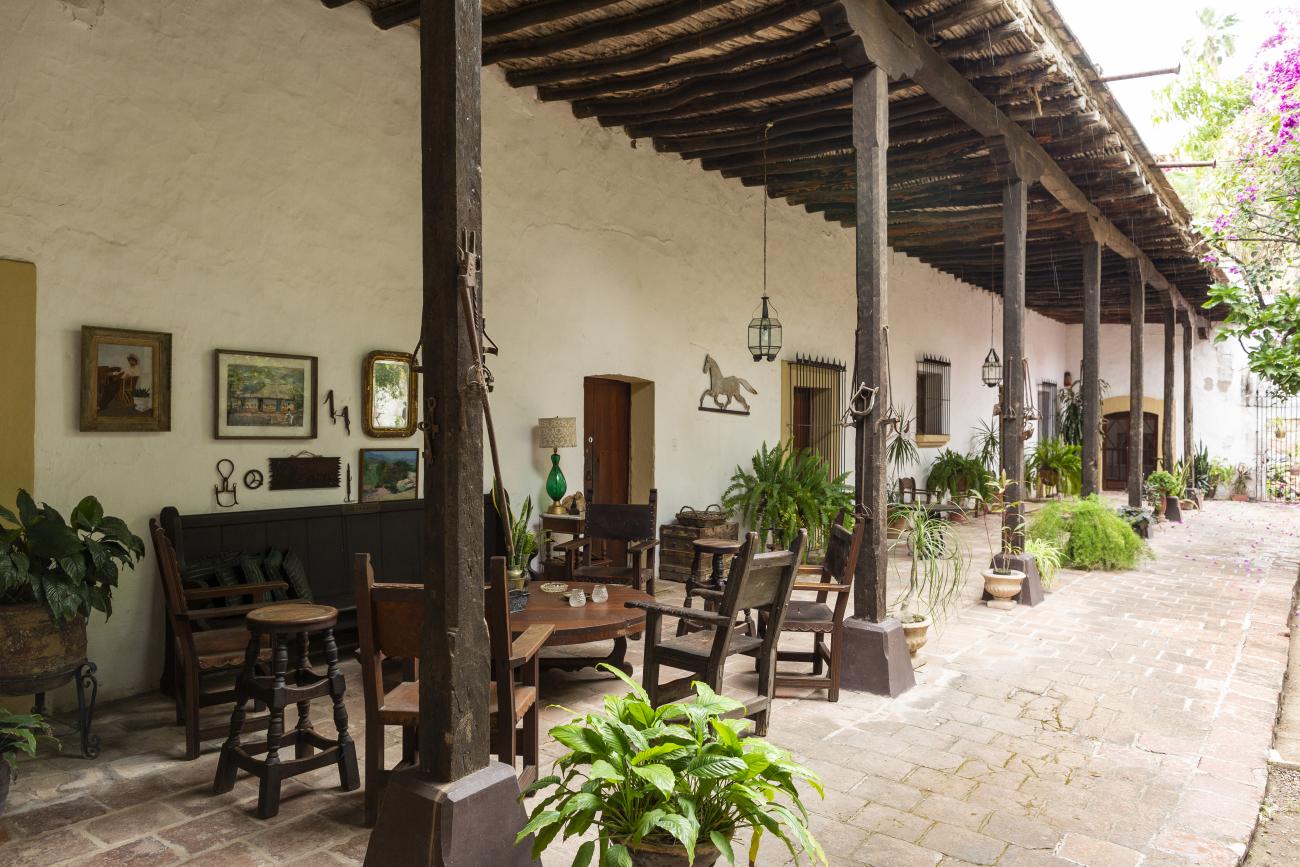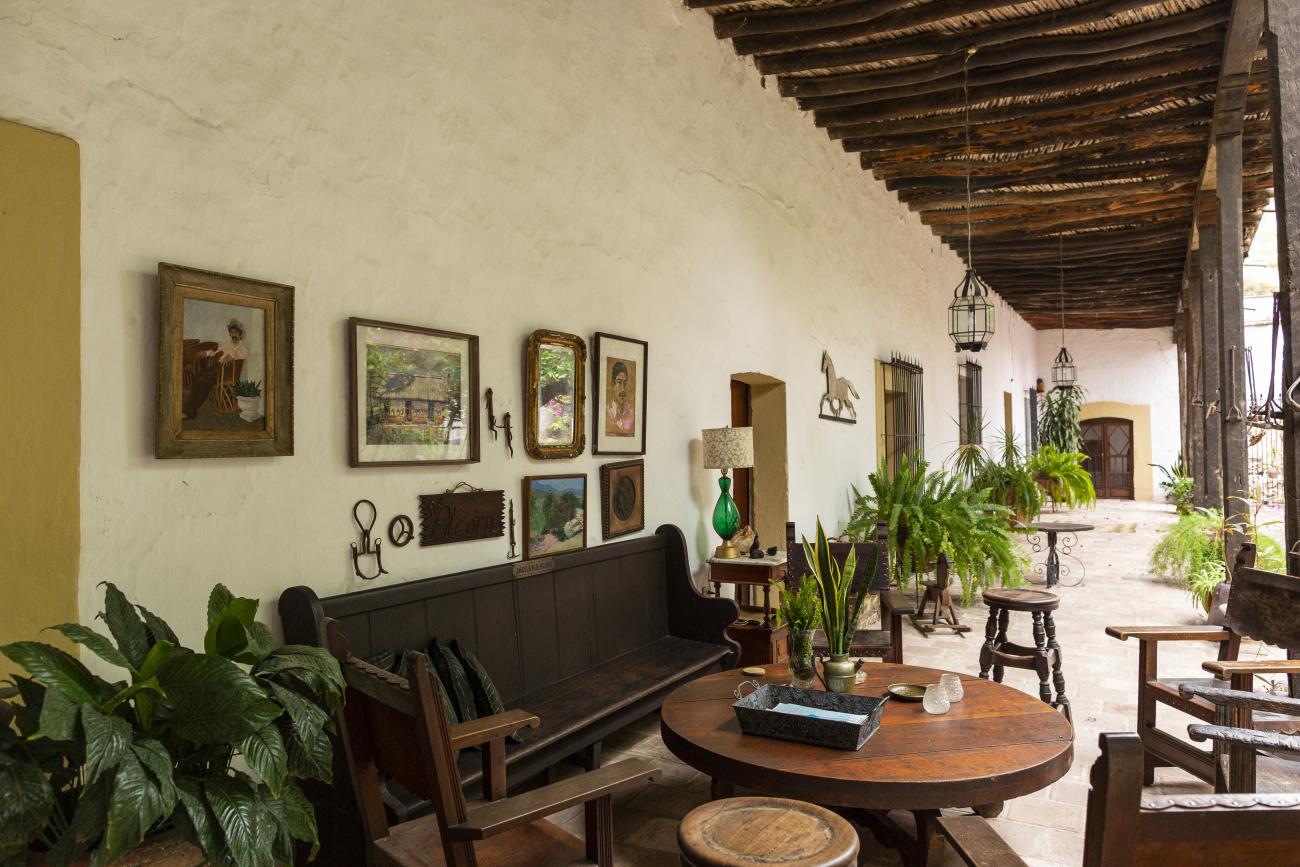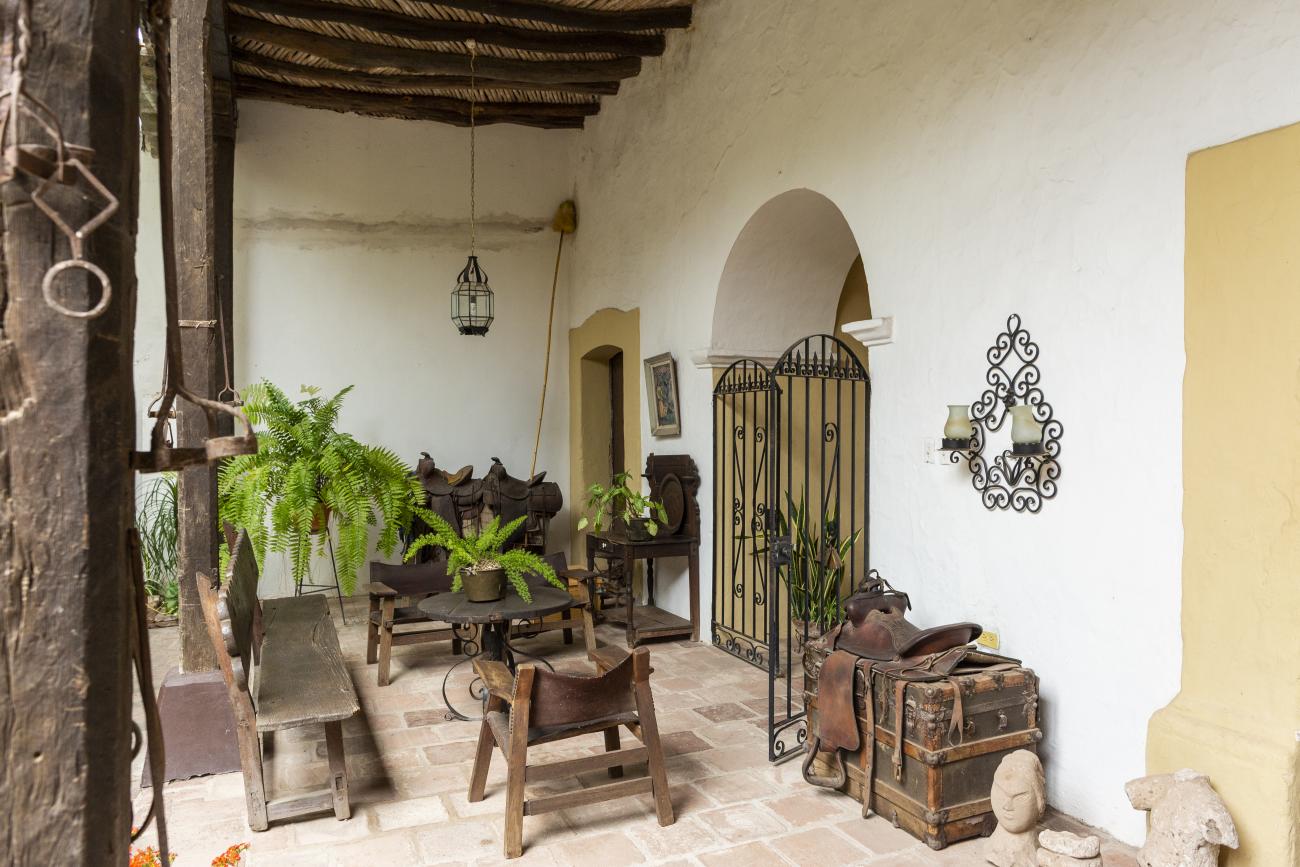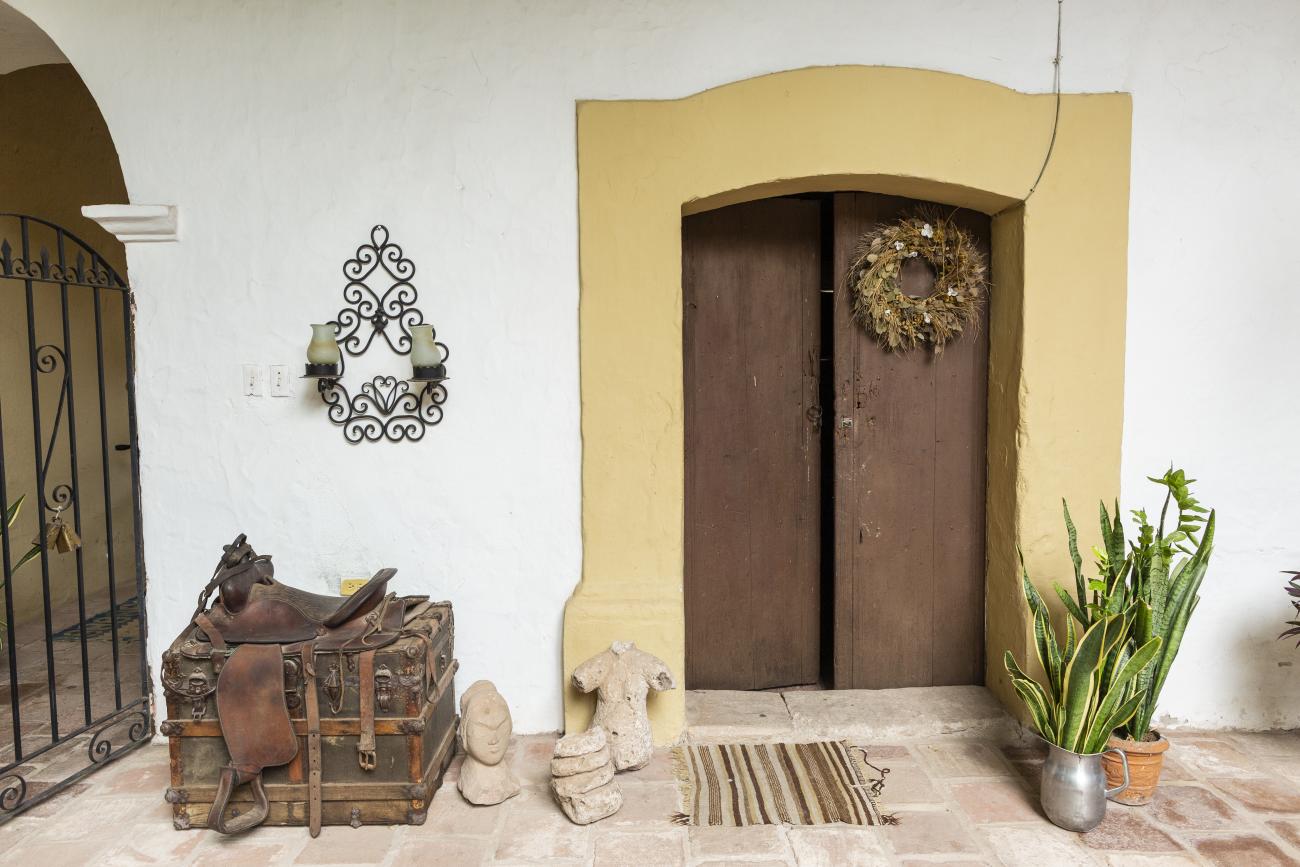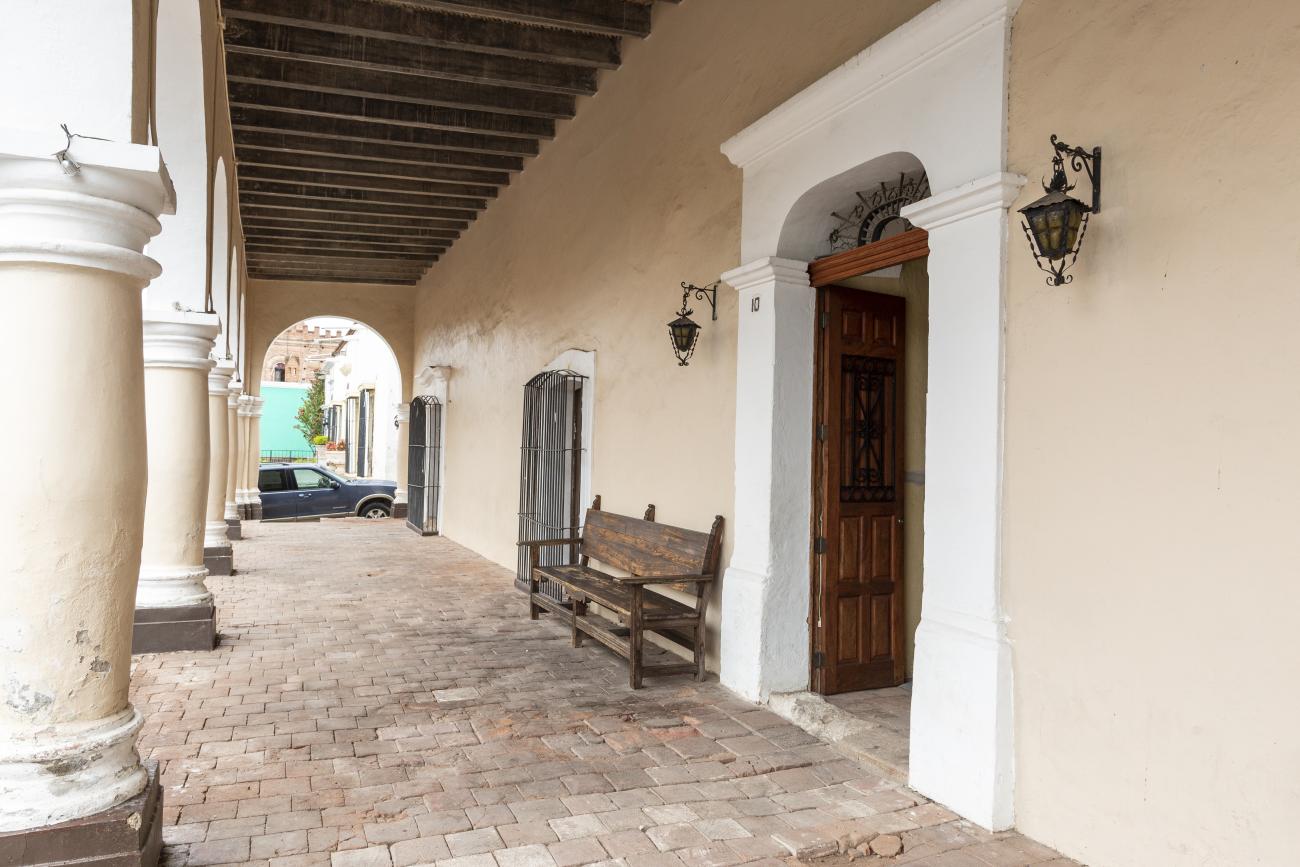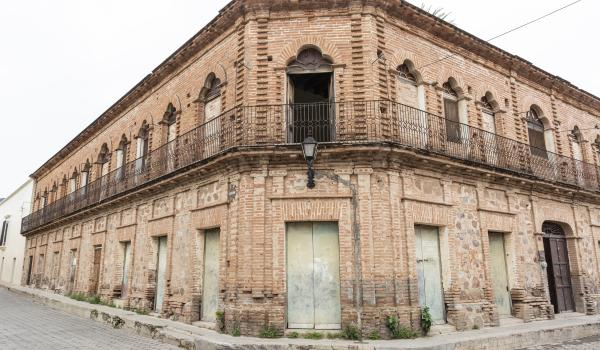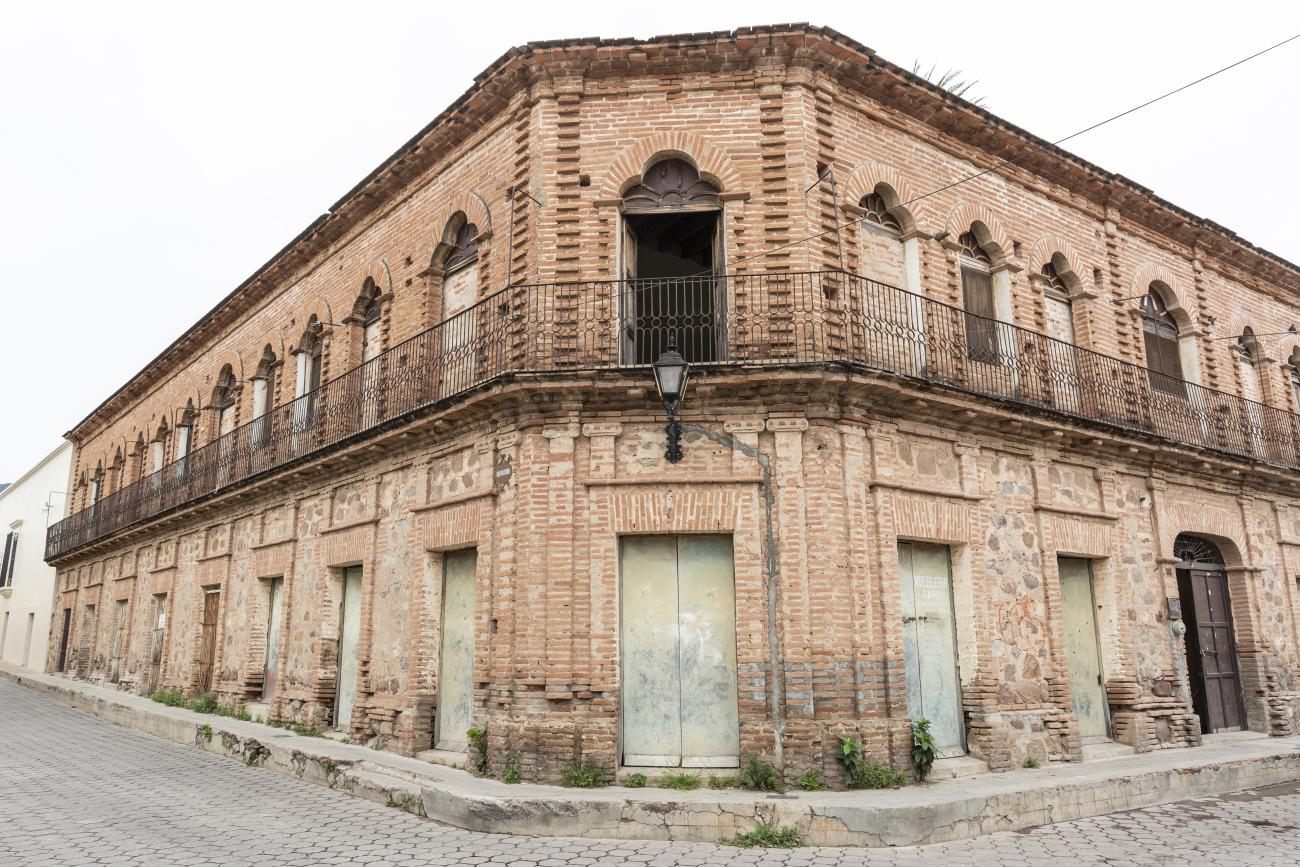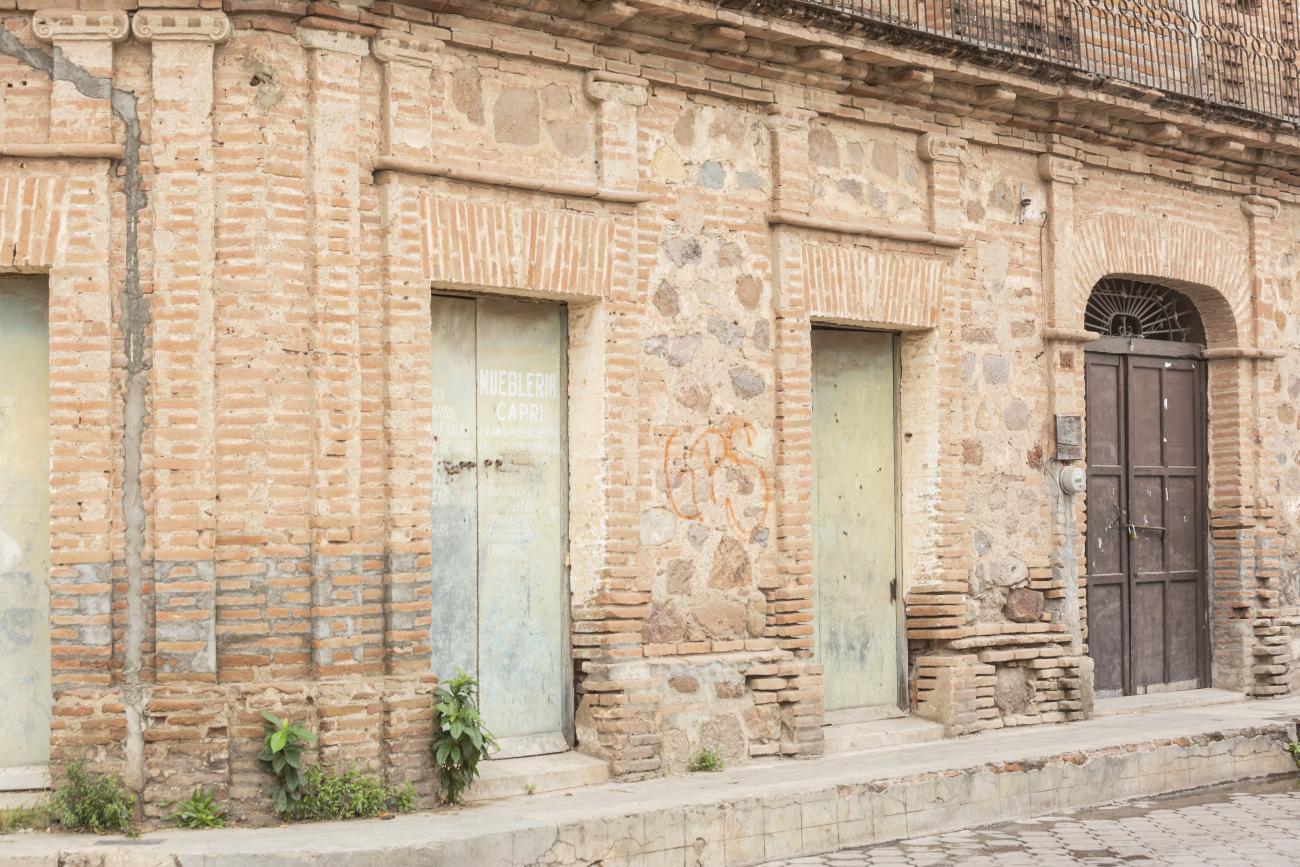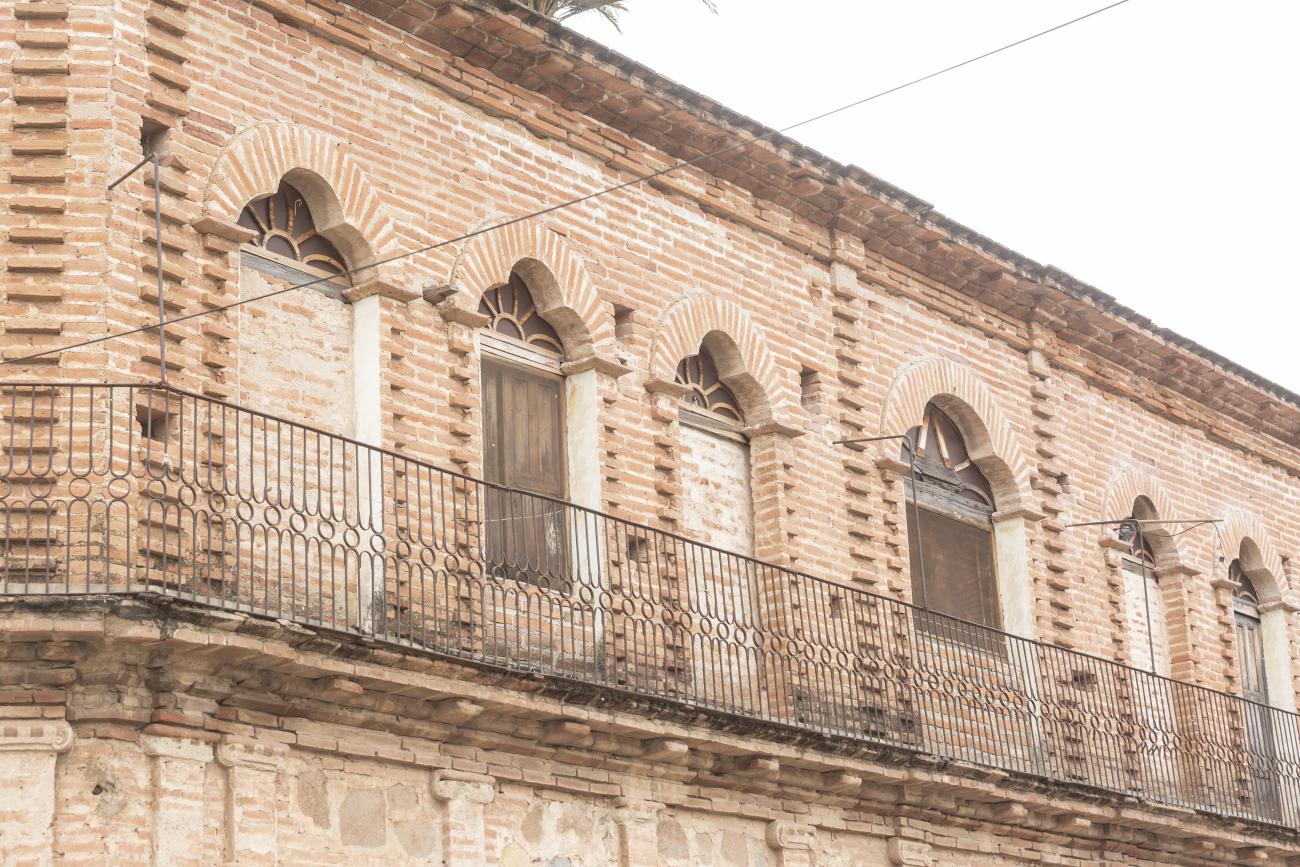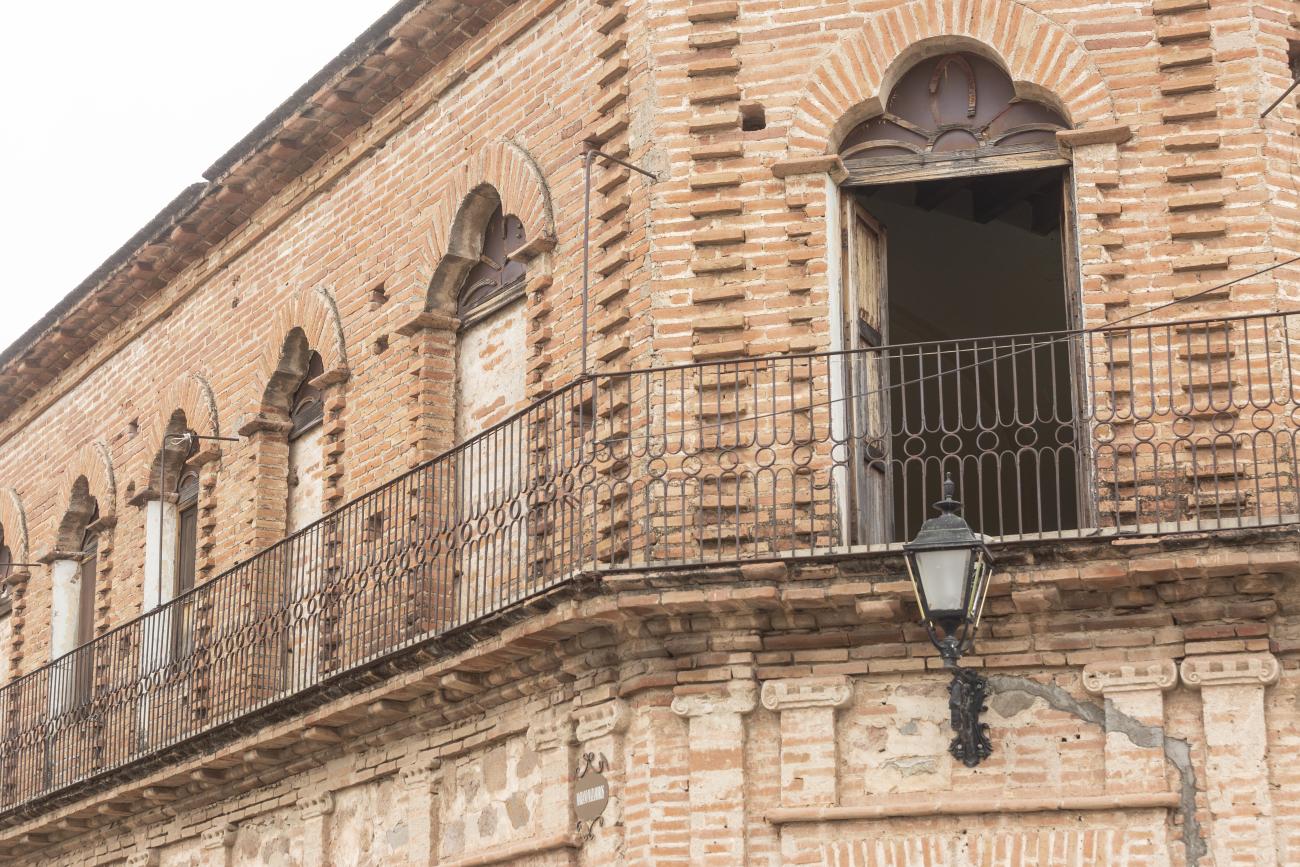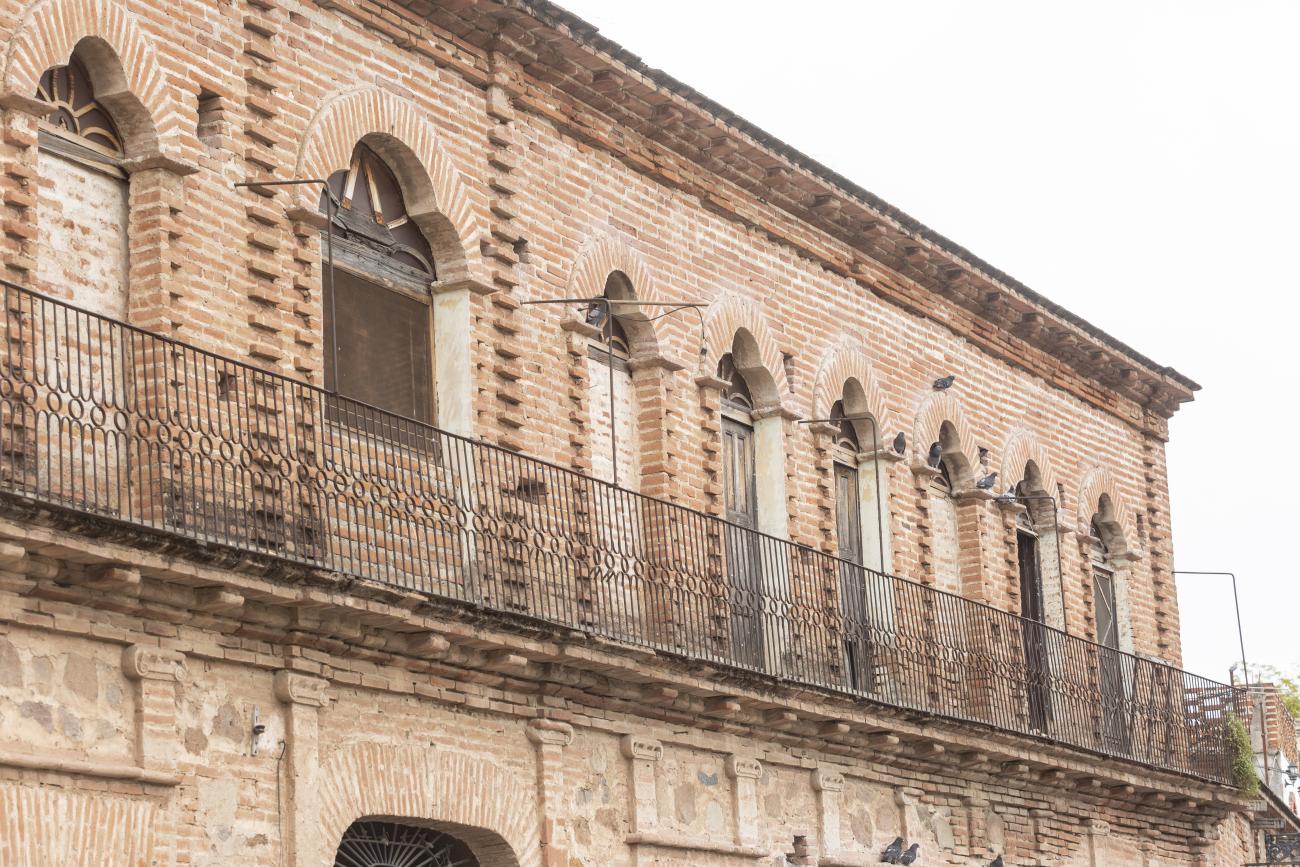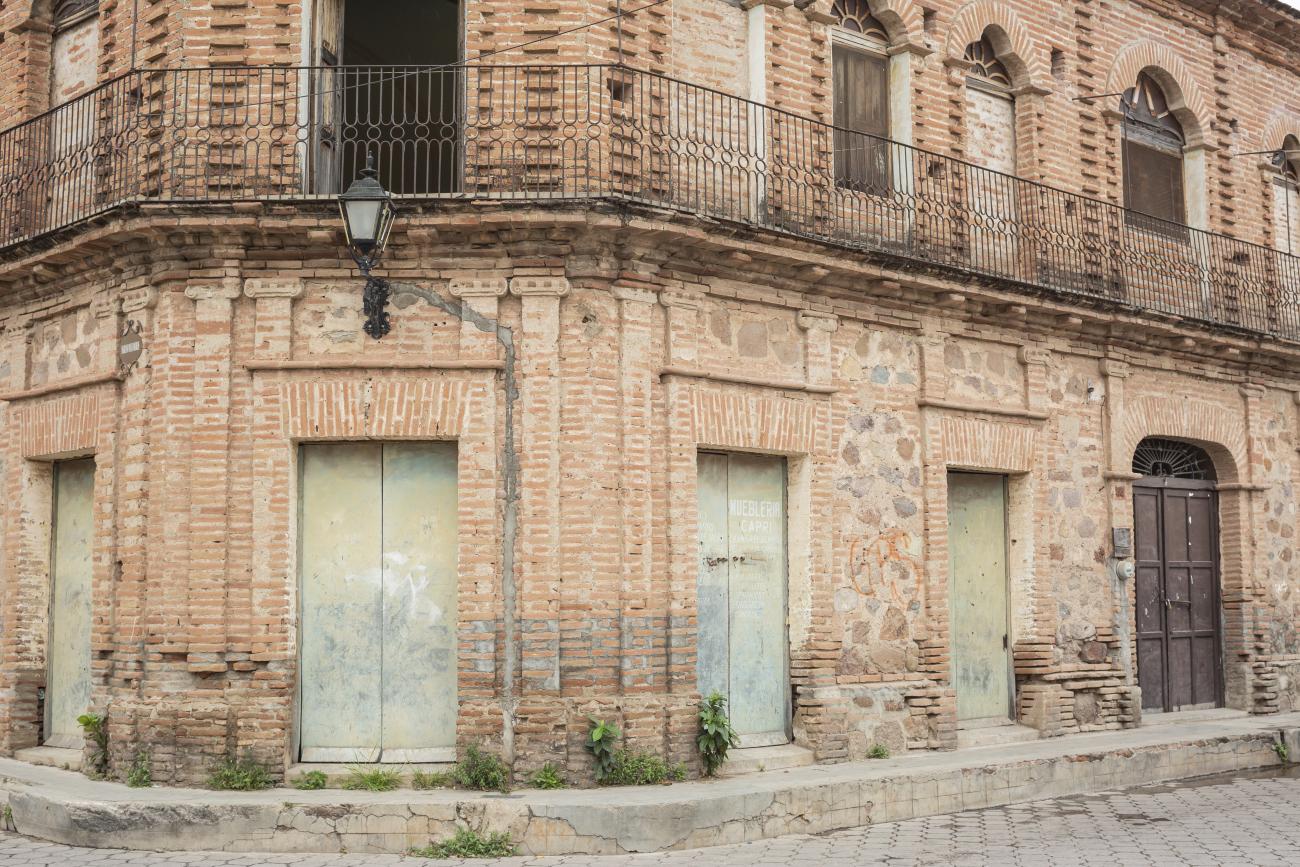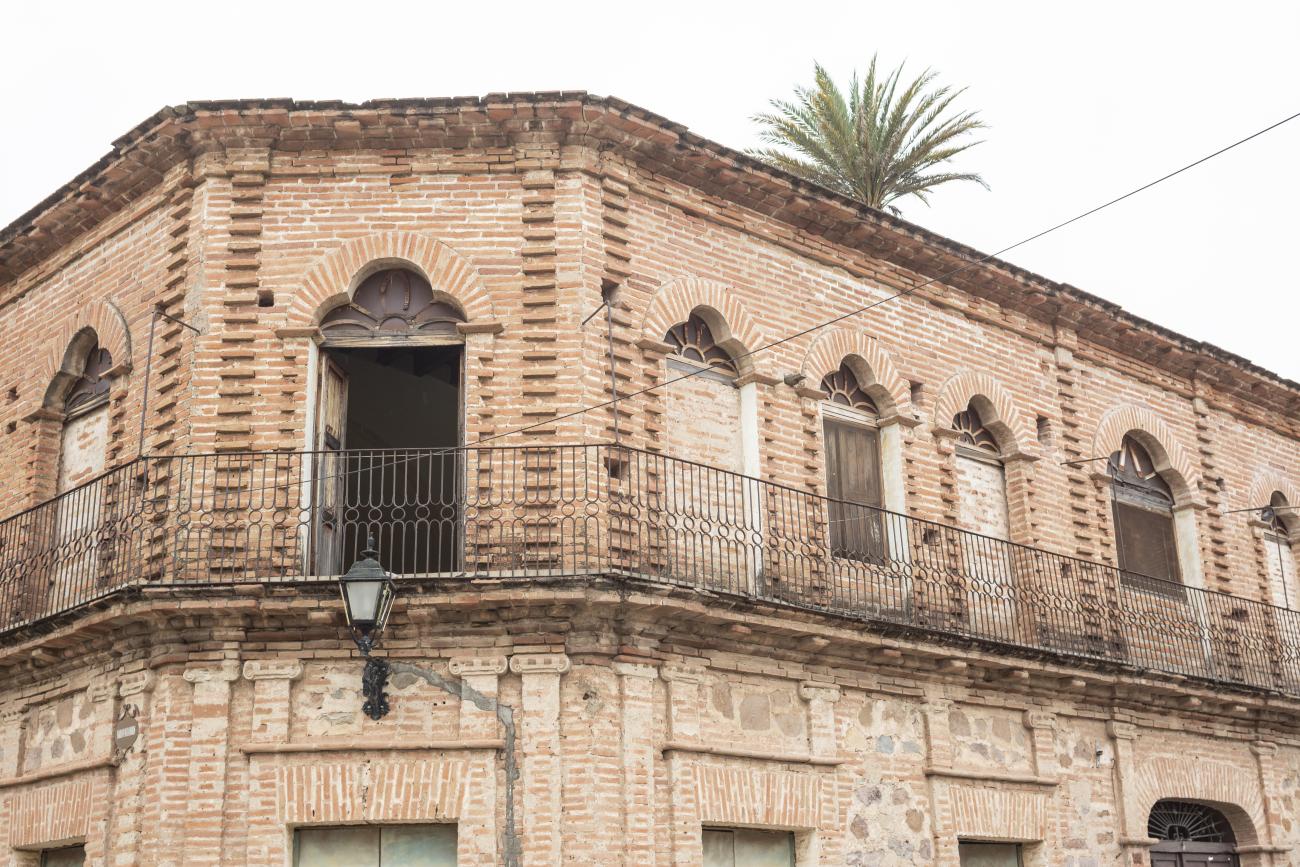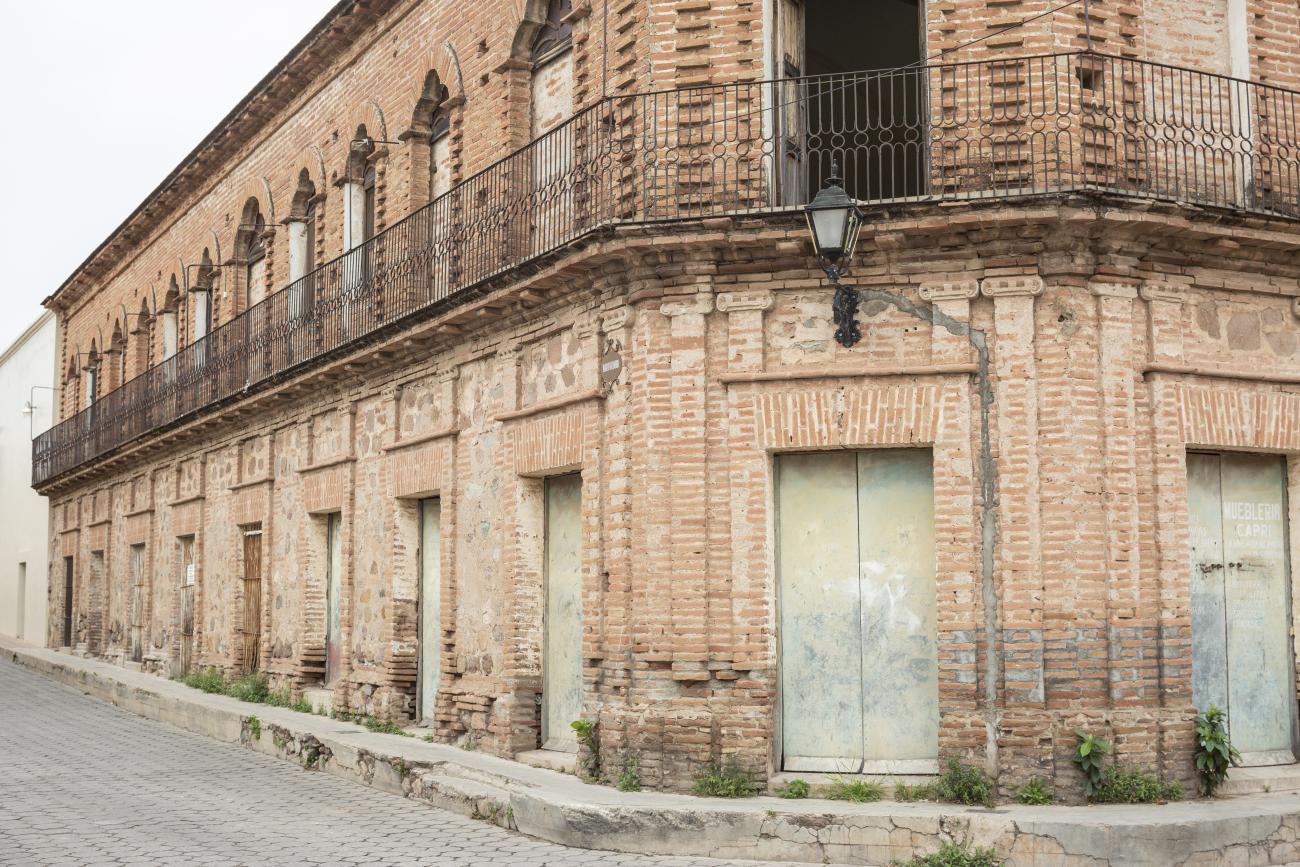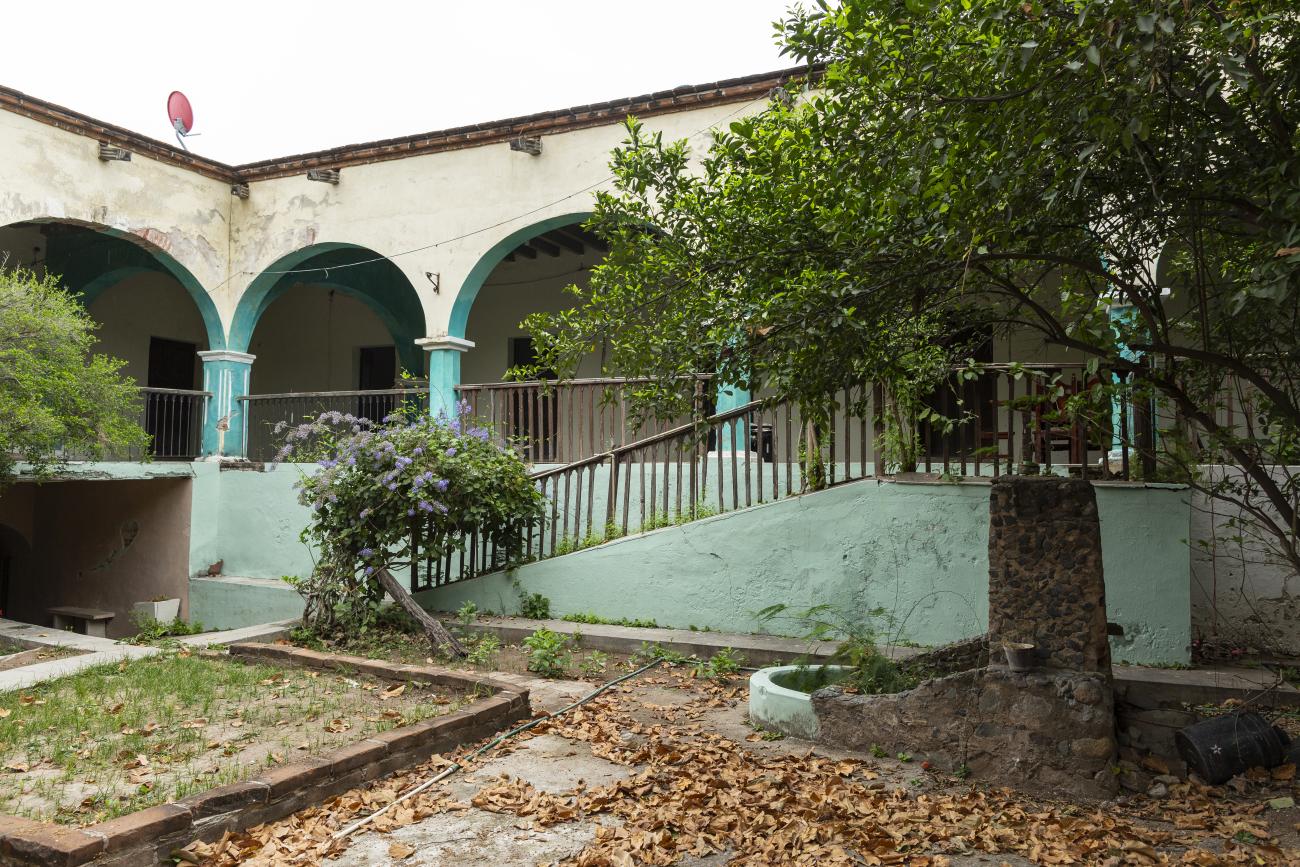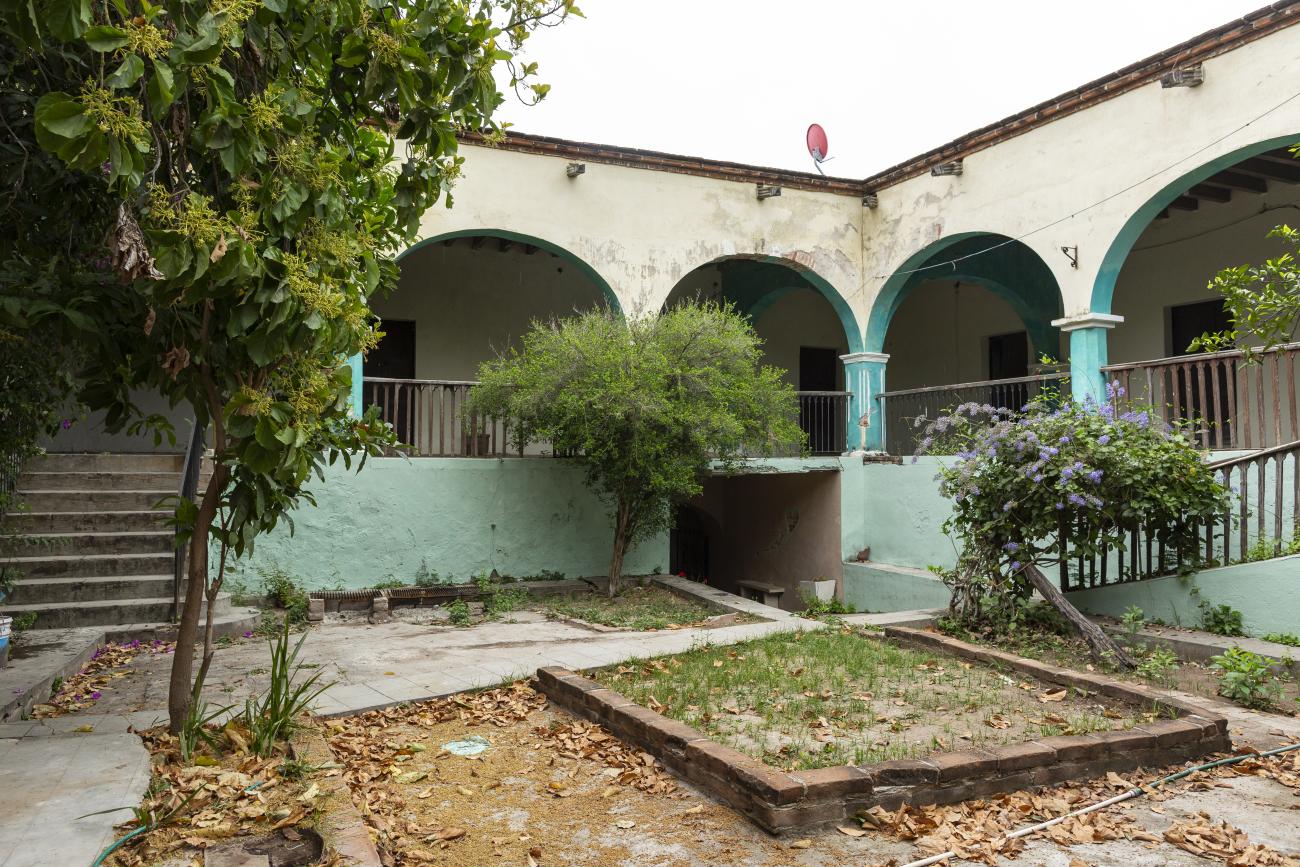Álamos
Historical Monuments Zone
Abstract
Popularly known as the “city of arcades” due to the porticoes of its buildings, this mining town was very prosperous during the viceregal period and in the 19th century. Its natural landscape, architecture and cultural wealth make it a jewel of Sonora.
Alamos was founded at the end of the 17th century following the discovery and mining of silver deposits situated on the Cerro de los Frailes mountain in the Sierra de Alamos. For this reason it received the name of “Real de la Limpia Concepción de los Alamos” or “Real de los Frailes.”
The natural environment has been key to the economic and cultural development of the town. The Sierra de Alamos range provided water and various natural resources such as wood, used in the construction of the older houses. Near the town is the Sierra de Alamos-Río Cuchujaqui Wildlife and Aquatic Flora and Fauna Protection Area, a site with one of the greatest biological and genetic diversity in the state of Sonora, and home to some 100 endangered species.
In pre-Hispanic times, this region was occupied by groups of farmers who left testimony of their lives in the form of rock engravings with geometric, animal and anthropomorphic motifs. When people from Europe first arrived, the inhabitants of these territories were the Mayos and Guarijíos. These groups were evangelized by Jesuits and Franciscans, who founded missions to bring them together in congregations.
The town of Alamos enjoyed great economic prosperity during the viceregal era thanks to silver mining. It was a populous town inhabited by miners, merchants, religious and civil authorities, mine workers and Guarijíos, Yaquis, Mayos and Tarahumara indigenous people. Furthermore, it was the site with the largest Hispanic population in an area considered border territory, meaning that it formed a bastion for the defense of the region against the attacks of the indigenous peoples who had not been subjugated.
The 19th century was a boom time for Alamos, with mining activities boosted greatly by the discovery of new veins of silver and the application of modern technologies to extract the precious metal. In 1821, when Mexican independence was declared, the town had a strong economy and a small number of families who comprised a powerful elite. For this reason, when the state known as Estado Libre de Occidente was created in 1824, Alamos became its capital. This state included the territories of the former Governorate of Sonora and Sinaloa. However, in 1830 the two states separated due to differences between political groups. From that point on, Alamos, which until then had belonged to Sinaloa, became part of the jurisdiction of Sonora.
The beginning of the 20th century presented more difficult times for Alamos: the Mexican Revolution and the Cristero War had a severe impact on the town and its heritage, since the ecclesiastical buildings were used as barracks and religious art was removed from the churches. However, in the 1940s, with the arrival of American and Canadian citizens, a number of houses built in viceregal style were restored and the town saw a resurgence. Alamos managed to survive and is currently one of the most important destinations in Sonora.
The Zone of Historical Monuments covers 0.62 km2 and comprises 59 city blocks. Most of its buildings date from the 18th and 19th centuries. They include the Church of Our Lady of the Immaculate Conception, the Chapel of Zapopan, the House of the Bishopric, the House of the Citadel or Cabildo, the Municipal Palace, the Blue House, the Mandarina, the House of the Ghosts, the House of the Red Door, the House of the Swan, and the Bartolomé M. Salido School, among others.
The Plaza de Armas is the heart of the Zone of Historical Monuments. The buildings that surround it mostly date from the 18th century and were built with regional materials including timber from tree species such as amapa, sabino (Mexican cypress) and vara blanca; they have thick walls of adobe and stonework. A particular characteristic of Alamos is that many of the facades of its buildings are built with porticoes in different styles.
The layout of the town is characterized by irregular streets that adapt to the topography of the land, marked by the incisions of the Agua Escondida and La Aduana streams, and the Loma de Guadalupe hill. The current configuration of the town dates from the 19th century, since at the end of the 18th century the layout was still very irregular and the houses were widely scattered. By the 19th century the streets were already paved with stone, the houses around the main square had been modernized, and the construction of the Church of the Immaculate Conception had been completed.
The town has expanded around the Plaza de Armas, consolidating its traditional neighborhoods, as well as the peripheral areas that grew along the historic highways. Currently Alamos is the venue for cultural events, the most important being the Alfonso Ortiz Tirado Festival which has been held every year in January since 1985. This festival is a showcase of the region’s cultural diversity, with music ranging from opera, pop, rock, ranchero, to jazz, as well as the indigenous peoples who bring to life their traditional music and dances.
This town is also the birthplace of famous people such as María Félix, a renowned actress from the Mexican golden age of cinema, and Alfonso Ortiz Tirado, a doctor and opera singer, who toured abroad and was a professor at the Universidad Nacional Autónoma de México.
For all these reasons, Alamos was decreed a Zone of Historical Monuments by President Ernesto Zedillo Ponce de León on November 24, 2000.
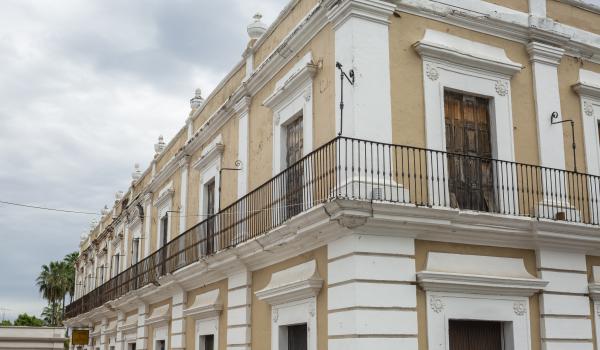
Hotel Álamos
Built in 1890, this property has belonged to the Perron, Urrea, Almada, and Salido families. It currently belongs to American Robert Alcorn. It was designed as a residence and has been used as a hotel and hospital.
Hotel Álamos
Built in 1890, this property has belonged to the Perron, Urrea, Almada, and Salido families. It currently belongs to American Robert Alcorn. It was designed as a residence and has been used as a hotel and hospital.
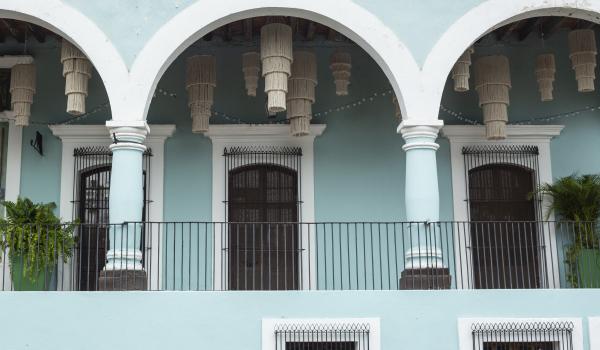
Hotel portales
The Almada family began construction in 1790. In 1951, it was sold to William Robert Alcorn.
Hotel portales
The Almada family began construction in 1790. In 1951, it was sold to William Robert Alcorn.
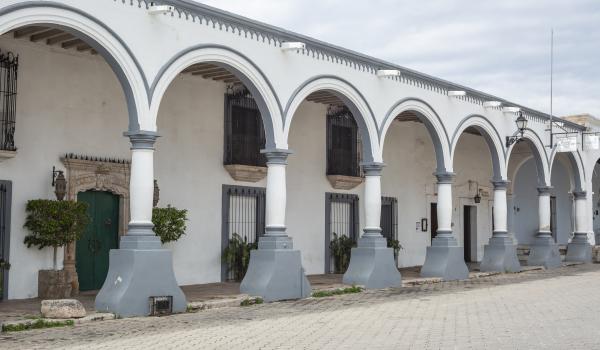
Casa del Obispado
An 18th-century building that was the residence of the first Bishop of Sonora, Fray Antonio de los Reyes.
Casa del Obispado
An 18th-century building that was the residence of the first Bishop of Sonora, Fray Antonio de los Reyes.
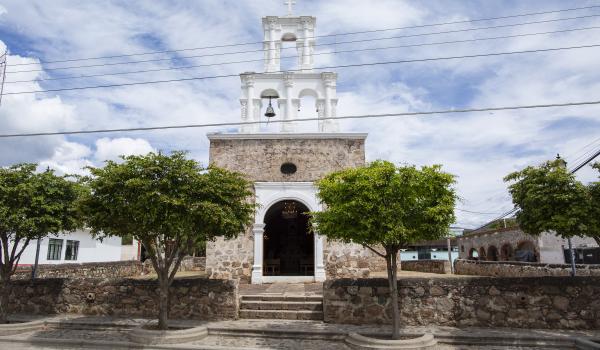
Capilla de Zapopan
19th-century chapel, begun by Juana Mallén, directed by Ignacio Almada y Alvarado.
Capilla de Zapopan
19th-century chapel, begun by Juana Mallén, directed by Ignacio Almada y Alvarado.
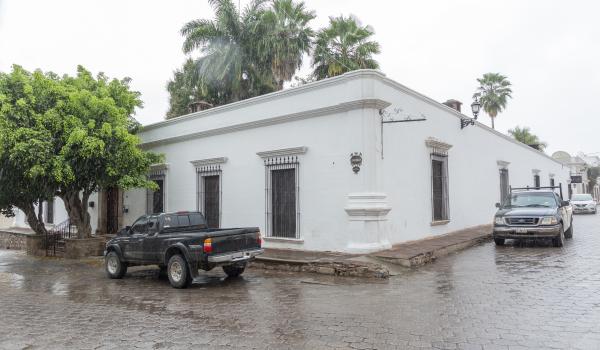
Hotel "Mansión de la Condesa"
A 19th-century building that belonged to the Gaxiola family. Francisco I. Madero stayed here during his tour as a candidate for the Presidency of the Republic. In 1985, it was purchased by Gerda Guevara and opened as a hotel on June 27, 1986.
Hotel "Mansión de la Condesa"
A 19th-century building that belonged to the Gaxiola family. Francisco I. Madero stayed here during his tour as a candidate for the Presidency of the Republic. In 1985, it was purchased by Gerda Guevara and opened as a hotel on June 27, 1986.
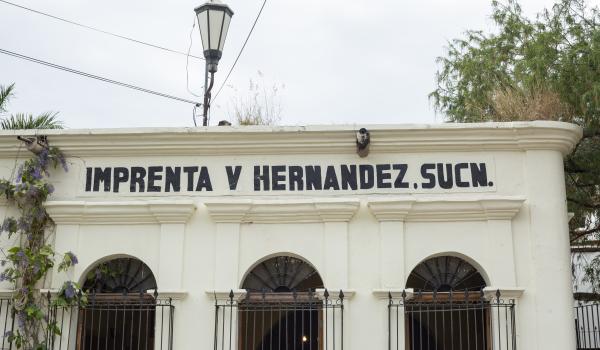
Imprenta V. Hernández
19th-century building. The printing press was founded in 1897 but was located in another building.
Imprenta V. Hernández
19th-century building. The printing press was founded in 1897 but was located in another building.
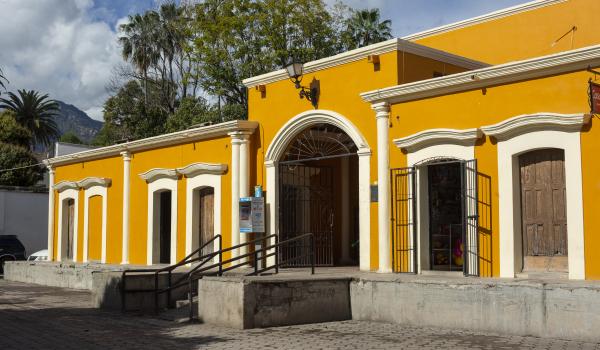
Mercado Municipal
Building constructed by Mendívil with the authorization of the City Council. It was inaugurated on September 15, 1892.
Mercado Municipal
Building constructed by Mendívil with the authorization of the City Council. It was inaugurated on September 15, 1892.
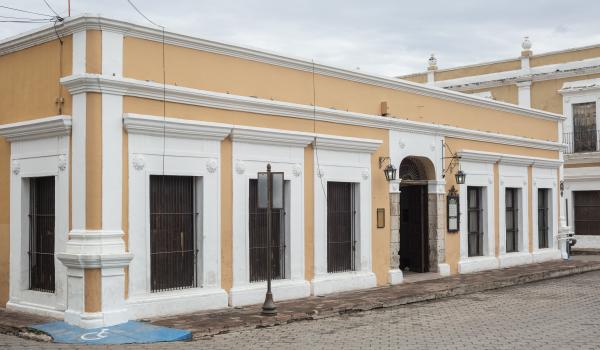
Museo Costumbrista de Alamos
Property built in 1876 that belonged to the Almada family.
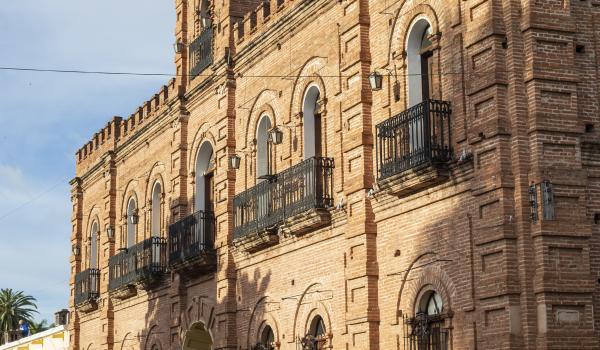
Palacio Municipal
Building constructed in 1877 during the Almada administration, inaugurated in 1899 by Governor Ramón Corral.
Palacio Municipal
Building constructed in 1877 during the Almada administration, inaugurated in 1899 by Governor Ramón Corral.
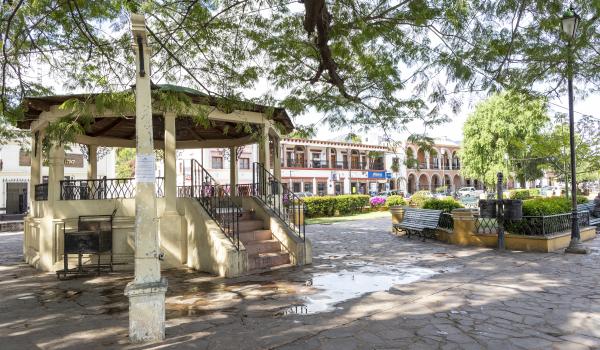
La Alameda
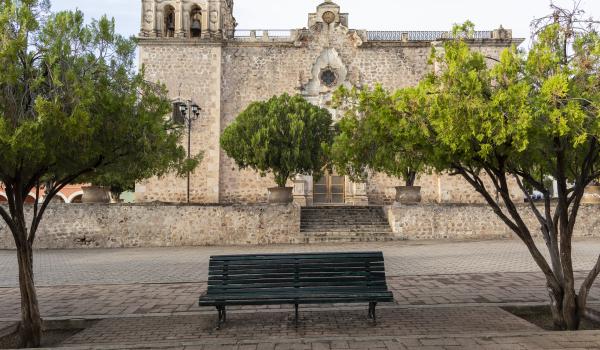
Plaza de Armas
A 17th-century square, the bandstand was inaugurated on September 15, 1904.

Nuestra Señora de la Purísima Concepción
Jesuit temple whose construction began in 1687 by Father Francisco Sáenz de Carrizosa.
Nuestra Señora de la Purísima Concepción
Jesuit temple whose construction began in 1687 by Father Francisco Sáenz de Carrizosa.


